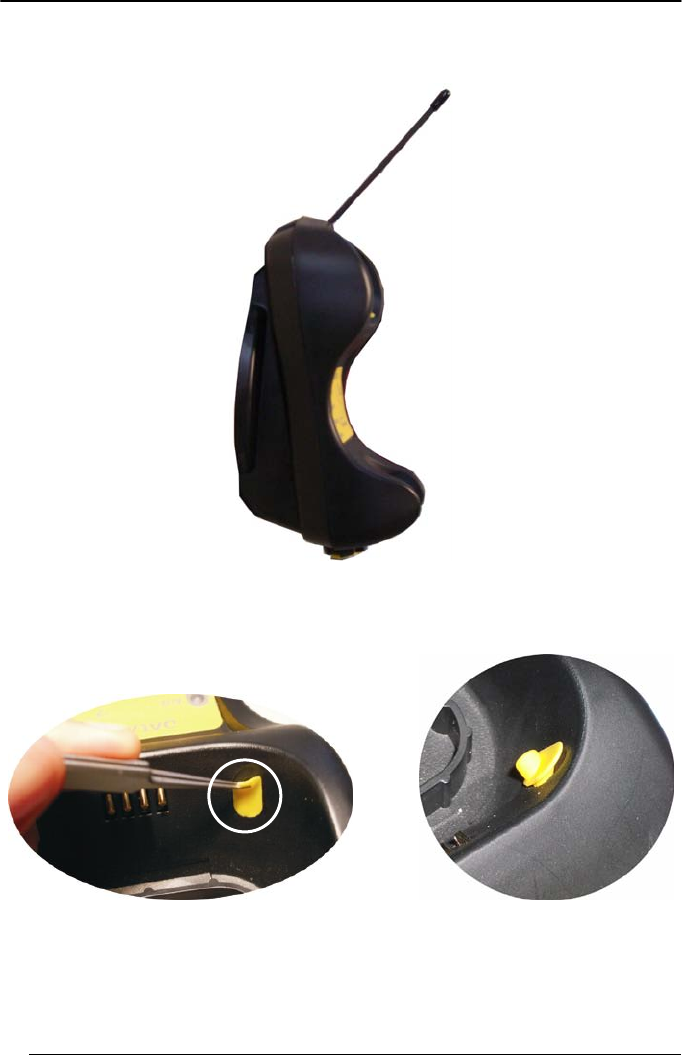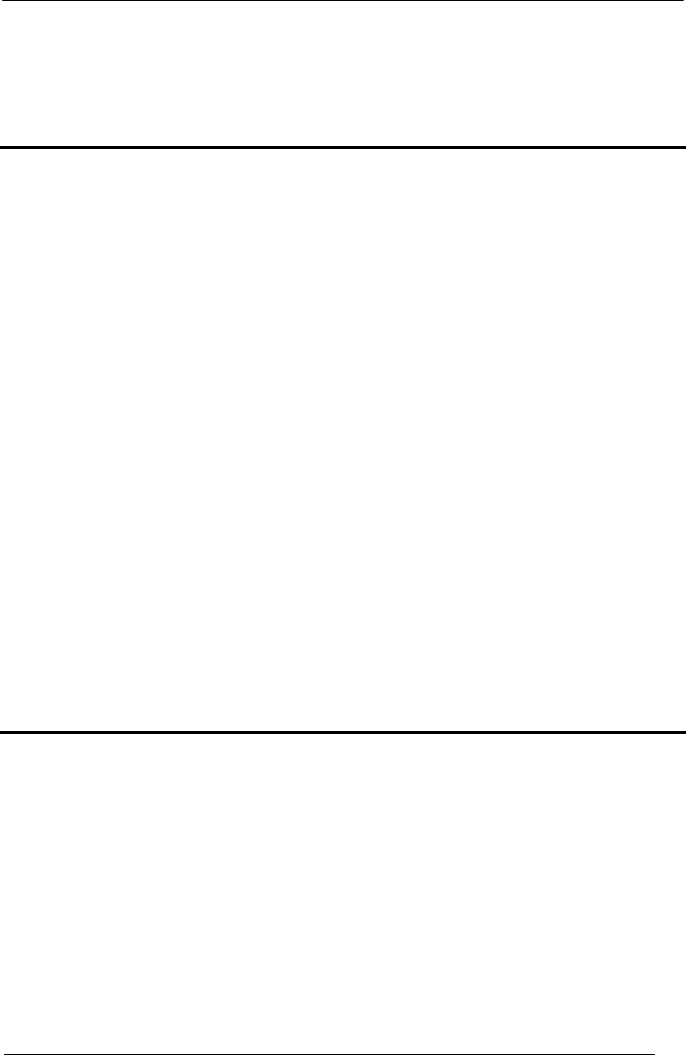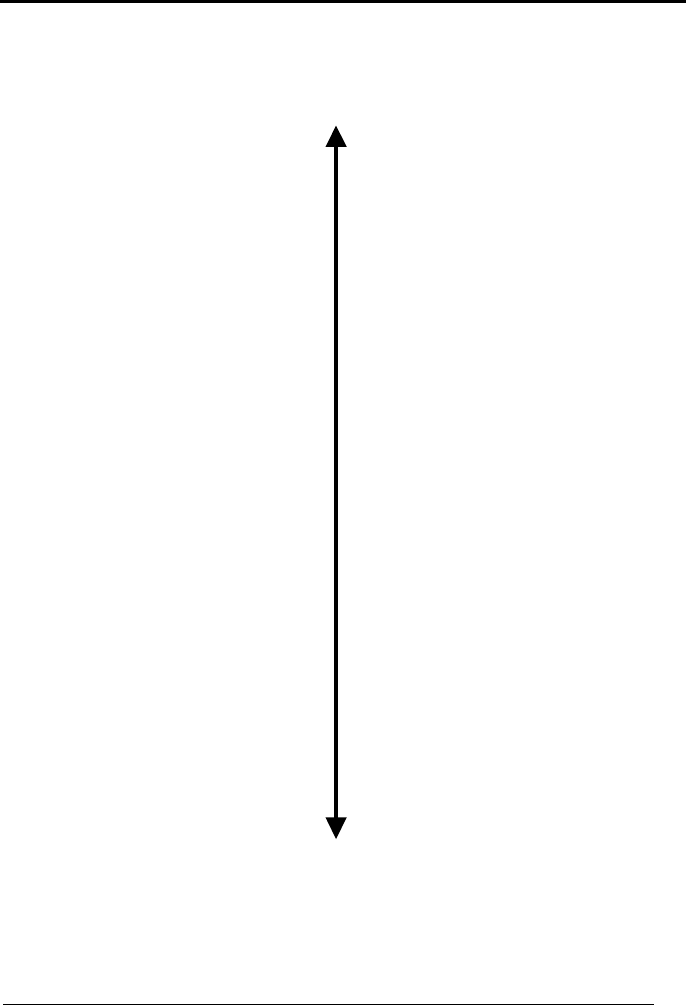Datalogic Scanning Powerscan D8330 Users Manual PowerScan™ D83XX M8330
POWERSCAN SR PS8300_REF_GUIDE
D8330 to the manual 92403771-b24a-4688-bcea-f347de74eaa5
powerscan_8300_um
2015-02-02
: Datalogic-Scanning Datalogic-Scanning-Powerscan-D8330-Users-Manual-425469 datalogic-scanning-powerscan-d8330-users-manual-425469 datalogic-scanning pdf
Open the PDF directly: View PDF ![]() .
.
Page Count: 212 [warning: Documents this large are best viewed by clicking the View PDF Link!]
- GENERAL VIEW
- 1 INTRODUCTION
- 2 INSTALLATION
- 3 POWERSCAN® M8300 SYSTEM AND NETWORK LAYOUTS
- 4 CONFIGURATION
- 4.1 CONFIGURATION METHODS
- 4.2 SETUP PROCEDURES
- 4.3 POWERSCAN® D8330 SETUP
- 4.4 POWERSCAN® M8300/BC-80X0 POINT-TO-POINT SETUP
- 4.5 POWERSCAN® M8300/BC-80X0 STAND-ALONE SETUP
- 4.6 POWERSCAN® M8300/STAR-SYSTEM™ SETUP
- 4.7 BC-8060 STAR-SYSTEM™ NETWORK SETUP
- 4.8 INTERFACE SELECTION
- 4.9 USB READER CONFIGURATION
- 4.10 CHANGING DEFAULT SETTINGS
- 5 REFERENCES
- 5.1 RS-232 PARAMETERS
- 5.2 PEN PARAMETERS
- 5.3 NETWORK PARAMETERS
- 5.4 DATA FORMAT
- 5.5 POWER SAVE
- 5.6 READING PARAMETERS
- 5.7 DECODING PARAMETERS
- 5.8 ADVANCED FORMATTING
- 5.9 RADIO PARAMETERS (M8300 SERIES ONLY)
- 5.10 DISPLAY PARAMETERS (SOME M8300 MODELS ONLY)
- 5.11 CONFIGURATION EDITING COMMANDS
- 5.12 CUSTOM DEFAULT CONFIGURATION
- 5.13 CODE TYPE RECOGNITION
- 5.14 CONFIGURATION COPYING COMMANDS
- 5.15 DEFAULT PARAMETERS FOR POS TERMINALS
- 5.16 FIRMWARE UPGRADE
- 6 MESSAGE FORMATTING
- 7 TECHNICAL FEATURES
- Copertina_BC.pdf
- Copertina_FC.pdf
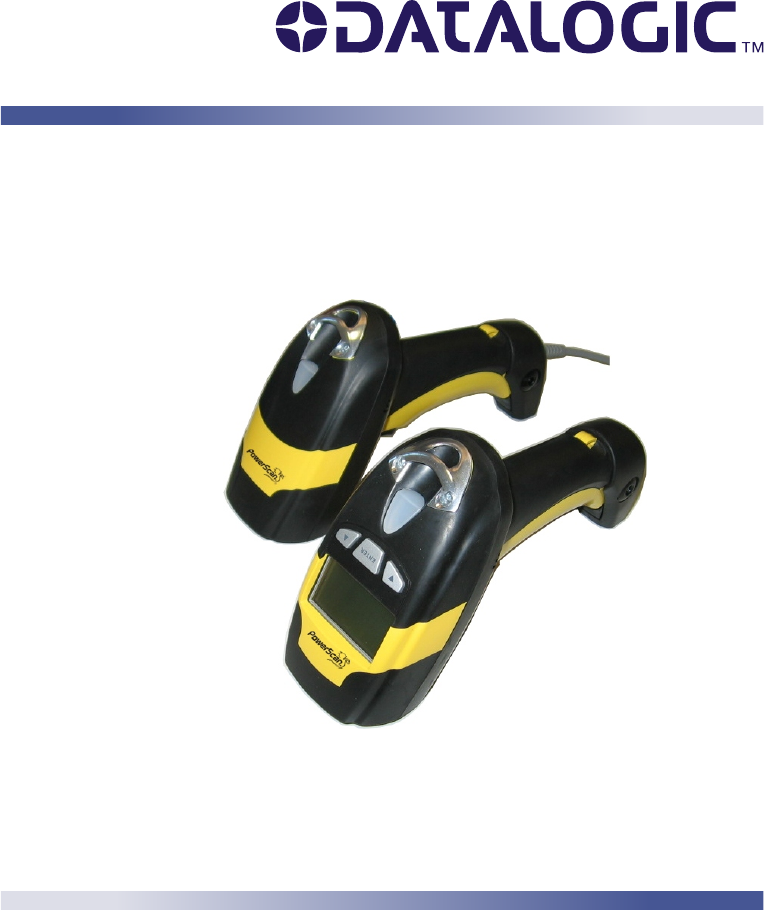
®
PowerScan D8330/M8300
Reference Manual
Australia
Datalogic Scanning Pty Ltd
North Ryde, Australia
Telephone: [61] (2) 9870 3200
Fax: [61] (2) 9878 8688
France and Benelux
Datalogic Scanning Sarl
LES ULIS Cedex, France
Telephone: [33].01.64.86.71.00
Fax: [33].01.64 46.72.44
Germany
Datalogic Scanning GmbH
Darmstadt, Germany
Telephone: 49 (0) 61 51/93 58-0
Fax: 49 (0) 61 51/93 58 58
Italy
Datalogic Scanning SpA
Vimercate (MI), Italy
Telephone: [39] (0) 39/62903.1
Fax: [39] (0) 39/6859496
Japan
Datalogic Scanning KK
Shinagawa, Tokyo, Japan
Telephone: 81 (0)3 3491 6761
Fax: 81 (0)3 3491 6656
Latin America
Datalogic Scanning, Inc
Miami, Florida, USA
Telephone: (305) 591-3222
Fax: (305) 591-3007
Spain and Portugal
Datalogic Scanning Sarl
Sucursal en España
Madrid, Spain
Telephone: 34 91 746 28 60
Fax: 34 91 742 35 33
United Kingdom
Datalogic Scanning LTD
Watford, England
Telephone: 44 (0) 1923 809500
Fax: 44 (0) 1923 809 505
www.scanning.datalogic.com
Datalogic Scanning, Inc.
959 Terry Street
Eugene, OR 97402
USA
Telephone: (541) 683-5700
Fax: (541) 345-7140
©2008 Datalogic Scanning, Inc. 90ACC1949 Rev. A 1/08
Datalogic Scanning, Inc.
959 Terry Street
Eugene, Oregon 97402
USA
Telephone: (541) 683-5700
Fax: (541) 345-7140
An Unpublished Work - All rights reserved. No part of the contents of this
documentation or the procedures described therein may be reproduced or
transmitted in any form or by any means without prior written permission of Datalogic
Scanning, Inc. or its subsidiaries or affiliates ("Datalogic" or “Datalogic Scanning”).
Owners of Datalogic products are hereby granted a non-exclusive, revocable license
to reproduce and transmit this documentation for the purchaser's own internal
business purposes. Purchaser shall not remove or alter any proprietary notices,
including copyright notices, contained in this documentation and shall ensure that all
notices appear on any reproductions of the documentation.
Should future revisions of this manual be published, you can acquire printed versions
by contacting your Datalogic representative. Electronic versions may either be
downloadable from the Datalogic website (www.scanning.datalogic.com) or provided
on appropriate media. If you visit our website and would like to make comments or
suggestions about this or other Datalogic publications, please let us know via the
"Contact Datalogic" page.
Disclaimer
Datalogic has taken reasonable measures to provide information in this manual that
is complete and accurate, however, Datalogic reserves the right to change any
specification at any time without prior notice. Datalogic is a registered trademark of
Datalogic S.p.A. in many countries and the Datalogic logo is a trademark of Datalogic
S.p.A. all licensed to Datalogic Scanning, Inc. All other trademarks and trade names
referred to herein are property of their respective owners.

iii
CONTENTS
1 INTRODUCTION .......................................................................................... 1
2 INSTALLATION............................................................................................ 2
2.1 PowerScan® D8330 Interface Cable Connections ........................................ 2
2.2 BC-80X0 Interface Cable Connections ......................................................... 4
2.3 RS-232 Connection.......................................................................................5
2.4 USB ..............................................................................................................5
2.5 IBM USB POS............................................................................................... 6
2.6 WEDGE Connection .....................................................................................7
2.7 PEN Emulation Connection...........................................................................7
2.8 Network Connections....................................................................................8
2.8.1 BC-8000 Network Connectors ...................................................................... 8
2.8.2 Network Cabling............................................................................................ 9
2.8.3 Network Termination................................................................................... 10
2.9 PowerScan® M8300 Battery Maintenance .................................................. 11
2.9.1 Battery Charging ......................................................................................... 11
2.9.2 Replacing PowerScan® M8300 Batteries.................................................... 11
2.10 Mounting The BC-80X0 / C-8000 Cradle .................................................... 12
2.10.1 Desktop Mounting ....................................................................................... 13
2.10.2 Wall Mounting ............................................................................................. 16
3 POWERSCAN® M8300 SYSTEM AND NETWORK LAYOUTS.................. 18
3.1 Stand-alone Layouts ...................................................................................18
3.1.1 Point-to-Point Reader Layout...................................................................... 18
3.1.2 Stand-Alone Layout with Multiple Readers ................................................. 18
3.1.3 Multiple Stand-Alone Layouts ..................................................................... 19
3.1.4 C-BOX Layout............................................................................................. 20
3.2 Multidrop STAR-System™ Network Layouts .............................................. 21
3.2.1 Host Master Layout..................................................................................... 21
3.2.2 BC-8000 Master Layout .............................................................................. 22
3.2.3 Master BC-8000 Network Troubleshooting ................................................. 23
4 CONFIGURATION...................................................................................... 24
4.1 Configuration Methods................................................................................24
4.1.1 Reading Configuration Barcodes ................................................................ 24
4.1.2 Using Datalogic Aladdin™ .......................................................................... 24
4.1.3 Copy Command .......................................................................................... 24
4.1.4 Sending Configuration Strings from Host.................................................... 25
4.2 Setup Procedures ....................................................................................... 25
4.3 PowerScan® D8330 Setup.......................................................................... 26
4.4 PowerScan® M8300/BC-80X0 Point-to-Point Setup ................................... 26
4.5 PowerScan® M8300/BC-80X0 Stand-Alone Setup ..................................... 27
4.5.1 Using Multiple M-Series Readers with Same Cradle .................................. 29
4.5.2 PowerScan® M8300/STAR-Modem™ in Stand-Alone Mode ...................... 30

iv
4.6 PowerScan® M8300/STAR-System™ Setup ..............................................31
4.7 BC-8000 STAR-System™ Network Setup .................................................. 33
4.8 Interface Selection ......................................................................................35
4.9 USB Reader Configuration.......................................................................... 38
4.10 Changing Default Settings .......................................................................... 40
5 REFERENCES ......................................................................................... 139
5.1 RS-232 Parameters .................................................................................. 139
5.1.1 Handshaking ............................................................................................. 139
5.1.2 ACK/NACK Protocol ................................................................................. 140
5.1.3 FIFO.......................................................................................................... 141
5.1.4 RX Timeout ............................................................................................... 142
5.2 Pen Parameters ........................................................................................ 142
5.2.1 Minimum Output Pulse.............................................................................. 142
5.2.2 Conversion to Code 39 and Code 128...................................................... 142
5.2.3 Overflow.................................................................................................... 143
5.2.4 Output and Idle Levels .............................................................................. 143
5.2.5 Inter-Block Delay....................................................................................... 144
5.3 Network Parameters ................................................................................. 144
5.3.1 Slave Address Range First/Last................................................................ 144
5.3.2 Network Warning Message ....................................................................... 144
5.3.3 Reception Warning Message.................................................................... 145
5.3.4 Master Header/Terminator Selection ........................................................ 145
5.4 Data Format .............................................................................................. 145
5.4.1 Header/Terminator Selection .................................................................... 145
5.4.2 Define Special Key Sequence................................................................... 147
5.4.3 Address Stamping..................................................................................... 154
5.4.4 Address Delimiter...................................................................................... 154
5.4.5 Time Stamping Format ............................................................................. 155
5.4.6 Time Stamping Delimiter........................................................................... 155
5.5 Power Save...............................................................................................155
5.5.1 Sleep State ............................................................................................... 155
5.5.2 Enter Sleep Timeout ................................................................................. 156
5.6 Reading Parameters ................................................................................. 156
5.6.1 Trigger Signal............................................................................................ 156
5.6.2 Trigger Click.............................................................................................. 156
5.6.3 Trigger-Off Timeout................................................................................... 156
5.6.4 Reads per Cycle ....................................................................................... 156
5.6.5 Safety Time............................................................................................... 157
5.7 Decoding Parameters ............................................................................... 157
5.7.1 Ink-Spread ................................................................................................ 157
5.7.2 Overflow Control ....................................................................................... 157
5.7.3 Interdigit Control........................................................................................ 158
5.8 Advanced Formatting................................................................................ 158
5.8.1 Match Conditions ...................................................................................... 158
5.9 Radio Parameters (M8300 Series Only) ................................................... 158

v
5.9.1 Radio Protocol Timeout ............................................................................ 158
5.9.2 Radio RX Timeout..................................................................................... 159
5.9.3 Power-Off Timeout.................................................................................... 159
5.9.4 Transmission Mode................................................................................... 160
5.9.5 Beeper Control for Radio Response ......................................................... 160
5.9.6 Single Store .............................................................................................. 161
5.9.7 Batch Mode............................................................................................... 161
5.9.8 Find Me (PowerScan® M8300 only) .......................................................... 162
5.10 Display Parameters (Some M8300 Models only)...................................... 163
5.10.1 Display Mode ............................................................................................ 163
5.11 Configuration Editing Commands ............................................................. 164
5.12 Custom Default Configuration ................................................................... 165
5.13 Code Type Recognition ............................................................................ 165
5.14 Configuration Copying Commands ........................................................... 166
5.14.1 Copy PowerScan™ D8330 Series............................................................. 166
5.14.2 Copy PowerScan™ M8300 Series ............................................................ 167
5.14.3 Copy BC-80X0.......................................................................................... 168
5.15 Default Parameters for POS Terminals..................................................... 169
5.16 Firmware Upgrade .................................................................................... 170
6 MESSAGE FORMATTING ....................................................................... 171
6.1 Messages from Host to Reader ................................................................ 171
6.1.1 Cursor Control........................................................................................... 172
6.1.2 Font Selection ........................................................................................... 173
6.1.3 Clearing Display........................................................................................ 173
6.1.4 LED and Beeper Control........................................................................... 173
6.1.5 Setting RTC .............................................................................................. 174
6.2 Messages from Reader Command Keys ..................................................174
7 TECHNICAL FEATURES......................................................................... 176
7.1 PowerScan® D8330 .................................................................................. 176
7.2 PowerScan® M8300..................................................................................177
7.3 BC-80X0 / C-8000..................................................................................... 178
7.4 System and Radio Features...................................................................... 179
7.5 Status Indicators .......................................................................................179
7.6 Reading Diagrams .................................................................................... 182
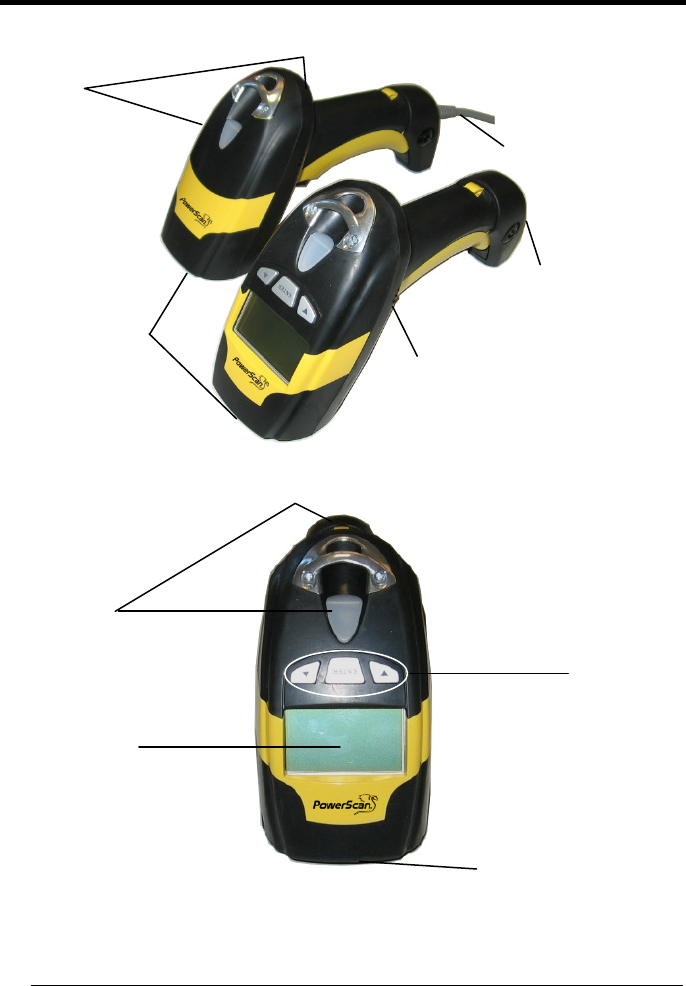
vi
GENERAL VIEW
POWERSCAN® D8330/M8300 READERS
Figure A – PowerScan® D8330/M8300 Series Readers
Figure B – PowerScan® M8300 Series Readers with Display
LEDs
Keypad
Display
Laser Output Window
Laser Output
Window
POWERSCAN
®
M8300
Battery Cover
POWERSCAN
®
D8330
Cable Connector
LEDs
Trigger
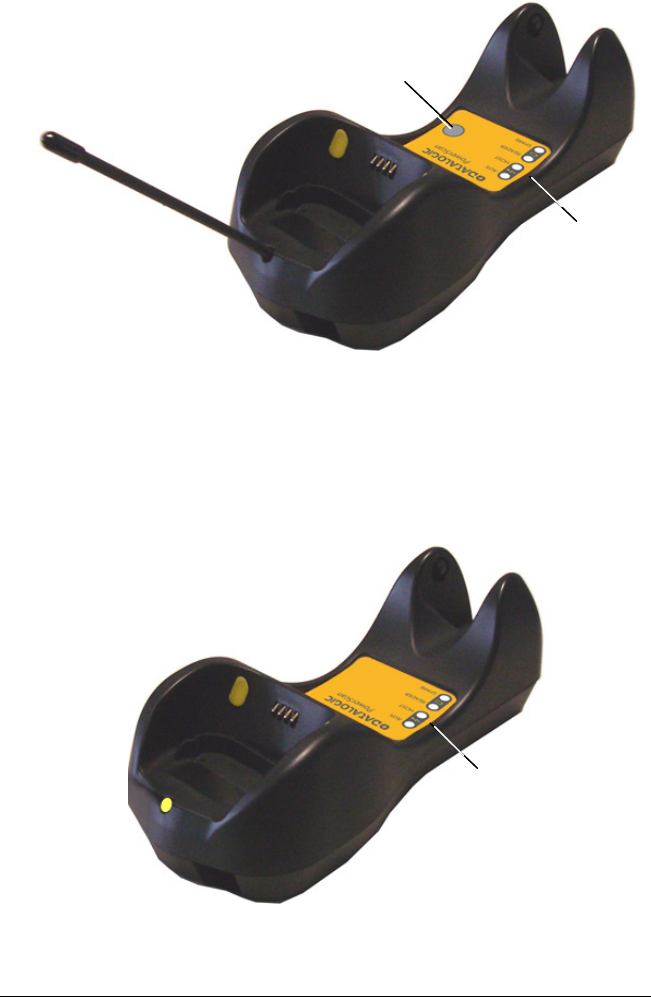
vii
BC-80X0 / C-8000 CRADLES
Figure C – BC-8000
The label on the cradle contains LED indicators and a scan finder button. When the
button is pressed, the cradle transmits a “broadcast” message. All properly
configured scanners (Radio RX Timeout set to keep the radio “awake”) linked to that
base (through a bind or a join sequence) and within radio range coverage will emit a
beep sequence once every 2 seconds for 30 seconds. A scanner is considered to be
linked when the last transmission ends properly.
The scan finder works only in stand-alone layout (point to point or multiple readers).
Figure D – C-8000
LEDs
LEDs
Scan Finder
Button
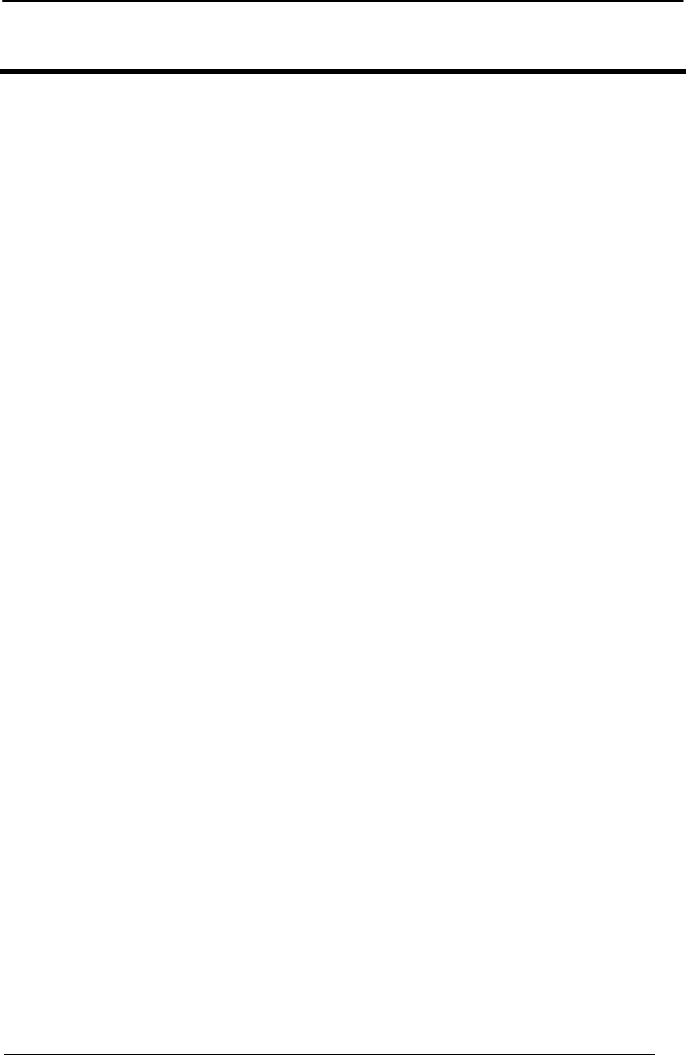
INTRODUCTION
1
1 INTRODUCTION
Datalogic renews its range of industrial laser scanners introducing the PowerScan®
family: PowerScan® D8330 and PowerScan® M8300. Robustness and ergonomics
remain unsurpassed: clearly audible beeper and bright "good read" LEDs for areas
where noise levels are normally high; the aim mode, which helps point to the right
code, has now been extended to the whole PowerScan® family. Optical parts are
completely suspended on shock absorbers and a careful choice of the body
materials, such as the co-moulded rubber, protect the PowerScan® from damage
due to "falls".
New enhanced architecture, based on an M16 high-speed microprocessor, enables
exceptional performance for promptness and reading speed of standard codes as
well as the ability to read poorly printed and damaged codes. Puzzle Solver
Technology™, a patent from Datalogic, adds further strength to the PowerScan®
powerful engine.
In all applications where mobility is a value, the new PowerScan® M8300 represents
the key to increase productivity and flexibility in the working area.
PowerScan® M8300 communicates through a low power, license free radio in the
433 MHz band (910 MHz for USA version) and allows bi-directional communication
between the base station and the host. PowerScan® M8300 also includes a display
and a 3 push-button keypad. Thanks to these features, the operator can receive
information from the host, interact with the central system and visualize the code
read. The cordless system offers scalable solutions to solve simple applications and
complex projects:
• Point to point: each reader is associated with its own base station;
• Multipoint: up to 32 readers transmit data to one base station;
• Network: to cover a wide area, connecting up to 16 bases and 512 readers
simultaneously working in automatic roaming.
PowerScan® M8300 is 100% compatible with STAR-System™, the new Datalogic
RF narrow band solution for mobile applications that provides the widest family of
narrow band devices on the market.
Your PowerScan® reader is supplied with its own Quick Reference Guide, which
provides connection, diagrams, reading diagrams, basic application parameter
settings, default values, and specific technical features. You can use either the Quick
Reference Guide or this Manual for initial configuration in order to set the default
values and select the interface for your application. This manual provides all the
necessary information for complete mechanical installation and system software
configuration.
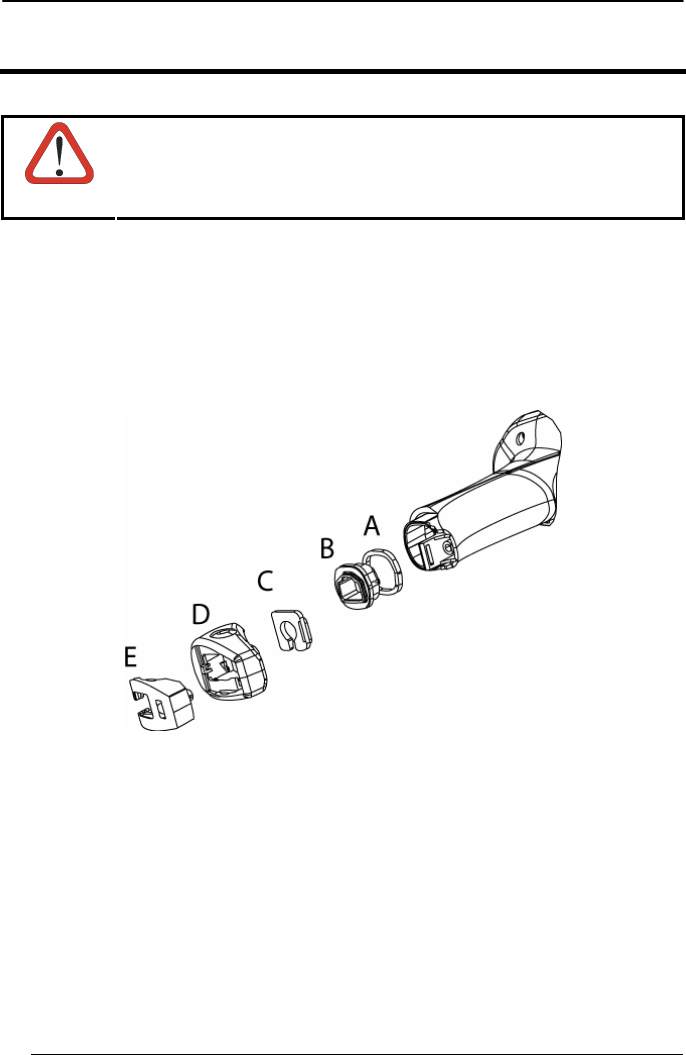
POWERSCAN® D8330/M8300
2
2 INSTALLATION
CAUTION
Connections should always be made with power OFF!
2.1 POWERSCAN® D8330 INTERFACE CABLE CONNECTIONS
The PowerScan® D8330 reader incorporates a multi-standard interface, which can be
connected to a Host by plugging the correct interface cable into the connector and
closing the cable cover.
A. Rubber gasket
B. Plastic boot
C. Cable spacer
D. Cover
E. Strain relief
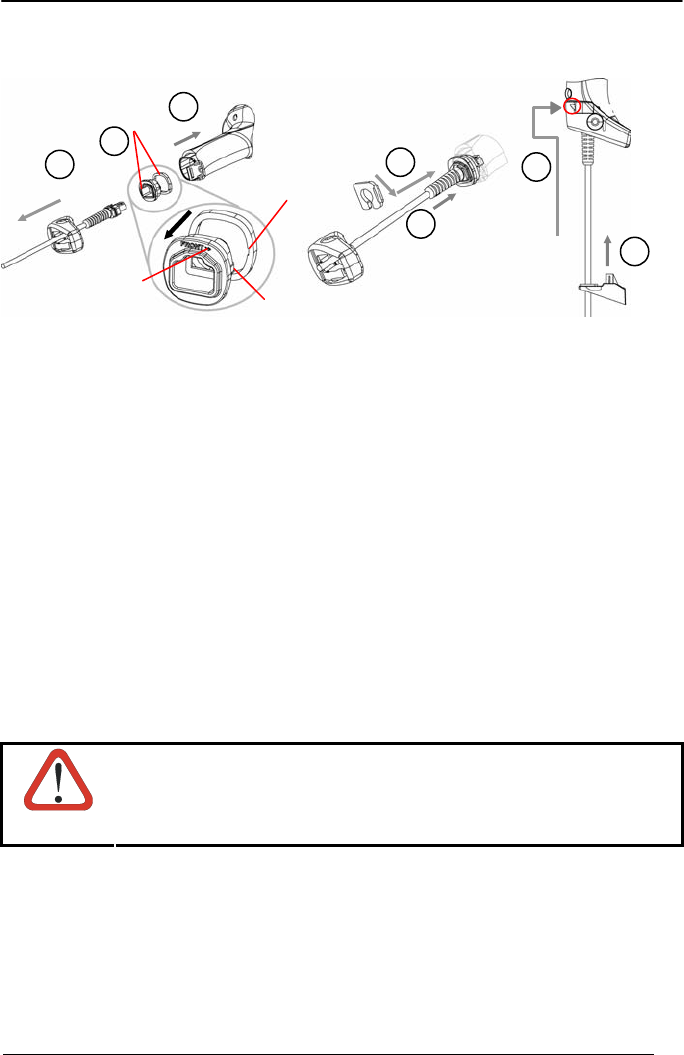
INSTALLATION
3
Follow the given procedure for correct cable insertion:
c Slip the cover over the cable.
d Push the plastic boot into the rubber gasket. Take care that the tab on the plastic
boot is aligned with the notch in the rubber gasket.
e Push the plastic boot and gasket into the handle. Ensure that the “Front” marking
on the plastic boot is facing out, with the arrow pointing towards the front of the
scanner.
f Insert the cable into the socket of the plastic boot.
g Insert the cable spacer into the cable wire and slide it towards the handle.
h Push the cover along the cable towards the reader, and hook it over the yellow
“tooth”.
i Insert the strain relief into the cover and tighten the screw to fix the whole
assembly to the reader handle.
CAUTION
Connections should always be made with power OFF!
Align
1
2
3
4
56
7
Notch
Tab
Arrow
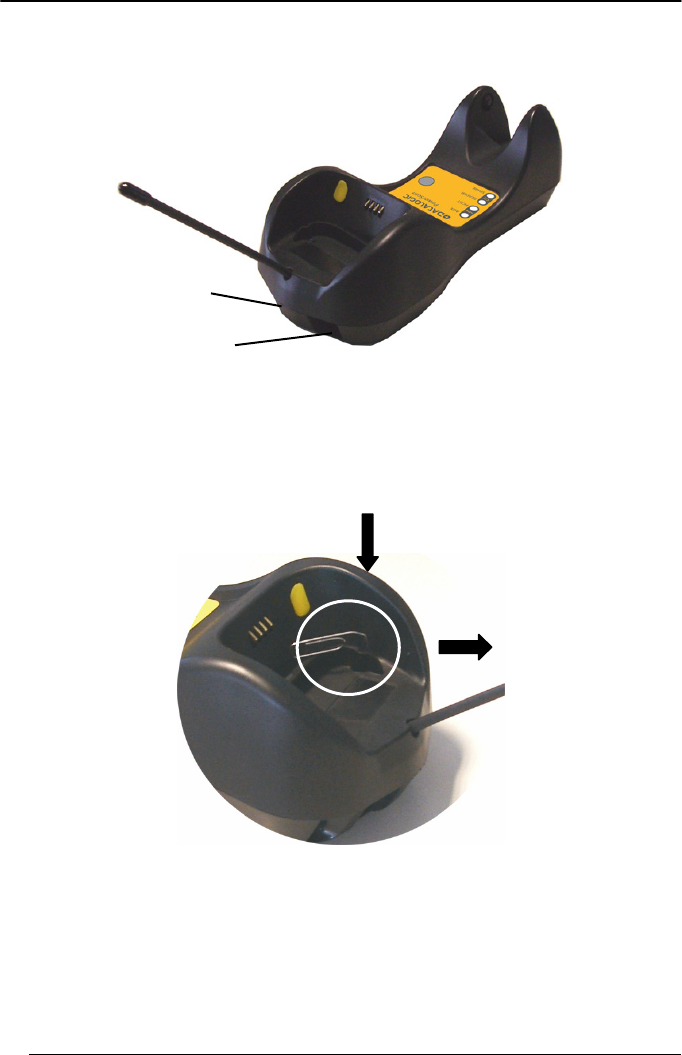
POWERSCAN® D8330/M8300
4
2.2 BC-80X0 INTERFACE CABLE CONNECTIONS
BC-80X0 Connectors
The BC-80X0 incorporates a multi-standard interface, which can be connected to a
Host by simply plugging the correct interface cable into the Host connector, placed on
the base of the cradle. In addition the cradle must be connected to an external power
supply.
Disconnecting the BC-80X0 Cable
To disconnect the cable, insert a paper clip or other similar object into the hole
corresponding to the Host connector on the body of the cradle.
Push down on the clip while unplugging the cable.
Interface Cable
Power
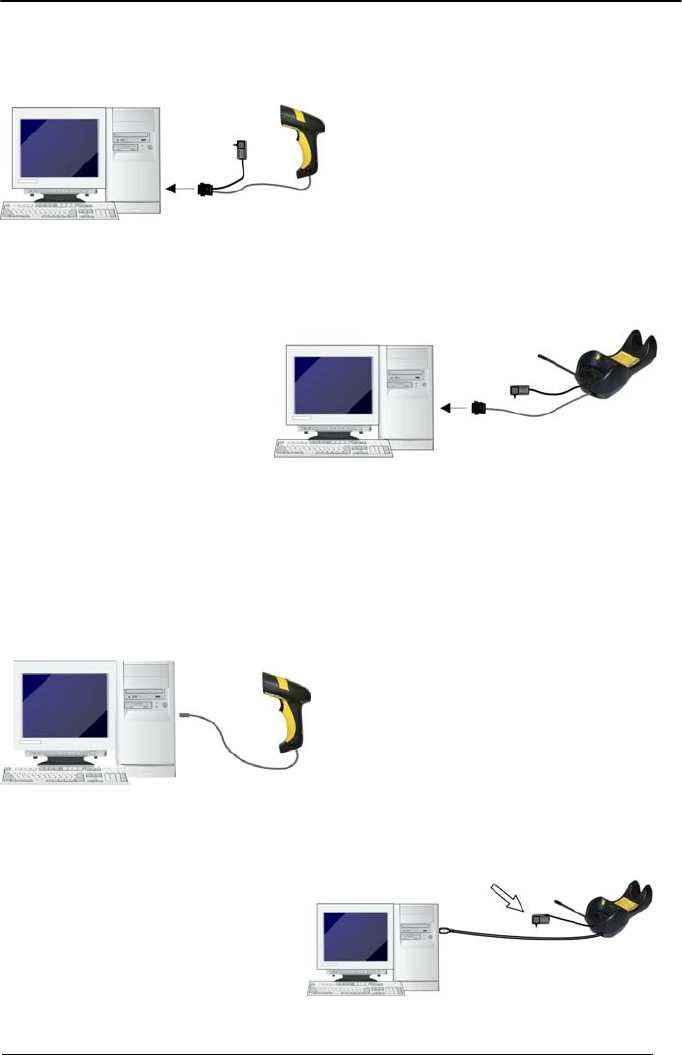
INSTALLATION
5
2.3 RS-232 CONNECTION
2.4 USB
(if required)
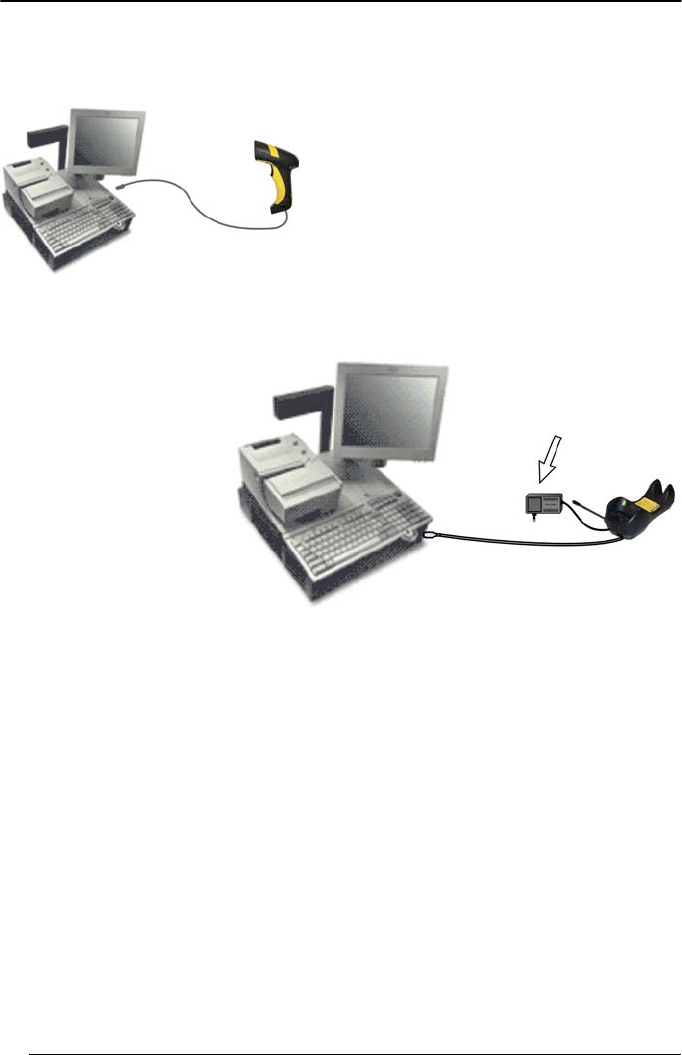
POWERSCAN® D8330/M8300
6
2.5 IBM USB POS
(if required)
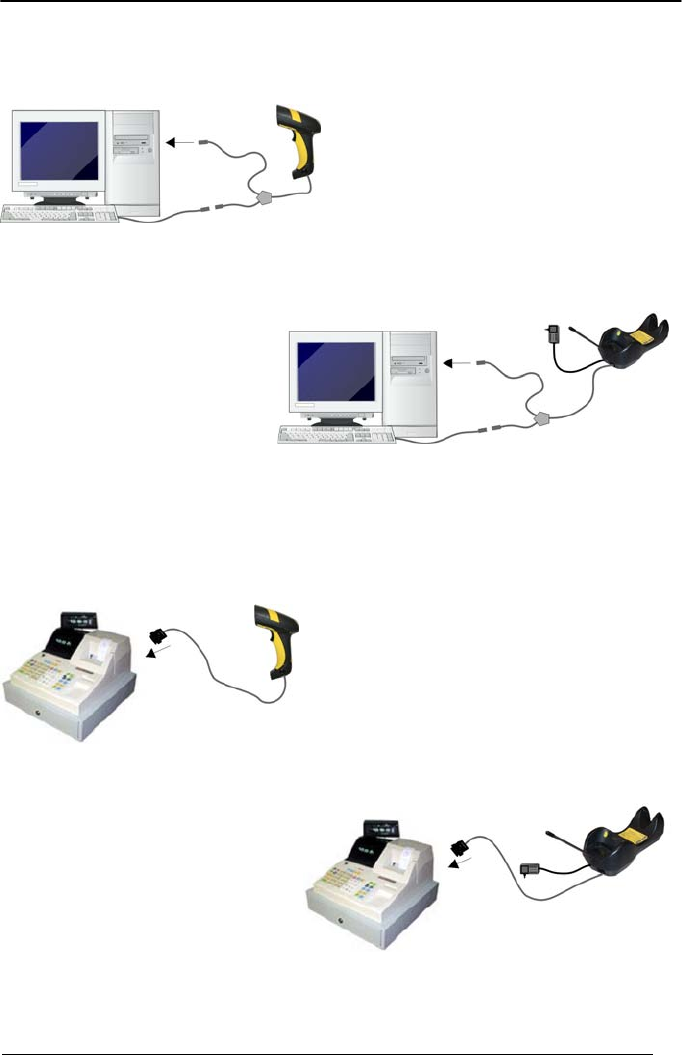
INSTALLATION
7
2.6 WEDGE CONNECTION
2.7 PEN EMULATION CONNECTION
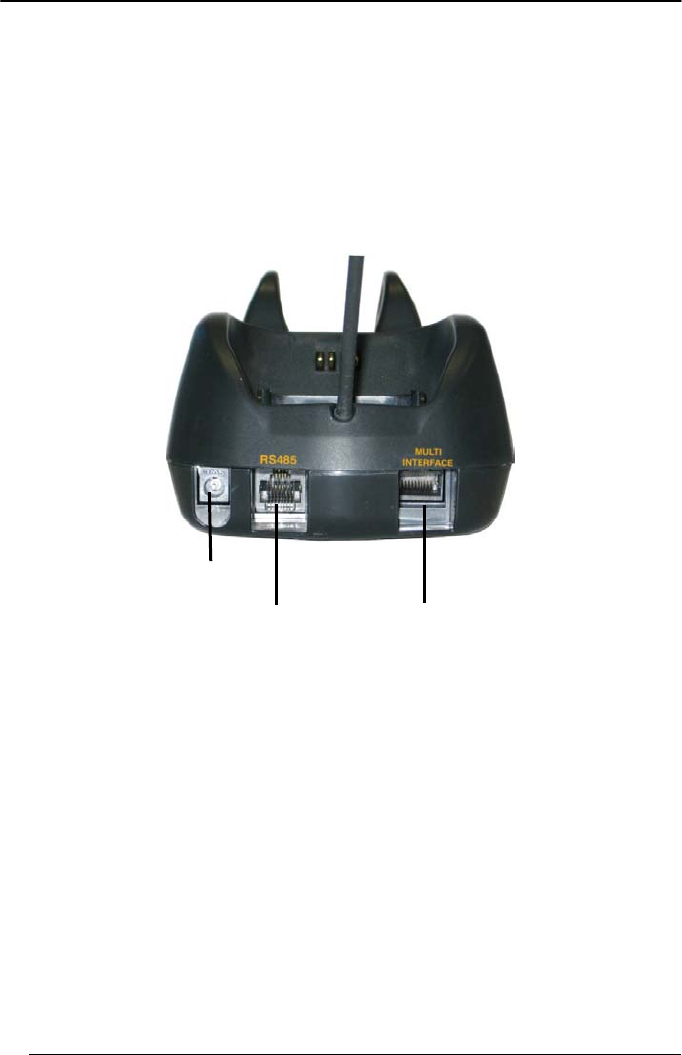
POWERSCAN® D8330/M8300
8
2.8 NETWORK CONNECTIONS
2.8.1 BC-8060 Network Connectors
The multidrop network is a bus system which is propagated from one BC-8060 cradle
to another using individual cables. This is possible thanks to the RS-485 connector
on the front panel of the cradle.
All cradles are connected together within the bus system through the Datalogic
RS-485 splitter cable (CAB-428, part number 90A051950), which must be inserted in
the RS-485 cradle connector.
Obviously cable length is to be kept to a minimum as with all bus systems.
Power Supply
RS-485
(BC-8060only)
MULTI-INTERFACE
RS-232, USB, Wedge,
PEN Emulation
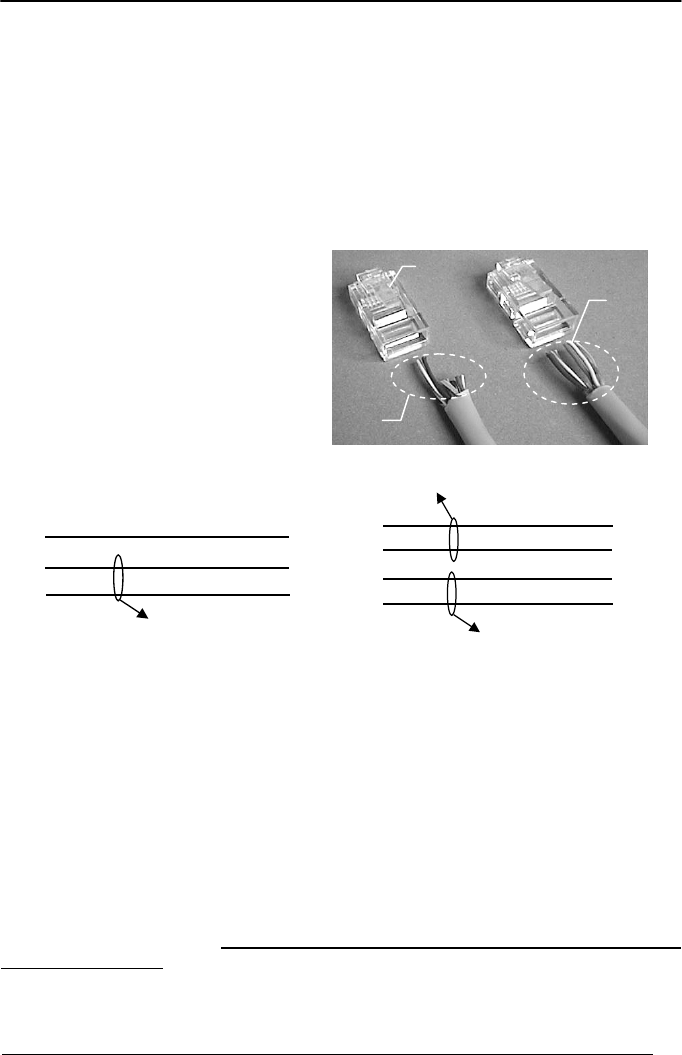
INSTALLATION
9
2.8.2 Network Cabling
The Multidrop line is made using RJ45 connectors and a cable having the following
specifications:
• twisted pair AWG 24 wires
• 120 Ω impedance
• maximum network cable length 1200 meters
Pin Function Multidrop Cables
1 RS-485 +
2 RS-485 -
3 N.C.
4 VDC –
5 VDC –
6 N.C.
7 VDC +
8 VDC +
5
2
RJ45
5
2
RJ45
1 1
VDC-
RS-485-
RS-485+
Twisted Pair
–
RS-485 bus
8
5
2
RJ45
8
5
2
RJ45
11
Twisted Pair – RS-485 bus
Twisted Pair - Power supply
VDC+
VDC-
RS-485-
RS-485+
When wiring the multidrop cables, note the following:
Pin 8 (or 7) can be connected only if the power has to be propagated from a cradle to a
STARGATE™ base station or STAR-Box™ converter via the cable.
Pins 5 (or 4) should always be connected as reference ground.
To avoid excessive voltage drop, it is recommended not to propagate power between
BC-8060 cradles when used as battery chargers but to supply each cradle
individually. The total number of devices, which can be connected to a single power
supply, depends on the power supply voltage, the wire length and resistance and
therefore the voltage drop. Do NOT connect VDC+ between network devices that are
individually powered.
Data
only
Data
and
Power
Supply
Pin 1
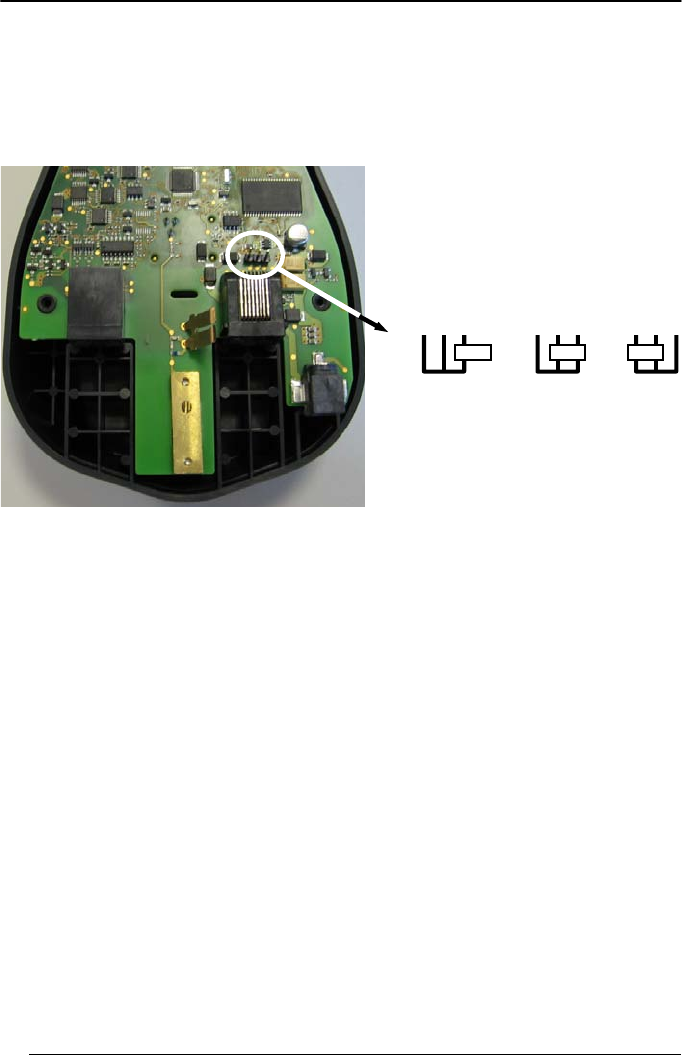
POWERSCAN® D8330/M8300
10
2.8.3 Network Termination
The first and last cradles of the chain (the two ends of the bus) must be properly
terminated. The cradle has an internal terminator that can be selected via jumper.
For this selection you must open the device.
No Termination Static Dynamic
Terminator for Multidrop Network
Static termination works for all network configurations. However, the network is
always under load even when no data transmission takes place.
Dynamic termination can be used for baud rates at or above 38400 and provides less
load on the network when idle.
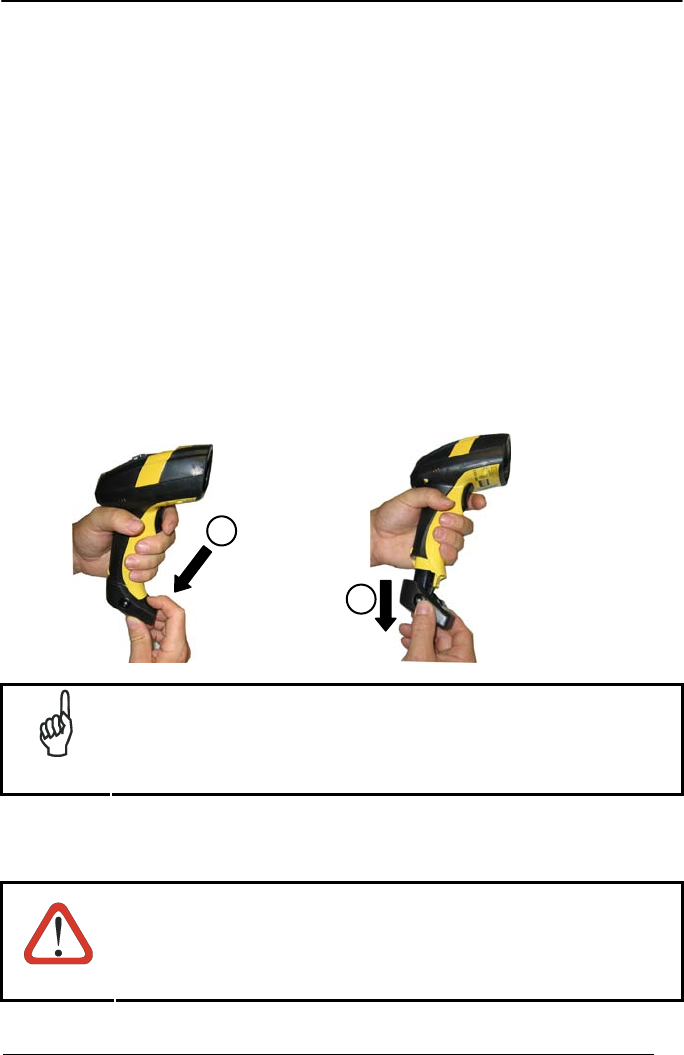
INSTALLATION
11
2.9 POWERSCAN® M8300 BATTERY MAINTENANCE
2.9.1 Battery Charging
Once the system is connected and powered, you can place the PowerScan® M8300
into the cradle to charge the battery.
When the reader is correctly inserted in the cradle, the "Reader" red LED on the cradle
goes on to indicate that the battery is charging. The "Reader" green LED on the cradle
goes on when the battery is completely charged.
2.9.2 Replacing PowerScan® M8300 Batteries
To change the batteries in your PowerScan® M8300 scanner, press the black button
or unscrew the fixing screw on the handle cover and extract the battery pack from the
reader handle.
NOTE
When the batteries are extracted from the scanner, the timer
maintains the current hour and date for about 1 minute.
Replace the old battery pack with a new one by inserting it within the reader handle
and pushing it until it clicks.
WARNING
Do not incinerate, disassemble, short terminals or expose to
high temperature. Risk of fire, explosion. Use specified
charger only. Risk of explosion if the battery is replaced by
an incorrect type. Dispose of the batteries as required by the
relevant laws in force.
1
2
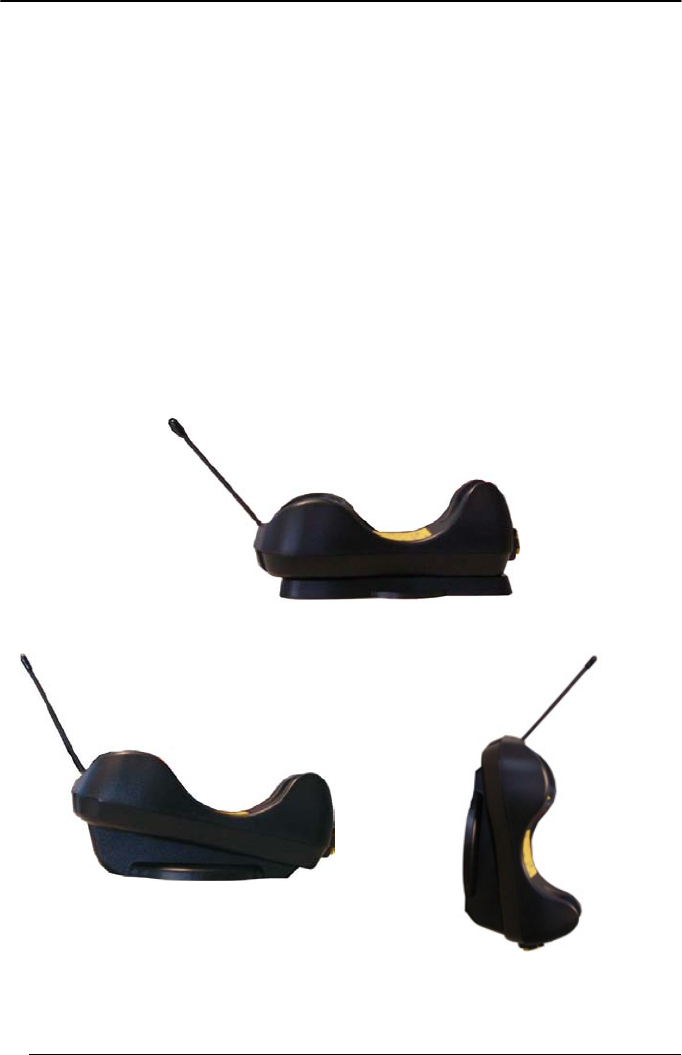
POWERSCAN® D8330/M8300
12
2.10 MOUNTING THE BC-80X0 / C-8000 CRADLE
The cradle package contains the following items:
BC-80X0 / C-8000 Cradle
BC-80X0 Quick Reference / C-8000 Quick Reference
BC-8000 Antenna 2 wall-mounting lock hinges
2 adhesive strips 4 rubber feet
1 horizontal base 1 inclined base
The cradle (either BC-80X0 or C-8000) can be mounted for portable or fixed desktop
usage, or it can be fixed to a wall. The horizontal base allows portable and fixed
desktop usage, while the inclined base provides desktop and wall mounting
guaranteeing a comfortable handling of the PowerScan® M8300 reader.
BC-80X0/C-8000 Cradle mounted on the Horizontal Base
BC-80X0/C-8000 Cradle mounted on the Inclined Base
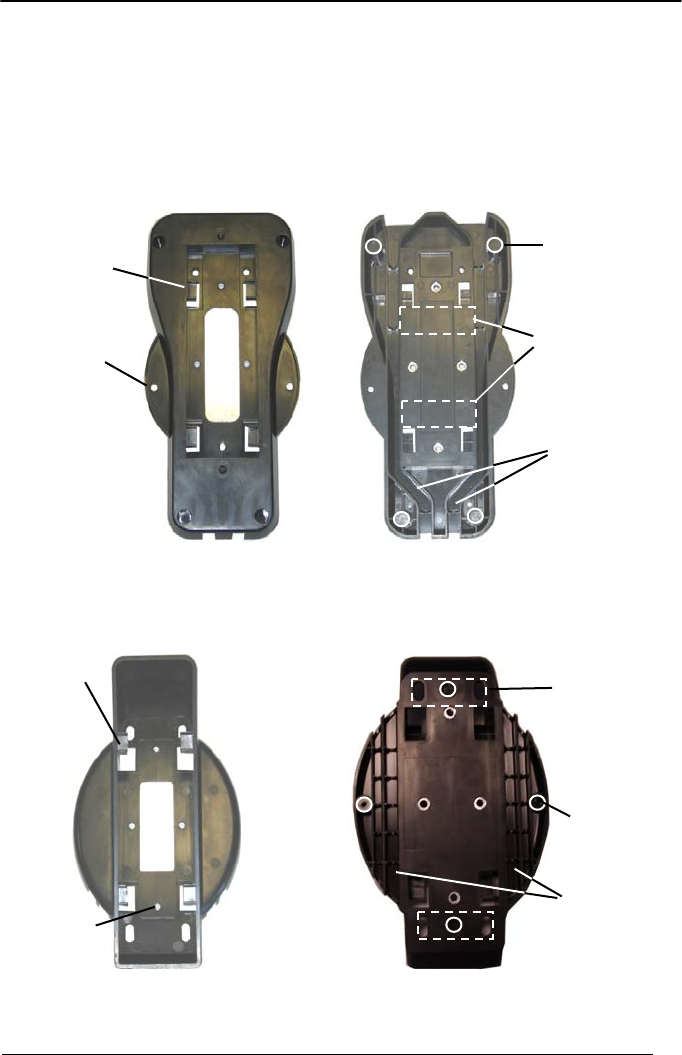
INSTALLATION
13
2.10.1 Desktop Mounting
For desktop usage, you can mount the cradle either on the horizontal base, for reduced
overall dimensions, or on the inclined base for a more ergonomic taking out and
insertion of the reader onto the cradle.
Horizontal base
Top View Bottom View
Inclined base
Top View Bottom View
Mounting
Tabs (4)
Mounting
Holes (2)
Rubber Foot
Seat (4)
A
dhesive Strip
Seat (2)
Cable
Channels
Mounting
Tabs (4)
Mounting
Holes (4)
Cable
Channels
A
dhesive Strip
Seat (2)
Rubber Foot
Seat (4)
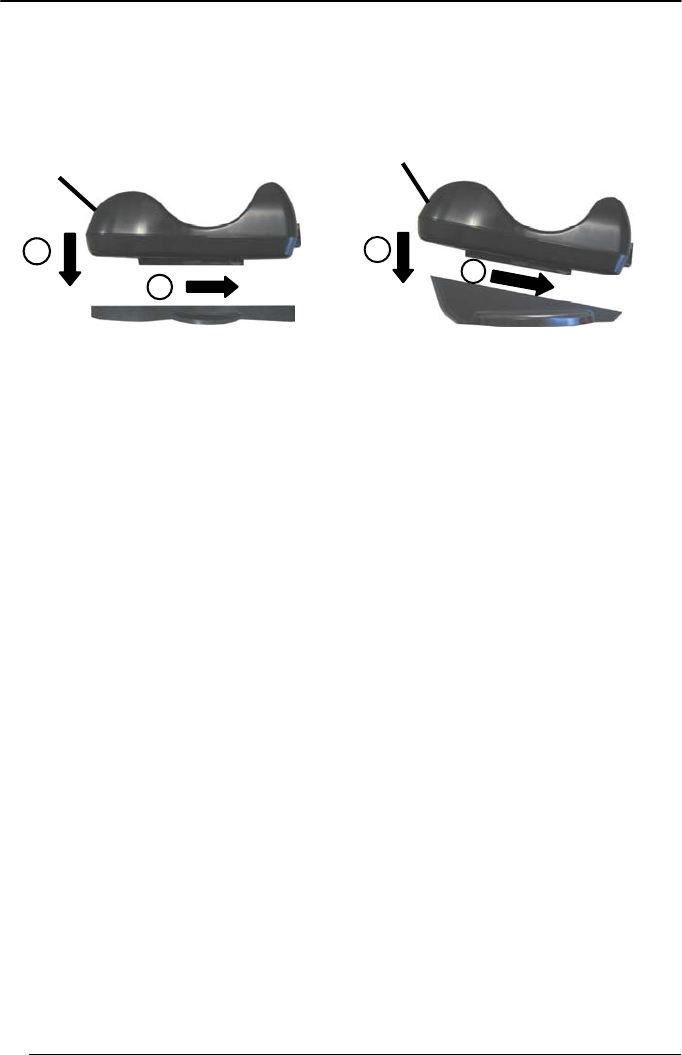
POWERSCAN® D8330/M8300
14
Portable Desktop Use
1. Correctly position the BC-80X0/C-8000 onto the base by sliding it along the
mounting tabs until aligned.
1
2
1
2
2. Carefully clean the rubber foot seats of the base to remove any impurities that
could reduce adhesion.
3. Remove the protective plastic from the rubber feet and stick them onto the
bottom surface of the base.
4. If mounting the BC-80X0 cradle, insert the antenna in the appropriate hole on
the body of the cradle and screw it clockwise until tight.
Fixed Desktop Use
For fixed desktop installation, use the adhesive strips or fixing screws (not provided)
according to your needs.
For mounting with adhesive strips:
1. Position the cradle onto the base by sliding it along the mounting tabs until
aligned.
2. Carefully clean the adhesive strip seats of the base to remove any impurities that
could reduce adhesion.
3. Remove the protective plastic from one side of the adhesive strips and stick
them onto the base surface.
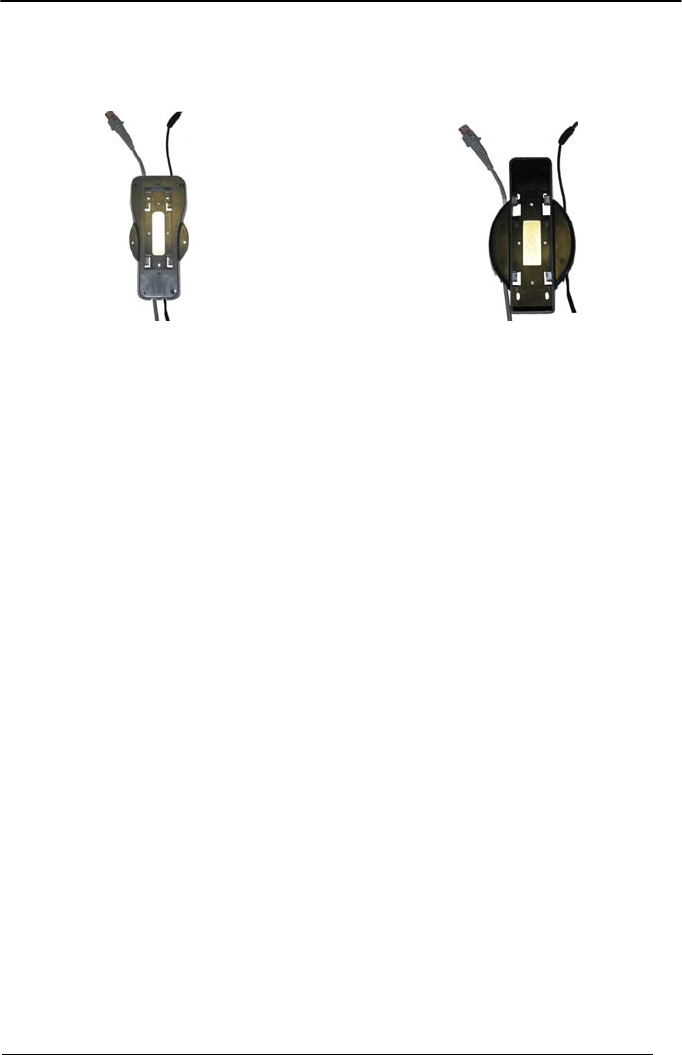
INSTALLATION
15
4. Position the cables to be connected to the BC-80X0/C-8000 cradle along the
dedicated channels, as shown in the figures below:
Horizontal Base Inclined Base
5. Remove the plastic from the other side of the strips and affix the base to the
table.
6. If mounting the BC-80X0 cradle, insert the antenna in the appropriate hole on
the body of the cradle and screw it clockwise until tight.
For mounting with screws:
1. Position the cables to be connected to the BC-80X0/C-8000 cradle along the
dedicated channels, as shown in the figures below:
2. Position the base on the table and affix it by means of the screws (not provided).
3. Position the cradle on the base by sliding it along the mounting tabs until
aligned.
4. If mounting the BC-80X0 cradle, insert the antenna in the appropriate hole on
the body of the cradle and screw it clockwise until tight.
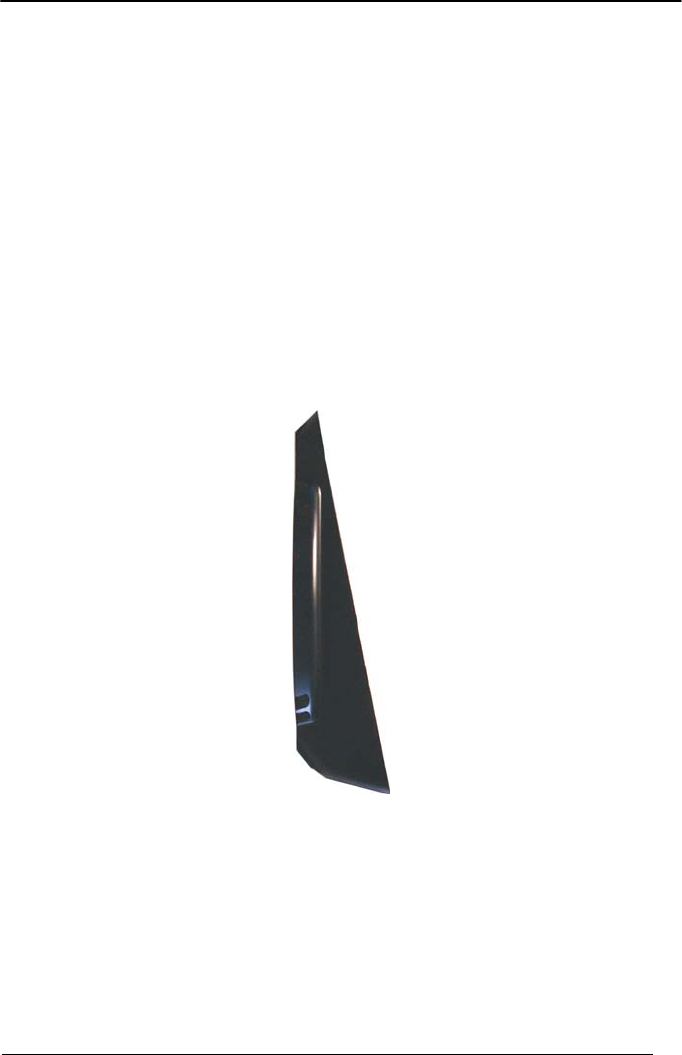
INSTALLATION
17
If using the adhesive strips:
a. Carefully clean the adhesive strip
seats of the base to remove any
impurities that could reduce
adhesion.
b. Remove the protective plastic from
one side of the adhesive strips and
stick them onto the base surface.
c. Remove the plastic from the other
side of the strips and affix the base
to the wall as indicated in the figure
below.
If using the mounting screws:
3. Using the mounting holes on the
base as a pattern, mark the wall
where you desire to mount the BC-
80X0/C-8000.
4. Drill the appropriate size holes and
insert the threaded dowels (not
provided) into the holes.
5. Position the base on the wall as
indicated in the figure below and
affix it by means of the screws (not
provided).
Inclined Base Wall-mounting
6. Attach the cradle on the base by sliding it along the mounting tabs until aligned.
7. If mounting the BC-80X0 cradle, insert the antenna in the appropriate hole on
the body of the cradle and screw it clockwise until tight.
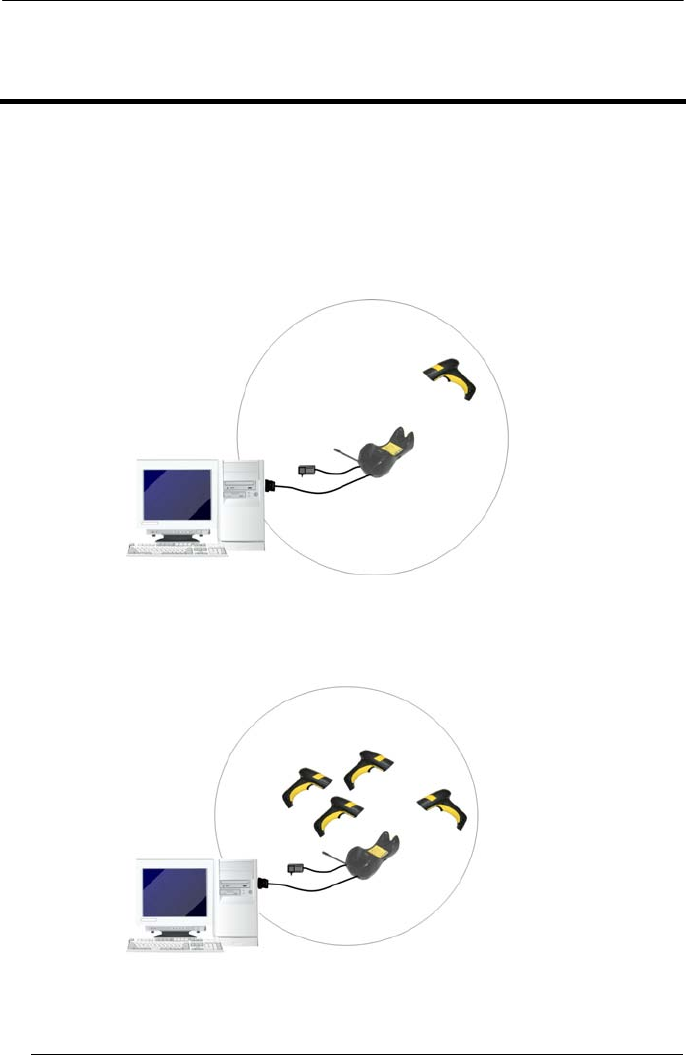
POWERSCAN® D8330/M8300
18
3 POWERSCAN® M8300 SYSTEM AND NETWORK
LAYOUTS
There are two basic system layouts that can be employed: Stand-alone systems
(including Point-to-Point layouts) and Multidrop STAR-System™ Networks.
3.1 STAND-ALONE LAYOUTS
3.1.1 Point-to-Point Reader Layout
Host
BC-80X0
BIND
PowerScan
®
M8300
3.1.2 Stand-Alone Layout with Multiple Readers
Host
PowerScan
®
M8300
BC-80X0
JOIN
BIND
In stand-alone systems, each cradle is connected to a single Host.
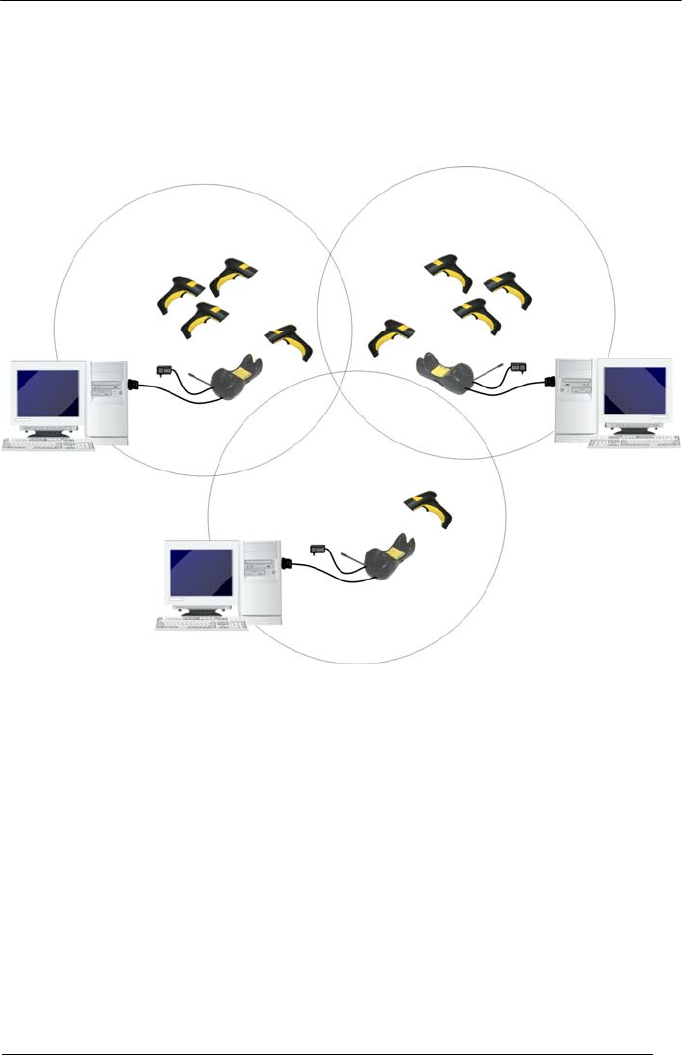
POWERSCAN® M8300 SYSTEM AND NETWORK LAYOUTS
19
3.1.3 Multiple Stand-Alone Layouts
Many stand-alone connections can operate in the same physical area without
interference, provided all readers and cradles in the system have different addresses.
Multiple Stand-alone Systems in the Same Area
Since the cradles can communicate to multiple PowerScan® M8300 readers, you
might find it useful to employ one or more C-8000 battery chargers in addition to the
BC-80X0 cradle, so that the battery re-charging operation can be performed for
several scanners at the same time.
Host
Host
Host
PowerScan
®
M8300
BC-80X0 BC-80X0
BC-80X0
BIND BIND
BIND
JOIN
JOIN
PowerScan
®
M8300
PowerScan
®
M8300
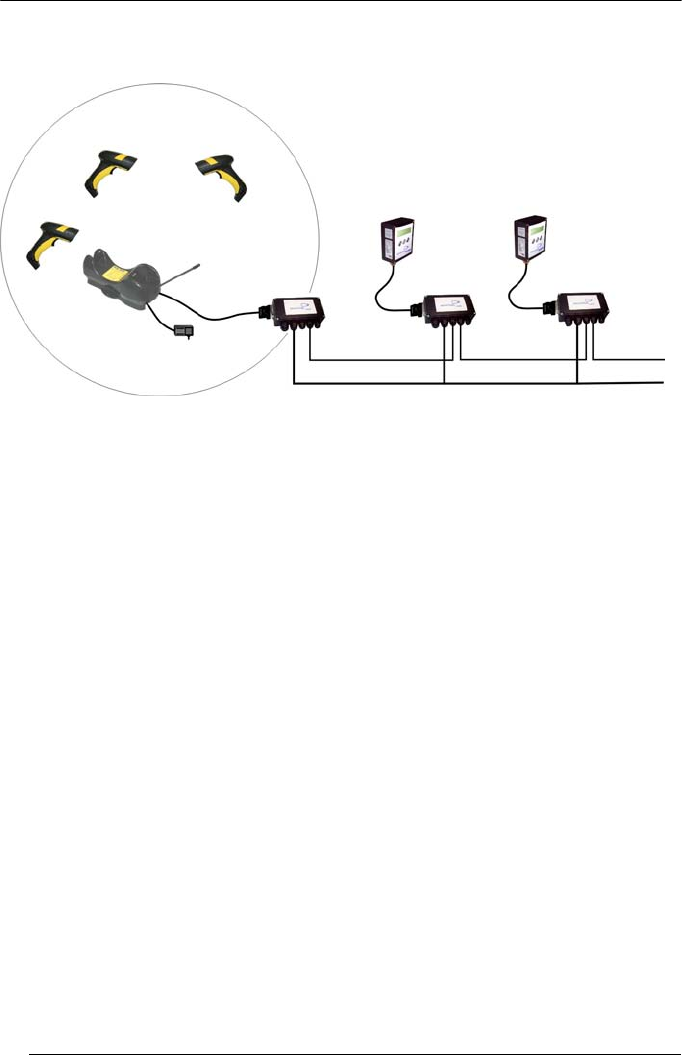
POWERSCAN® D8330/M8300
20
3.1.4 C-BOX Layout
In this layout the BC-80X0 cradle is connected by a dedicated cable using the RS-232
interface to a C-BOX connection box as part of a fixed scanner network. This allows the
flexibility of a hand-held reading station integrated into a variety of fixed scanning
applications so that all readers (both fixed and hand-held), in the system provide
communications to the Host.
The various C-BOX models provide many interface types for the Host system such as
RS-232, RS-485, Profibus.
JOIN
BIND
BC-80X0
C-Box
Scanner
System cables to Host
PowerScan
®
M8300
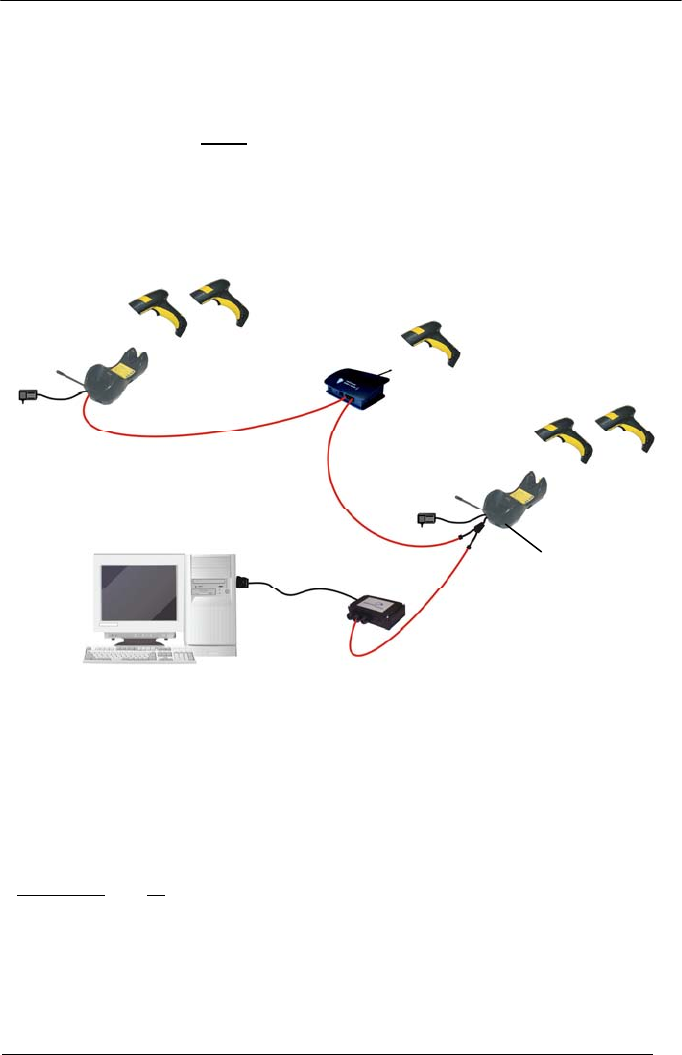
POWERSCAN® M8300 SYSTEM AND NETWORK LAYOUTS
21
3.2 MULTIDROP STAR-SYSTEM™ NETWORK LAYOUTS
Even though many stand-alone systems can operate in the same physical area without
interfering with each other, it may be desirable to bridge data from multiple base
stations in a network to a single Host. PowerScan® M8300 readers are compatible with
STAR-System™ networks. These networks provide seamless active roaming for any
RF reading device in the system.
3.2.1 Host Master Layout
A. Host Master with STAR-Link™
B. STAR-Box™ converter
C. BC-8060 slave cradles
D. STARGATE™ base stations
Example Multidrop STAR-System™ Network with Host as Master
In this layout the Host acts as the Master using STAR-Link™ software. The Host is
connected in RS-232 to a STAR-Box™ converter, which is connected to the first slave
in the RS-485 network. In this way the base stations provide communications between
a single Host and all readers in the system. STARGATE™ base stations are used as
slaves in this network. The Slaves at the ends of the network must be terminated (see
the STARGATE™ and STAR-Box™ Installation Manuals and par. 2.8.3).
See par. 4.6 and 4.7 or the Datalogic Aladdin™ Help On-Line for system
configuration specifications.
Internal
Termination
Internal
Termination
RS-485 + VDC
RS-485 + VDC
RS-232
A
B
C
C
D
RS-485 Only
CAB-428 Splitter
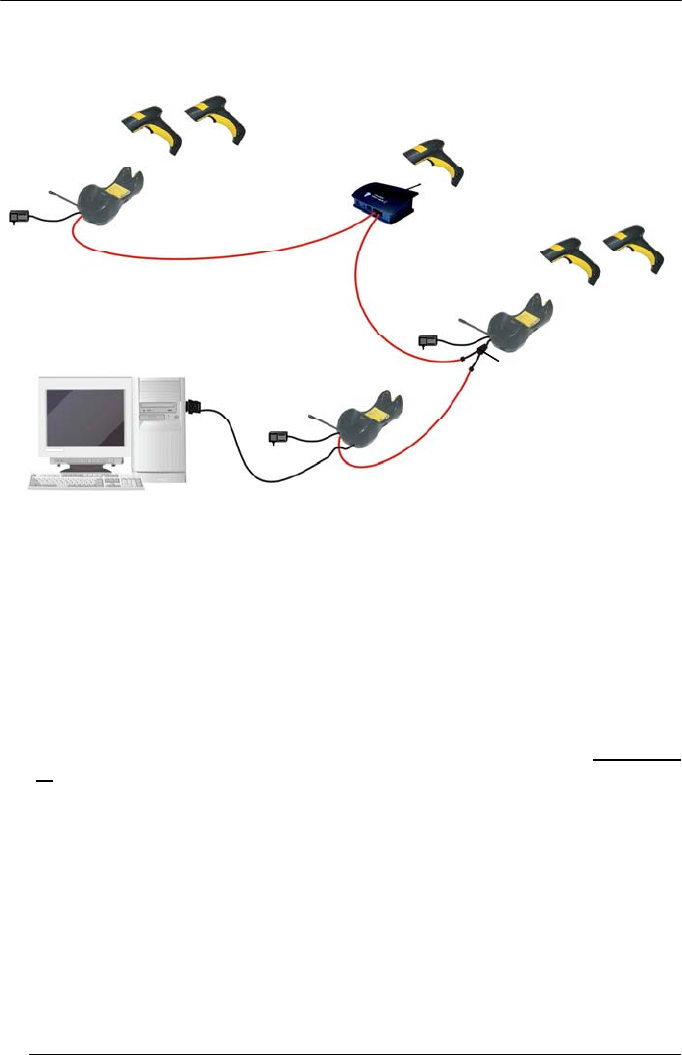
POWERSCAN® D8330/M8300
22
3.2.2 BC-8060 Master Layout
A. Host
B. BC-8060 Master cradle
C. BC-8060 Slave cradles
D. STARGATE™ base station
Example Multidrop STAR-System™ Network with BC-8060 as Master
In this layout an BC-8060 cradle acts as the Master. The Host is connected to the
BC-8060 Master using any one of the multi-standard interfaces (RS-232, USB,
WEDGE, or PEN Emulation). The Master is then connected to the slaves in the RS-485
network. In this way the slave cradles provide communications between a single Host
and all readers in the system. STARGATE™ base stations can also be used as slaves
in this network. The devices at the ends of the network must be terminated (see par.
2.8.3).
See pars. 4.6 and 4.7 or the Datalogic Aladdin™ Help On-Line for system
configuration specifications.
Internal
Termination
Internal
Termination
RS-485 + VDC
RS-485 Only
USB, or RS-232, or Wedge, or Pen Emulation
A
B
C
C D
RS-485 Only
CAB-428 Splitter

POWERSCAN® M8300 SYSTEM AND NETWORK LAYOUTS
23
3.2.3 Master BC-8060 Network Troubleshooting
Two diagnostic strings can be sent via RS-232 from the Host to the Master cradle in
order to have feedback about the network itself.
#+LSlave
Returns a list of all the Slaves recognized at boot up.
Example:
In a network where the Master cradle has address 0188 and one Slave cradle with
address 0001, the response is:
188
1
#+Alive<xxxx>
Executes a continuous Alive request to the slave xxxx in order to monitor the
performance of the connection. A diagnostic message is displayed on the Host.
Example:
If this command is sent for slave cradle with address 0032, the response is:
/*32: BC-80X0 SOFTWARE RELEASE 1.00 20/10/2006*/
if there are no communication errors
/*32: FAIL*/
if there are communication errors.
To exit from this command, reset the system by cycling power to the Master cradle.
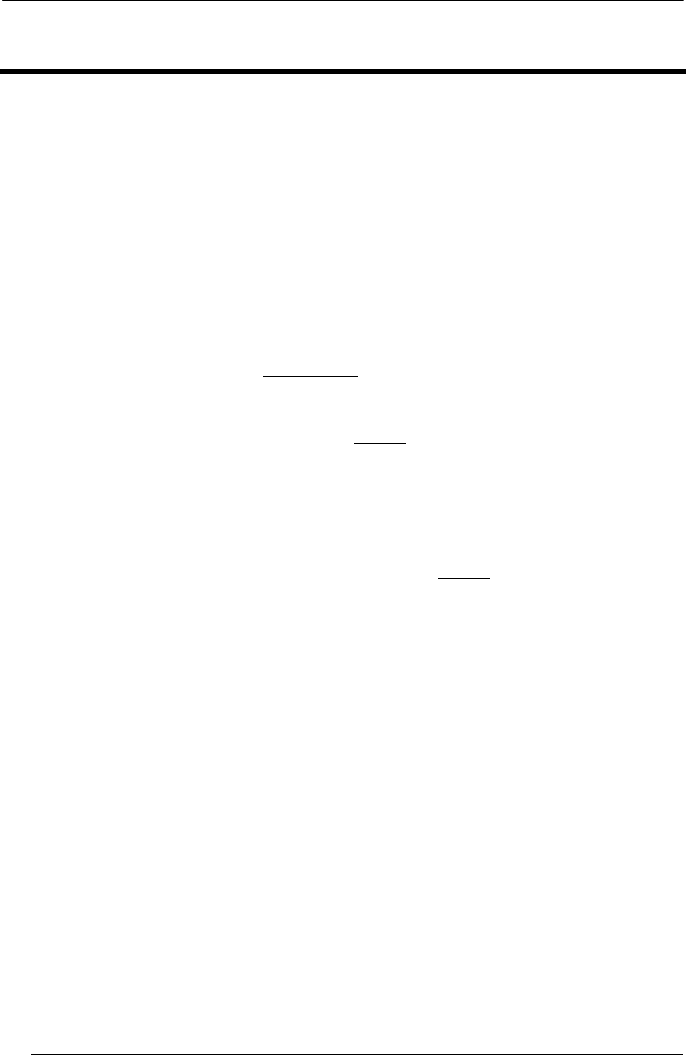
POWERSCAN® D8330/M8300
24
4 CONFIGURATION
4.1 CONFIGURATION METHODS
4.1.1 Reading Configuration Barcodes
This manual can be used for complete setup and configuration of your reader by
following the setup procedures in this chapter (see par. 4.2 for an overview).
If you wish to change the default settings, this manual provides complete
configuration of your reader in an easy way.
To configure your reader:
1) Open the folded page in Appendix C with the hex-numeric table and keep it
open during the device configuration.
2) Read the Enter Configuration code ONCE, available at the top of each page
of configuration.
3) Modify the desired parameters in one or more sections following the
procedures given for each group.
4) Read the Exit and Save Configuration code ONCE, available at the top of
each page of configuration.
Reference notes describing the operation of the more complex parameters are given
in chapter 5.
4.1.2 Using Datalogic Aladdin™
Datalogic Aladdin™ is a multi-platform utility program providing a quick and user-
friendly configuration method via the RS-232/USB-COM interface.
It also allows upgrading the software of the connected device (see the Datalogic
Aladdin™ Help On-Line for more details).
4.1.3 Copy Command
A previously configured device (Master), can be used to send its configuration directly
to other devices of the same type (Slaves). The particular procedure for each device is
given in par. 5.14.
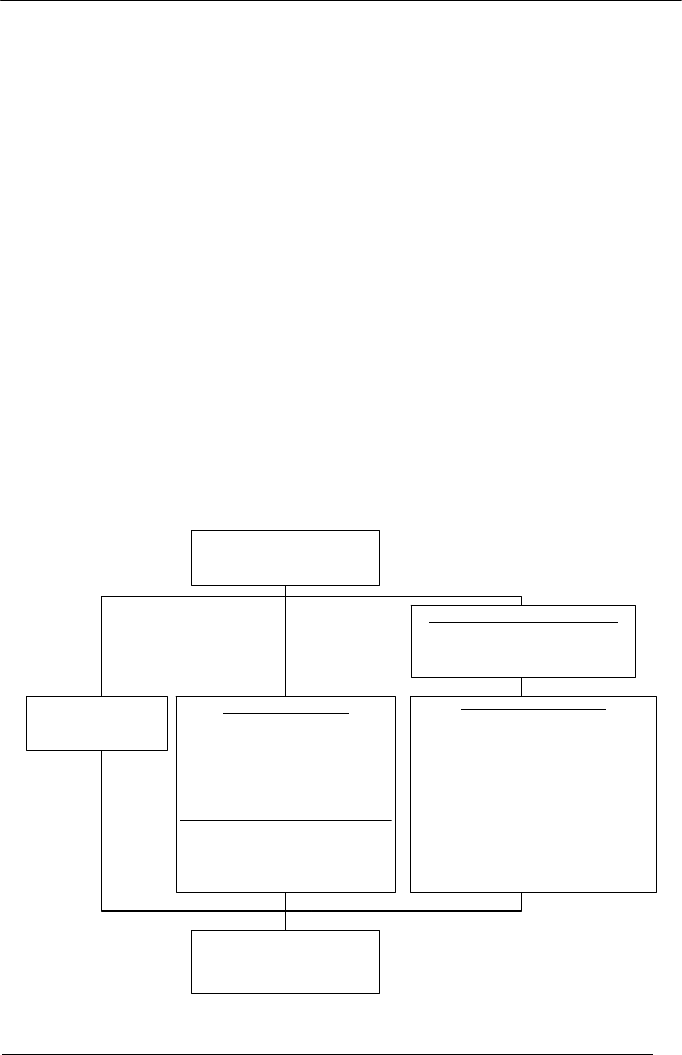
CONFIGURATION
25
4.1.4 Sending Configuration Strings from Host
An alternative configuration method is provided in Appendix A using the RS-232
interface. This method is particularly useful when many devices need to be
configured with the same settings. Batch files containing the desired parameter
settings can be prepared to configure devices quickly and easily.
4.2 SETUP PROCEDURES
For PowerScan® D8330 Series readers, follow the setup procedures in pars. 4.3, and
4.8.
For PowerScan® M8300 Series readers, the setup procedures depend on two basic
applications, Stand-alone or STAR-System™.
Stand-alone applications allow communication with the Host by either the BC-80X0
cradle (par. 4.5), or by the STAR-Modem™ radio modem (par. 4.5.2).
STAR-System™ applications allow communication with the Host through an
RS-485 network by the STARGATE™ RF base station or by the BC-8000 cradle
(par. 4.6 and par. 4.7).
Proceed as shown in the following diagram:
Begin Setup by choosing the setup
procedure for your PowerScan®
reader as indicated below.
End of Setup
Your reader is now ready to read
barcodes using the default settings.
Stand Alone Applications
PowerScan® M8300/BC-80X0
Par. 4.4
Par. 4.7
Optional Par. 4.4.1
multiple readers per BC-8000
PowerScan® M8300/STAR-Modem™
in Stand Alone Mode
Par. 4.4.2
PowerScan® D8330
Par. 4.3
Par. 4.7
STAR-System™ Network Applications
BC-8000
Par. 4.6
STAR-System™ Applications
PowerScan® M8300/STAR-System™
Par. 4.5
• STARGATE™
• BC-8000 Network
• STAR-Modem™ in STAR-System™ Mode
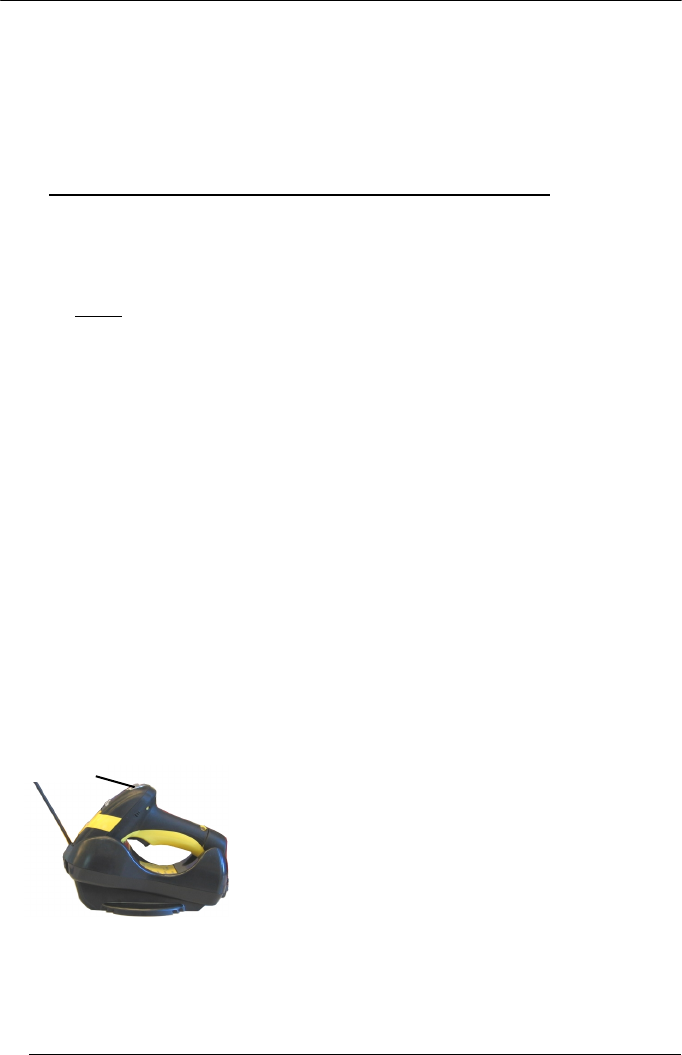
POWERSCAN® D8330/M8300
26
4.3 POWERSCAN® D8330 SETUP
1. Read the restore default parameters code below.
Restore PowerScan® D8330 Default
Ì$+$*oÎ
After reading the above code, go to par. 4.8 Interface Selection.
4.4 POWERSCAN® M8300/BC-80X0 POINT-TO-POINT SETUP
A rapid configuration procedure has been devised for point-to-point applications
where a single reader is associated exclusively with its own BC-80x0 base station
and where it is not necessary to set the Date and Time parameters.
A special pre-printed bind-address label provided in the BC-80x0 base station
package can be used to bind the PowerScan® M8300 reader to the base station with
the address coded on the label. The address is also written numerically on the label
to be easily recognized. Valid addresses are in the range from 0000 to 1999. Make
sure that all cradles used in the same area have different addresses.
To rapidly configure your point-to-point application:
1. Apply the bind-address label onto the BC-80x0 base station as indicated in
the BC-80x0 Quick Reference Guide.
2. When the BC-80X0 cradle is connected and powered, read the
Bind-Address label to pair the PowerScan® M8300 to the BC-80X0 cradle.
The green LED on the PowerScan® M8300 will blink: the reader is ready to
be positioned onto the cradle.
3. Firmly position the reader onto the cradle within 10 seconds, a beep will be
emitted, signaling that the BC-80X0 cradle has been paired to the
PowerScan® M8300, and the green LED on the reader will go off.
If it ever becomes necessary to change the reader,
just read the bind-address label applied to the cradle
and position the new reader onto the cradle.
Do not use multiple readers with this configuration
method.
4. Configure the BC-80X0 cradle, refer to the “BC-80X0 Quick Reference
Guide”.
END of procedure. YOUR READER IS NOW READY TO READ CODES.
Green LED

CONFIGURATION
27
4.5 POWERSCAN® M8300/BC-80X0 STAND-ALONE SETUP
Read the restore default parameters code below.
Restore PowerScan® M8300 Default
1. Ì$+$*oÎ
Follow the procedure below to set the radio address and bind PowerScan®
M8300 to the BC-80X0 cradle.
Enter Configuration
2. Ì$+;Î
Set Date
3.
ÌIA%Î
+
six digits for Day, Month and Year (DDMMYY)
Set Time
4.
ÌIB'Î
+
four digits for Hour and Minutes (HHMM)
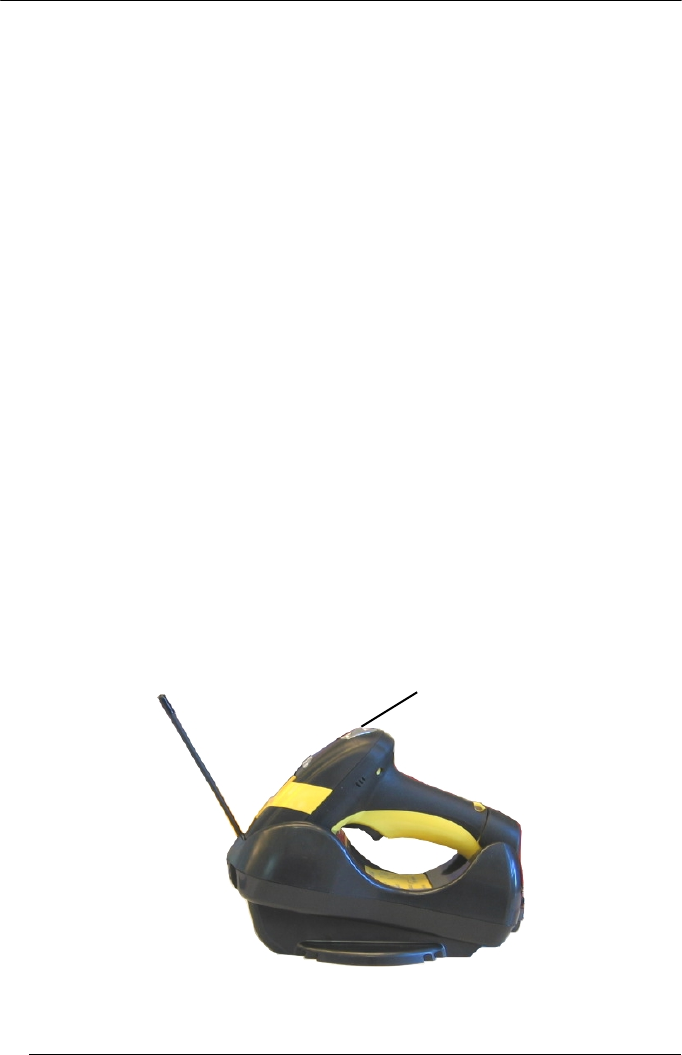
POWERSCAN® D8330/M8300
28
Set Radio Address
5.
ÌRA0RFHÎ
+
four digits for the PowerScan® M8300 Address (from 0000 to 1999).
All readers used in the same area must have different addresses.
Exit and Save Configuration
6. Ì$-?Î
7. Read the Bind code to pair the PowerScan® M8300 to the BC-80X0 cradle.
The reader is dedicated to the cradle. Any previously bound reader will be
excluded.
To connect several readers to the same cradle see the following paragraph
4.5.1, ‘Using Multiple M8300 Series Readers with Same Cradle'.
Bind
Ì$+RN0$-IÎ
The green LED on the PowerScan®M8300 will blink; the reader is ready to be
inserted into the cradle.
8. Firmly insert the reader into the BC-80X0 cradle within 10 seconds, a beep will
be emitted, signaling that the BC-80X0 cradle has been paired to the
PowerScan® M8300, and the green LED on the reader will go off.
green LED
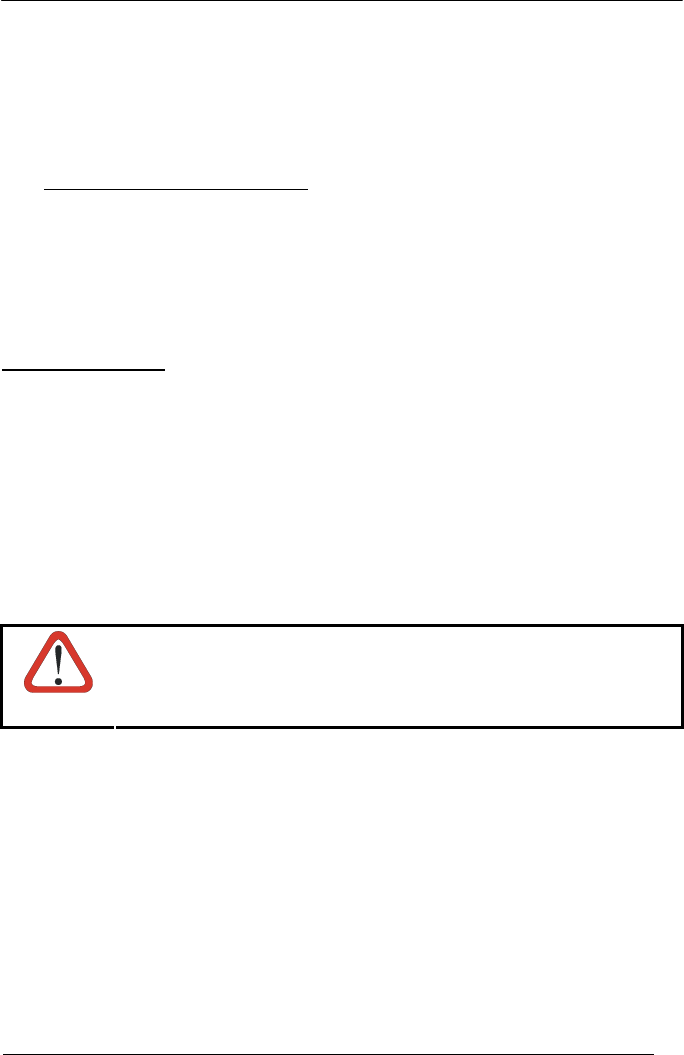
CONFIGURATION
29
Read the BC-80X0 restore default code:
9.
Restore BC-80X0 Default
Ì$+RX0$-qÎ
Go to par. 4.8 Interface Selection.
4.5.1 Using Multiple M-Series Readers with Same Cradle
If you want to use several M-Series readers with the same BC-80X0 cradle, you must
first Bind the cradle with one of the readers (see previously described configuration
procedure).
Successive readers can be associated with the same cradle by following the
configuration procedure substituting the Bind command with Join (step 7).
7. Join
Ì$+RN1$-NÎ
The green LED on the PowerScan® M8300 will blink: the reader is ready to be
positioned onto the cradle. Complete step 8.
END of procedure.
CAUTION
All readers associated with the same cradle must have different
addresses.
YOUR READER IS NOW READY TO READ BARCODES.
To change the defaults see par. 4.10.

POWERSCAN® D8330/M8300
30
4.5.2 PowerScan® M8300/STAR-Modem™ in Stand-Alone Mode
To configure a PowerScan® M8300 reader to communicate with STAR-Modem™ in
Stand-alone Mode, follow the procedure in par. 4.5 substituting steps 6 and 7 with
those below:
STAR-Modem™ Address
6. ÌRSRÎ
Read the code above and the four-digit address of the STAR-Modem™.
7. Exit and Save configuration
Ì$-?Î
END of procedure.
YOUR READER IS NOW READY TO READ BARCODES.
To change the defaults see par. 4.10.

CONFIGURATION
31
4.6 POWERSCAN® M8300/STAR-SYSTEM™ SETUP
The following procedure allows configuring a PowerScan® M8300 reader to
communicate with various STAR-System™ devices such as STARGATE™ RF base
stations.
Restore PowerScan® M8300 Default
1. Ì$+$*oÎ
Enter Configuration
2. Ì$+;Î
Set Date
3.
ÌIA%Î
+
six digits for Day, Month and Year (DDMMYY)
Set Time
4.
ÌIB'Î
+
four digits for Hour and Minutes (HHMM)
Set the connection according to the length of the codes to be read:
5.
Code Length ≤240 Characters
ÌRA1aÎ
Code Length >240 Characters
(not for systems with BC-8000 as Master)
ÌRA2dÎ
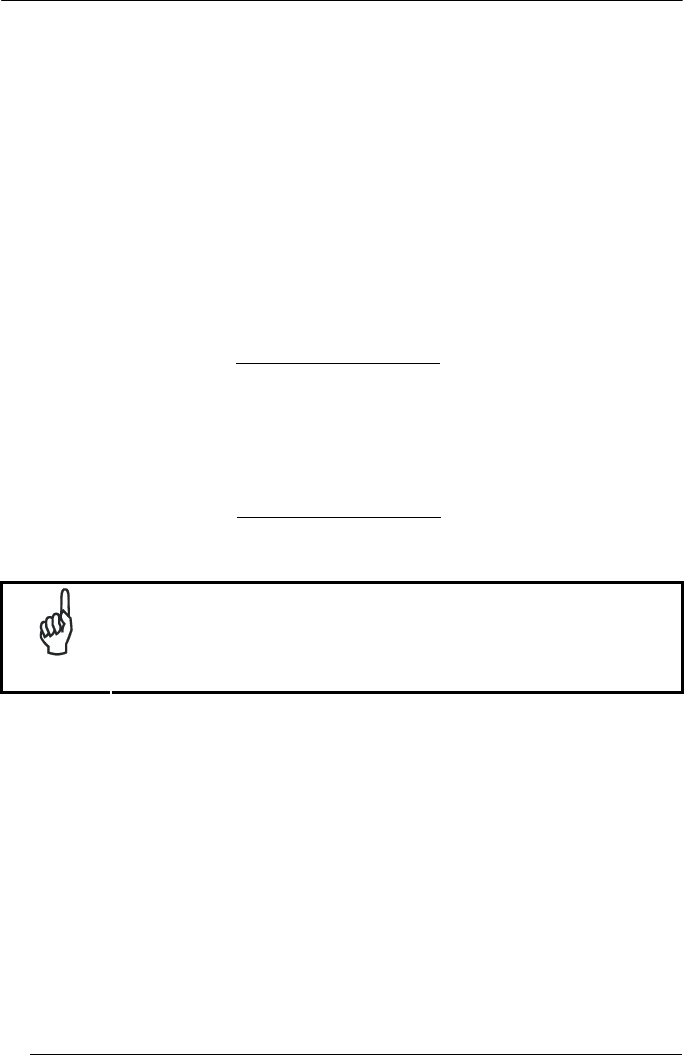
POWERSCAN® D8330/M8300
32
Set Radio Address
6. ÌRF8Î
+
four digits from the Numeric Table in the range 0000-1999.
All readers must have different addresses.
First STAR-System™ Address
7. ÌRSRÎ
Read the code above and the four-digit address of the First STAR-System™
device in the system.
Set Last STAR-System™ Address
8. ÌRTTÎ
Read the code above and the four-digit address of the Last STAR-System™
device in the system.
NOTE
Whenever the system is composed of a single base station, the
first and last base station addresses (steps 7 and 8) must have
the same value.
Exit and Save Configuration
9. Ì$-?Î
END of procedure.
YOUR READER IS NOW READY TO READ BARCODES.
To change the defaults see par. 4.10.
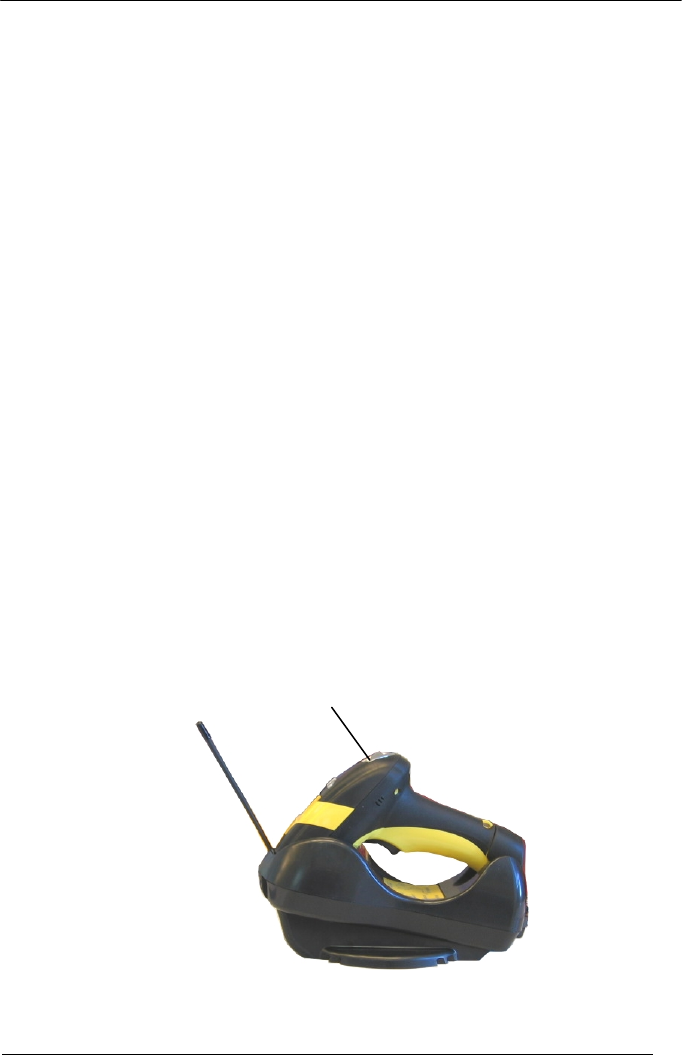
CONFIGURATION
33
4.7 BC-8060 STAR-SYSTEM™ NETWORK SETUP
When the BC-8060 cradle model is used in an RS-485 network, it must be initially
configured. To do this using configuration barcodes, follow the procedure below
using any PowerScan® M8300 reader.
Set BC-8060 Address
1. Ì$+RF4Î
+
four digits for the BC-8060 Address (from 0000 to 1999).
All cradles used in the network must have different addresses.
Exit and Save configuration
2. Ì$-?Î
3. Read the Bind code to pair the PowerScan® M8300 to the BC-8060 cradle for
configuration.
Bind
Ì$+RN0$-IÎ
The green LED on the PowerScan® M8300 will blink; the reader is ready to be
inserted into the cradle.
4. Firmly insert the reader into the BC-8060 cradle within 10 seconds, a beep will
be emitted, signaling that the BC-8060 cradle has been paired to the
PowerScan® M8300, and the green LED on the reader will go off.
green LED
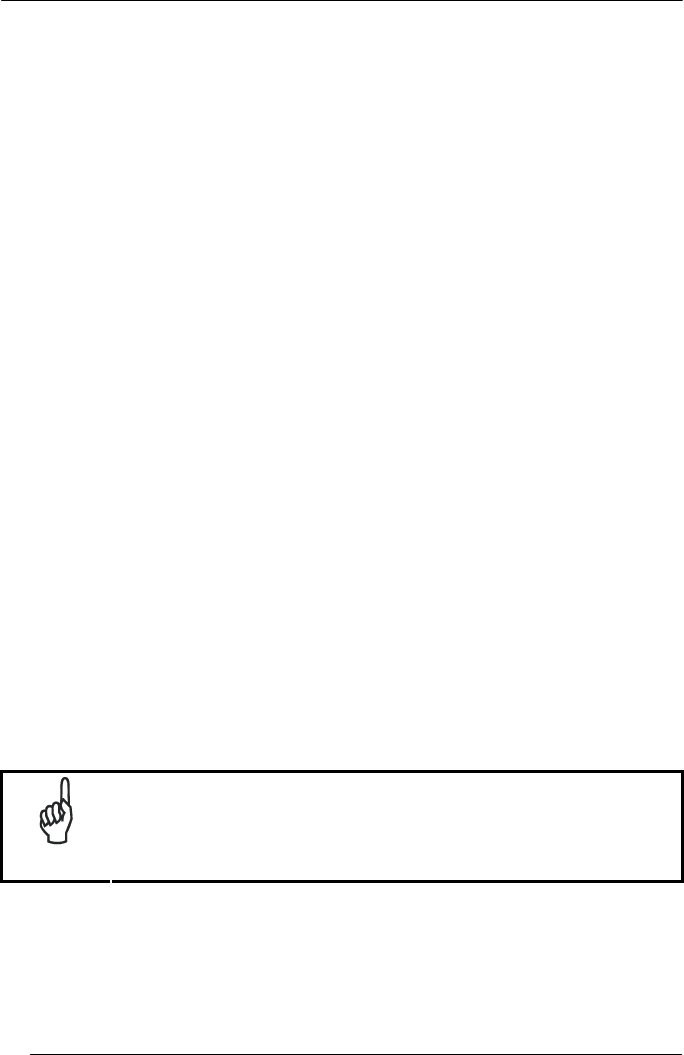
POWERSCAN® D8330/M8300
34
Read the BC-8060 restore default code:
5.
Restore BC-8060 Default
Ì$+RX0$-qÎ
Read the desired Enable Network code.
Enable RS-485 Master
6.
Ì$+RZ2$-ÇÎ
Enable RS-485 Slave
Ì$+RZ1$-~Î
END of procedure.
For Host Master Network Layouts (see par. 3.2), The network configuration
parameters can be changed through STAR-Link™ software running on the PC.
Star-Link™ software can be downloaded for free from the web site:
www.scanning.datalogic.com.
For BC-8060 Master Network Layouts (see par. 3.2), The network configuration
parameters can be changed either through the Datalogic Aladdin™ configuration
software running on the PC or by reading the barcode selections in the Network
section of this manual starting on page 64. If using configuration barcodes, it is
advised to completely configure the cradles before reconfiguring the PowerScan®
M8300 reader (see below).
NOTE
After completing the BC-8060 cradle configuration and
connections in the network, you must reconfigure the
PowerScan® M8300 reader using the STAR-System™ procedure
in par. 4.6.

POWERSCAN® D8330/M8300
36
WEDGE
IBM AT or PS/2 PCs
Ì$+CP500$-aÎ
IBM XT
PC Notebook
Ì$+CP503$-vÎ
Ì$+CP505$-ÈÎ
IBM SURE1
IBM Terminal 3153
Ì$+CP506$-$Î
Ì$+CP504$-}Î
IBM Terminals 31xx, 32xx, 34xx, 37xx:
To select the interface for these IBM Terminals, read the correct KEY TRANSMISSION code.
Select the KEYBOARD TYPE if necessary (default = advanced keyboard).
KEY TRANSMISSION MODE
make-only keyboard
Ì$+CP502$-oÎ
make-break keyboard
Ì$+CP501$-hÎ
KEYBOARD TYPE
advanced keyboard
Ì$+FK1$-ÉÎ
typewriter keyboard
Ì$+FK0$-ÄÎ

CONFIGURATION
37
WEDGE (CONTINUED)
ALT MODE
The ALT-mode selection allows barcodes sent to the PC to be interpreted correctly
independently from the Keyboard Nationality used. You do not need to make a
Keyboard Nationality selection.
(default = Num Lock Unchanged). Make sure the Num Lock key on your
keyboard is ON.
IBM AT - ALT mode
Ì$+CP507$-+Î
PC Notebook - ALT mode
Ì$+CP508$-2Î
WYSE TERMINALS
ANSI Keyboard
Ì$+CP509$-9Î
PC Keyboard
ASCII Keyboard
Ì$+CP510$-gÎ
Ì$+CP511$-nÎ
VT220 style Keyboard
Ì$+CP514$-ÇÎ
DIGITAL TERMINALS
VT2xx/VT3xx/VT4xx
Ì$+CP512$-uÎ
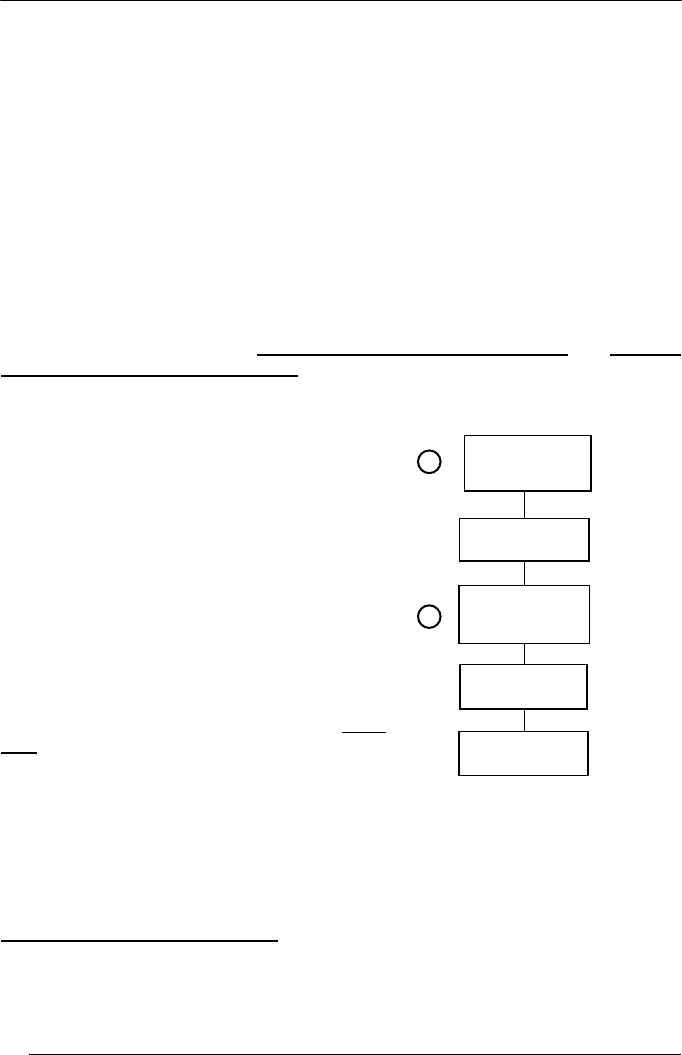
POWERSCAN® D8330/M8300
38
4.9 USB READER CONFIGURATION
The USB interface is available for PowerScan® D8330, BC-80x0 and C-8000 devices
and is compatible with the following Operating Systems:
Windows 98 (and later) IBM POS for Windows
Mac OS 8.0 (and later) 4690 Operating System
USB Start-up
As with all USB devices, upon connection, the Host performs several checks by
communicating with the device. During this phase normal operations are suspended
(the LED on the PowerScan® D8330 reader blinks). Two basic conditions must be
met before the device is ready, the correct USB driver must be loaded and sufficient
power must be supplied to the reader.
c For all systems, the correct USB driver for the
default USB-KBD interface is included in the Host
Operating System and will either be loaded
automatically or will be suggested by the O.S.
and should therefore be selected from the dialog
box (the first time only).
Normally the Host supplies sufficient power to
the device and the start-up phase ends
correctly. (The reader's LED stops blinking and
the reader emits the beep OK signal).
In rare cases, if the Host does not supply
sufficient power to the device, a dialog box will
appear on the Host and the device will be
blocked (the reader's LED continues blinking). In
this case, disconnect the USB device cable at the
Host (the reader's LED stops blinking), and then
try a different USB port as indicated by the
Operating System message. (The device emits
the beep OK signal. You can now read codes).
d At this point you can read the USB interface configuration code according to your
application. Load drivers from the O.S. (if requested). When configuring the
USB-COM interface, the relevant files and drivers must be installed from the USB
Device Installation software, which can be downloaded from the web page
http://www.scanning.datalogic.com.
The device is ready. Successive start-ups will automatically recognize the previously
loaded drivers.
Connect device to
Host
Select desired USB
interface code
(USB-KBD is default)
Read test codes.
Device is READY
Load drivers
(if requested)
Load drivers
(
if re
q
uested
)
reader LED blinks
reader LED off - BEEP OK
First Start-Up
1
2

CONFIGURATION
39
USB
USB-KBD
Ì$+UA03$-:Î
USB-KBD-ALT-MODE
Ì$+UA04$-@Î
USB-KBD-APPLE
Ì$+UA05$-FÎ
USB-COM*
Ì$+UA02$-4Î
USB-IBM-Table Top
Ì$+UA00$-(Î
USB-IBM-Hand Held
Ì$+UA01$-.Î
* When configuring USB-COM, the relevant files and drivers must be installed from
the USB Device Installation software, which can be downloaded from the web site
http://www.scanning.datalogic.com.

POWERSCAN® D8330/M8300
40
4.10 CHANGING DEFAULT SETTINGS
Once your reader is setup, you can change the default parameters to meet your
application needs. Refer to the preceding paragraphs for initial configuration in order
to set the default values and select the interface for your application.
In this manual, the configuration parameters are divided into logical groups making it
easy to find the desired function based on its reference group.
The first four groups are for Standard Interface parameter configuration for all
PowerScan® D8330 series readers and PowerScan® M8300/BC-80X0 Stand-alone
configurations only:
RS-232
USB
WEDGE
PEN EMULATION
NETWORK PARAMETERS are available only for BC-8060 Network configurations.
The following parameter groups are common to all interface applications:
DATA FORMAT parameters regard the messages sent to the Host system for all
interfaces except Pen Emulation.
POWER SAVE manages overall current consumption in the reading device.
READING PARAMETERS control various operating modes and indicator status
functioning.
DECODING PARAMETERS maintain correct barcode decoding in certain special
reading conditions.
CODE SELECTION parameters allow configuration of a personalized mix of codes,
code families and their options.
ADVANCED FORMATTING PARAMETERS allow code concatenation and
advanced formatting of messages towards the Host. It cannot be used with Pen
Emulation connections.
RADIO PARAMETERS (M8300 series only) allow configuration of radio control
parameters.
DISPLAY PARAMETERS (some M8300 series models only) allow configuration of
reader display parameters.
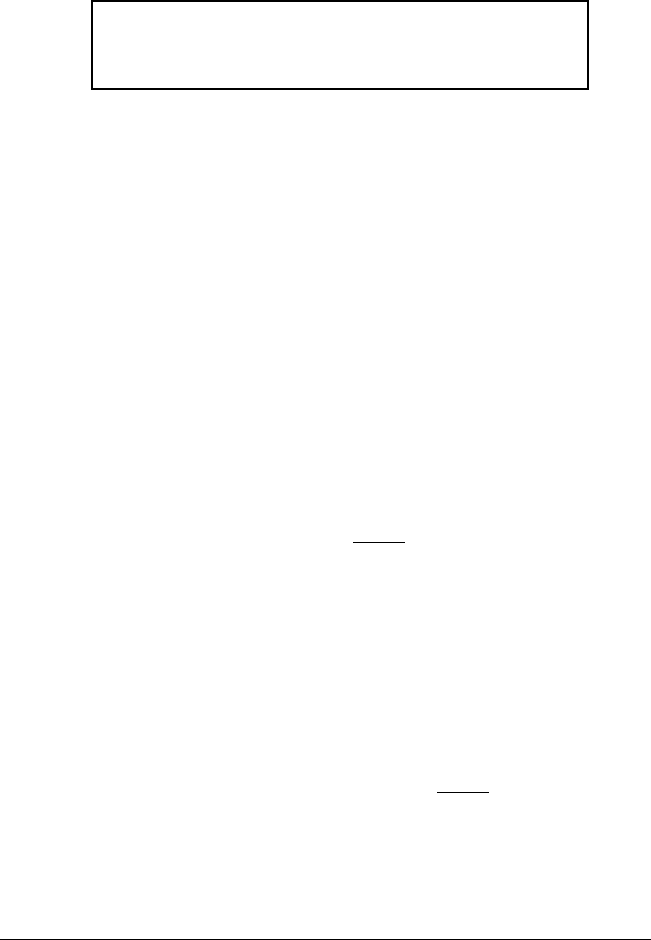
41
RS-232 PARAMETERS
All PowerScan® D8330 Series readers
+
PowerScan® M8300/BC-80X0 configurations only
~
B
AUD
R
ATE
~
~
P
ARITY
~
~
D
ATA
B
ITS
~
~
S
TOP
B
ITS
~
~
H
ANDSHAKING
~
~
A
CK
/N
ACK
P
ROTOCOL
~
~
F
IFO
~
~
I
NTER
-
CHARACTER
D
ELAY
~
~
R
X
T
IMEOUT
~
~
S
ERIAL
T
RIGGER
L
OCK
~
1. Read the Enter Configuration code ONCE, available at the top of each page.
2. Read configuration codes from the desired groups.
= Read the code and follow the procedure given
= Default value
3. Read the Exit and Save Configuration code ONCE, available at the top of
each page.
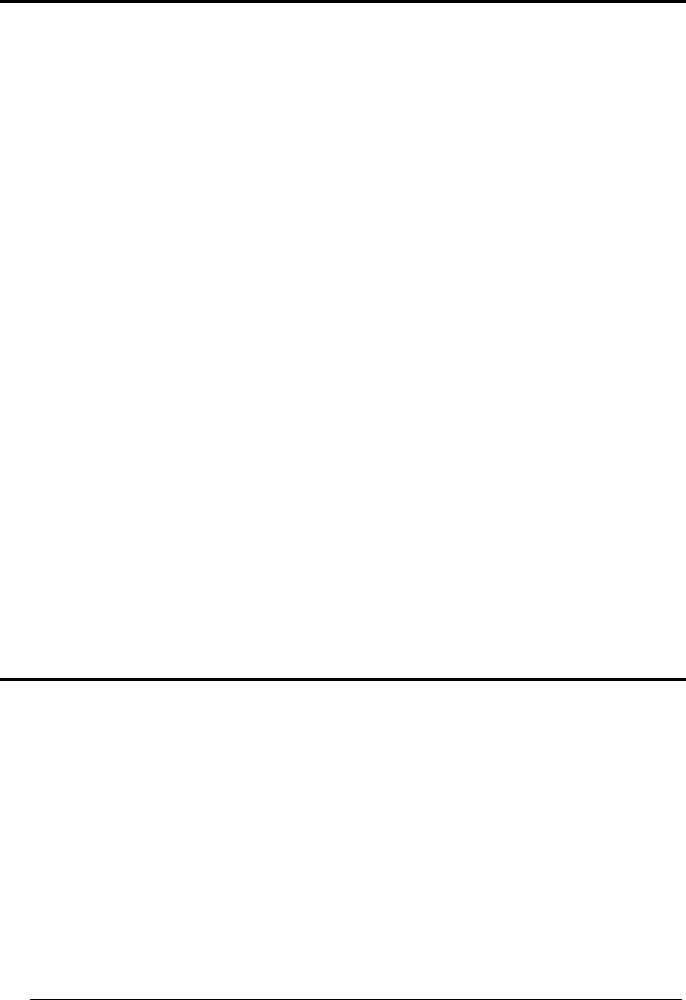
Enter Configuration Exit and Save Configuration
Ì$+;Î
RS-232
Ì$
-
?Î
42
B
AUD
R
ATE
300 baud
ÌCD1XÎ
600 baud
1200 baud
ÌCD2[Î
ÌCD3^Î
2400 baud
4800 baud
ÌCD4aÎ
ÌCD5dÎ
9600 baud
19200 baud
ÌCD6gÎ
ÌCD7jÎ
38400 baud
ÌCD8mÎ
P
ARITY
none
ÌCC0SÎ
even parity
odd parity
ÌCC1VÎ
ÌCC2YÎ
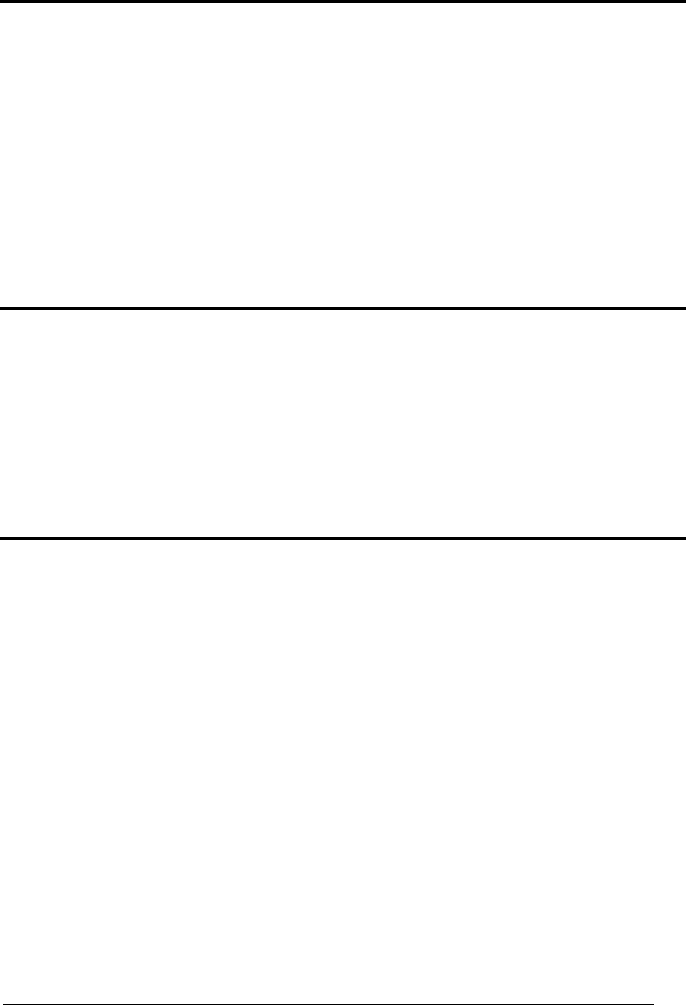
Enter Configuration Exit and Save Configuration
Ì$+;Î
RS-232
Ì$
-
?Î
43
D
ATA
B
ITS
7 bits
ÌCA0OÎ
8 bits
9 bits
ÌCA1RÎ
ÌCA2UÎ
S
TOP
B
ITS
1 stop bit
ÌCB0QÎ
2 stop bits
ÌCB1TÎ
H
ANDSHAKING
disable
ÌCE0WÎ
hardware (RTS/CTS)
software (XON/XOFF)
ÌCE1ZÎ
ÌCE2]Î
RTS always ON
ÌCE3`Î
See par. 5.1.1 for details.
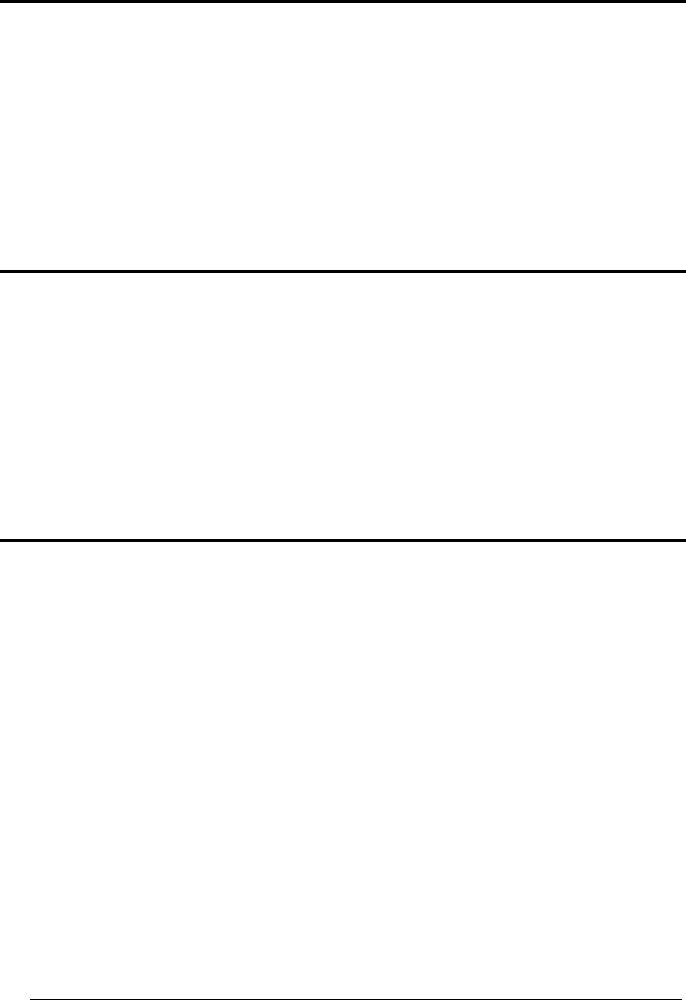
Enter Configuration Exit and Save Configuration
Ì$+;Î
RS-232
Ì$
-
?Î
44
A
CK
/N
ACK
P
ROTOCOL
disable
ÌER0sÎ
enable
ÌER1vÎ
See par. 5.1.2 for details, particularly on implementing this parameter with PowerScan® M8300.
FIFO
disable
ÌEC0UÎ
enable
ÌEC1XÎ
See par. 5.1.3 for details.
I
NTER
-
CHARACTER
D
ELAY
delay between characters transmitted to Host
ÌCK3Î
Read 2 numbers from the table where:
00 = DELAY disabled
01-99 = DELAY from 1 to 99 milliseconds
delay disabled

Enter Configuration Exit and Save Configuration
Ì$+;Î
RS-232
Ì$
-
?Î
45
R
X
T
IMEOUT
timeout control in reception from Host
ÌCL5Î
Read 2 numbers from the table where:
00 = TIMEOUT disabled
01-99 = TIMEOUT from .1 to 9.9 seconds
rx timeout 5 seconds
See par. 5.1.4 for details.
S
ERIAL
T
RIGGER
L
OCK
disabled
ÌCR0qÎ
enable and select characters
ÌCR1tÎ
Read 2 characters from the Hex/Numeric table in the range 00-FE where:
− First Character enables device trigger
− Second Character inhibits device trigger until the first character is received again.

46
USB PARAMETERS
~
USB-COM
Handshaking, Ack/Nack protocol, FIFO,
Inter-character delay, Rx timeout, Serial
trigger lock
~
~
USB-KBD
Keyboard nationality, FIFO, Inter-character
delay, Inter-code delay, USB keyboard
speed
~
~
USB-IBM
No parameter selection required.
~
1. Read the Enter Configuration code ONCE, available at the top of each page.
2. Read configuration codes from the desired groups.
= Read the code and follow the procedure given
= Default value
3. Read the Exit and Save Configuration code ONCE, available at the top of
each page.
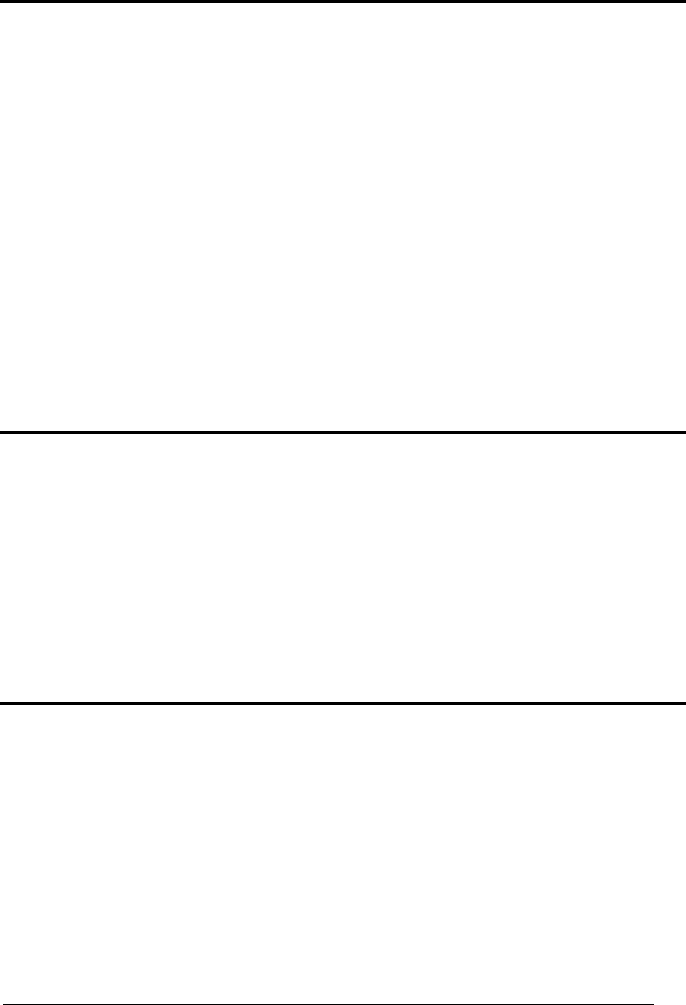
Enter Configuration Exit and Save Configuration
Ì$+;Î
USB-COM
Ì$
-
?Î
47
H
ANDSHAKING
disable
ÌCE0WÎ
hardware (RTS/CTS)
software (XON/XOFF)
ÌCE1ZÎ
ÌCE2]Î
RTS always ON
ÌCE3`Î
See par. 5.1.1 for details.
A
CK
/N
ACK
P
ROTOCOL
disable
ÌER0sÎ
enable
ÌER1vÎ
See par. 5.1.2 for details, particularly on implementing this parameter with PowerScan® M8300.
FIFO
disable
ÌEC0UÎ
enable
ÌEC1XÎ
See par. 5.1.3 for details.
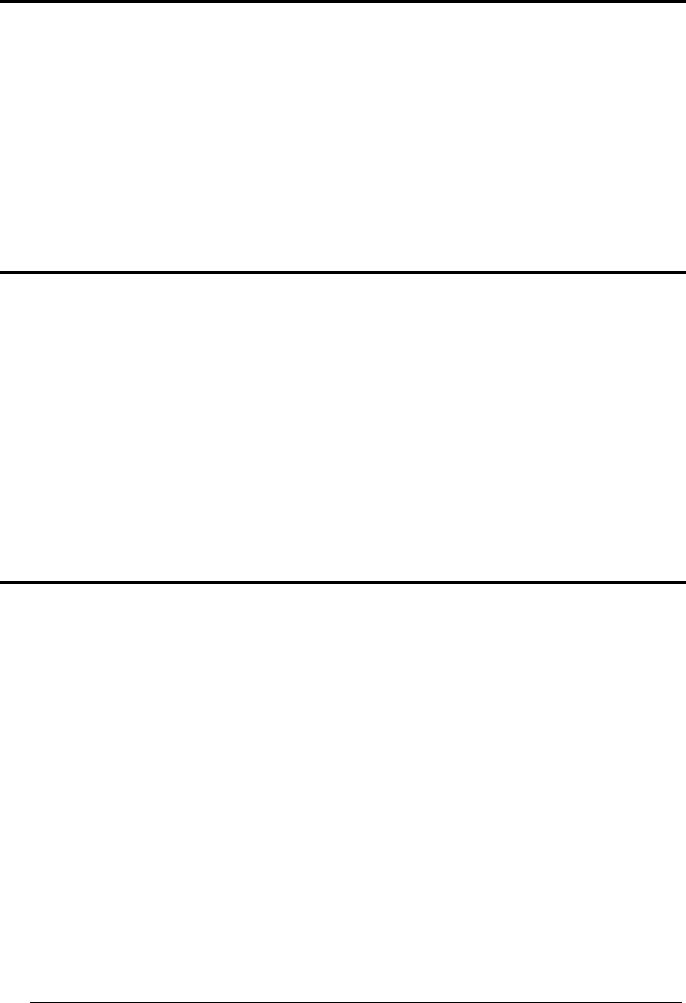
Enter Configuration Exit and Save Configuration
Ì$+;Î
USB-COM
Ì$
-
?Î
48
I
NTER
-
CHARACTER
D
ELAY
delay between characters transmitted to Host
ÌCK3Î
Read 2 numbers from the table where:
00 = DELAY disabled
01-99 = DELAY from 1 to 99 milliseconds
delay disabled
R
X
T
IMEOUT
timeout control in reception from Host
ÌCL5Î
Read 2 numbers from the table where:
00 = TIMEOUT disabled
01-99 = TIMEOUT from .1 to 9.9 seconds
rx timeout 5 seconds
See par. 5.1.4 for details.
S
ERIAL
T
RIGGER
L
OCK
disabled
ÌCR0qÎ
enable and select characters
ÌCR1tÎ
Read 2 characters from the Hex/Numeric table in the range 00-FE where:
− First Character enables device trigger
− Second Character inhibits device trigger until the first character is received again.

Enter Configuration Exit and Save Configuration
Ì$+;Î
USB-KBD
Ì$
-
?Î
49
K
EYBOARD
N
ATIONALITY
Not Available for USB-KBD-ALT-MODE Interface
This parameter default value is restored through the Interface Selection code and not Restore
Default.
Belgian
ÌFJ7yÎ
English (UK)
French
ÌFJ4pÎ
ÌFJ2jÎ
German
Italian
ÌFJ3mÎ
ÌFJ1gÎ
Spanish
Swedish
ÌFJ6vÎ
ÌFJ5sÎ
USA
ÌFJ0dÎ

Enter Configuration Exit and Save Configuration
Ì$+;Î
USB-KBD
Ì$
-
?Î
50
The Japanese and Eastern Block Keyboard Nationality selections are valid only for IBM AT
compatible PCs.
Japanese
ÌFJ8|Î
Russian (Latin)
Russian (Cyrillic)
ÌFJ9ÃÎ
ÌFJA0Î
Hungarian
Slovenian, Croatian,
Serbian (Latin)
ÌFJB3Î
ÌFJC6Î
Romanian
Czech Republic
ÌFJD9Î
ÌFJE<Î
FIFO
disable
ÌEC0UÎ
enable
ÌEC1XÎ
See par. 5.1.3 for details.
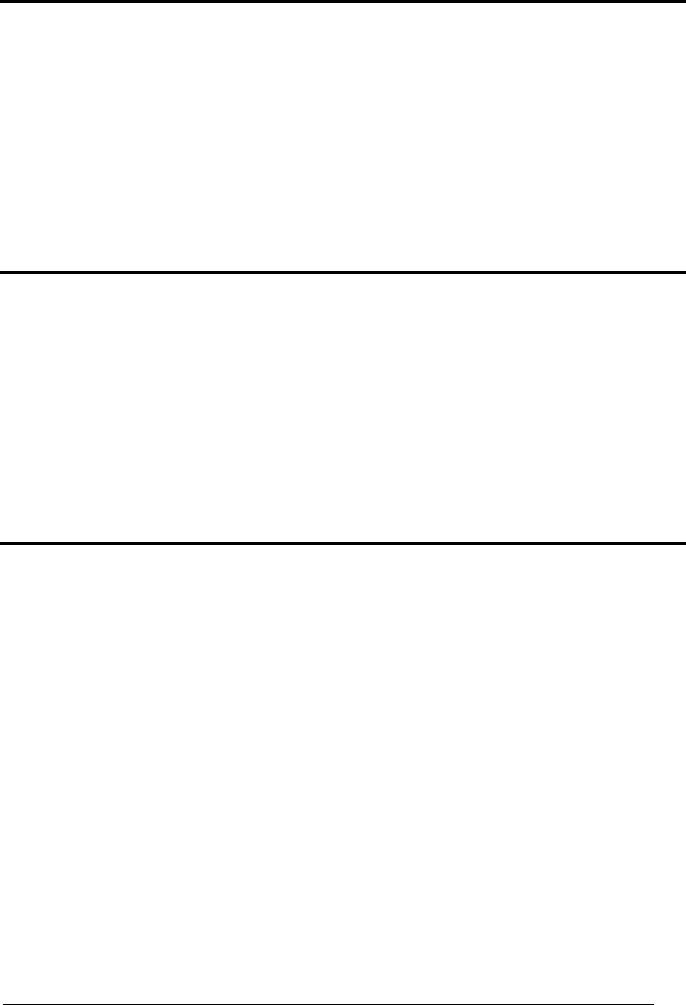
Enter Configuration Exit and Save Configuration
Ì$+;Î
USB-KBD
Ì$
-
?Î
51
I
NTER
-
CHARACTER
D
ELAY
delay between characters transmitted to Host
ÌCK3Î
Read 2 numbers from the table where:
00 = DELAY disabled
01-99 = DELAY from 1 to 99 milliseconds
delay disabled
I
NTER
-
CODE
D
ELAY
delay between codes transmitted to Host
ÌFG.Î
Read 2 numbers from the table where:
00 = DELAY disabled
01-99 = DELAY from 1 to 99 seconds
delay disabled
USB
K
EYBOARD
S
PEED
Normal
ÌUT10cÎ
Fast
ÌUT01dÎ
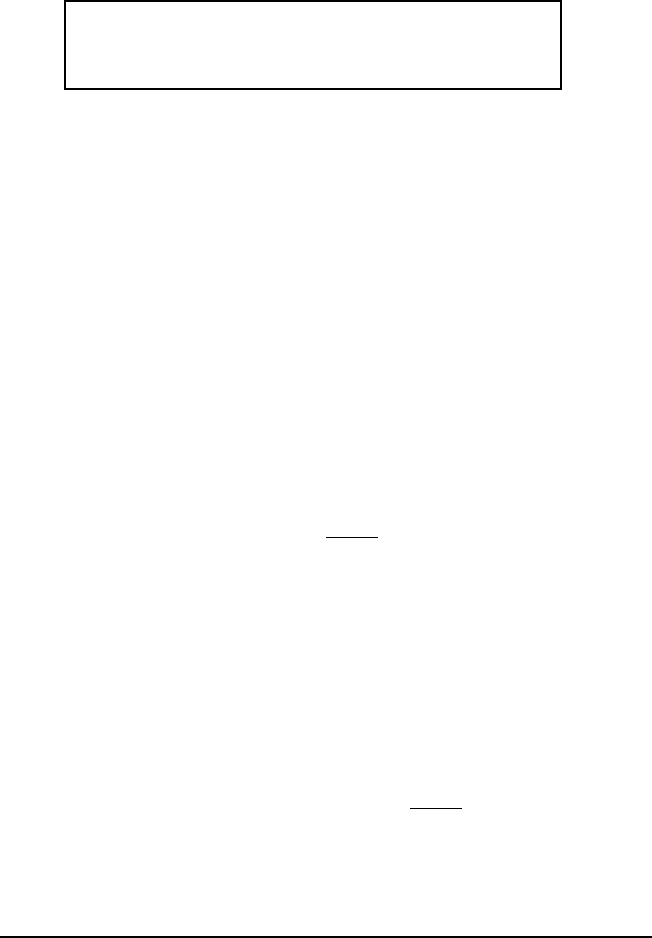
52
WEDGE PARAMETERS
All PowerScan® D8330 Series readers
+
PowerScan® M8300/BC-80X0 configurations only
~
K
EYBOARD
N
ATIONALITY
~
~
C
APS
L
OCK
~
~
C
APS
L
OCK
A
UTO
-
RECOGNITION
~
~
N
UM
L
OCK
~
~
I
NTER
-
CHARACTER
D
ELAY
~
~
I
NTER
-
CODE
D
ELAY
~
~
K
EYBOARD
S
ETTING
~
~
W
EDGE
C
ONTROL
C
HARACTER
E
MULATION
~
1. Read the Enter Configuration code ONCE, available at the top of each page.
2. Read configuration codes from the desired groups.
= Read the code and follow the procedure given
= Default value
3. Read the Exit and Save Configuration code ONCE, available at the top of
each page.

Enter Configuration Exit and Save Configuration
Ì$+;Î
WEDGE
Ì$
-
?Î
53
K
EYBOARD
N
ATIONALITY
Belgian
ÌFJ7yÎ
English (UK)
French
ÌFJ4pÎ
ÌFJ2jÎ
German
Italian
ÌFJ3mÎ
ÌFJ1gÎ
Spanish
Swedish
ÌFJ6vÎ
ÌFJ5sÎ
USA
ÌFJ0dÎ

Enter Configuration Exit and Save Configuration
Ì$+;Î
WEDGE
Ì$
-
?Î
54
The Japanese and Eastern Block Keyboard Nationality selections are valid only for IBM AT
compatible PCs.
Japanese
ÌFJ8|Î
Russian (Latin)
Russian (Cyrillic)
ÌFJ9ÃÎ
ÌFJA0Î
Hungarian
Slovenian, Croatian,
Serbian (Latin)
ÌFJB3Î
ÌFJC6Î
Romanian
Czech Republic
ÌFJD9Î
ÌFJE<Î
C
APS
L
OCK
caps lock OFF
ÌFE0ZÎ
caps lock ON
ÌFE1]Î
Select the appropriate code to match your keyboard caps lock status.
Note: Caps lock manual configuration is ignored when Caps Lock Auto-Recognition is
enabled.
For PC Notebook interface selections, the caps lock status is automatically recognized;
therefore this command is not necessary.
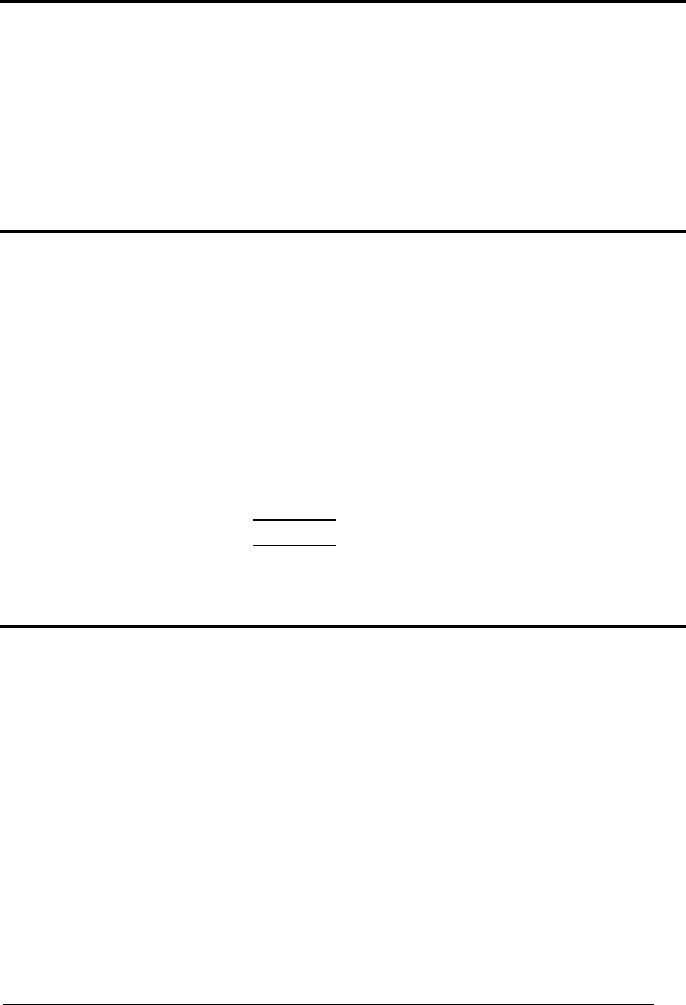
Enter Configuration Exit and Save Configuration
Ì$+;Î
WEDGE
Ì$
-
?Î
55
C
APS
L
OCK
A
UTO
-R
ECOGNITION
(IBM
AT
COMPATIBLE ONLY
)
disable
ÌFP0pÎ
enable
ÌFP1sÎ
N
UM
L
OCK
toggle num lock
ÌFL1kÎ
num lock unchanged
ÌFL0hÎ
This selection is used together with the Alt Mode interface selection for AT or Notebook PCs.
It changes the way the Alt Mode procedure is executed; therefore it should be set as follows:
• if your keyboard Num Lock is normally on use num lock unchanged
• if your keyboard Num Lock is normally off use toggle num lock
In this way the device will execute the Alt Mode procedure correctly for your application.
I
NTER
-
CHARACTER
D
ELAY
delay between characters transmitted to Host
ÌCK3Î
Read 2 numbers from the table where:
00 = DELAY disabled
01-99 = DELAY from 1 to 99 milliseconds
delay disabled
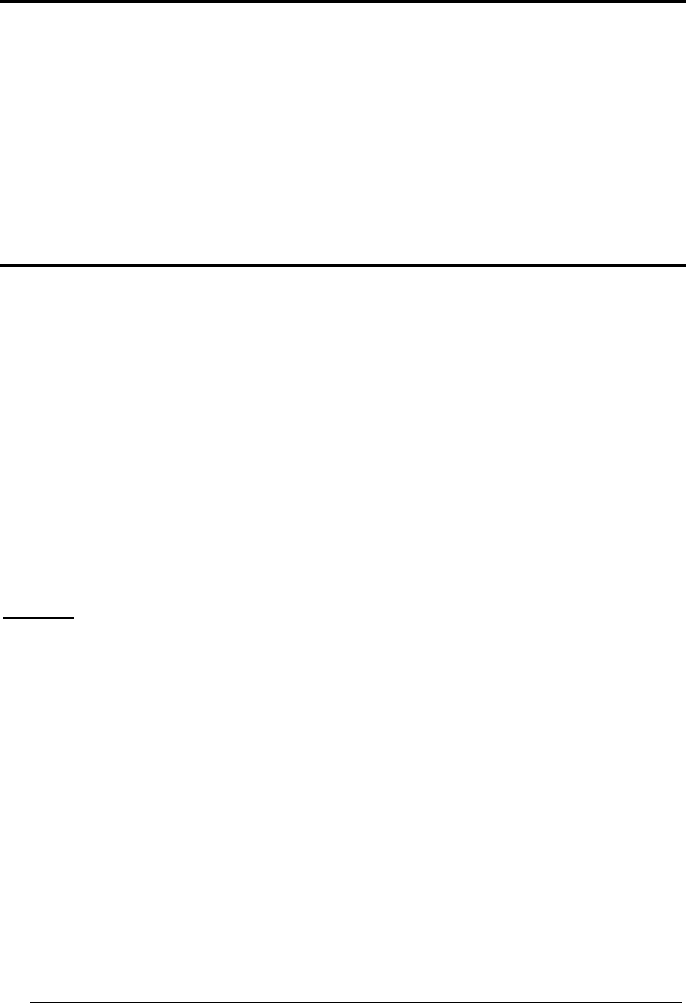
Enter Configuration Exit and Save Configuration
Ì$+;Î
WEDGE
Ì$
-
?Î
56
I
NTER
-
CODE
D
ELAY
delay between codes transmitted to Host
ÌFG.Î
Read 2 numbers from the table where:
00 = DELAY disabled
01-99 = DELAY from 1 to 99 seconds
delay disabled
K
EYBOARD
S
ETTING
ALPHANUMERIC KEYBOARD SETTING
The device (reader or cradle) can be used with terminals or PCs with various keyboard types
and nationalities through a simple keyboard setting procedure.
The type of computer or terminal must be selected before activating the keyboard setting
command.
Keyboard setting consists of communicating to the device how to send data corresponding to
the keyboard used in the application. The keys must be set in a specific order.
Press and release a key to set it.
Some characters may require more than one key pressed simultaneously during normal use
(refer to the manual of your PC or terminal for keyboard use). The exact sequence must be
indicated to the reader in this case pressing and releasing the different keys.
Example:
If one has to press the "Shift" and "4" keys simultaneously on the keyboard to transmit the
character "$" to the video, to set the "$", press and release "Shift" then press and release "4".
Each pressed and released key must generate an acoustic signal on the device;
otherwise repress the key. Never press more than one key at the same time, even if this
corresponds to the normal use of your keyboard.
Press "Backspace" to correct a wrong key entry. In this case the device emits 2 beeps.
Note: "CAPS LOCK" and "NUM LOCK" must be off before starting the keyboard setting
procedure. "SHIFT" must be repressed for each character and cannot be substituted by "CAPS
LOCK".
setting the alphanumeric keyboard
ÌFB0TÎ
Read the code above.
Press the keys shown in the following table according to their numerical order.
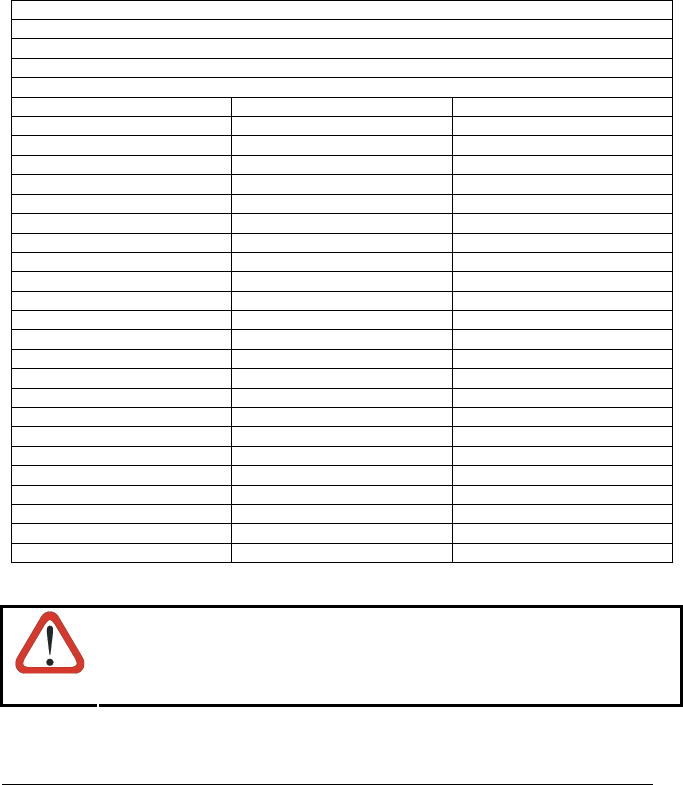
WEDGE
57
Some ASCII characters may be missing as this depends on the type of keyboard: these are
generally particular characters relative to the various national symbologies. In this case:
• The first 4 characters (Shift, Alt, Ctrl, and Backspace) can only be substituted with
keys not used, or substituted with each other.
• characters can be substituted with other single symbols (e.g. "SPACE") even if not
included in the barcode set used.
• characters can be substituted with others corresponding to your keyboard.
The device signals the end of the procedure with 2 beeps indicating the keys have been
registered.
01 : Shift
02 : Alt
03 : Ctrl
04 : Backspace
05 : SPACE 28 : 7 51 : N
06 : ! 29 : 8 52 : O
07 : " 30 : 9 53 : P
08 : # 31 : : 54 : Q
09 : $ 32 : ; 55 : R
10 : % 33 : < 56 : S
11 : & 34 : = 57 : T
12 : ' 35 : > 58 : U
13 : ( 36 : ? 59 : V
14 : ) 37 : @ 60 : W
15 : * 38 : A 61 : X
16 : + 39 : B 62 : Y
17 : , 40 : C 63 : Z
18 : - 41 : D 64 : [
19 : . 42 : E 65 : \
20 : / 43 : F 66 : ]
21 : 0 44 : G 67 : ^
22 : 1 45 : H 68 : _ (underscore)
23 : 2 46 : I 69 : `
24 : 3 47 : J 70 : {
25 : 4 48 : K 71 : |
26 : 5 49 : L 72 : }
27 : 6 50 : M 73 : ~
74 : DEL
CAUTION
Do not place the reader onto the BC-80X0 cradle during this procedure.
Otherwise, the battery charging will occur modifying the LEDs functioning.

Enter Configuration Exit and Save Configuration
Ì$+;Î
WEDGE
Ì$
-
?Î
58
C
ONTROL
C
HARACTER
E
MULATION
Ctrl + Shift + Key
ÌFO0nÎ
Ctrl + Key
ÌFO1qÎ

59
PEN EMULATION
All PowerScan® D8330 Series readers
+
PowerScan® M8300/BC-80X0 configurations only
~
O
PERATING
M
ODE
~
~
M
INIMUM
O
UTPUT
P
ULSE
~
~
C
ONVERSION TO
C
ODE
39
~
~
O
VERFLOW
~
~
O
UTPUT
L
EVEL
~
~
I
DLE
L
EVEL
~
~
I
NTER
-B
LOCK
D
ELAY
~
1. Read the Enter Configuration code ONCE, available at the top of each page.
2. Read configuration codes from the desired groups.
= Default value
3. Read the Exit and Save Configuration code ONCE, available at the top of
each page.
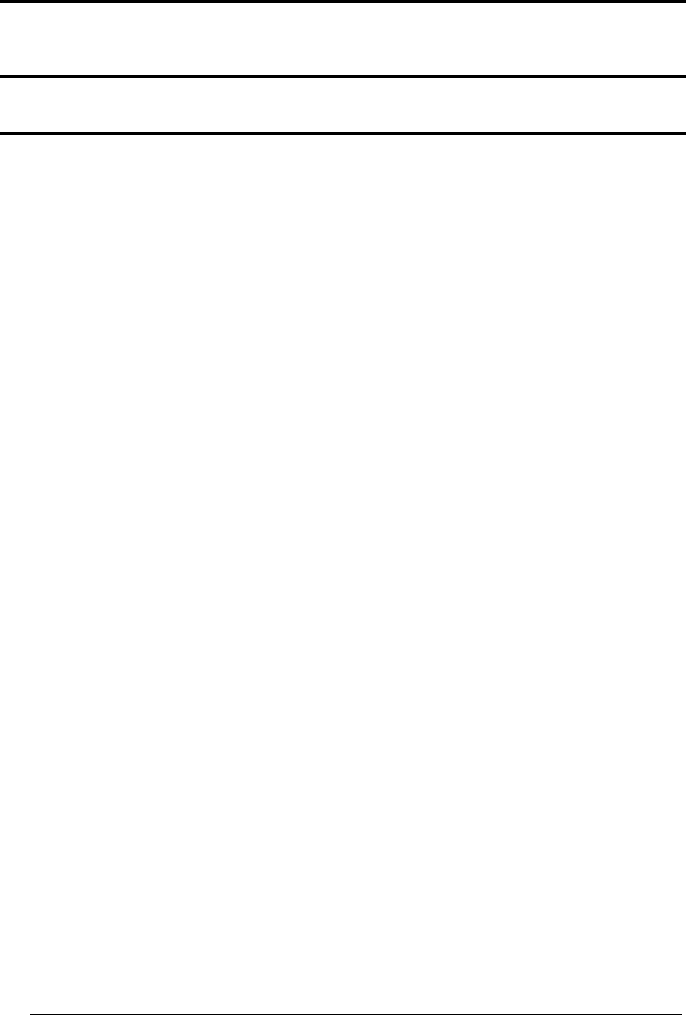
PEN EMULATION
60
The operating mode parameters are complete commands and do not require reading the
Enter and Exit configuration codes.
O
PERATING
M
ODE
interpret mode
Ì$]8Î
Interprets commands without sending them to the decoder.
transparent mode
Ì$[4Î
Sends commands to the decoder without interpreting them.
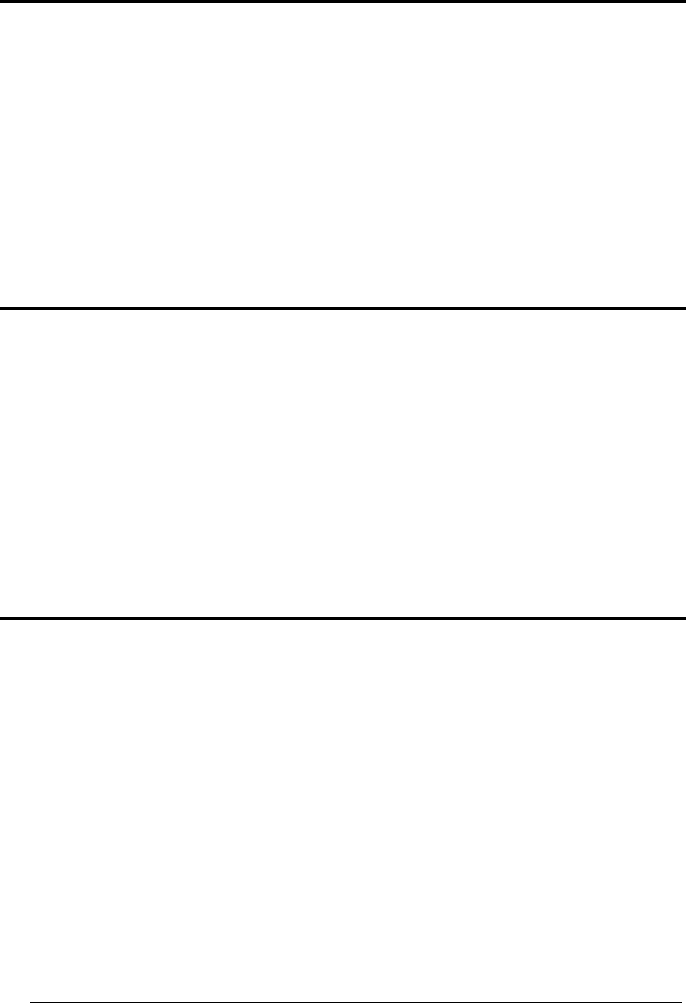
Enter Configuration Exit and Save Configuration
Ì$+;Î
PEN EMULATION
Ì$
-
?Î
62
C
ONVERSION TO
C
ODE
39
(D8330
S
ERIES
O
NLY
)
disable conversion to Code 39
ÌDA0PÎ
Transmits codes in their original
format.
enable conversion to Code 39
ÌDA1SÎ
Converts codes read into
Code 39 format.
See par. 5.2.2 for details.
C
ONVERSION TO
C
ODE
39
AND
C
ODE
128
(M8300
S
ERIES
O
NLY
)
enable conversion to Code 39
ÌDA1SÎ
Converts codes read into Code
39 format.
enable conversion to Code 128
ÌDA0PÎ
Converts codes read into Code
128 format.
See par. 5.2.2 for details.
O
VERFLOW
narrow
ÌDH0^Î
medium
wide
ÌDH1aÎ
ÌDH2dÎ
See par. 5.2.3 for details.
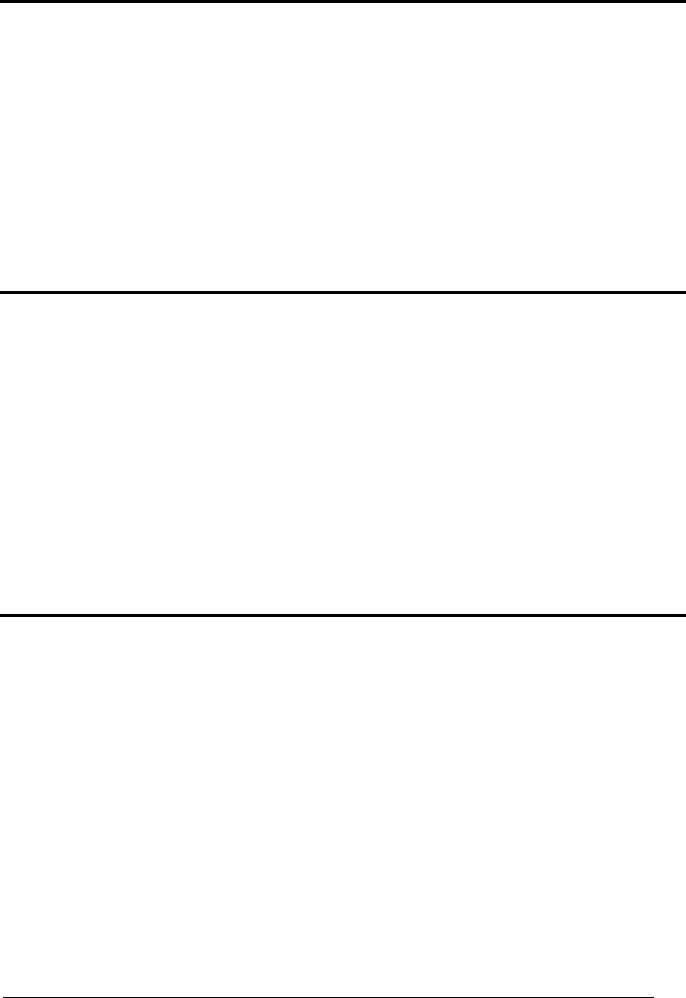
Enter Configuration Exit and Save Configuration
Ì$+;Î
PEN EMULATION
Ì$
-
?Î
63
O
UTPUT
L
EVEL
normal
ÌDD0VÎ
(white = logic level 0)
inverted
ÌDD1YÎ
(white = logic level 1)
See par. 5.2.4 for details.
I
DLE
L
EVEL
normal
ÌDE0XÎ
(black level)
inverted
ÌDE1[Î
(white level)
See par. 5.2.4 for details.
I
NTER
-B
LOCK
D
ELAY
delay between character blocks transmitted to Host
ÌCK3Î
Read 2 numbers from the table where:
00 = DELAY disabled
01-99 = DELAY from .1 to 9.9 seconds
delay disabled
See par. 5.2.5 for details.
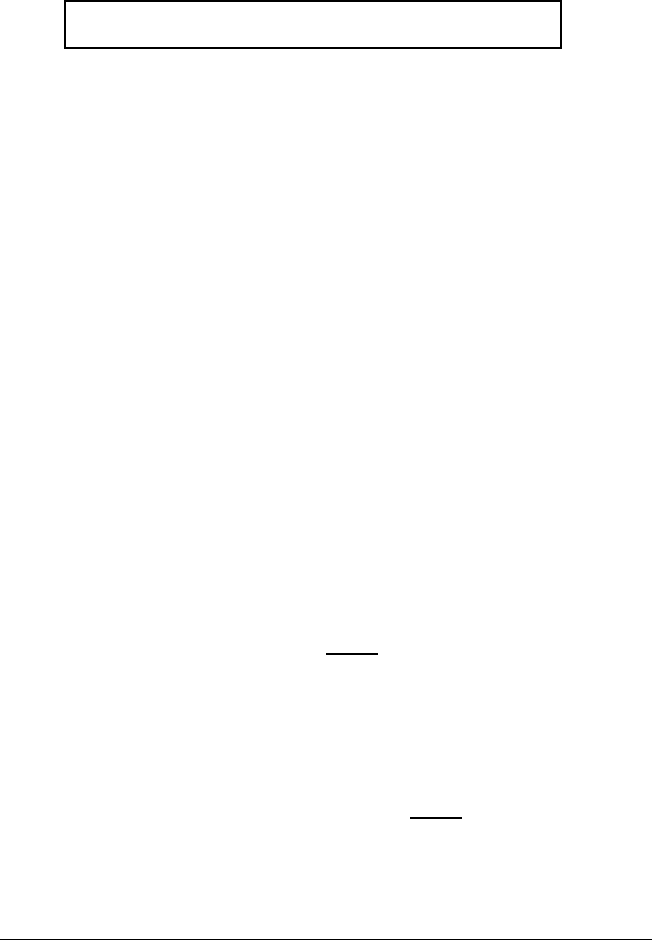
64
NETWORK PARAMETERS
BC-8060 model configurations only
~
RS-485
N
ETWORK
~
~
N
ETWORK
B
AUD
R
ATE
~
~
S
LAVE
A
DDRESS
R
ANGE
~
~
N
ETWORK
W
ARNING
M
ESSAGE
~
~
R
ECEPTION
W
ARNING
M
ESSAGE
~
~
M
ASTER
C
RADLE
H
EADER
~
~
M
ASTER
C
RADLE
T
ERMINATOR
~
1. Read the Enter Configuration code ONCE, available at the top of each page.
2. Read configuration codes from the desired groups.
3. Read the Exit and Save Configuration code ONCE, available at the top of
each page.
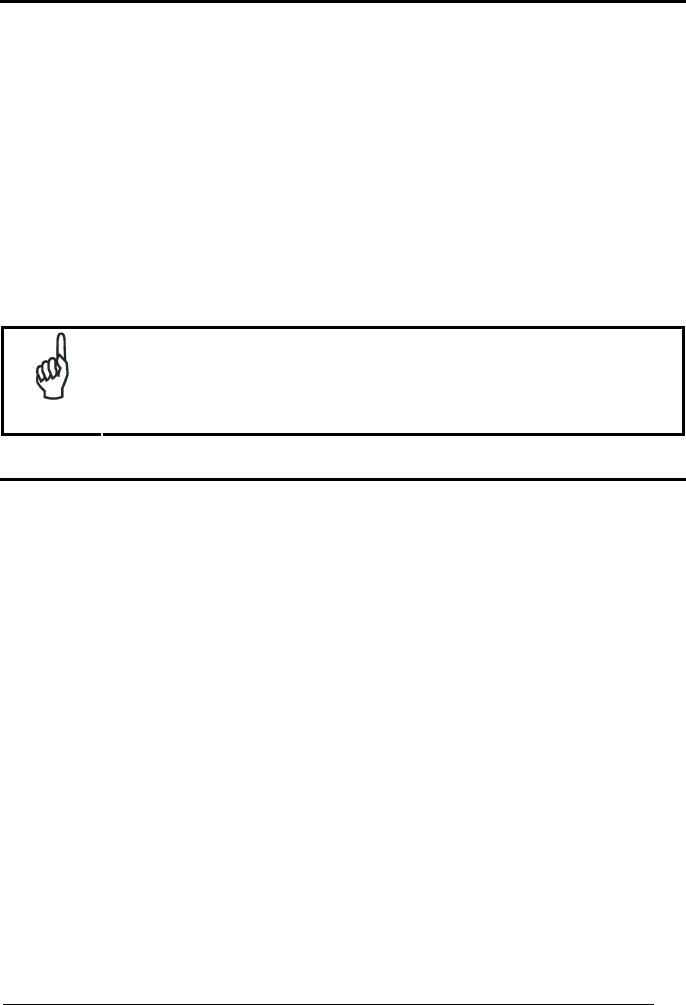
Enter Configuration Exit and Save Configuration
Ì$+;Î
NETWORK PARAMETERS
Ì$
-
?Î
65
RS-485
N
ETWORK
disable RS-485 network
ÌRZ0)Î
enable RS-485 slave
enable RS-485 master
ÌRZ1,Î
ÌRZ2/Î
See par. 3.2 for details.
NOTE
If a BC-8060 cradle is errantly configured as a Slave but not connected to a
network, it may not be able to receive further commands from the reader. In
this case it can be reconfigured by executing the bind procedure, which
returns the cradle to Stand-alone configuration.
N
ETWORK
B
AUD
R
ATE
9600
ÌJE0^Î
19200
38400
ÌJE1aÎ
ÌJE2dÎ
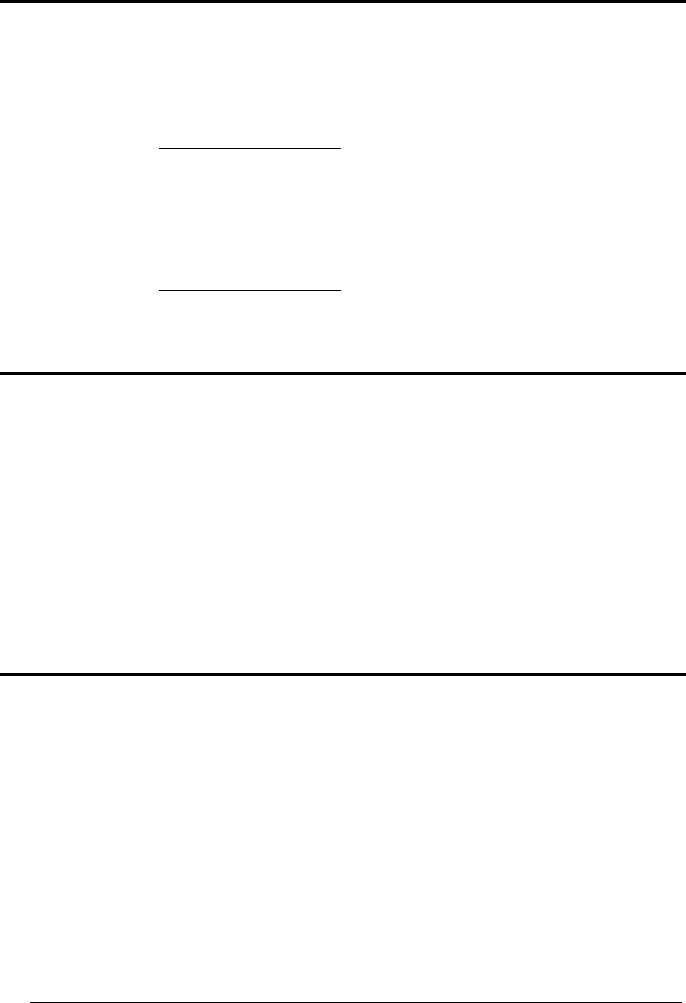
Enter Configuration Exit and Save Configuration
Ì$+;Î
NETWORK PARAMETERS
Ì$
-
?Î
66
S
LAVE
A
DDRESS
R
ANGE
First Address
ÌJB(Î
Read the code above and the four-digit address of the First Slave device in the system.
Last Address
ÌJC*Î
Read the code above and the four-digit address of the Last Slave device in the system.
See par. 5.3.1 for details.
N
ETWORK
W
ARNING
M
ESSAGE
network warning
message not transmitted
ÌJG0bÎ
network warning message
transmitted
ÌJG1eÎ
See par. 5.3.2 for details.
R
ECEPTION
W
ARNING
M
ESSAGE
reception warning message
not transmitted
ÌJH0dÎ
reception warning
message transmitted
ÌJH1gÎ
See par. 5.3.3 for details.

Enter Configuration Exit and Save Configuration
Ì$+;Î
NETWORK PARAMETERS
Ì$
-
?Î
67
M
ASTER
C
RADLE
H
EADER
no header
ÌJA00/Î
one character header
two character header
ÌJA013Î
ÌJA027Î
three character header
four character header
ÌJA03;Î
ÌJA04?Î
five character header
six character header
ÌJA05CÎ
ÌJA06GÎ
seven character header
eight character header
ÌJA07KÎ
ÌJA08OÎ
After selecting one of the desired Header codes, read the character(s) from the HEX table.
Valid characters are in the range: 00-FE
Example:
four character header + 41 + 42 + 43 + 44 = Header ABCD
For more details about default and WEDGE Interface Extended Keyboard values, see
par. 5.3.4, 5.4.1 and 5.4.2.

Enter Configuration Exit and Save Configuration
Ì$+;Î
NETWORK PARAMETERS
Ì$
-
?Î
68
M
ASTER
C
RADLE
T
ERMINATOR
no terminator
ÌJA102Î
one character terminator
two character terminator
ÌJA116Î
ÌJA12:Î
three character terminator
four character terminator
ÌJA13>Î
ÌJA14BÎ
five character terminator
six character terminator
ÌJA15FÎ
ÌJA16JÎ
seven character terminator
eight character terminator
ÌJA17NÎ
ÌJA18RÎ
After selecting one of the desired Terminator codes, read the character(s) from the HEX table.
Valid characters are in the range: 00-FE
Example:
two character terminator + 0D + 0A = Terminator CR LF
For more details about default and WEDGE Interface Extended Keyboard values, see
par. 5.3.4, 5.4.1 and 5.4.2.
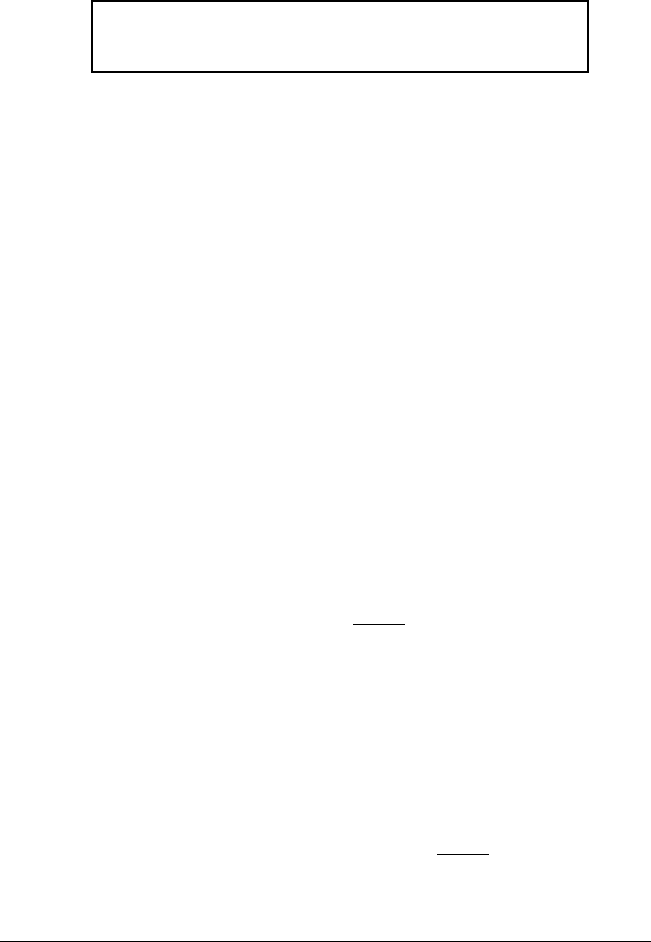
69
DATA FORMAT
NOT FOR PEN INTERFACES
~
C
ODE
I
DENTIFIER
~
~
C
USTOM
C
ODE
I
DENTIFIER
~
~
H
EADER
~
~
T
ERMINATOR
~
~
S
PECIAL
K
EYS
~
~
F
IELD
A
DJUSTMENT
~
~
F
IELD
A
DJ
.
C
HARACTER
~
~
C
ODE
L
ENGTH
T
X
~
~
C
HARACTER
R
EPLACEMENT
~
~
A
DDRESS
S
TAMPING
~
~
A
DDRESS
D
ELIMITER
~
~
T
IME
S
TAMPING
~
~
T
IME
D
ELIMITER
~
1. Read the Enter Configuration code ONCE, available at the top of each page.
2. Read configuration codes from the desired groups.
= Read the code and follow the procedure given
= Default value
3. Read the Exit and Save Configuration code ONCE, available at the top of
each page.
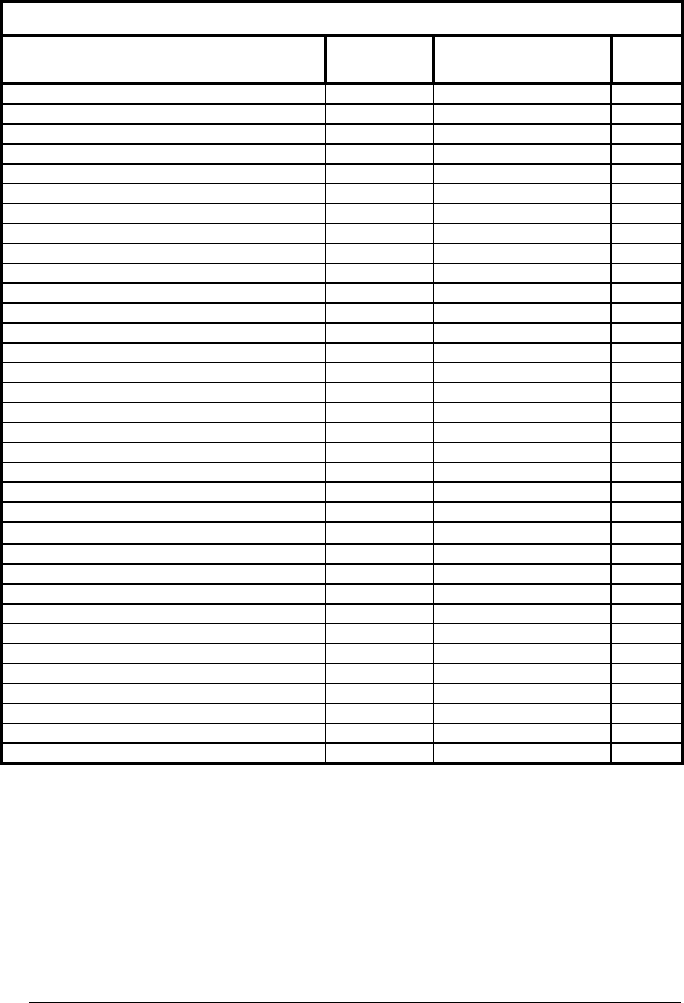
DATA FORMAT
70
CODE IDENTIFIER TABLE
CODE AIM
STANDARD
DATALOGIC
STANDARD
Custom
2/5 interleaved ] I y N
2/5 industrial ] X y P
2/5 normal 5 bars ] S y O
2/5 matrix 3 bars ] X y Q
EAN 8 ] E 4 A
EAN 13 ] E 0 B
UPC A ] X y C
UPC E ] X y D
EAN 8 with 2 ADD ON ] E 5 J
EAN 8 with 5 ADD ON ] E 6 K
EAN 13 with 2 ADD ON ] E 1 L
EAN 13 with 5 ADD ON ] E 2 M
UPC A with 2 ADD ON ] X y F
UPC A with 5 ADD ON ] X y G
UPC E with 2 ADD ON ] X y H
UPC E with 5 ADD ON ] X y I
Code 39 ] A y V
Code 39 Full ASCII ] A y W
CODABAR ] F y R
ABC CODABAR ] X y S
Code 128 ] C y T
EAN 128 ] C y k
ISBT 128 ] C4 f
Code 93 ] G y U
CIP/39 ] X y Y
CIP/HR ] X y e
Code 32 ] X y X
MSI ] M y Z
Code 11 ] H y b
Code 16K ] K 0 p
Code 49 ] T y q
GS1 DataBar™ Expanded Linear and Stacked ] e 0 t
GS1 DataBar Limited ] e 0 v
GS1 DataBar 14 Linear and Stacked ] e 0 u
• AIM standard identifiers are not defined for all codes: the X identifier is assigned to the
code for which the standard is not defined. The y value depends on the selected options
(check digit tested or not, check digit tx or not, etc.).
• When customizing the Datalogic Standard code identifiers, 1 or 2 identifier characters can
be defined for each code type. If only 1 identifier character is required, the second character
must be selected as FF (disabled).
• The code identifier can be singly disabled for any code by simply selecting FF as the first
identifier character.
• Write in the Custom character identifiers in the table above for your records.
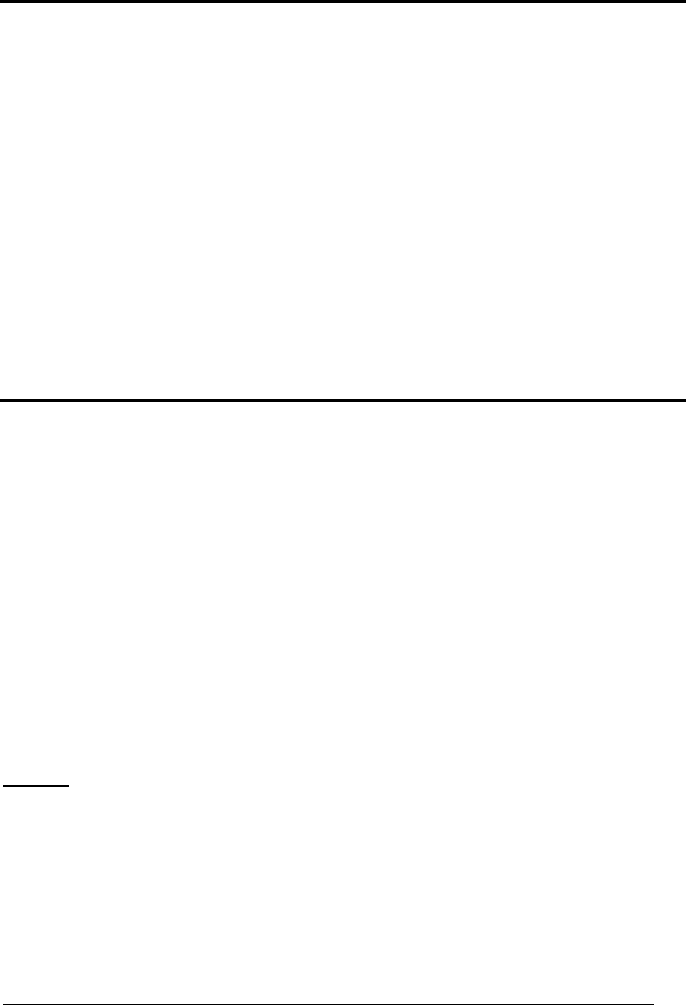
Enter Configuration Exit and Save Configuration
Ì$+;Î
DATA FORMAT
Ì$
-
?Î
71
C
ODE
I
DENTIFIER
disable
ÌEB0SÎ
Datalogic standard
AIM standard
ÌEB1VÎ
ÌEB2YÎ
custom
ÌEB3\Î
C
USTOM
C
ODE
I
DENTIFIER
define custom code identifier(s)
ÌEH/Î
c Read the above code.
(Code Identifiers default to Datalogic standard, see table on previous page).
d Select the code type from the code table in Appendix B for the identifier you want to
change.
e You can define 1 or 2 identifier characters for each code type. If only 1 identifier character is
required, the second character must be selected as FF (disabled). Read the hexadecimal
value corresponding to the character(s) you want to define as identifiers for the code
selected in step d: valid characters are in the range 00-FD.
Example: To define Code 39 Code Identifier = @
define custom code identifier(s) Code 39
Read ÌEH/Î + ÌVWÎ + 40 + FF

Enter Configuration Exit and Save Configuration
Ì$+;Î
DATA FORMAT
Ì$
-
?Î
72
H
EADER
no header
ÌEA00*Î
one character header
two character header
ÌEA01.Î
ÌEA022Î
three character header
four character header
ÌEA036Î
ÌEA04:Î
five character header
six character header
ÌEA05>Î
ÌEA06BÎ
seven character header
eight character header
ÌEA07FÎ
ÌEA08JÎ
After selecting one of the desired Header codes, read the character(s) from the HEX table.
Valid characters are in the range 00-FE. For Wedge and USB-KBD interfaces, it is also possible
to read the Special Key(s) on page 74.
Example:
four character header
+ 41 + 42 + 43 + 44 = Header ABCD
For more details see par. 5.4.1 and par. 5.4.2.

Enter Configuration Exit and Save Configuration
Ì$+;Î
DATA FORMAT
Ì$
-
?Î
73
T
ERMINATOR
no terminator
ÌEA10-Î
one character terminator
two character terminator
ÌEA111Î
ÌEA125Î
three character terminator
four character terminator
ÌEA139Î
ÌEA14=Î
five character terminator
six character terminator
ÌEA15AÎ
ÌEA16EÎ
seven character terminator
eight character terminator
ÌEA17IÎ
ÌEA18MÎ
After selecting one of the desired Header codes, read the character(s) from the HEX table.
Valid characters are in the range 00-FE. For Wedge and USB-KBD interfaces, it is also possible
to read the Special Key(s) on page 74.
Example:
two character terminator
+ 0D + 0A = Terminator CR LF
For more details see par. 5.4.1 and par. 5.4.2.
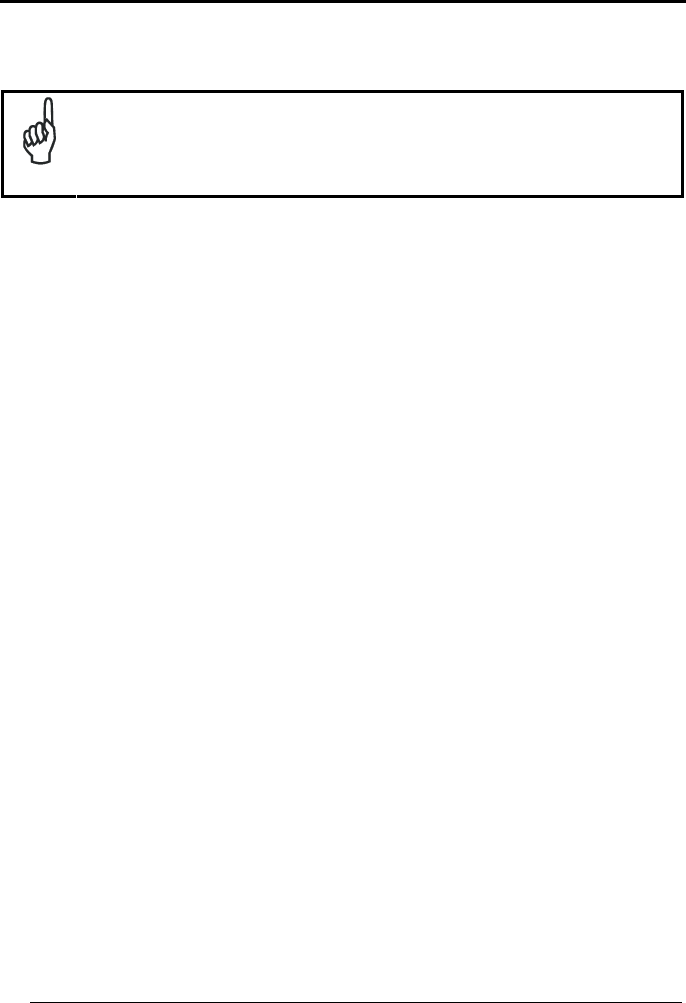
Enter Configuration Exit and Save Configuration
Ì$+;Î
DATA FORMAT
Ì$
-
?Î
74
S
PECIAL
K
EYS
Available only for Wedge IBM AT-PS/2 and USB-KBD Interfaces
NOTE
It is necessary to define each Special Key by following the procedure given in
par. 5.4.2.
Select one or more of the following Special Keys according to your needs.
Special Key 1
Ì9CÄÎ
Special Key 2
Special Key 3
Ì9DÆÎ
Ì9EÈÎ
Special Key 4
Special Key 5
Ì9FÊÎ
ÌA0bÎ

Enter Configuration Exit and Save Configuration
Ì$+;Î
DATA FORMAT
Ì$
-
?Î
75
F
IELD
A
DJUSTMENT
disable field adjustment
ÌEF0[Î
Field adjustment allows a number of characters n, to be added to or subtracted from the
barcode read. The adjustment can be different for each enabled code type. To define the field
adjustment:
c Read the enable field adjustment code:
enable field adjustment
ÌEF+Î
d Select the code type from the Code Identifier Table in Appendix B.
e Select the type of adjustment to perform:
right addition
Ì01Î
left addition
right deletion
Ì12Î
Ì23Î
left deletion
Ì34Î
f Read a number in the range 01 - 32 from the Hex/Numeric Table to define how many
characters to add or delete:
Conditions:
• Adjustment is only performed on the barcode data, the Code Identifier and Code Length
Transmission fields are not modified by the field adjustment parameter.
• If the field setting would subtract more characters than exist in the barcode, the subtraction
will take place only to code length 0.
• You can set up to a maximum of 10 different field adjustments on the same barcode family
or on different barcode families.
Example: To add 4 characters to the right of Standard Code 39 Codes:
enable field adjustment Code 39 right addition
Read ÌEF+Î + ÌVWÎ + Ì01Î + 04
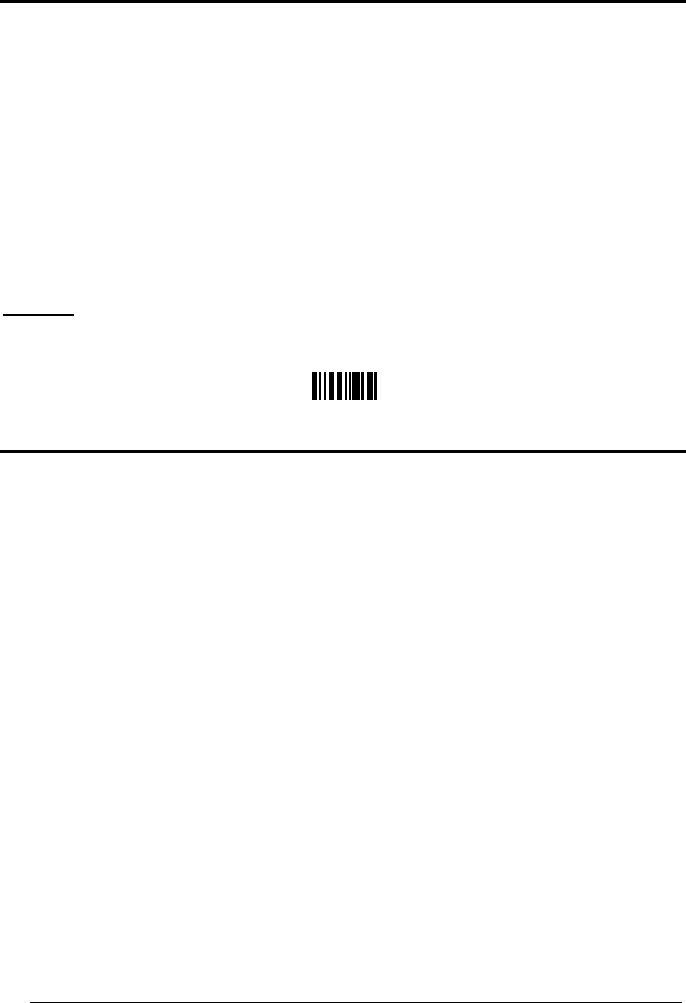
Enter Configuration Exit and Save Configuration
Ì$+;Î
DATA FORMAT
Ì$
-
?Î
76
F
IELD
A
DJUSTMENT
C
HARACTER
c Read the field adjustment character code:
field adjustment character
ÌEG-Î
d Read the hexadecimal value corresponding to the character you want to use for field
adjustment. Valid characters are in the range 00-FE. For Wedge and USB-KBD interfaces, it
is also possible to read the Special Key(s) on page 74.
Example:
To define the field adjustment character = A:
Read
field adjustment character
+ 41
C
ODE
L
ENGTH
T
X
code length not transmitted
ÌEE0YÎ
code length transmitted in variable-digit format
ÌEE1\Î
code length transmitted in fixed 4-digit format
ÌEE2_Î
The code length is transmitted in the message after the Headers and Code Identifier characters.
The code length is calculated after performing any field adjustment operations.

Enter Configuration Exit and Save Configuration
Ì$+;Î
DATA FORMAT
Ì$
-
?Î
77
C
HARACTER
R
EPLACEMENT
disable character replacement
ÌEO0mÎ
This parameter allows up to three characters to be replaced from the barcode read. These
substitutions are stored in memory. To define each character replacement:
c Read one of the following character replacement codes:
first character replacement
ÌEO1pÎ
second character replacement
ÌEO2sÎ
third character replacement
ÌEO3vÎ
d From the Code Identifier Table in Appendix B, read the Code Identifier for the desired
code family.
0 = character replacement will be effective for all code families.
e From the Hex/Numeric Table read two characters corresponding to the Hex value
(00-FE), which identifies the character to be replaced. For Wedge and USB-KBD
interfaces, it is also possible to read the Special Key(s) on page 74.
f From the Hex/Numeric Table read two characters corresponding to the Hex value
(00-FE), which identifies the new character to replace. For Wedge and USB-KBD
interfaces, it is also possible to read the Special Key(s) on page 74.
FF = the character to be replaced will be substituted with no character, that is, it will be
removed from the code.

Enter Configuration Exit and Save Configuration
Ì$+;Î
DATA FORMAT
Ì$
-
?Î
78
Example:
The following strings define:
1. First Character Replacement: substitution in Code 39 barcodes of all occurrences of the
0 character with the 1 character.
2. Second Character Replacement: substitution in Code 39 barcodes of all occurrences of
the A character with the B character.
first character replacement Code 39 ASCII characters corresponding to
the HEX value for character 0
ASCII characters corresponding
to the HEX value for character 1
ÌEO1pÎ
+ ÌVWÎ
+30 +31
For Code 39 codes containing the string "0123", the contents transmitted will be "1123".
second character
replacement Code 39 ASCII characters corresponding to
the HEX value for character A
ASCII characters corresponding
to the HEX value for character B
ÌEO2sÎ
+ ÌVWÎ
+41 +42
For Code 39 codes containing the string "ABCD", the contents transmitted will be "BBCD".

Enter Configuration Exit and Save Configuration
Ì$+;Î
DATA FORMAT
Ì$
-
?Î
79
A
DDRESS
S
TAMPING
(M8300
S
ERIES
O
NLY
)
disable reader address stamping
ÌRU0ÊÎ
disable cradle address stamping
enable reader address stamping
ÌRW0#Î
ÌRU1"Î
enable cradle address stamping
ÌRW1&Î
See par. 5.4.3 for details.
A
DDRESS
D
ELIMITER
(M8300
S
ERIES
O
NLY
)
disable reader address delimiter
ÌRV0!Î
disable cradle address delimiter
enable reader address delimiter and
select characters
ÌRY0'Î
ÌRV1$Î
enable cradle address delimiter and
select characters
ÌRY1*Î
Read 2 HEX characters in the range 00-FE. Read 2 HEX characters in the range 00-FE.
See par. 5.4.4 for details.

Enter Configuration Exit and Save Configuration
Ì$+;Î
DATA FORMAT
Ì$
-
?Î
80
T
IME
S
TAMPING
(M8300
S
ERIES
O
NLY
)
disable
ÌIL0kÎ
hour/minutes/seconds
month/day/year
hour/minutes/seconds
day/month/year
ÌIL1nÎ
ÌIL2qÎ
hour/minutes/seconds
month/day/year
ÌIL3tÎ
ÌIL4wÎ
day/month/year
ÌIL5zÎ
See par. 5.4.5 for details.
T
IME
S
TAMPING
D
ELIMITER
(M8300
S
ERIES
O
NLY
)
disable
ÌIM0mÎ
select delimiter
ÌIM1pÎ
Read 2 HEX characters in the range 00-FE.
See par. 5.4.6 for details.

81
POWER SAVE
~
S
LEEP
S
TATE
~
~
E
NTER
S
LEEP
T
IMEOUT
~
1. Read the Enter Configuration code ONCE, available at the top of each page.
2. Read configuration codes from the desired groups.
= Read the code and follow the procedure given
= Default value
3. Read the Exit and Save Configuration code ONCE, available at the top of
each page.

Enter Configuration Exit and Save Configuration
Ì$+;Î
POWER SAVE
Ì$
-
?Î
82
S
LEEP
S
TATE
disable
ÌBQ0nÎ
enable
ÌBQ1qÎ
See par. 5.5.1 for details.
For M8300 series readers, sleep state is entered immediately after reading a code and is not
configurable.
E
NTER
S
LEEP
T
IMEOUT
enter sleep timeout
ÌBR@Î
Read 2 numbers in the range 00-99:
00 = Enter Sleep state immediately
01-99 = corresponds to a max. 9.9 sec. delay before entering the
Sleep state.
enter sleep timeout = 0.6 sec.
See par. 5.5.2 for details.

83
READING PARAMETERS
~
T
RIGGER
T
YPE
~
~
T
RIGGER
S
IGNAL
~
~
T
RIGGER
C
LICK
~
~
T
RIGGER
-
OFF
T
IMEOUT
~
~
F
LASH
M
ODE
~
~
R
EADS PER
C
YCLE
~
~
S
AFETY
T
IME
~
~
B
EEPER
I
NTENSITY
~
~
B
EEPER
T
ONE
~
~
B
EEPER
T
YPE
~
~
B
EEPER
L
ENGTH
~
~
G
OOD
R
EAD
S
POT
D
URATION
~
~
A
IMING
S
YSTEM
~
~
C
RADLE
B
EEPER
I
NTENSITY
~
1. Read the Enter Configuration code ONCE, available at the top of each page.
2. Read configuration codes from the desired groups.
= Read the code and follow the procedure given
= Default value
3. Read the Exit and Save Configuration code ONCE, available at the top of
each page.
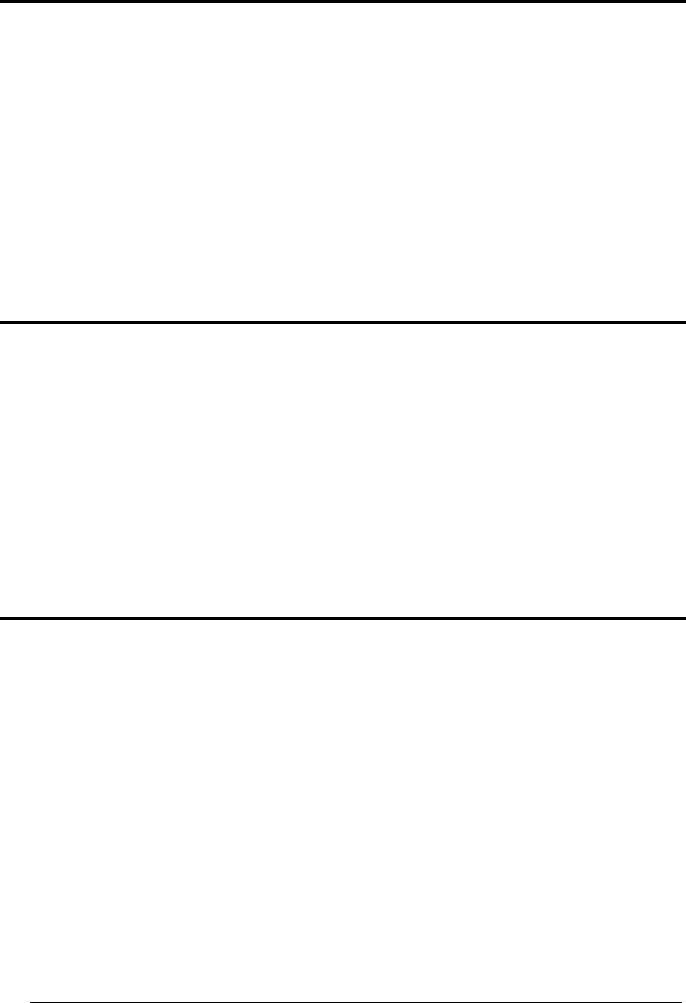
Enter Configuration Exit and Save Configuration
Ì$+;Î
READING PARAMETERS
Ì$
-
?Î
84
T
RIGGER
T
YPE
hardware trigger
ÌBK1eÎ
Restores TRIGGER MODE
software trigger
always on
ÌBK0bÎ
Enables FLASH MODE
ÌBK3kÎ
T
RIGGER
S
IGNAL
trigger active level
ÌBA0NÎ
trigger active pulse
ÌBA1QÎ
See par. 5.6.1 for details.
T
RIGGER
C
LICK
disable
ÌBc0+Î
enable
ÌBc1.Î
See par. 5.6.2 for details.
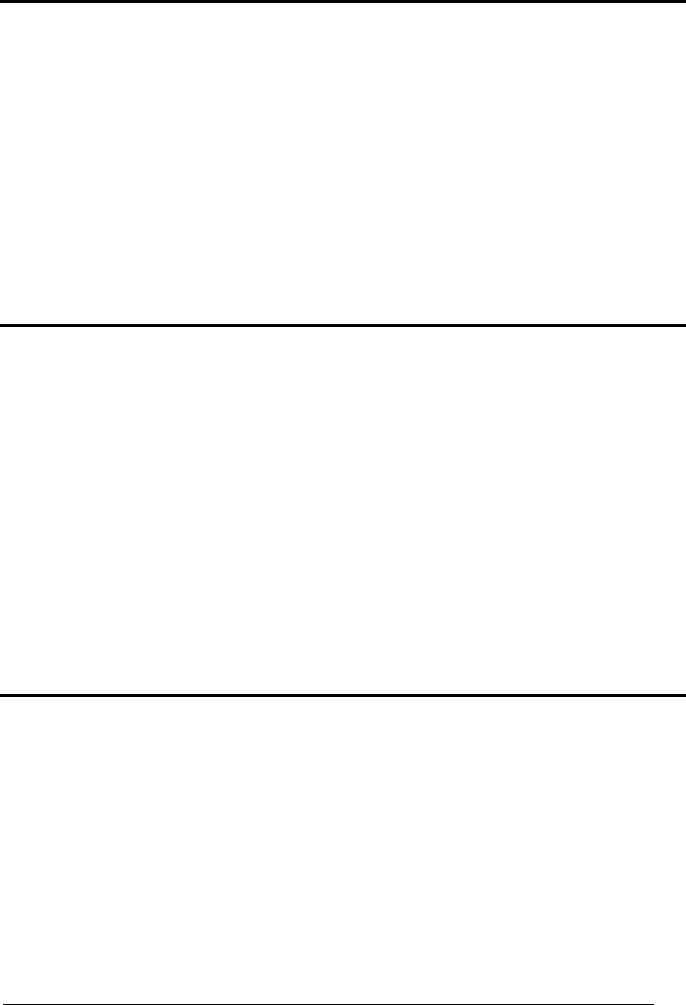
Enter Configuration Exit and Save Configuration
Ì$+;Î
READING PARAMETERS
Ì$
-
?Î
85
T
RIGGER
-
OFF
T
IMEOUT
trigger-off timeout
ÌBD$Î
Read 2 numbers in the range 00-99:
00 = disables the trigger-off timeout
01-99 = corresponds to a max. 99-sec. delay after the trigger
press to allow the reader to turn off automatically.
trigger-off timeout disabled
See par. 5.6.3 for details.
F
LASH
M
ODE
"FLASH" ON duration
ÌBB0PÎ
"FLASH" OFF duration
ÌBB1SÎ
Read 2 numbers in the range 01-99:
01 to 99 = from .1 to 9.9 seconds.
Flash-ON = 1 sec. Flash-OFF = 0.6 sec
R
EADS PER
C
YCLE
one read per cycle
ÌBC0RÎ
multiple reads per cycle
ÌBC1UÎ
See par. 5.6.4 for details.
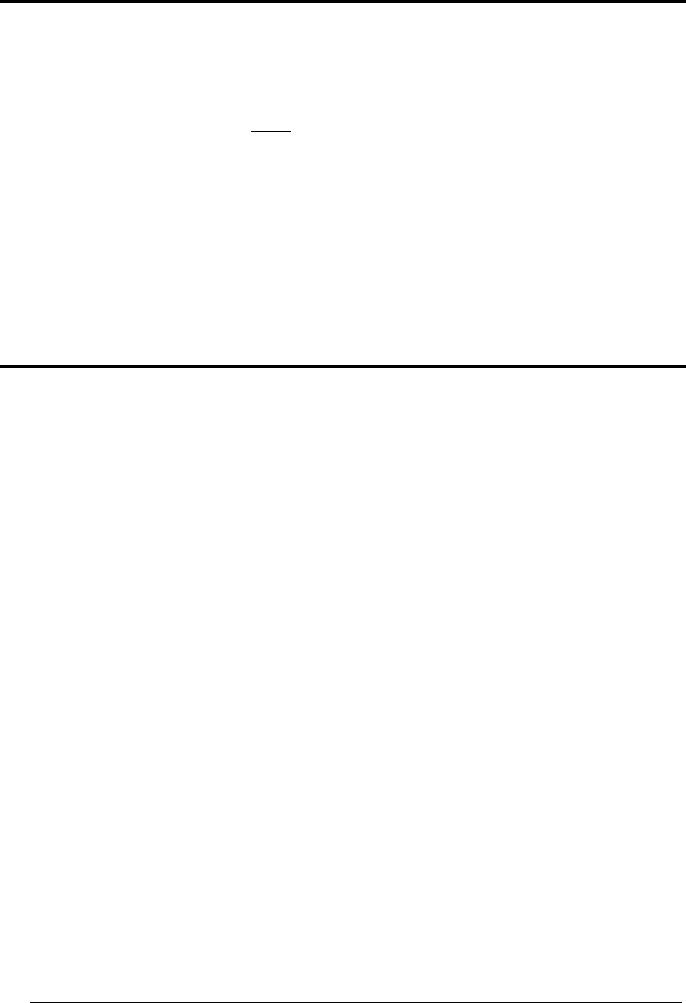
Enter Configuration Exit and Save Configuration
Ì$+;Î
READING PARAMETERS
Ì$
-
?Î
86
S
AFETY
T
IME
safety time
ÌBE&Î
Limits same code consecutive reading.
Read 2 numbers in the range 00-99:
00 = no same code consecutive reading until reader is
removed (no decoding) for at least 400 ms.
01-99 = timeout from .1 to 9.9 seconds before a consecutive read
on same code.
safety time = 0.5 sec
See par. 5.6.5 for details.
B
EEPER
I
NTENSITY
* very low intensity
ÌBG0ZÎ
low intensity
medium intensity
ÌBG1]Î
ÌBG2`Î
high intensity
ÌBG3cÎ
* This sets the beeper OFF for data entry, while for all other beeper signals it has the
meaning “very low intensity”. The Beeper Intensity parameter is effective for all operating
conditions described in par. 7.5.
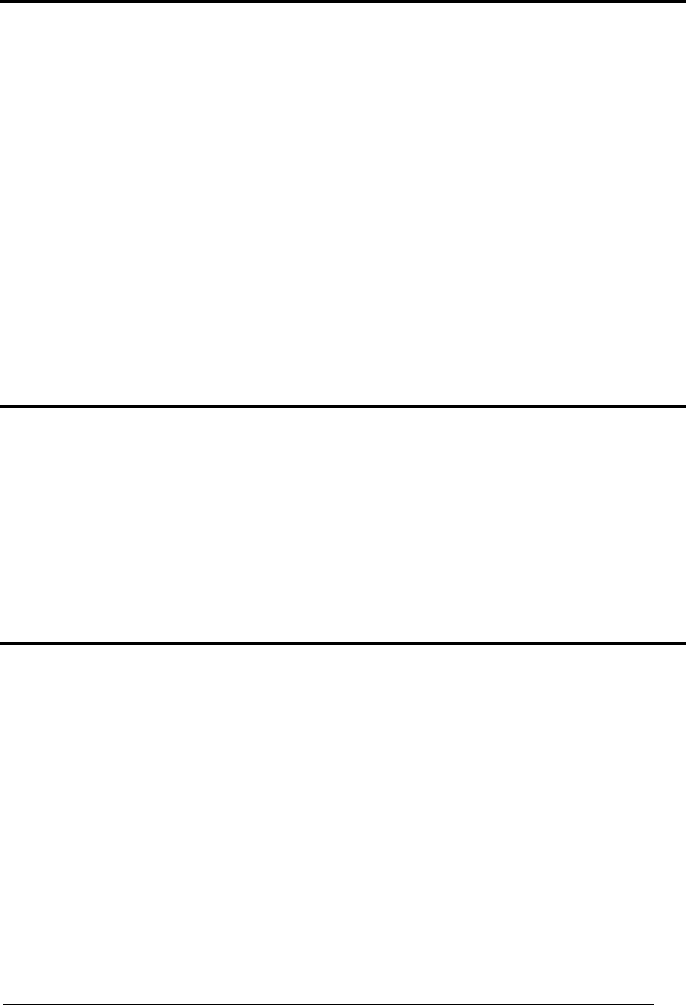
Enter Configuration Exit and Save Configuration
Ì$+;Î
READING PARAMETERS
Ì$
-
?Î
87
B
EEPER
T
ONE
tone 1
ÌBH0\Î
tone 2
tone 3
ÌBH1_Î
ÌBH2bÎ
tone 4
ÌBH3eÎ
B
EEPER
T
YPE
monotone
ÌBJ0`Î
bitonal
ÌBJ1cÎ
B
EEPER
L
ENGTH
long
ÌBI0^Î
short
ÌBI1aÎ
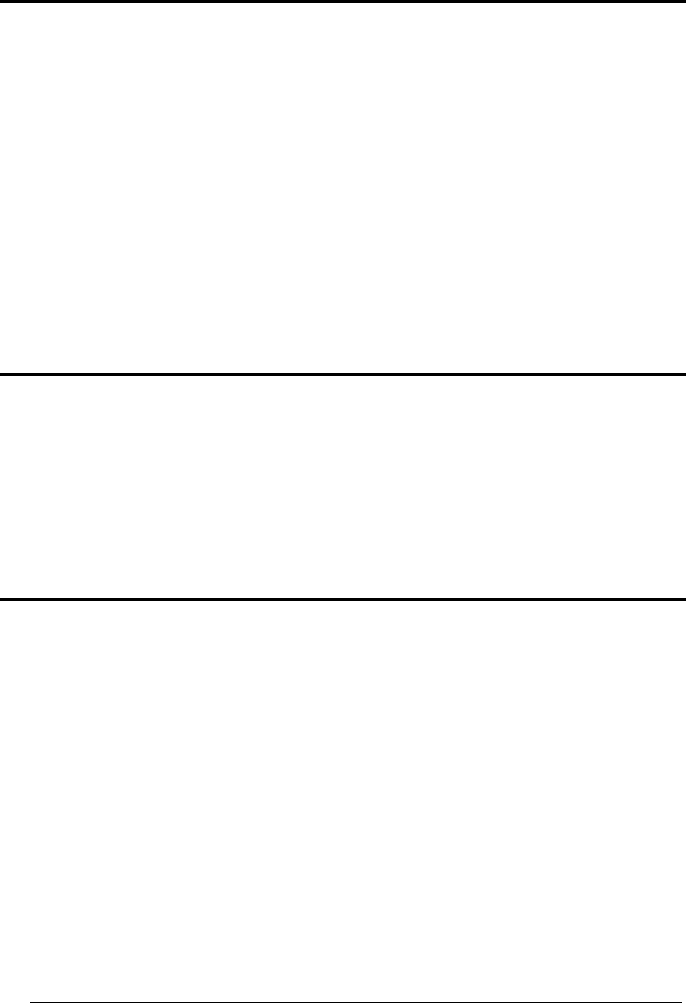
Enter Configuration Exit and Save Configuration
Ì$+;Î
READING PARAMETERS
Ì$
-
?Î
88
G
OOD
R
EAD
S
POT
D
URATION
disable
ÌBV0xÎ
short
medium
ÌBV1{Î
ÌBV2~Î
long
ÌBV3ÅÎ
A
IMING
S
YSTEM
disabled
ÌBj09Î
enabled
ÌBj1<Î
C
RADLE
B
EEPER
I
NTENSITY
disable
ÌJI0fÎ
low intensity
medium intensity
ÌJI1iÎ
ÌJI2lÎ
high intensity
ÌJI3oÎ
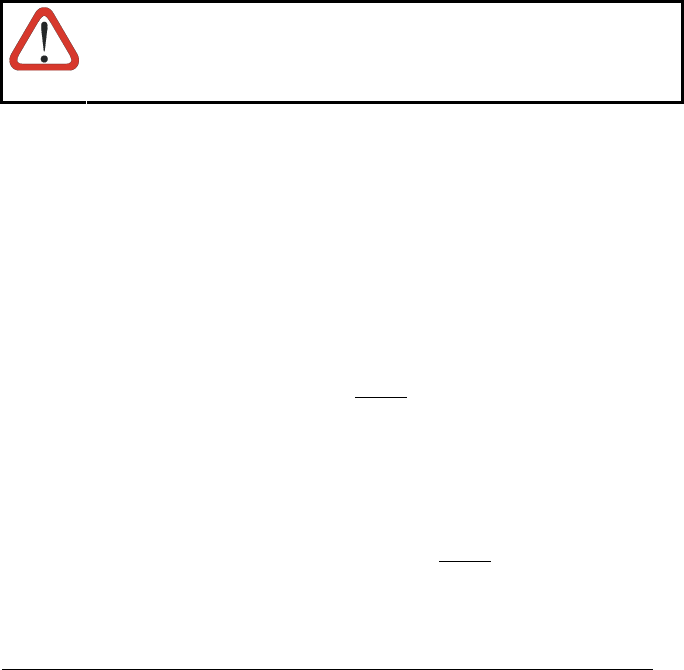
89
DECODING PARAMETERS
~
I
NK
S
PREAD
~
~
O
VERFLOW
C
ONTROL
~
~
I
NTERDIGIT
C
ONTROL
~
~
D
ECODING
S
AFETY
~
~
P
UZZLE
S
OLVER
™
~
CAUTION
Before changing these parameter values read the descriptions in
par. 5.7.
1. Read the Enter Configuration code ONCE, available at the top of each page.
2. Read configuration codes from the desired groups.
= Default value
3. Read the Exit and Save Configuration code ONCE, available at the top of
each page.
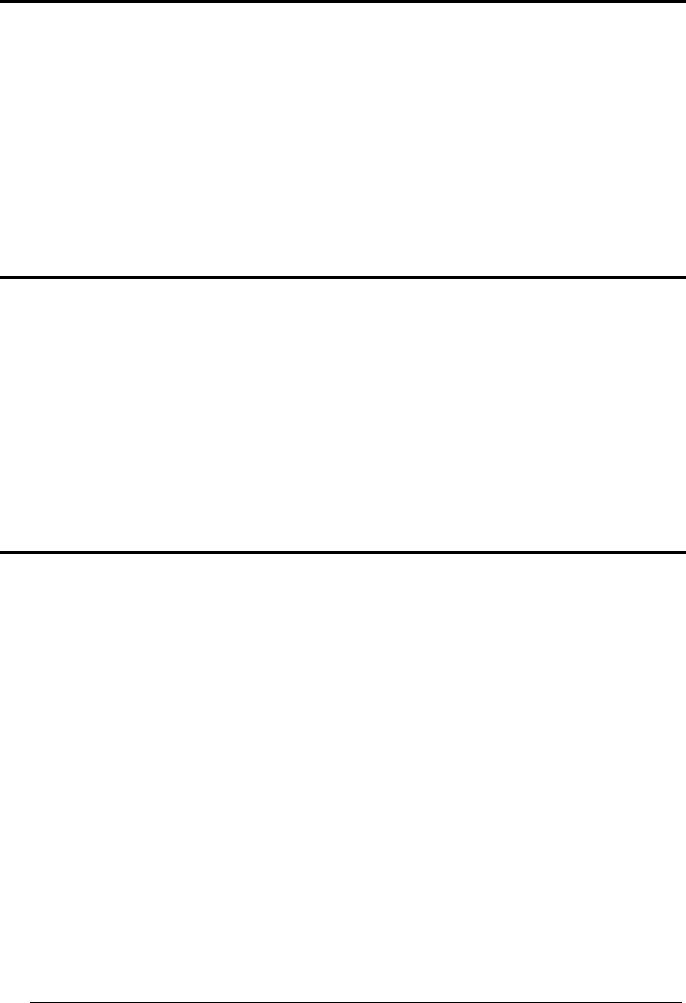
Enter Configuration Exit and Save Configuration
Ì$+;Î
DECODING PARAMETERS
Ì$
-
?Î
90
I
NK
S
PREAD
disable
ÌAX0{Î
enable
ÌAX1~Î
See par. 5.7.1 for details.
O
VERFLOW
C
ONTROL
disable
ÌAW1|Î
enable
ÌAW0yÎ
See par. 5.7.2 for details.
I
NTERDIGIT
C
ONTROL
disable
ÌAV0wÎ
enable
ÌAV1zÎ
See par. 5.7.3 for details.
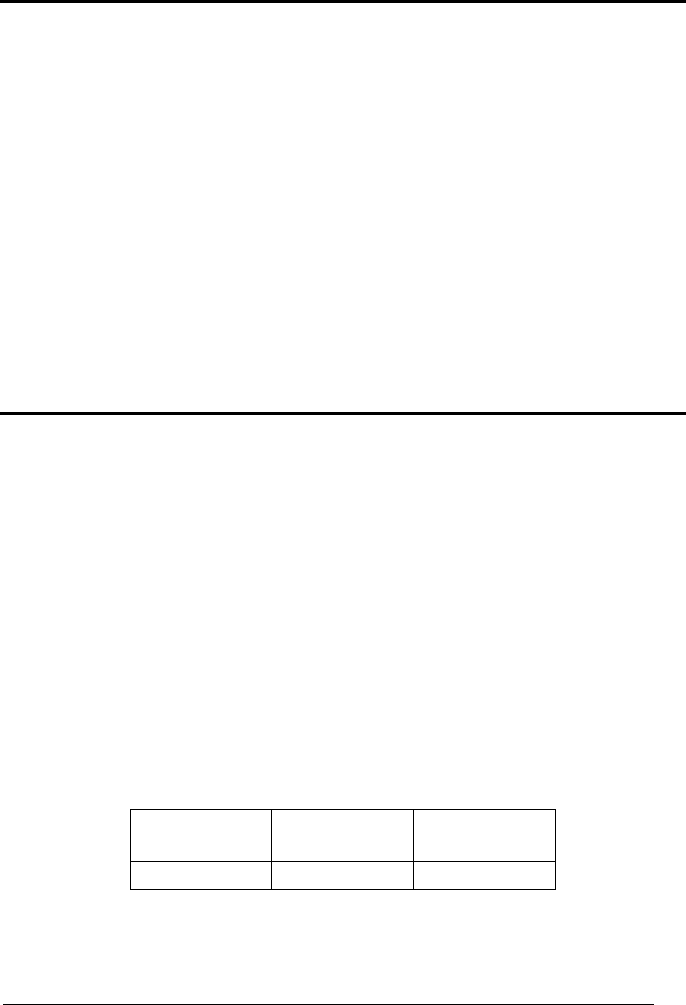
Enter Configuration Exit and Save Configuration
Ì$+;Î
DECODING PARAMETERS
Ì$
-
?Î
91
D
ECODING
S
AFETY
one read
ÌED0WÎ
(decoding safety disabled)
two reads
three reads
ÌED1ZÎ
ÌED2]Î
four reads
ÌED3`Î
Required number of good reads before accepting code.
P
UZZLE
S
OLVER
™
disable
ÌAU0uÎ
enable
ÌAU1xÎ
In the case of damaged or poorly printed codes, this parameter allows reading multiple parts of
the single code to reconstruct it.
To read codes using this technology, simply move the illuminated bar over the code so that
each line of the code is scanned. During this process a series of brief “ticks” indicates that
reading is proceeding correctly.
Conditions:
• This parameter is only valid for the following codes:
EAN 8
without Add-on
EAN 13
without Add-on
UPC A
without Add-on
Code 128 Code 39
• For Code 39, Check digit control is forced.
• PuzzleSolver™ is not valid for ISBT 128 code.

92
CODE SELECTION
~
A
UTO
-
CONFIGURATION
~
~
EAN/UPC
F
AMILY
~
~
2/5
F
AMILY
~
~
C
ODE
39
F
AMILY
~
~
C
ODE
128
F
AMILY
~
~
C
ODABAR
F
AMILY
~
~
C
ODE
93
~
~
MSI
~
~
C
ODE
11
~
~
C
ODE
16K
~
~
C
ODE
49
~
~
GS1
DATABAR
C
ODES
~
1. Read the Enter Configuration code ONCE, available at the top of each page.
2. Read configuration codes from the desired groups.
= Read the code and follow the procedure given
= Default value
3. Read the Exit and Save Configuration code ONCE, available at the top of
each page.
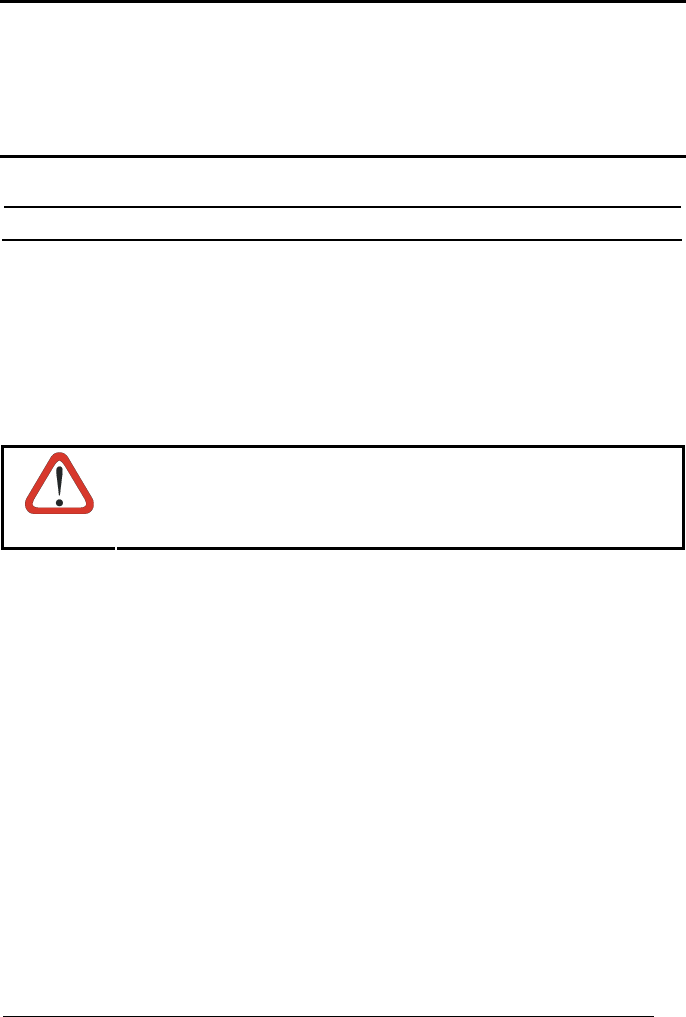
93
Code selections may be performed according to two different procedures:
- Auto-configuration, allowing an automatic recognition and selection of the code families
to be read;
- Manual configuration, requiring configuration and selection of each code family to be
read.
A
UTO
-
CONFIGURATION
The following codes do not require reading the Enter and Exit configuration codes.
In auto-configuration mode the reader enters a particular state, during which it reads,
recognizes and saves all information received from the decoding of an existing code (with the
exception of MSI, Code 49 and Code 16k code types). In this way, the code families will be
automatically configured.
It is possible to configure up to 10 code types, whose length is variable and check digit ignored.
If reading different codes belonging to the same family, information about the last code will
overwrite the information about the previous one.
Follow the given procedure to auto-configure the desired code families:
CAUTION
If no code is read during the auto-configuration procedure (step
d
), the
configuration will be empty and therefore the reader will be unable to read
codes.
c Read the following code to enter the auto-configuration mode:
auto-configuration
Ì#+AUTOWÎ
d Read an existing code belonging to the code families that you need to configure.
e Read the following code to save the configuration automatically and return to the reader's
normal functioning:
save auto-configuration
Ì$-?Î
If you need to change the configuration, repeat the auto-configuration procedure, follow the
manual configuration by setting the parameters for each single code family or read the "Restore
Default" code on page 164. Be careful that in the latter case all reader parameters will be
restored.
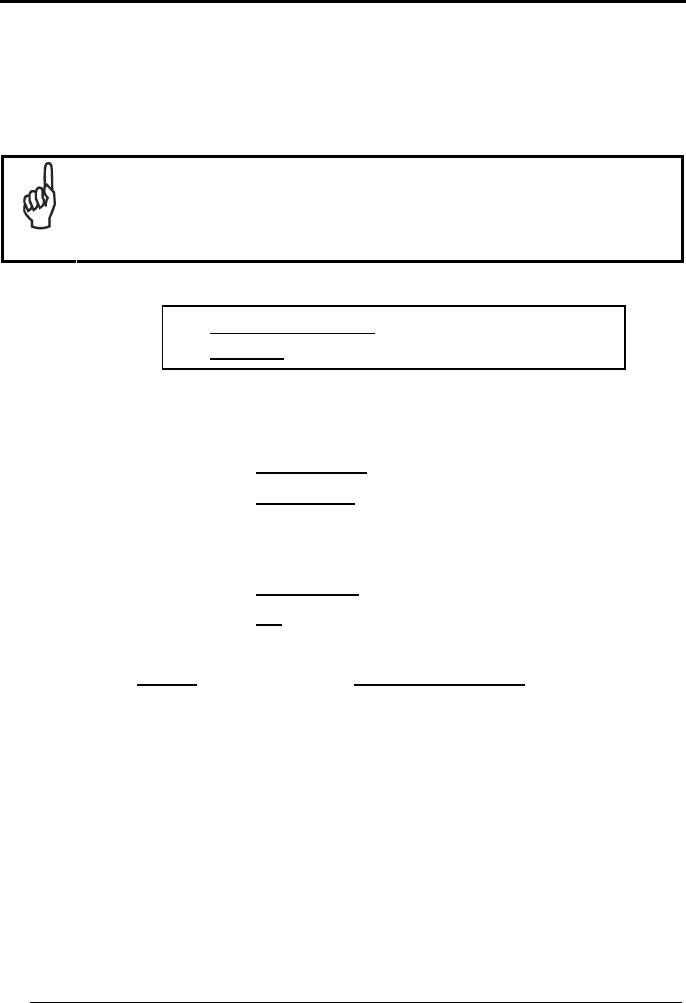
Enter Configuration Exit and Save Configuration
Ì$+;Î
CODE SELECTION
Ì$
-
?Î
94
DISABLE ALL CODE FAMILIES
ÌAZ0ÃÎ
NOTE
The reader allows up to 10 code selections. This does not limit the number of
CODES enabled to 10, as it depends on the code family.
SINGLE
SELECTIONS =
Example
5 code selections: 1. 2/5 Interleaved
2. 2/5 Industrial
3. Code 128 + EAN 128
4. Code 39 Full ASCII + Code 32
5. UPC A/UPC E
6. etc.
In this section all SINGLE code selections are underlined and in bold.
• ONE combination code from the EAN family
• ONE code from the 2/5 family
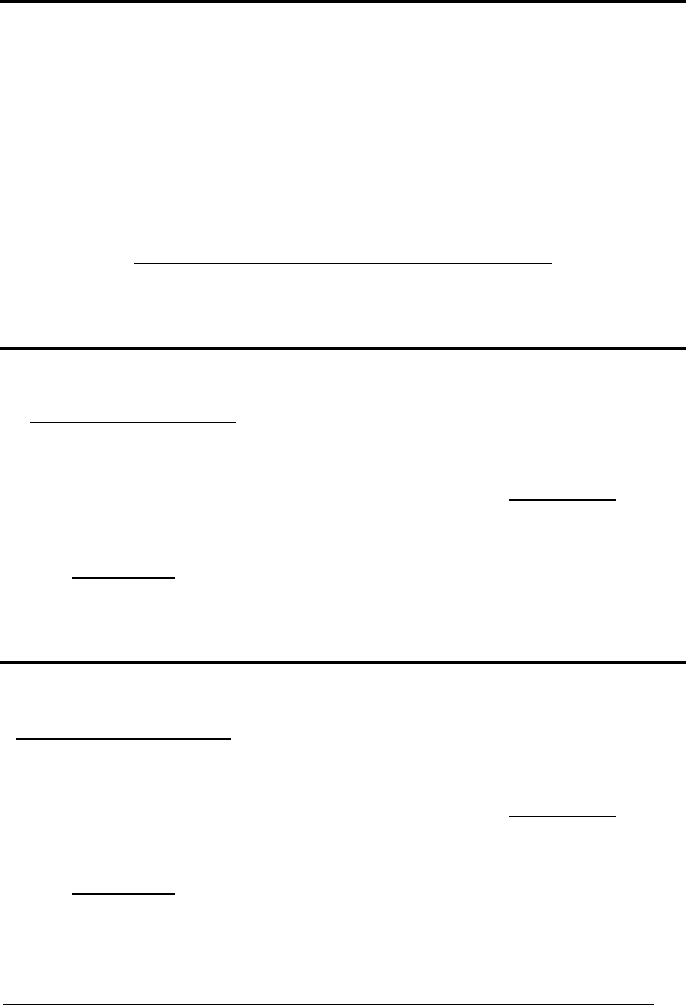
Enter Configuration Exit and Save Configuration
Ì$+;Î
CODE SELECTION
Ì$
-
?Î
95
EAN/UPC
F
AMILY
disable the family
ÌAA0MÎ
c Read the desired family code
Note:
Since the EAN/UPC without ADD ON code selection is enabled by default, to correctly enable
another selection, first disable the family.
EAN 8/EAN 13/UPC A/UPC E with and without ADD ON
ÌAA8eÎ
WITHOUT ADD ON
EAN 8/EAN 13/UPC A/UPC E
ÌAA1PÎ
EAN 8/EAN 13
UPC A/UPC E
ÌAA3VÎ
ÌAA4YÎ
WITH ADD ON 2 AND 5
EAN 8/EAN 13/UPC A/UPC E
ÌAA5\Î
EAN 8/EAN 13
UPC A/UPC E
ÌAA6_Î
ÌAA7bÎ

Enter Configuration Exit and Save Configuration
Ì$+;Î
CODE SELECTION
Ì$
-
?Î
96
WITH ADD ON 2 ONLY
EAN 8/EAN 13
ÌAAK7Î
UPC A/UPC E
ÌAAM=Î
WITH ADD ON 5 ONLY
EAN 8/EAN 13
ÌAAL:Î
UPC A/UPC E
ÌAAN@Î
WITH AND WITHOUT ADD ON
EAN/UPC with and without ADD ON no
Autodiscrimination
ÌAA8Ad03Î
EAN/UPC Autodiscrimination ADD ON by
Prefix
ÌAA8Ad19Î
By setting the EAN/UPC Autodiscrimination ADD ON by Prefix, the desired prefixes must be
selected by reading the corresponding codes given in the following section, since no prefix is
configured by default.
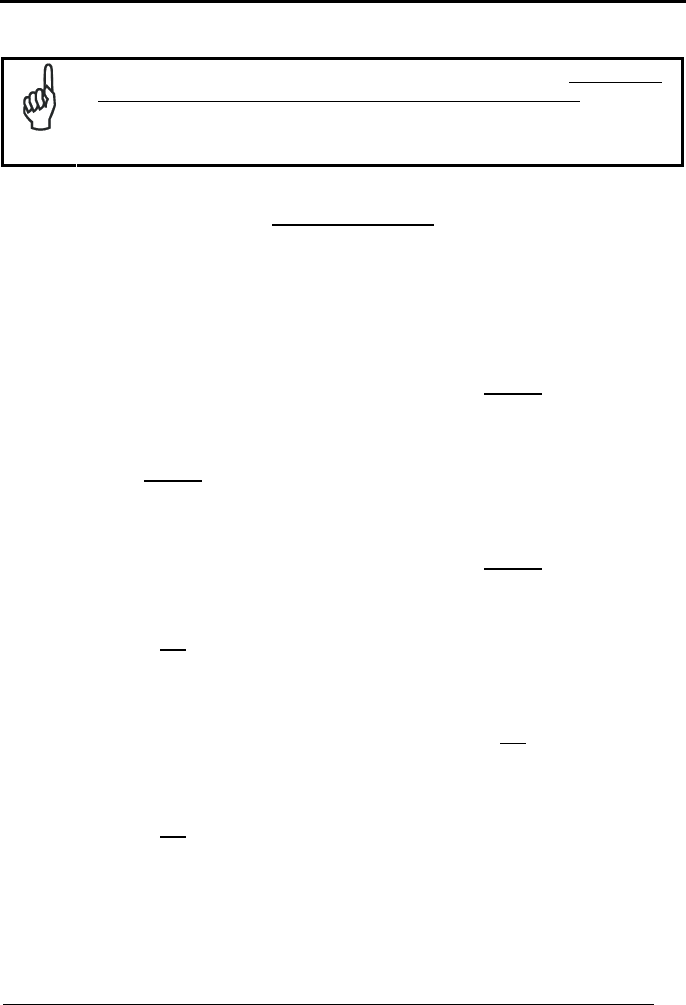
Enter Configuration Exit and Save Configuration
Ì$+;Î
CODE SELECTION
Ì$
-
?Î
97
SELECT EAN/UPC PREFIXES
NOTE
When scanning the following codes, barcodes starting with the selected
prefixes will be read and transmitted only if the ADD ON is present. If no ADD
ON is found, the barcode will not be read. Barcodes starting with different
characters are read regardless of ADD ON presence and transmitted always
without ADD ON.
Cancel All Selections
ÌET0wÎ
OR
select one or more of the following prefixes:
378/379
ÌET1378ET2379PÎ
434/439
ÌET3434ET4439ÉÎ
414/419
ÌET5414ET6419}Î
977
ÌET7977QÎ
978
ÌET8978ZÎ
979
ÌET9979cÎ
The commands above are not mutually exclusive. They can be used to configure more than one
set of prefixes simultaneously.

Enter Configuration Exit and Save Configuration
Ì$+;Î
CODE SELECTION
Ì$
-
?Î
98
Example:
The following string allows reading and transmitting with ADD ON all EAN/UPC starting with the
434/439, 977 and 978 prefixes:
1. EAN/UPC Autodiscrimination ADD ON by Prefix.
2. 434/439: enables reading and transmission with ADD ON of all EAN/UPC barcodes
starting with 434/439 prefixes.
3. 977: enables reading and transmission with ADD ON of all EAN/UPC barcodes starting
with 977 prefix.
4. 978: enables reading and transmission with ADD ON of all EAN/UPC barcodes starting
with 978 prefix.
EAN/UPC Autodiscrimination ADD ON by
Prefix 434/439
ÌAA8Ad19Î
+ÌET3434ET4439ÉÎ
+
977 978
+ ÌET7977QÎ
+ÌET8978ZÎ
To clear the current prefix selections:
1. Cancel all Selections
Cancel All Selections
ÌET0wÎ

Enter Configuration Exit and Save Configuration
Ì$+;Î
CODE SELECTION
Ì$
-
?Î
99
EAN/UPC CHECK DIGIT TX SELECTIONS
For each code type in this family you can choose to transmit the check digit or not
CHECK DIGIT TRANSMISSION
EAN 8
NO CHECK DIGIT
TRANSMISSION
ÌAAG1oÎ
EAN 8
ÌAAG0kÎ
EAN 13
ÌAAH1rÎ
EAN 13
ÌAAH0nÎ
UPC A
ÌAAI1uÎ
UPC A
ÌAAI0qÎ
UPC E
ÌAAJ1xÎ
UPC E
ÌAAJ0tÎ

Enter Configuration Exit and Save Configuration
Ì$+;Î
CODE SELECTION
Ì$
-
?Î
100
CONVERSION OPTIONS
UPC E to UPC A conversion
ÌAAAÄÎ
UPC E to EAN 13 conversion
UPC A to EAN 13 conversion
ÌAABÇÎ
ÌAACÊÎ
EAN 8 to EAN 13 conversion
Enable only ISBN conversion
ÌAAD"Î
ÌAP1nÎ
Enable only ISSN conversion
Enable both ISBN and ISSN
conversion
ÌAP2qÎ
ÌAP3tÎ
Disable both ISBN and ISSN
conversion
ÌAP0kÎ
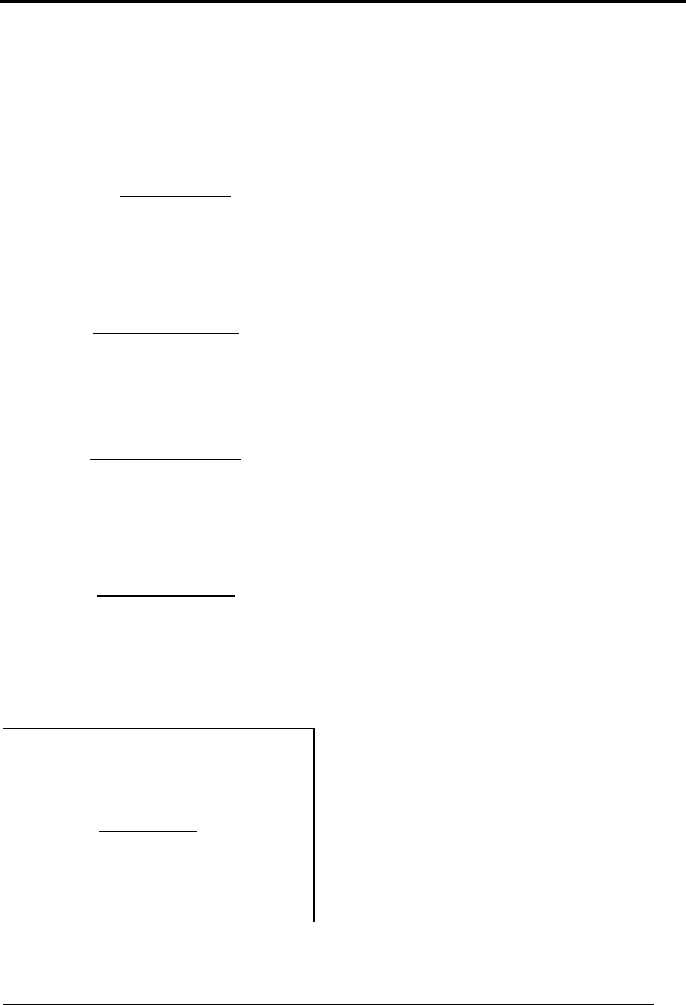
Enter Configuration Exit and Save Configuration
Ì$+;Î
CODE SELECTION
Ì$
-
?Î
101
2/5
F
AMILY
disable the family
ÌAC0QÎ
c Read the desired family code d Read a check digit selection
Interleaved 2/5
ÌAC1TÎ
CHECK DIGIT TABLE
no check digit control
Normal 2/5 (5 Bars)
Ì12Î
ÌAC2WÎ
check digit control and transmission
Industrial 2/5 (IATA)
Ì23Î
ÌAC3ZÎ
check digit control without transmission
Matrix 2/5 (3 Bars)
Ì34Î
ÌAC4]Î e Read 4 numbers for the code length
where:
− First 2 digits = minimum code
length.
− Second 2 digits = maximum code
length.
The pharmaceutical code below is part of
the 2/5 family but has no check digit or
code length selections.
Code CIP/HR
The maximum code length is
99 characters.
The minimum code length must always
be less than or equal to the maximum.
ÌAC5`Î
French pharmaceutical code
Examples:
0199 = variable from 1 to 99 digits in
the code.
1010 = 10 digit code length only.

Enter Configuration Exit and Save Configuration
Ì$+;Î
CODE SELECTION
Ì$
-
?Î
102
C
ODE
39
F
AMILY
disables the family
ÌAB0OÎ
c Read the desired family code d Read a check digit selection
Standard Code 39
CHECK DIGIT TABLE
no check digit control
ÌAB1RÎ Ì12Î
Full ASCII Code 39
check digit control
and transmission
ÌAB2UÎ Ì23Î
check digit control
without transmission
Ì34Î
The pharmaceutical codes below are part of the Code 39 family but have no check digit
selections.
Code CIP39
ÌAB3XÎ
French pharmaceutical code
Code 32
ÌAB4[Î
Italian pharmaceutical code
CODE LENGTH (optional)
The code length selection is valid for the entire Code 39 family
Read the code + 4 numbers for the code length where: set code length
First 2 digits = minimum code length.
Second 2 digits = maximum code length. ÌAB*=Î
The maximum code length is 99 characters.
The minimum code length must always be less than or equal to the maximum.
Examples: 0199 = variable from 1 to 99 digits in the code. 1010 = 10 digit code length only.

Enter Configuration Exit and Save Configuration
Ì$+;Î
CODE SELECTION
Ì$
-
?Î
103
C
ODE
128
F
AMILY
disable the family
ÌAI0]Î
c Read the desired family code
Code 128
ÌAI11=Î
control without transmission of
check digit
ISBT 128
EAN 128
ÌAI31CÎ
enabling ISBT 128 automatically
disables Puzzle Solver™.
ÌAI21@Î
control without transmission of
check digit
Transmit GS Before Code
Code EAN 128 uses the ASCII <GS> character to separate a variable length code field from the
next code field. This character can also be transmitted before the code.
disable
ÌEQ0qÎ
enable
ÌEQ1tÎ
If the <GS> character has been modified in the Character Replacement parameter, the new
character is affected by this command.
CODE LENGTH (optional)
The code length selection is valid for the entire Code 128 family and is calculated on the
output string.
Read the code + 4 numbers for the code length where: set code length
First 2 digits = minimum code length.
Second 2 digits = maximum code length. ÌAILJÎ
The maximum code length is 99 characters.
The minimum code length must always be less than or equal to the maximum.
Examples: 0199 = variable from 1 to 99 digits in the code. 1010 = 10 digit code length only.
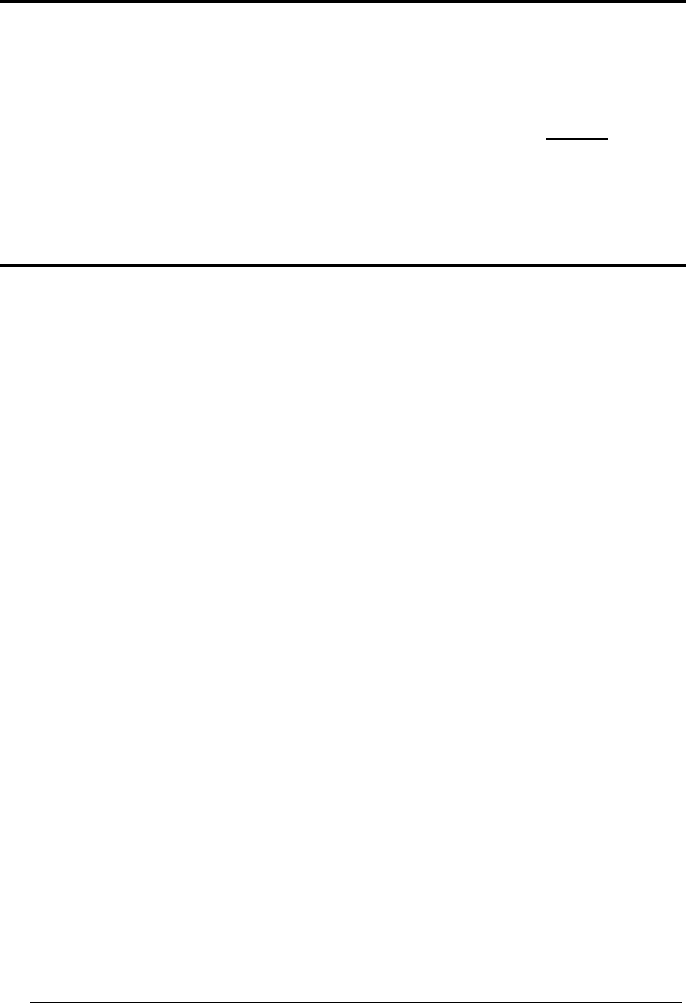
Enter Configuration Exit and Save Configuration
Ì$+;Î
CODE SELECTION
Ì$
-
?Î
104
C
ODE
93
disable the code
ÌAK0aÎ
Code 93
ÌAK1dÎ
control without transmission
of check digit
C
ODABAR
F
AMILY
disable the family
ÌAD0SÎ
c Read the desired equality control code d Read a start/stop transmission
selection
START/STOP CHARACTER
TRANSMISSION
Standard Codabar
ÌAD113Î
no start/stop character equality control
no transmission
Ì12Î
Standard Codabar
ÌAD127Î
start/stop character equality control
transmission
Ì23Î
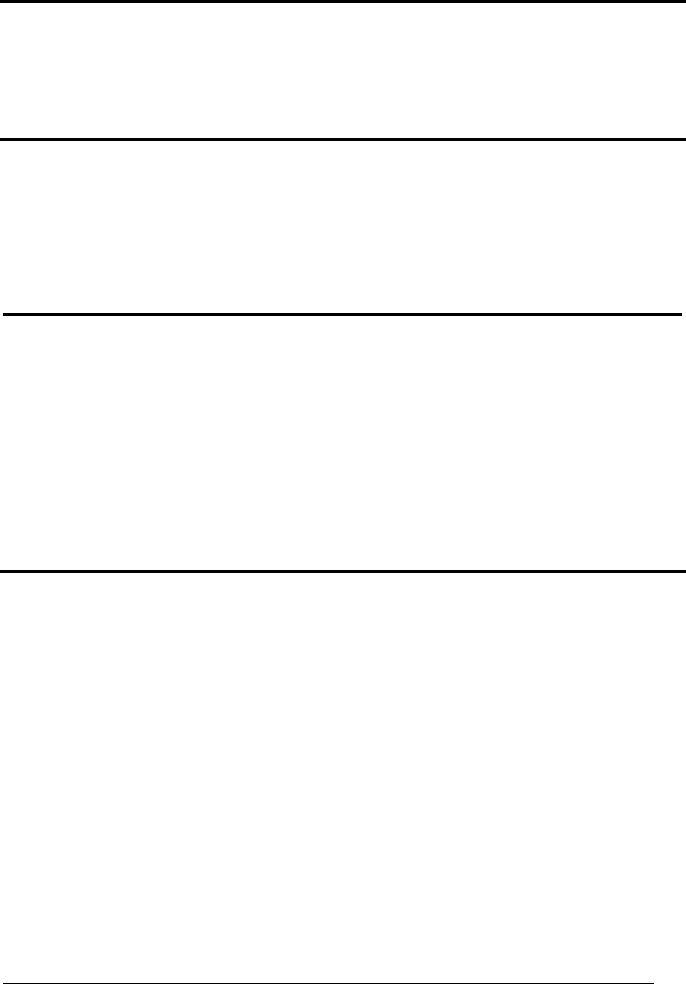
Enter Configuration Exit and Save Configuration
Ì$+;Î
CODE SELECTION
Ì$
-
?Î
105
The Codabar ABC code below uses a fixed start/stop character transmission selection.
Codabar ABC
ÌAD212)Î
no start/stop character equality control but transmission.
Codabar ABC Forced Concatenation
enable Codabar ABC with forced concatenation
ÌAD2321Î
non start/stop character equality control but transmission
CODE LENGTH (optional)
The code length selection is valid for the entire Codabar family
Read the code + 4 numbers for the code length where: set code length
First 2 digits = minimum code length.
Second 2 digits = maximum code length. ÌAD*AÎ
The maximum code length is 99 characters.
The minimum code length must always be less than or equal to the maximum.
Examples: 0199 = variable from 1 to 99 digits in the code. 1010 = 10 digit code length only.
START/STOP CHARACTER CASE IN TRANSMISSION
The start/stop character case selections below are valid for the entire Codabar family:
transmit start/stop characters in lower case
ÌADA0_Î
transmit start/stop characters in upper case
ÌADA1cÎ

Enter Configuration Exit and Save Configuration
Ì$+;Î
CODE SELECTION
Ì$
-
?Î
106
MSI
disable the family
ÌAE0UÎ
Enable the code by selecting one of the check digit selections.
no check digit control
ÌAE1XÎ
MOD10 check digit control
no check digit transmission
ÌAE2[Î
MOD10 check digit control
check digit transmission
ÌAE3^Î
MOD11 - MOD10 check digit control
no check digit transmission
ÌAE4aÎ
MOD11 - MOD10 check digit control
check digit transmission
ÌAE5dÎ
MOD10 - MOD10 check digit control
no check digit transmission
ÌAE6gÎ
MOD10 - MOD10 check digit control
check digit transmission
ÌAE7jÎ

Enter Configuration Exit and Save Configuration
Ì$+;Î
CODE SELECTION
Ì$
-
?Î
107
C
ODE
11
disable the family
ÌAG0YÎ
Enable the code by selecting one of the check digit selections.
no check digit control
ÌAG1\Î
Type C check digit control
check digit transmitted
ÌAG21<Î
Type C check digit control
check digit not transmitted
ÌAG22@Î
Type K check digit control
check digit transmitted
ÌAG31?Î
Type K check digit control
check digit not transmitted
ÌAG32CÎ
Type C and Type K
check digit control
check digits transmitted
ÌAG41BÎ
Type C and Type K
check digit control
check digits not transmitted
ÌAG42FÎ
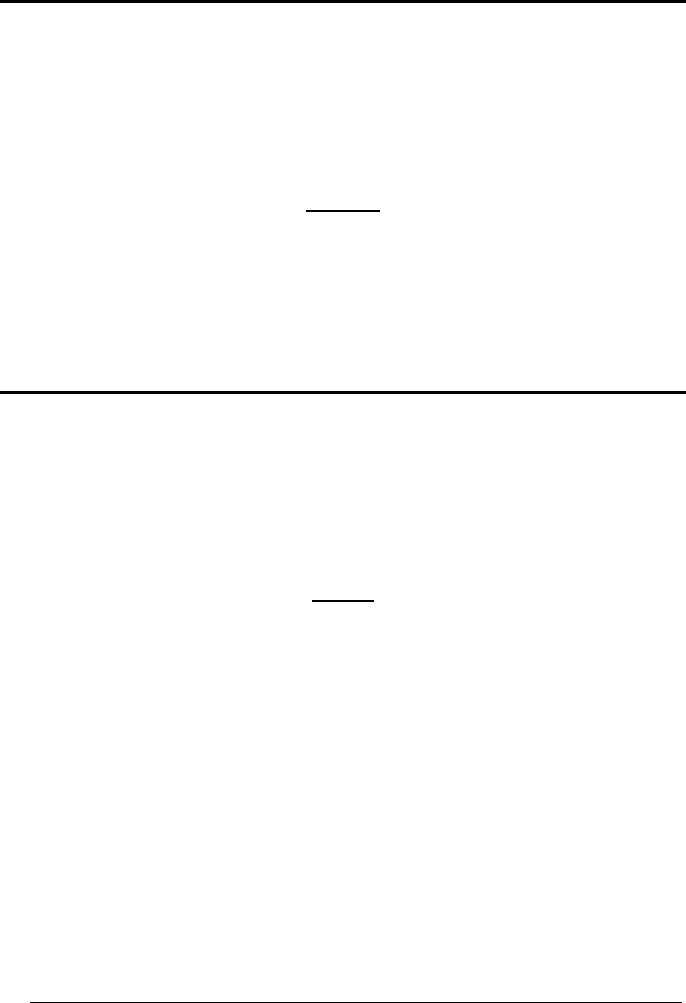
Enter Configuration Exit and Save Configuration
Ì$+;Î
CODE SELECTION
Ì$
-
?Î
108
C
ODE
16K
disable the code
ÌAJ0_Î
Code 16K
ÌAJ1bÎ
To read stacked codes, simply move the reader over the code so that each line of the code is
scanned. During this process a series of brief “ticks” indicates that reading is proceeding
correctly.
C
ODE
49
disable the code
ÌAM0eÎ
Code 49
ÌAM1hÎ
To read stacked codes, simply move the reader over the code so that each line of the code is
scanned. During this process a series of brief “ticks” indicates that reading is proceeding
correctly.

Enter Configuration Exit and Save Configuration
Ì$+;Î
CODE SELECTION
Ì$
-
?Î
109
GS1
D
ATA
B
AR
™
C
ODES
disable the family
ÌAQ0mÎ
DISABLE CODE
disable GS1 DataBar Expanded Linear and
Stacked
ENABLE CODE
ÌAQ10IÎ
enable GS1 DataBar Expanded Linear and
Stacked
disable GS1 DataBar Limited
ÌAQ11MÎ
ÌAQ20LÎ
enable GS1 DataBar Limited
disable GS1 DataBar 14 Linear and Stacked
ÌAQ21PÎ
ÌAQ30OÎ
enable GS1 DataBar 14 Linear and Stacked
ÌAQ31SÎ
To read stacked codes, simply move the reader over the code so that each line of the code is
scanned. During this process a series of brief “ticks” indicates that reading is proceeding
correctly.
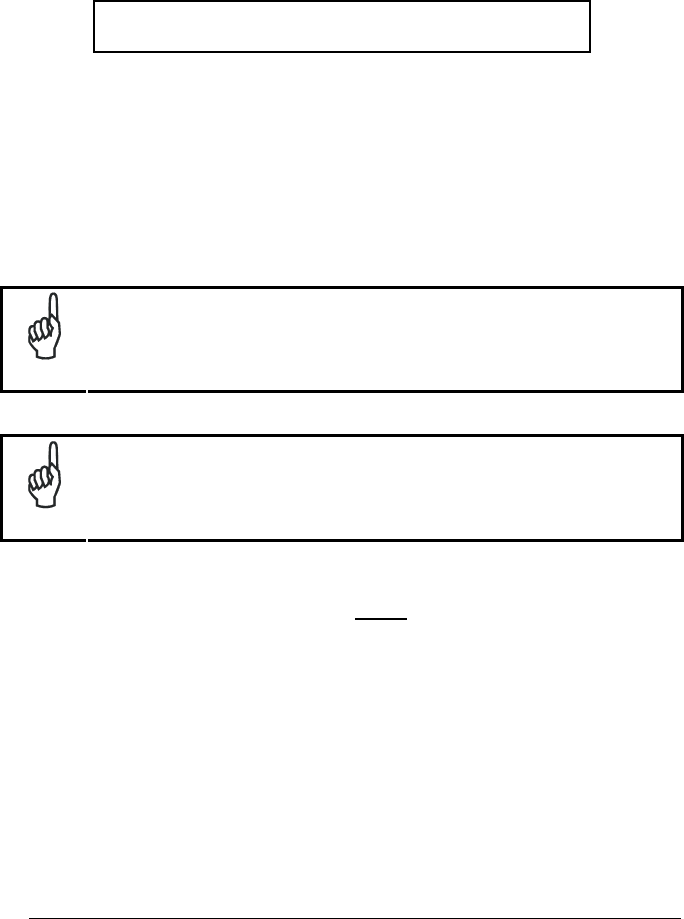
110
ADVANCED FORMATTING
NOT FOR PEN INTERFACES
~
C
ONCATENATION
~
~
A
DVANCED
F
ORMATTING
~
NOTE
Please follow the setup procedure carefully for these parameters.
NOTE
The Advanced Formatting parameters may not be compatible with the
IBM USB POS interface selection.
1. Read the Enter Configuration code ONCE, available at the top of page.
2. Read configuration codes precisely following the numbered procedure
given.
= Read the code and follow the procedure given
= Default value
3. Read the Exit and Save Configuration code ONCE, available at the top of
page.

Enter Configuration Exit and Save Configuration
Ì$+;Î
ADVANCED FORMATTING
Ì$
-
?Î
111
C
ONCATENATION
disable
ÌEI0aÎ
enable
ÌEI1dÎ
Permits the concatenation of two codes defined by code type and length. It is possible to set a
timeout for the second code reading and to define code transmission if the timeout expires.
The order of transmission is CODE 1-CODE 2.
Define Concatenation
1 Code 1
code ID
ÌEK0eÎ
Read the code type from the Code Identifier Table beginning in Appendix B.
code length
ÌEL0gÎ
Read a number in the range 01-99 from the Hex/Numeric Table.
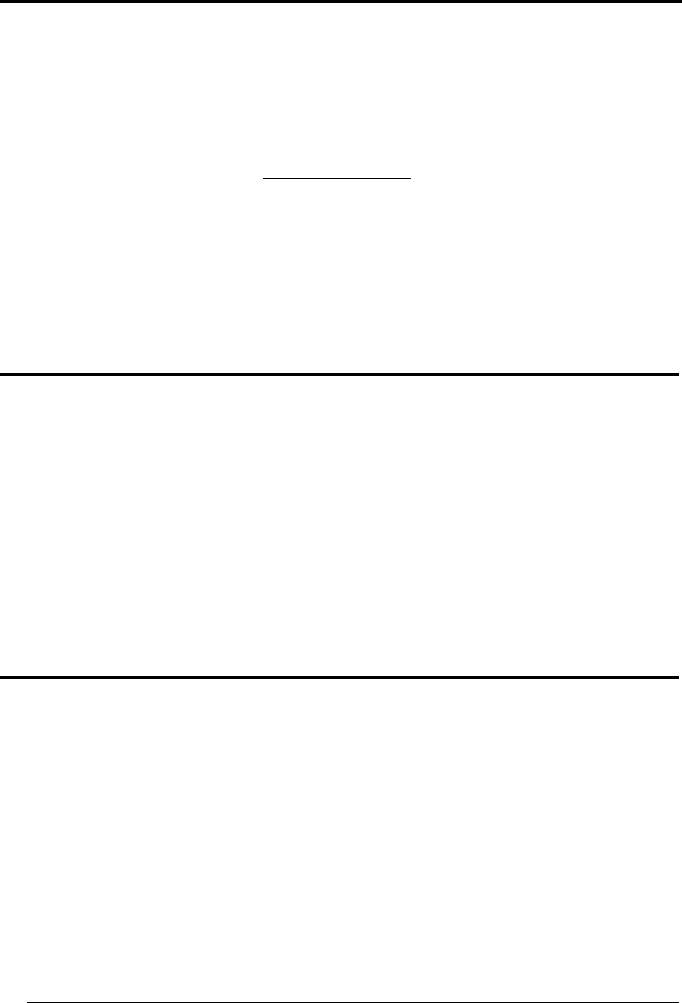
Exit and Save Configuration
ADVANCED FORMATTING
Ì$
-
?Î
112
2 Code 2
code ID
ÌEK1hÎ
Read the code type from the Code Identifier Table beginning in Appendix B.
code length
ÌEL1jÎ
Read a number in the range 01-99 from the Hex/Numeric Table.
3 Concatenation Result Code ID
use code 1 ID
ÌEN0kÎ
use code 2 ID
ÌEN1nÎ
Since you can concatenate codes from different families, you must select the Code ID character
of the resulting code. The Code ID character will be sent in the output message only if it is
enabled according to the Code Identifier selection (Datalogic, AIM, or Custom).
4 Concatenation Timeout
timeout
ÌEJ3Î
Read two numbers in the range 00 to 99
00= no timeout
01-99 = timeout from 1 to 99 seconds
Define the timeout, which determines the valid waiting period between the two codes, in order to
accept concatenation. If the timeout expires, the resulting action will be based on the following
selection. (HHDII)

Exit and Save Configuration
ADVANCED FORMATTING
Ì$
-
?Î
113
5 Transmission after Timeout
no code transmitted
after timeout
ÌEM0iÎ
only code 1 transmitted
(if read) after timeout
ÌEM1lÎ
only code 2 transmitted
(if read) after timeout
ÌEM2oÎ
either code 1 or code 2 transmitted
after timeout
ÌEM3rÎ
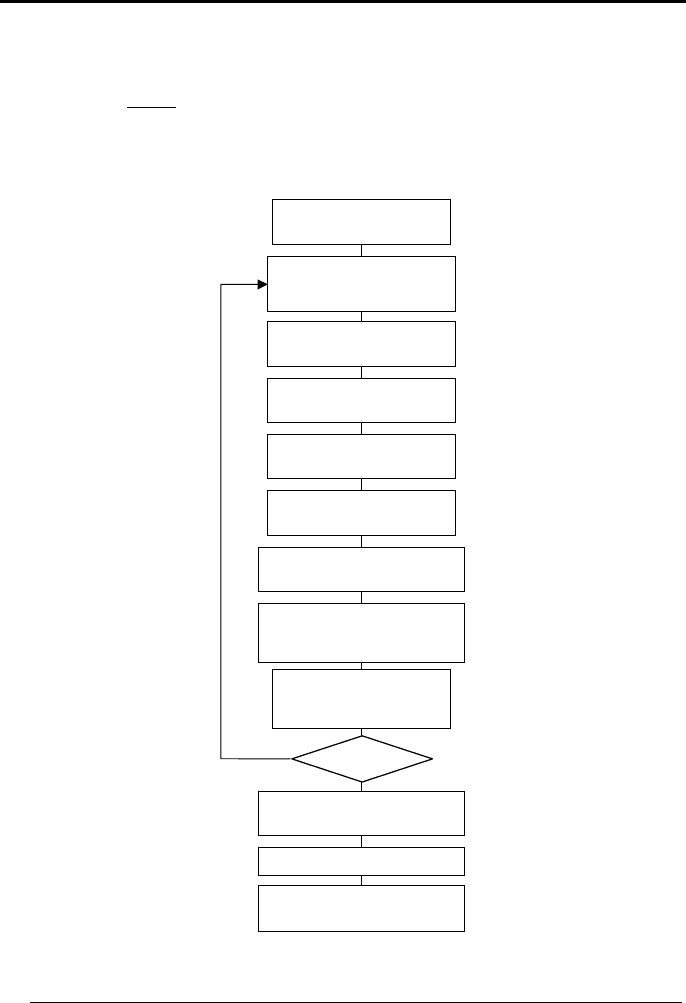
ADVANCED FORMATTING
114
A
DVANCED
F
ORMATTING
Advanced formatting has been designed to offer you complete flexibility in changing the format
of barcode data before transmitting it to the host system. This formatting will be performed
when the barcode data meets certain criteria, which you will define in the following procedure.
Up to 4 advanced code management formats can be defined and saved in memory. For each
format you must complete the entire configuration procedure:
Define another?
Enable Advanced Formats
1, 2, 3, 4
Define No Match Result
Read the Exit and Save
Configuration Command
Step 5
Divide Code into Fields
Steps 7 - 8
Add up to 2 Additional Fields
Step 1
Begin Format Definition
1, 2, 3, or 4
Step 6
Define Code Fields
Steps 2 - 4
Define Match Code Conditions
Step 9
Define Field Transmission
Step 10
Apply or Not
Standard Message Formatting
Read the Enter
Configuration Command
Step 11
End Format Definition
1, 2, 3, or 4
YES
NO

Enter Configuration Exit and Save Configuration
Ì$+;Î
ADVANCED FORMATTING
Ì$
-
?Î
115
1 Begin Format Definition
begin Format 1 definition
ÌHA0TÎ
begin Format 2 definition
ÌHA1WÎ
begin Format 3 definition
ÌHA2ZÎ
begin Format 4 definition
ÌHA3]Î
2 Match Code Type
match code type
ÌHB&Î
Read the above code + the code type to match from the Code Identifier Table in Appendix B.
OR any code type
ÌHB0VÎ
3 Match Code Length
match code length
ÌHC(Î
Read the above code + two numbers in the range 01 to 99 for the exact code length.
OR any code length
ÌHC001Î
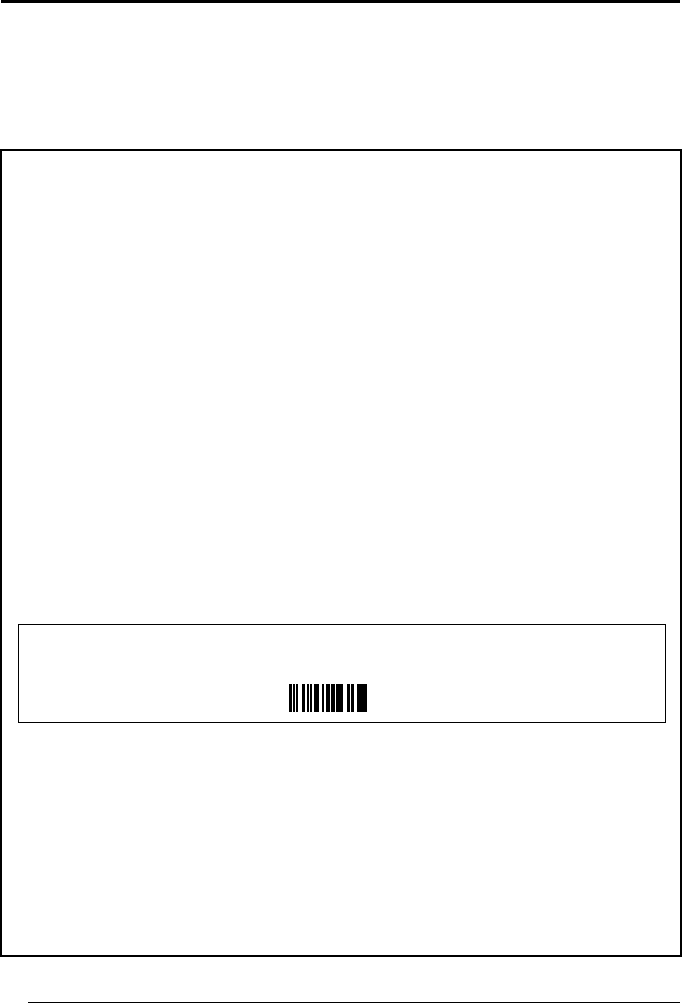
Exit and Save Configuration
ADVANCED FORMATTING
Ì$
-
?Î
116
4 Match with Predefined Characters
no match
ÌHD0HE00ÄÎ
OR
match with 1 character
ÌHD1]Î
match with a 2-character string
ÌHD2`Î
match with a 3-character string
ÌHD3cÎ
match with a 4-character string
ÌHD4fÎ
After selecting the predefined match code, read the character(s) from the HEX table. Range
of characters = 00-FE.
Example:
Match code with the 2-character predefined string = "@@".
Read
Match with a 2-character string
+ 40 + 40
AND position of first character in predefined string
ÌHE,Î
Read the above code + two numbers in the range 01 to 99 representing the character
position in the code where the first character of the predefined string must be found.
Read 00 if the match string can be found in any character position.
See par. 5.8.1 for details.
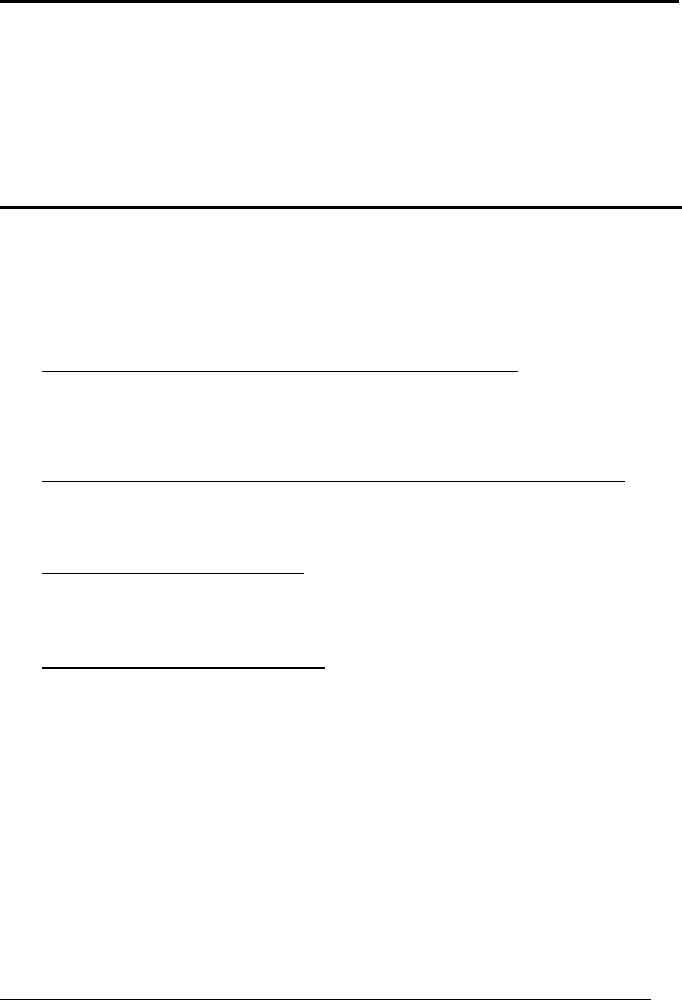
Exit and Save Configuration
ADVANCED FORMATTING
Ì$
-
?Î
117
5 Divide Code into Fields
divide code into fields
ÌHF.Î
Read one number in the range 1 to 5 to divide the code into fields.
6 Define Code Fields
define code fields
Each code field length can be set by either:
a) defining a field separator character to be found in the code itself. In this case you can
choose to discard the code separator character or include it as the last character of the
field.
OR BY
b) defining a match character to be found consecutively repeated in the code itself. In this
case the field ends with the first character that does not match.
OR BY
c) specifying a specific character length up to the maximum of 99 characters.
OR BY
d) selecting the last field as variable length (if any).
You must define the same number of fields as selected in step 5, including fields that will
not be transmitted.
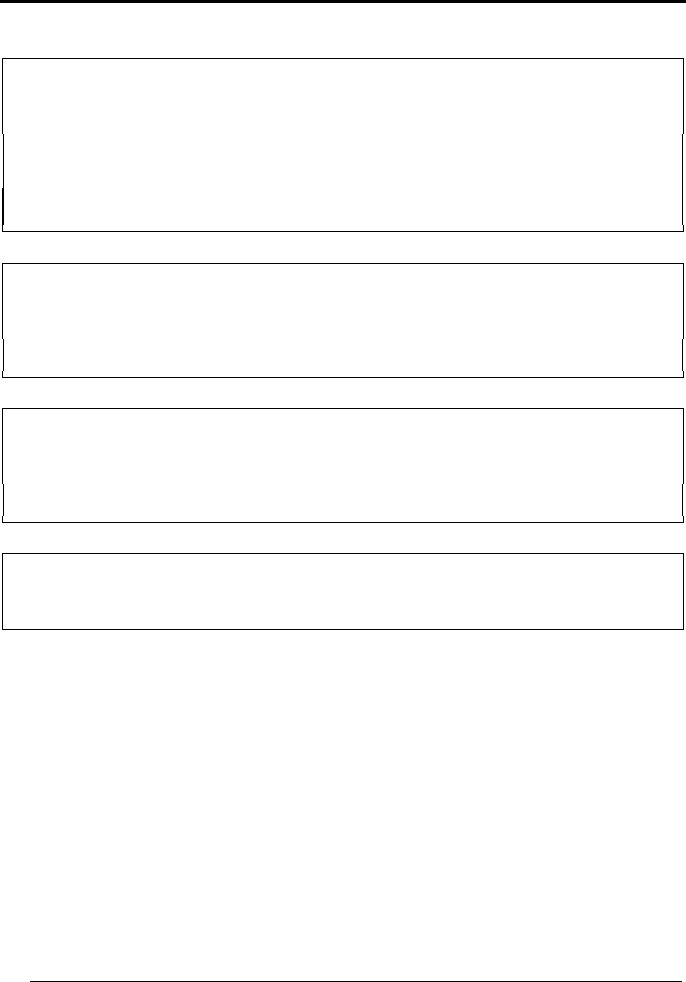
Exit and Save Configuration
ADVANCED FORMATTING
Ì$
-
?Î
118
DEFINE FIELD 1 BY:
EITHER
field separator
a) ÌHG0`Î
Read the field separator character from the HEX table. Range of characters = 00-FE.
discard separator include separator
Ì01Î Ì12Î
OR
match character
b) ÌHG3iÎ
Read the match character from the HEX table. Range of characters = 00-FE.
OR
field length
c) ÌHG1cÎ
Read two numbers in the range 01 to 99 to define the field length.
OR
this is the last field (variable length)
d) ÌHG2fÎ
AND
Field 1 Terminators
no field terminators
ÌHH0bÎ
1 field terminator 2 field terminators
ÌHH1eÎ
ÌHH2hÎ
Read the field terminator character(s) from the HEX table. Valid range of characters for all
readers = 00-FE. For Wedge and USB-KBD interface, it is also possible to read the Special
Key(s) on page 74.
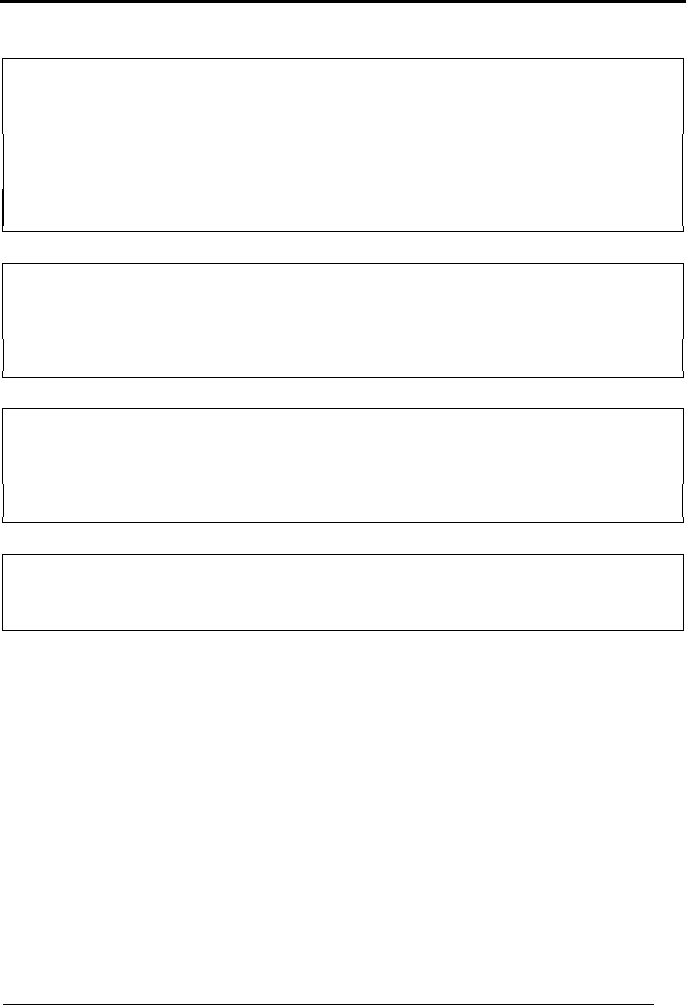
Exit and Save Configuration
ADVANCED FORMATTING
Ì$
-
?Î
119
DEFINE FIELD 2 BY:
EITHER
field separator
a) ÌHG0`Î
Read the field separator character from the HEX table. Range of characters = 00-FE.
discard separator include separator
Ì01Î Ì12Î
OR
match character
b) ÌHG3iÎ
Read the match character from the HEX table. Range of characters = 00-FE.
OR
field length
c) ÌHG1cÎ
Read two numbers in the range 01 to 99 to define the field length.
OR
this is the last field (variable length)
d) ÌHG2fÎ
AND
Field 2 Terminators
no field terminators
ÌHH0bÎ
1 field terminator 2 field terminators
ÌHH1eÎ
ÌHH2hÎ
Read the field terminator character(s) from the HEX table. Valid range of characters for all
readers = 00-FE. For Wedge and USB-KBD interface, it is also possible to read the Special
Key(s) on page 74.
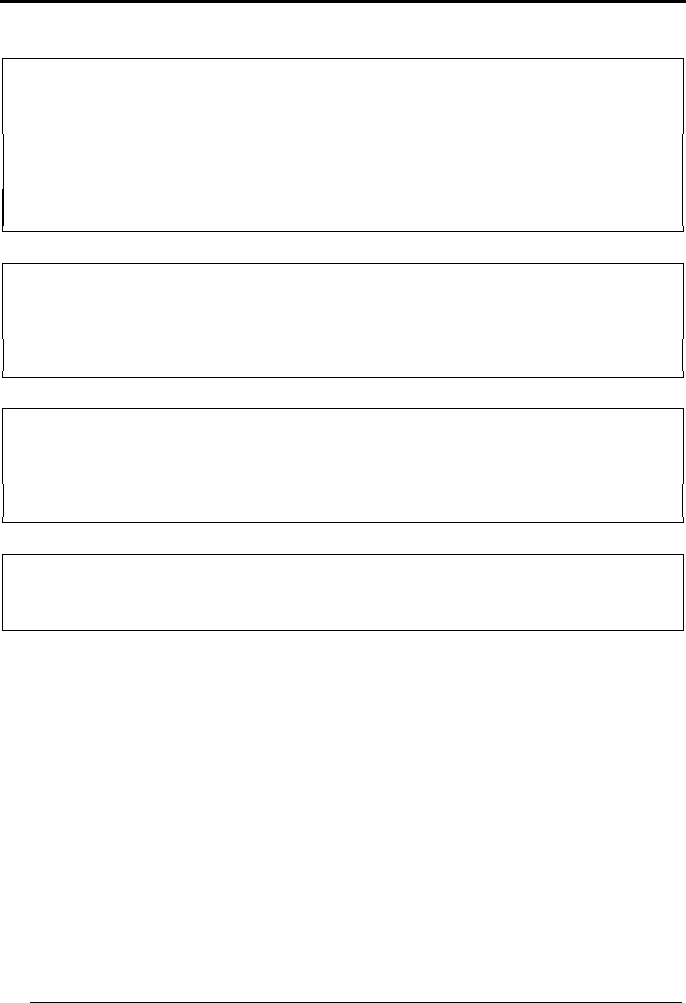
Exit and Save Configuration
ADVANCED FORMATTING
Ì$
-
?Î
120
DEFINE FIELD 3 BY:
EITHER
field separator
a) ÌHG0`Î
Read the field separator character from the HEX table. Range of characters = 00-FE.
discard separator include separator
Ì01Î Ì12Î
OR
match character
b) ÌHG3iÎ
Read the match character from the HEX table. Range of characters = 00-FE.
OR
field length
c) ÌHG1cÎ
Read two numbers in the range 01 to 99 to define the field length.
OR
this is the last field (variable length)
d) ÌHG2fÎ
AND
Field 3 Terminators
no field terminators
ÌHH0bÎ
1 field terminator 2 field terminators
ÌHH1eÎ
ÌHH2hÎ
Read the field terminator character(s) from the HEX table. Valid range of characters for all
readers = 00-FE. For Wedge and USB-KBD interface, it is also possible to read the Special
Key(s) on page 74.
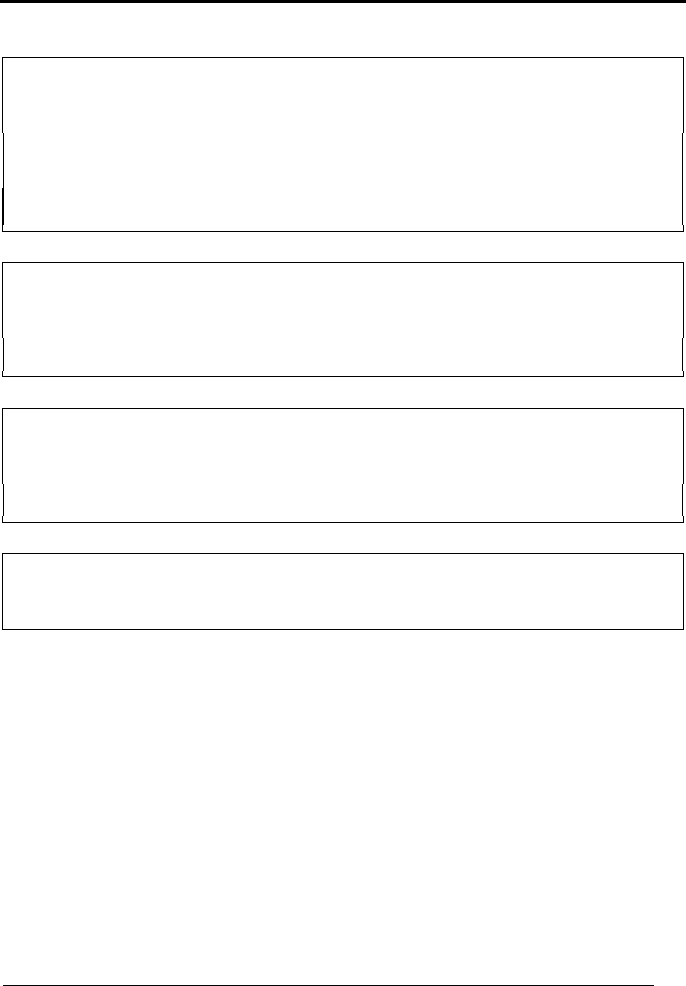
Exit and Save Configuration
ADVANCED FORMATTING
Ì$
-
?Î
121
DEFINE FIELD 4 BY:
EITHER
field separator
a) ÌHG0`Î
Read the field separator character from the HEX table. Range of characters = 00-FE.
discard separator include separator
Ì01Î Ì12Î
OR
match character
b) ÌHG3iÎ
Read the match character from the HEX table. Range of characters = 00-FE.
OR
field length
c) ÌHG1cÎ
Read two numbers in the range 01 to 99 to define the field length.
OR
this is the last field (variable length)
d) ÌHG2fÎ
AND
Field 4 Terminators
no field terminators
ÌHH0bÎ
1 field terminator 2 field terminators
ÌHH1eÎ
ÌHH2hÎ
Read the field terminator character(s) from the HEX table. Valid range of characters for all
readers = 00-FE. For Wedge and USB-KBD interface, it is also possible to read the Special
Key(s) on page 74.
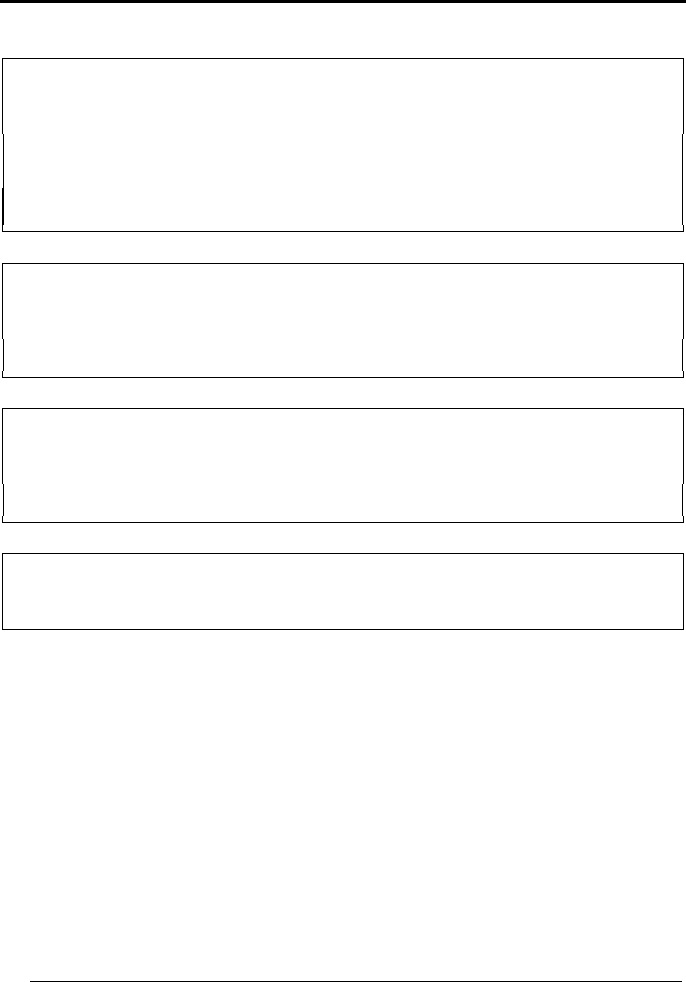
Exit and Save Configuration
ADVANCED FORMATTING
Ì$
-
?Î
122
DEFINE FIELD 5 BY:
EITHER
field separator
a) ÌHG0`Î
Read the field separator character from the HEX table. Range of characters = 00-FE.
discard separator include separator
Ì01Î Ì12Î
OR
match character
b) ÌHG3iÎ
Read the match character from the HEX table. Range of characters = 00-FE.
OR
field length
c) ÌHG1cÎ
Read two numbers in the range 01 to 99 to define the field length.
OR
this is the last field (variable length)
d) ÌHG2fÎ
AND
Field 5 Terminators
no field terminators
ÌHH0bÎ
1 field terminator 2 field terminators
ÌHH1eÎ
ÌHH2hÎ
Read the field terminator character(s) from the HEX table. Valid range of characters for all
readers = 00-FE. For Wedge and USB-KBD interface, it is also possible to read the Special
Key(s) on page 74.

Exit and Save Configuration
ADVANCED FORMATTING
Ì$
-
?Î
123
7 First Additional Fixed Field
no fixed field
ÌHI0dÎ
1 character fixed field
ÌHI1gÎ
2 character fixed field
ÌHI2jÎ
3 character fixed field
ÌHI3mÎ
4 character fixed field
ÌHI4pÎ
5 character fixed field
ÌHI5sÎ
6 character fixed field
ÌHI6vÎ
After selecting one of the Additional Fixed Field codes, read the corresponding character(s)
from the HEX table. Range of characters = 00-FE. For Wedge and USB-KBD interface, it is also
possible to read the Special Key(s) on page 74.
Example:
4 Character Fixed Field
+ 4D + 41 + 49 + 4E = MAIN

Exit and Save Configuration
ADVANCED FORMATTING
Ì$
-
?Î
124
8 Second Additional Fixed Field
no fixed field
ÌHJ0fÎ
1 character fixed field
ÌHJ1iÎ
2 character fixed field
ÌHJ2lÎ
3 character fixed field
ÌHJ3oÎ
4 character fixed field
ÌHJ4rÎ
5 character fixed field
ÌHJ5uÎ
6 character fixed field
ÌHJ6xÎ
After selecting one of the Additional Fixed Field codes, read the corresponding character(s)
from the HEX table. Range of characters = 00-FE. For Wedge and USB-KBD interface, it is also
possible to read the Special Key(s) on page 74.
Example:
3 Character Fixed Field
+ 53 + 45 + 54 = SET
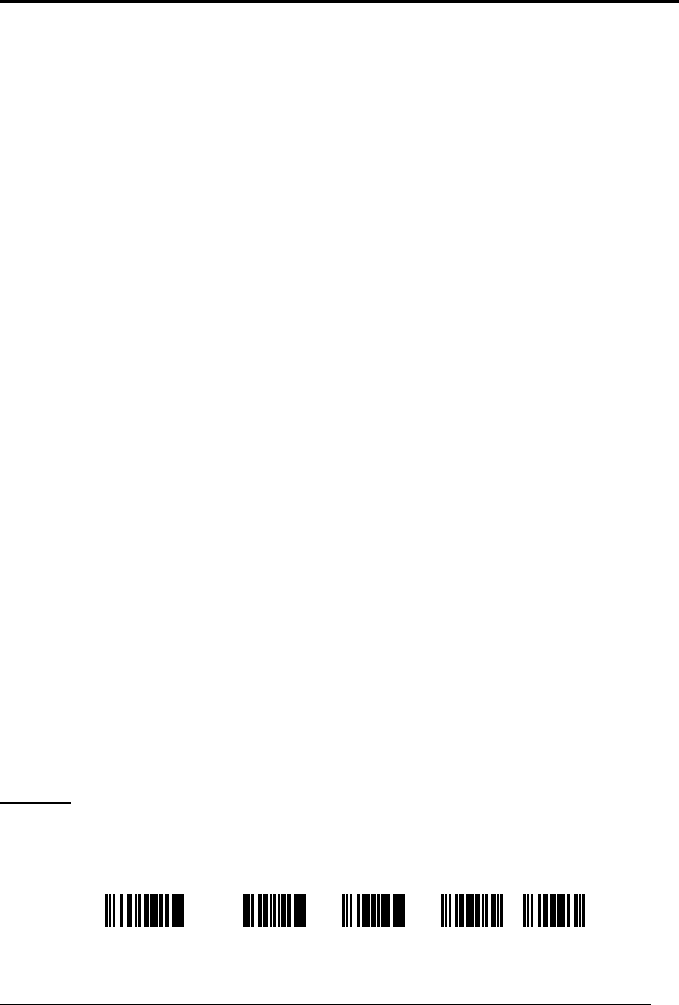
Exit and Save Configuration
ADVANCED FORMATTING
Ì$
-
?Î
125
9 Field Transmission
number of fields to transmit
ÌHK8Î
Read one number in the range 1 to 7 for the number of fields to transmit. Include only fields to
be transmitted.
Field Order Transmission
Read the codes corresponding to the fields to transmit in the order in which they are to be
transmitted. A field can be transmitted more than once. See example.
field 1
Ì12Î
field 2
field 3
Ì23Î
Ì34Î
field 4
field 5
Ì45Î
Ì56Î
additional field 1
additional field 2
Ì67Î
Ì78Î
Example:
The barcode is divided into 3 defined fields plus 1 additional fixed field.
Transmit in the order: Field 2, Additional Field 1, Field 1, Field 2.
Number of Fields
to Transmit
+ 4 +
Field 2
+
Additional Field 1
+
Field 1
+
Field 2
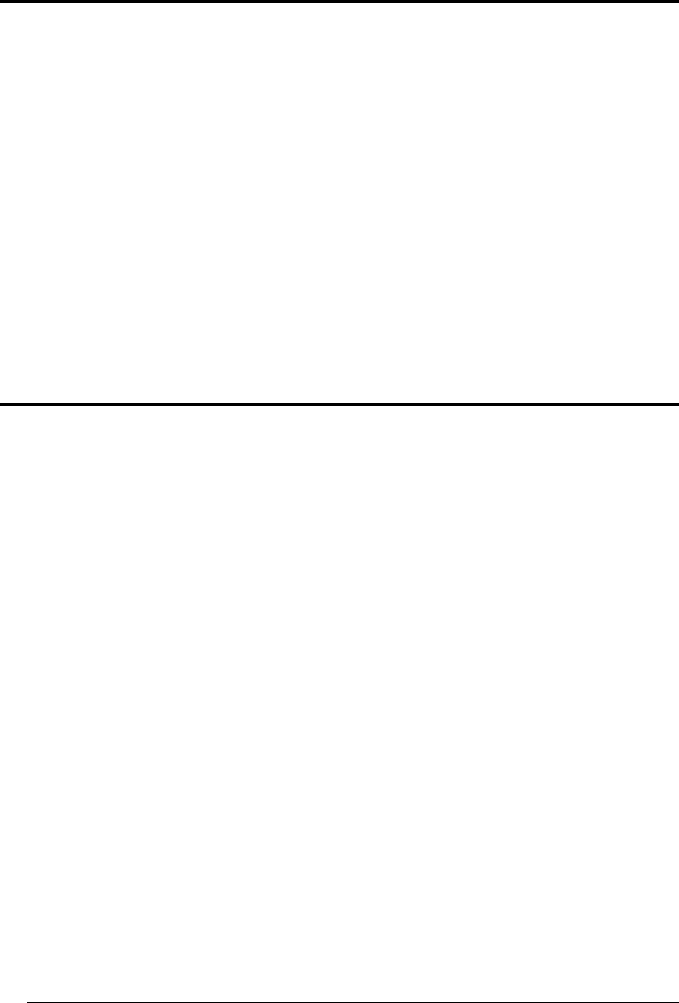
Exit and Save Configuration
ADVANCED FORMATTING
Ì$
-
?Î
126
10 Standard Formatting
do not apply standard formatting
ÌHL0jÎ
apply standard formatting
ÌHL1mÎ
POWERSCAN® D8330: After performing Advanced Formatting on the barcode read, Standard
Formatting (Headers, Code Length, Code ID, Terminators) can be applied to the message to be
transmitted.
POWERSCAN® M8300: After performing Advanced Formatting on the barcode read, Standard
Formatting (Code Length, Code ID) can be applied to the message to be transmitted.
11 End Format Definition
end Format 1 definition
ÌHM0lÎ
end Format 2 definition
ÌHM1oÎ
end Format 3 definition
ÌHM2rÎ
end Format 4 definition
ÌHM3uÎ
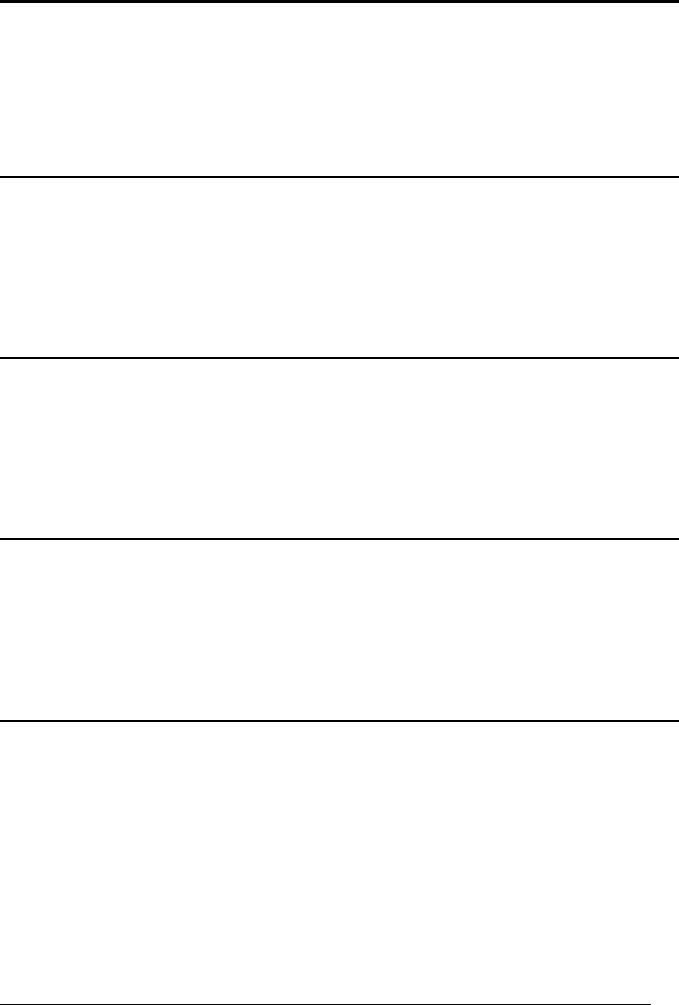
Enter Configuration Exit and Save Configuration
Ì$+;Î
ADVANCED FORMATTING
Ì$
-
?Î
127
Enable Advanced Format
no Advanced Formats enabled
ÌHN0nÎ
Advanced Format 1
enable
ÌHN11NÎ disable
ÌHN10JÎ
Advanced Format 2
enable
ÌHN21QÎ disable
ÌHN20MÎ
Advanced Format 3
enable
ÌHN31TÎ disable
ÌHN30PÎ
Advanced Format 4
enable
ÌHN41WÎ disable
ÌHN40SÎ

Enter Configuration Exit and Save Configuration
Ì$+;Î
ADVANCED FORMATTING
Ì$
-
?Î
128
No Match Result
clear data - no transmission
ÌHO0pÎ
transmit data using standard
format
ÌHO1sÎ
This selection determines the action to be taken when codes read do not conform to the
advanced format requisites (no match).
• Codes not matching can be ignored, cleared from memory and not transmitted.
• Codes not matching can be transmitted using the Standard formatting (Headers, Code
Length, Code ID, Terminators).
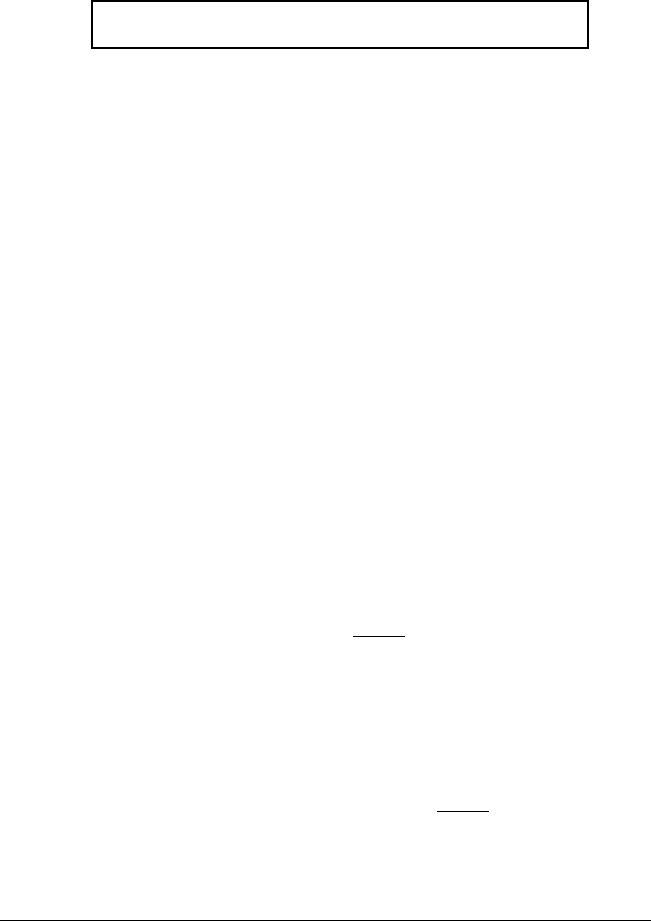
129
RADIO PARAMETERS
PowerScan® M8300 Series readers only
~
R
ADIO
P
ROTOCOL
T
IMEOUT
~
~
R
ADIO
RX
T
IMEOUT
~
~
P
OWER
-O
FF
T
IMEOUT
~
~
T
RANSMISSION
M
ODE
~
~
B
EEPER
C
ONTROL FOR
R
ADIO
R
ESPONSE
~
~
S
INGLE
S
TORE
~
~
B
ATCH
M
ODE
~
~
F
IND
M
E
~
1. Read the Enter Configuration code ONCE, available at the top of each page.
2. Read configuration codes from the desired groups.
= Read the code and follow the procedure given
3. Read the Exit and Save Configuration code ONCE, available at the top of
each page.

Enter Configuration Exit and Save Configuration
Ì$+;Î
RADIO PARAMETERS
Ì$
-
?Î
130
R
ADIO
P
ROTOCOL
T
IMEOUT
radio protocol timeout
ÌRH<Î
Read a number from the table where:
02-19 = timeout from 2 to 19 seconds
2 seconds
See par. 5.9.1 for details.
R
ADIO
RX
T
IMEOUT
radio RX timeout
disable
always on
Specify timeout
Read 2 numbers in the range 05-99:
05-99 = Radio RX timeout range from 05 to 99 seconds.
NOTE
This functionality is available only for stand-alone layout.
See par. 5.9.2 for details.
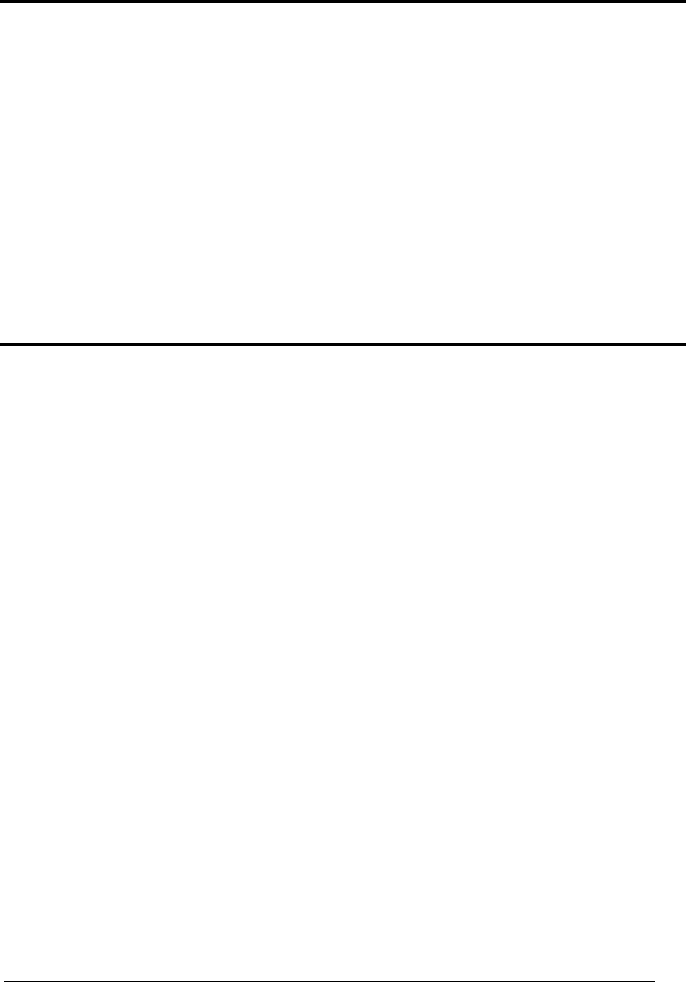
Enter Configuration Exit and Save Configuration
Ì$+;Î
RADIO PARAMETERS
Ì$
-
?Î
131
P
OWER
-O
FF
T
IMEOUT
power-off timeout
ÌRPLÎ
Read 2 numbers in the range 00-99:
00 = Power-off disabled; reader always ready
01-99 = corresponds to a max. 99 hour delay before power-off.
power-off after 4 hours.
See par 5.9.3 for details.
T
RANSMISSION
M
ODE
One Way
ÌRI0nÎ
Two-ways
ÌRI1qÎ
See par. 5.9.4 for details.

Enter Configuration Exit and Save Configuration
Ì$+;Î
RADIO PARAMETERS
Ì$
-
?Î
133
S
INGLE
S
TORE
disable
ÌRO0zÎ
one attempt
two attempts
ÌRO1}Î
ÌRO2ÄÎ
three attempts
four attempts
ÌRO3ÇÎ
ÌRO4ÊÎ
five attempts
six attempts
ÌRO5"Î
ÌRO6%Î
seven attempts
eight attempts
ÌRO7(Î
ÌRO8+Î
nine attempts
ÌRO9.Î
See par. 5.9.6 for details

Enter Configuration Exit and Save Configuration
Ì$+;Î
RADIO PARAMETERS
Ì$
-
?Î
134
B
ATCH
M
ODE
disable batch
enable normal batch
ÌBZ0ÄÎ
enable automatic batch
ÌBZ1ÇÎ
ÌBZ2ÊÎ
See par. 5.9.7 for details.
The following batch management parameters are complete commands and do not
require reading the Enter and Exit configuration codes.
start normal batch transmission
Ì#+BFlush]Î
#+BFlush delete batch data
Ì#+BReset\Î
#+BReset
F
IND
M
E
disable
enable
ÌBk0;Î
ÌBk1>Î
See par. 5.9.8 for details.

135
DISPLAY PARAMETERS
PowerScan® M8300 Series readers only
~
D
ATE AND
T
IME
~
~
C
ONTRAST
~
~
F
ONT
S
IZE
~
~
B
ACKLIGHT
~
~
D
ISPLAY
O
FF
T
IMEOUT
~
~
D
ISPLAY
M
ODE
~
~
K
EYPAD
~
1. Read the Enter Configuration code ONCE, available at the top of each page.
2. Read configuration codes from the desired groups.
= Read the code and follow the procedure given
3. Read the Exit and Save Configuration code ONCE, available at the top of
each page.
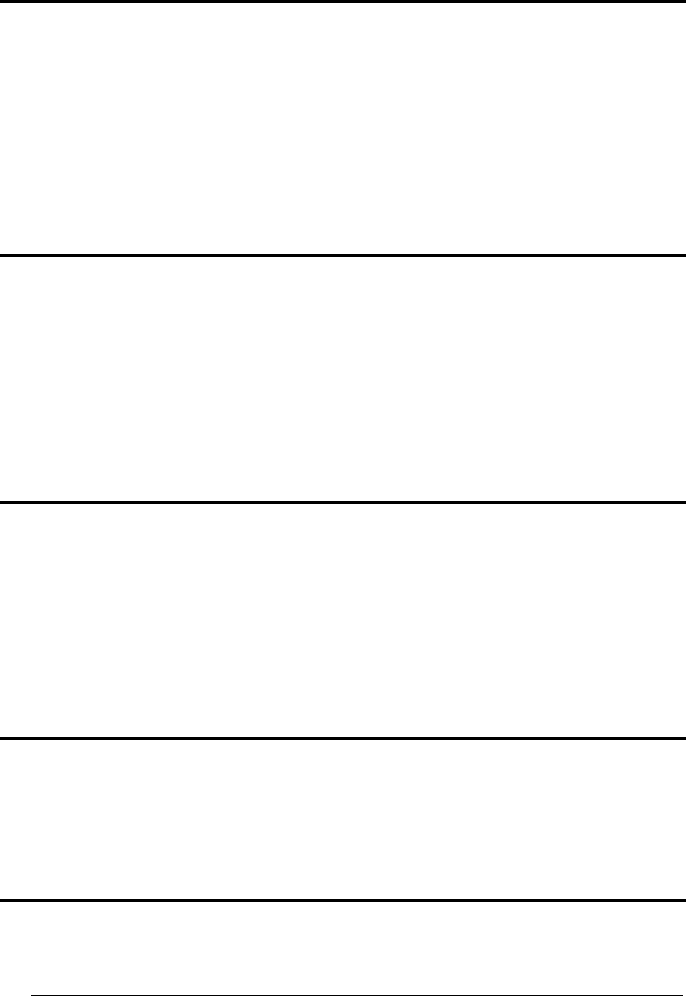
Enter Configuration Exit and Save Configuration
Ì$+;Î
DISPLAY PARAMETERS
Ì$
-
?Î
136
D
ATE AND
T
IME
set date
ÌIA%Î
set time
Read 6 numbers for DDMMYY
ÌIB'Î
Read 4 numbers for HHMM
C
ONTRAST
lighter
ÌIC0YÎ
darker
ÌIC1\Î
Read the code until the desired contrast is reached.
F
ONT
S
IZE
small
ÌID0[Î
medium
large
ÌID1^Î
ÌID2aÎ
B
ACKLIGHT
backlight off
ÌIE0]Î
backlight on
ÌIE1`Î
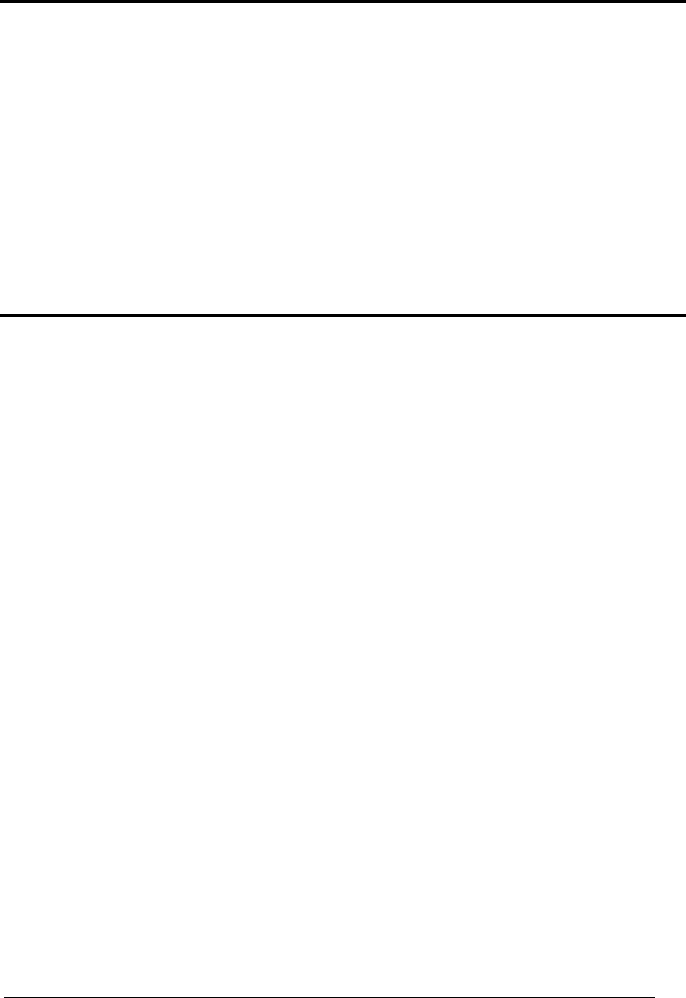
Enter Configuration Exit and Save Configuration
Ì$+;Î
DISPLAY PARAMETERS
Ì$
-
?Î
137
D
ISPLAY
-O
FF
T
IMEOUT
timeout
ÌIF/Î
Read 2 numbers in the range 00-99:
00 = disables display timeout (always on)
01 to 99 = timeout from 1 to 99 seconds.
display-off after 8 seconds.
delay disabled
D
ISPLAY
M
ODE
normal
ÌIG0aÎ
local echo
clear display after decode
ÌIG1dÎ
ÌIG2gÎ
See par. 5.10.1 for details.

Enter Configuration Exit and Save Configuration
Ì$+;Î
DISPLAY PARAMETERS
Ì$
-
?Î
138
K
EYPAD
disable reader keypad
ÌIK0iÎ
enable reader keypad and select characters
ÌIK1lÎ
Read 3 HEX characters in the range 00-FE,
corresponding to the left, center and right keys
respectively.
FF = KeyID disabled
left = '<'
center = '='
right = '>'
See par. 6.2 for details.
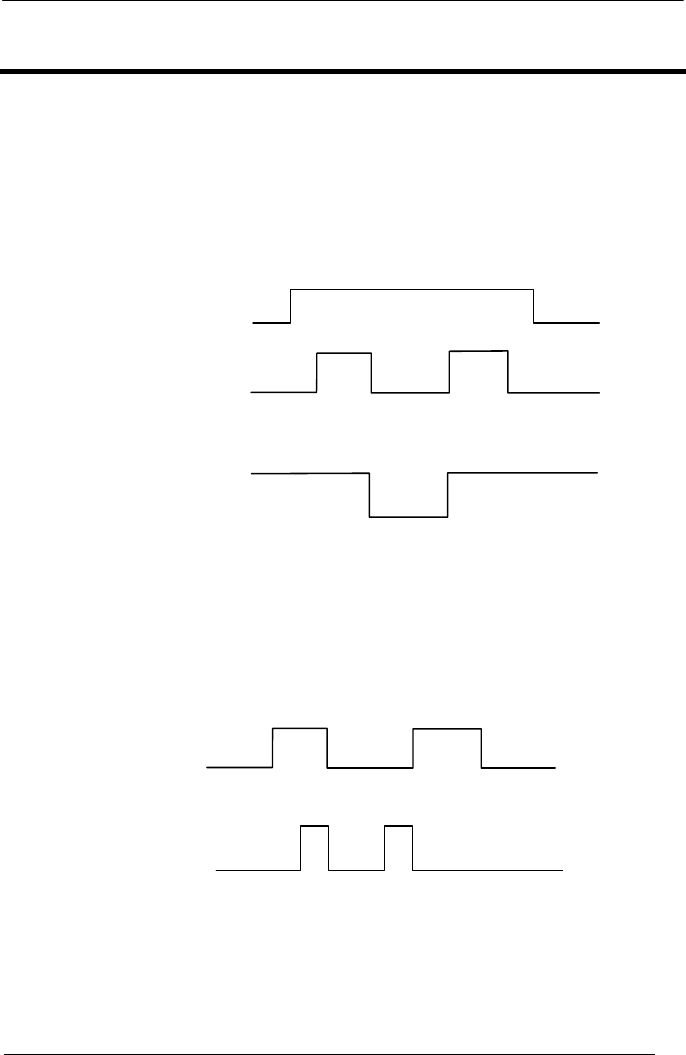
REFERENCES
139
5 REFERENCES
5.1 RS-232 PARAMETERS
5.1.1 Handshaking
Hardware handshaking: (RTS/CTS)
The RTS line is activated by the decoder before transmitting a character.
Transmission is possible only if the CTS line (controlled by the Host) is active.
RTS
Transmitted data Transmitted data
TX
CTS Host busy
Signals at
EIA levels
RTS/CTS handshaking
Software handshaking: (XON/XOFF)
During transmission, if the Host sends the XOFF character (13 Hex), the decoder
interrupts the transmission with a maximum delay of one character and only resumes
when the XON character (11 Hex) is received.
Host read
y
Host busy
XON XOFF
RX
Transmitted dataTransmitted data
TX
XON/XOFF handshaking
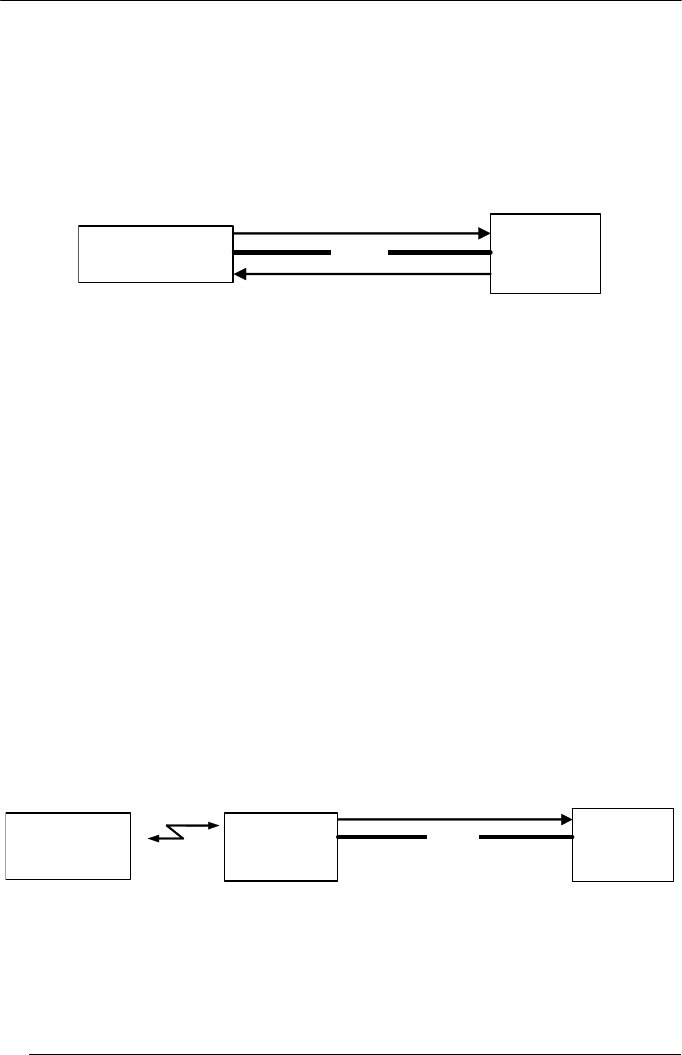
POWERSCAN® D8330/M8300
140
5.1.2 ACK/NACK Protocol
PowerScan® D8330 Readers
This parameter sets a transmission protocol in which the Host responds to the reader
after every code transmitted. The Host sends an ACK character (06 HEX) in the case
of good reception or the NACK character (15 HEX) requesting re-transmission, in the
case of bad reception.
PowerScan® D8330 Host
ACK or NACK
data
cable
ACK/NACK enabled
If the reader does not receive an ACK or NACK, transmission is ended after the
RX Timeout (see par. 5.1.4).
When ACK/NACK protocol is enabled, FIFO must be disabled manually, see par.
5.1.3.
PowerScan® M8300 Readers
The transmission protocol takes place between reader, cradle and Host. The reader
passes its data (code read) to the cradle, which sends it to the Host. The
management of responses (from Host or cradle) depends on the Transmission Mode
parameter, see par. 5.9.4.
In the following descriptions the completed transmission is indicated by the Beeper
Control for Radio Response parameter with its default setting to Normal, see par.
5.9.5.
When ACK/NACK is disabled (in One-Way tx mode), there is no control from cradle
to Host transmission, the reader responds with the good reception tone.
BC-80X0 Host
data
cable
PowerScan®
M8300
data
Transmission Mode = One
-
Way
good RX
beep
ACK/NACK disabled
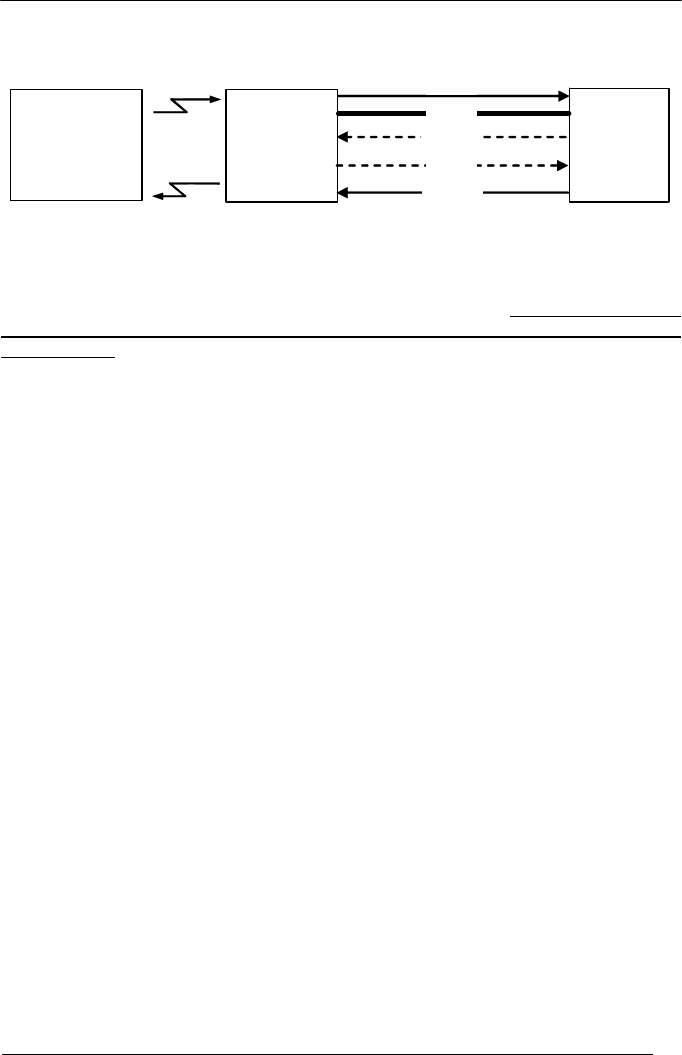
REFERENCES
141
BC-80X0
Host
data
cable
PowerScan®
M8300
data
NACK
ACK
good RX
beep
Transmission Mode = Two-Ways
data
ACK/NACK enabled
When ACK/NACK is enabled (in Two-Way tx mode), the Host sends an ACK
character (06 HEX) in the case of good reception or the NACK character (15 HEX)
requesting re-transmission, in the case of bad reception. Only after the ACK
character is received by the BC-80X0 does the reader respond with the good
reception tone.
If the BC-80X0 does not receive an ACK or NACK, transmission is ended after the
RX Timeout, see par. 5.1.4. See also Radio Protocol Timeout, par. 5.9.1.
When ACK/NACK protocol is enabled, FIFO must be disabled manually, see par.
5.1.3.
5.1.3 FIFO
PowerScan® D8330 Readers
This parameter determines whether data (barcodes) are buffered on a First In First
Out basis allowing faster data collection in certain cases for example when using
slow baud rates and/or hardware handshaking.
If the FIFO buffering is enabled, codes are collected and sent out on the serial line in
the order of acquisition. About 800 characters can be collected (buffer full), after
which the reader signals an error and discards any further codes until the
transmission is restored.
If the FIFO buffering is disabled, each code must be transmitted before another one
can be read.
PowerScan® M8300 Readers
If enabled, the BC-80X0 collects all messages sent by PowerScan® M8300 and
sends them in order of acquisition to the connected Host.
If disabled, PowerScan® M8300 blocks message transmission until the BC-80X0 has
completed transmission towards the Host.

POWERSCAN® D8330/M8300
142
5.1.4 RX Timeout
When the RS-232 interface is selected, the Host can be used to configure the device
by sending it command strings (see Appendix A).
This parameter can be used to automatically end data reception from the Host after
the specified period of time.
If no character is received from the Host, after the timeout expires, any incomplete
string (any string not terminated by <CR>) is flushed from the device buffer.
5.2 PEN PARAMETERS
5.2.1 Minimum Output Pulse
This parameter sets the duration of the output pulse corresponding to the narrowest
element in the barcode. In this way the code resolution is controlled by the signal
sent to the decoder, independently of the physical resolution of the code read.
The shortest pulse (200 μs) corresponds to a high-resolution code emulation and
therefore a shorter transfer speed to the decoder (for decoders able to work on high
resolution codes). Likewise, longer pulses correspond to low-resolution code
emulation and therefore a longer transfer time to the decoder.
5.2.2 Conversion to Code 39 and Code 128
PowerScan® D8330 Series Readers
When using these readers it is possible to convert all codes to Code 39. By disabling
this option the decoded codes will be transmitted in their original format, except for
the following codes, which are ALWAYS converted into Code 39 format:
MSI, Code 11, Code 16K, Code 49, GS1 DataBar™.
PowerScan® M8300 Series Readers
When using these readers it is possible to choose between converting the decoded
codes into either Code 39 format or Code 128 format. It is not possible to disable
conversion.
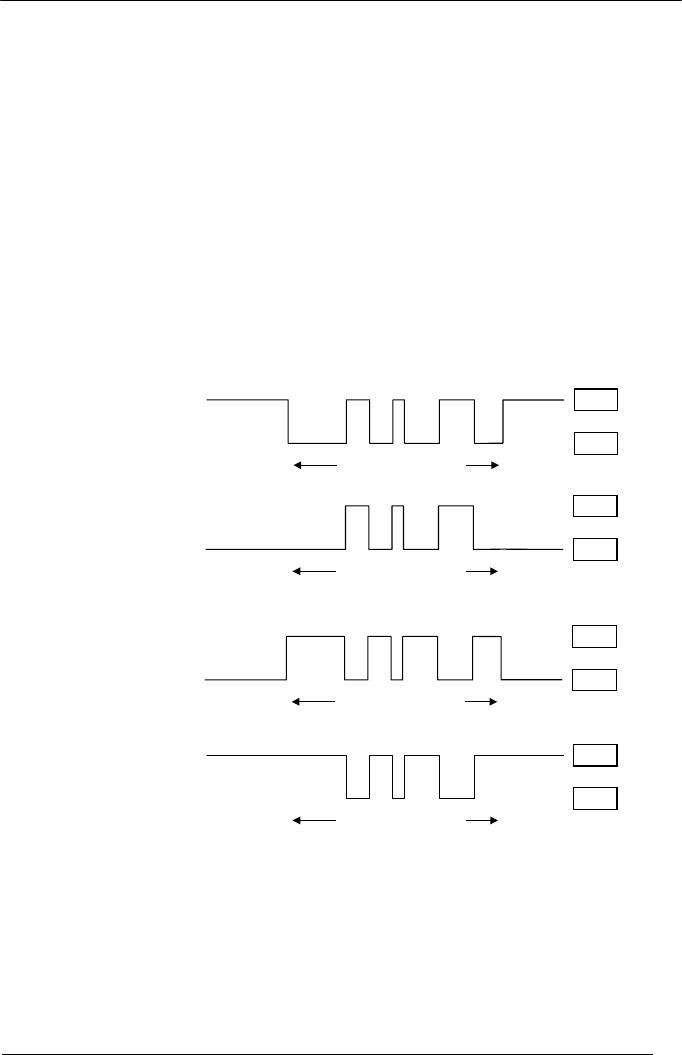
REFERENCES
143
5.2.3 Overflow
This parameter generates a white space before the first bar and after the last bar of
the code. The selections are as follows:
narrow = space 10 times the minimum output pulse.
medium = space 20 times the minimum output pulse.
wide = space 30 times the minimum output pulse.
5.2.4 Output and Idle Levels
The following state diagrams describe the different output and idle level combinations
for Pen emulation:
bar
space white
black
barcode output
idle
OUTPUT: Normal
IDLE: Normal
bar
space white
black
barcode output
idle
OUTPUT: Normal
IDLE: Inverted
bar
space white
black
barcode output
idle
IDLE: Normal
OUTPUT: Inverted
bar
space white
black
barcode output
idle
IDLE: Inverted
OUTPUT: Inverted
Output and Idle Levels
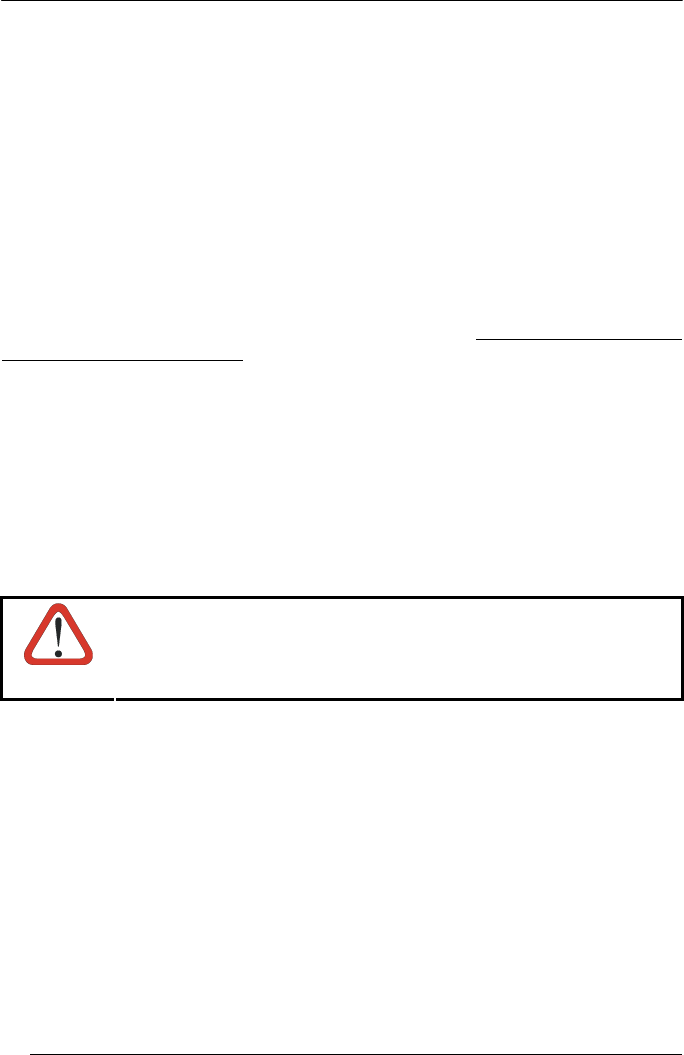
POWERSCAN® D8330/M8300
144
5.2.5 Inter-Block Delay
For the PEN Emulation interface, data are sent to the Host in fixed size blocks of 20
characters each. The inter-block delay parameter allows setting a delay between
each block sent to the Host.
5.3 NETWORK PARAMETERS
5.3.1 Slave Address Range First/Last
These parameters define the valid addresses for the Slave cradles on the network.
Valid values are in the range 0 to 1999. However, the maximum number of cradles in
a single network is 16, (including the Master if present). All cradles in the system
must have different addresses.
To reduce system boot time, it is recommended to number the Slaves consecutively,
while it is not necessary that the Master cradle address is contained in the range.
The network addresses correspond to the radio addresses, see par. 4.7.
At system power-up, the Master searches for and initializes all the Slaves found in
the valid address range. During this phase the yellow LED on the Master cradle
blinks. The time to complete the start up procedure varies depending on the
complexity of the network but is typically between a few seconds to a few minutes.
Start up cannot be interrupted. At the end of this procedure the system will be
operative and can collect data from all devices.
CAUTION
All Slaves must be powered up either before or together with the
Master. Slaves successively powered will not be recognized by
the system even if their address is in the specified range.
5.3.2 Network Warning Message
The Master cradle can transmit warning messages to the Host regarding some
network errors.
/*Slave xxxx not responding*/: when the Master can no longer communicate
with the specified Slave previously identified at start up.
/*Frame out of sequence for terminal xxxx*/: if a reader is sending data
packets out of sequence. This can happen if there are transmission problems
on the network (either connection or communication), or if the reader has
correctly transmitted data to a device not on the network (reader configuration
error).

REFERENCES
145
The message is sent in the following format:
"Message" CR LF
5.3.3 Reception Warning Message
The Master cradle can transmit warning messages to the Host regarding wrong
reception of data. Example:
/*Two-Ways Out of Sequence!(.....)*/
This message is transmitted to the Host by the Master cradle when the
Master cradle receives a closing string from the Host for a Two-way tx
communication, but this was either not open or already closed, therefore the
data will be lost. See par. 5.9.4.
5.3.4 Master Header/Terminator Selection
In addition to the standard header/terminator selection, the Master cradle can add its
own header/terminator to the entire message sent to the Host.
In the STAR-System™ network headers and terminators for all RF Devices are
disabled by default.
The Master header and terminator default values are as follows depending on the
interface selection towards the Host:
RS-232: no header, terminator CR-LF
WEDGE: no header, terminator ENTER
See par. 5.4.1 and 5.4.2.
5.4 DATA FORMAT
For an overview of Message Formatting see Chapter 6.
5.4.1 Header/Terminator Selection
The header/terminator selection is not effected by the reading of the restore default
code. In fact, header and terminator default values depend on the interface selection:
RS-232: no header, terminator CR-LF
WEDGE: no header, terminator ENTER
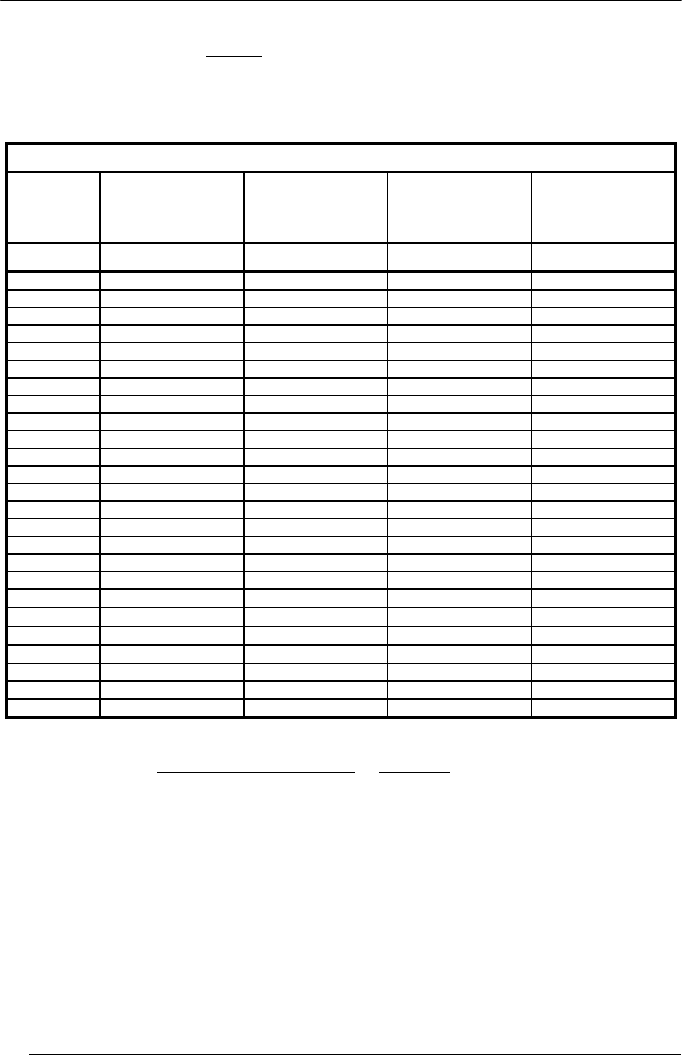
POWERSCAN® D8330/M8300
146
These default values are always restored through the reading of RS-232 or WEDGE
interface selection code, see chapter 2.
For the WEDGE interface, the following extended keyboard values can also be
configured:
EXTENDED KEYBOARD TO HEX CONVERSION TABLE
IBM AT
IBM 3153
APPLE ADB
IBM XT IBM 31xx, 32xx,
34xx, 37xx
Wyse
Digital
HEX KEY KEY KEY KEY
83 ENTER ENTER FIELD EXIT RETURN
84 TAB TAB TAB TAB
85 F1 F1 F1 F1
86 F2 F2 F2 F2
87 F3 F3 F3 F3
88 F4 F4 F4 F4
89 F5 F5 F5 F5
8A F6 F6 F6 F6
8B F7 F7 F7 F7
8C F8 F8 F8 F8
8D F9 F9 F9 F9
8E F10 F10 F10 F10
8F F11 ESC F11 F11
90 F12 BACKSPACE F12 F12
91 HOME HOME ENTER F13
92 END END RESET F14
93 PG UP PG UP INSERT F15
94 PG DOWN PG DOWN DELETE F16
95 ↑ ↑ FIELD - UP
96 ↓ ↓ FIELD + DOWN
97 ← ← ENTER (Paddle) LEFT
98 → → PRINT RIGHT
99 ESC ESC ESC
9A CTRL (Right) CTRL (Right) CTRL (Right)
9B Euro Space Space Space
For all devices using IBM AT (compatible) Wedge or USB-KBD interfaces, all values from 9C to
FE send the relative simulated keypress when available or else the relative ALT-Mode
sequence. See the Hex to Character Conversion Table in Appendix C.
For all devices using other Wedge interfaces, all values from 9C to FE send the Space
character.

Enter Configuration
Ì$+;Î
147
5.4.2 Define Special Key Sequence
The Special Key(s) for Wedge IBM AT-PS/2 and USB-KBD interface users can be
associated with a sequence of keyboard keys that otherwise could not be selected,
i.e. ALT + F6, SHIFT + F1. These Special Keys can be used for:
- Headers/Terminators
- Character Replacement
- Field Adjustment
- Custom Code ID
- Advanced Formatting – Define Field
- Advanced Formatting – Additional Fixed Field
Follow the procedure to define the desired Special Key sequence:
1. Read the Enter Configuration code above and select the Special Key to define
(one at a time):
Define Special Key 1
ÌFQ9C2>Î
Define Special Key 2
ÌFQ9D2BÎ
Define Special Key 3
ÌFQ9E2FÎ
Define Special Key 4
ÌFQ9F2JÎ
Define Special Key 5
ÌFQA02qÎ

POWERSCAN® D8330/M8300
148
2. Read only one code to be associated with the special key sequence:
SHIFT
Ì12Î
OR
CTRL
Ì23Î
OR
ALT
Ì45Î
OR
CTRL + SHIFT
Ì34Î
OR
ALT + SHIFT
Ì56Î
OR
CTRL + ALT
Ì67Î
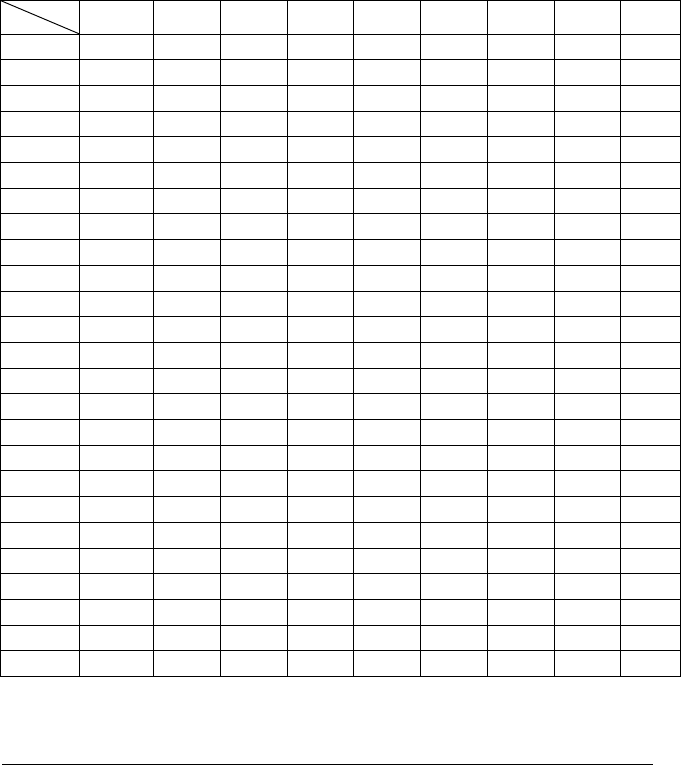
Exit and Save Configuration
Ì$
-
?Î
149
3. Select the character to be associated with the Special Key sequence by
reading the codes corresponding to the 3 character values from Appendix C.
Then, read the Exit and Save Configuration code above to complete the
Special Key sequence.
The character values having the S and A symbols require SHIFT or ALT keys
or key combinations in step 2, in particular:
S = the character is obtained in combination with SHIFT
A = the character is obtained in combination with ALT
The following character values change according to the keyboard nationality.
ITA USA FR BE DE UK ES SW JP
! 016 S 016 S 04A 03E 016 S 016
S 016
S 016
S 016
S
" 01E S 052
S 026 026 01E S 01E
S 01E
S 01E
S 01E
S
# 052 A 026 S 026
A 026
A 05D 05D 026 A 026
S 026
S
$ 025 S 025
S 05B 05B 025 S 025
S 025
S 025
A 025
S
% 02E S 02E
S 052
S 052
S 02E
S 02E
S 02E
S 02E
S 02E
S
& 036 S 03D
S 016 016 036 S 03D
S 036
S 036
S 036
S
' 04E 052 025 025
05D S 052 04E 05D
03D S
( 03E S 046
S 02E 02E 03E S 046
S 03E
S 03E
S 03E
S
) 046 S 045
S 04E 04E 046 S 045
S 046
S 046
S 046
S
* 05B S 03E
S 05D 05B S 05B 03E S 05B
S 05D
S 052
S
+ 05B 055 S 055
S 04A
S 05B 055 S 05B 04E 04C S
, 041 041 03A 03A 041 041 041 041 041
- 04A 04E 036 055 04A 04E 04A 04A 04E
. 049 049
041 S 041
S 049 049 049 049 049
/ 03D S 04A 049 S 049
S 03D
S 04A 03D S 03D
S 04A
0 045 045
045 S 045
S 045 045 045 045 045
1 016 016
016 S 016
S 016 016 016 016 016
2 01E 01E
01E S 01E
S 01E 01E 01E 01E 01E
3 026 026
026 S 026
S 026 026 026 026 026
4 025 025
025 S 025
S 025 025 025 025 025
5 02E 02E
02E S 02E
S 02E 02E 02E 02E 02E
6 036 036
036 S 036
S 036 036 036 036 036
7 03D 03D
03D S 03D
S 03D 03D 03D 03D 03D
8 03E 03E
03E S 03E
S 03E 03E 03E 03E 03E
9 046 046
046 S 046
S 046 046 046 046 046
CHA
R
KEYB
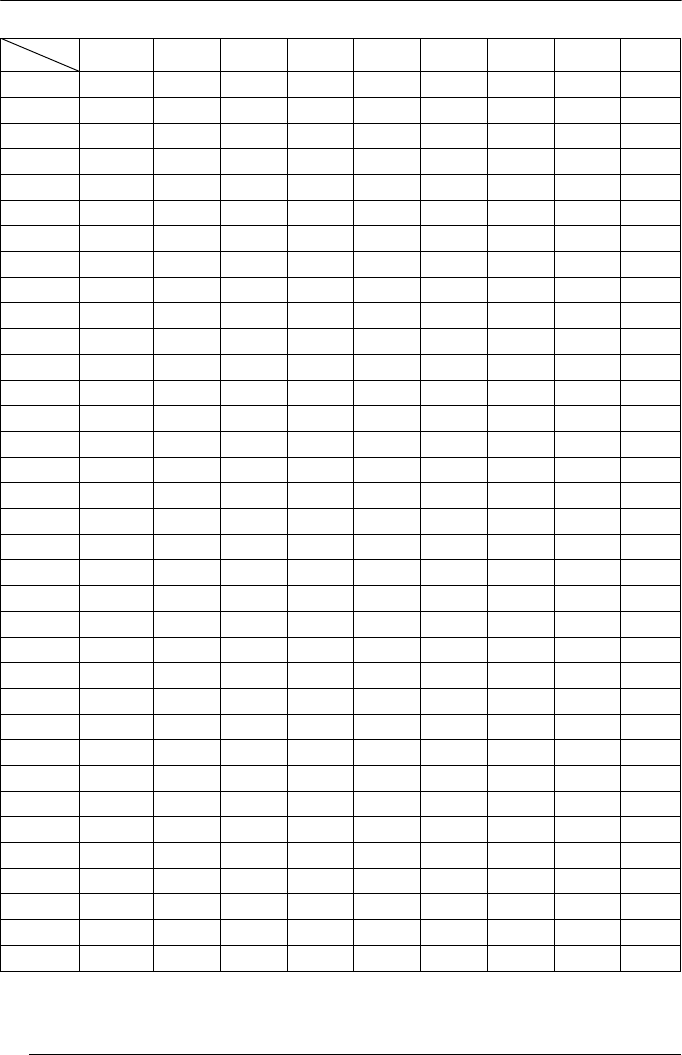
POWERSCAN® D8330/M8300
150
ITA USA FR BE DE UK ES SW JP
: 049 S 04C
S 049 049 049 S 04C
S 049
S 049
S 052
; 041 S 04C 041 041 041 S 04C 041 S 041
S 04C
< 061 041 S 061 061 061 041 S 061 061 041 S
= 045 S 055 055 04A
045 S 055 045 S 045
S 04E
S
> 061 S 049
S 061
S 061
S 061
S 049
S 061
S 061
S 049
S
? 04E 04A S 03A
S 03A
S 04E
S 04A
S 04E
S 04E
S 04A
S
@ 04C A 01E
S 045
A 01E
A 015
A 052
S 01E
A 01E
A 054
[ 054 A 054 02E A 054
A 052
S 054 054 A 03E
A 05B
\ 00E 05D
03E A 061
A 04C
S 061 00E A 04E
A 051
] 05B A 05B 04E A 05B
A 054
S 05B 05B A 046
A 05D
^ 055 S 036
S 046
A 054 00E 036 S 054
S 05B
S 055
_ 04A S 04E
S 03E 055 04A S 04E
S 04A S 04A
S 051
S
’ (accent) - 00E
03D A 05D
A 055
S 00E 054 055 S 054
S
a 01C 01C 015 015 01C 01C 01C 01C 01C
b 032 032 032 032 032 032 032 032 032
c 021 021 021 021 021 021 021 021 021
d 023 023 023 023 023 023 023 023 023
e 024 024 024 024 024 024 024 024 024
f 02B 02B 02B 02B 02B 02B 02B 02B 02B
g 034 034 034 034 034 034 034 034 034
h 033 033 033 033 033 033 033 033 033
i 043 043 043 043 043 043 043 043 043
j 03B 03B 03B 03B 03B 03B 03B 03B 03B
k 042 042 042 042 042 042 042 042 042
l 04B 04B 04B 04B 04B 04B 04B 04B 04B
m 03A 03A 04C 04C 03A 03A 03A 03A 03A
n 031 031 031 031 031 031 031 031 031
o 044 044 044 044 044 044 044 044 044
p 04D 04D 04D 04D 04D 04D 04D 04D 04D
q 015 015 01C 01C 015 015 015 015 015
r 02D 02D 02D 02D 02D 02D 02D 02D 02D
s 01B 01B 01B 01B 01B 01B 01B 01B 01B
t 02C 02C 02C 02C 02C 02C 02C 02C 02C
u 03C 03C 03C 03C 03C 03C 03C 03C 03C
v 02A 02A 02A 02A 02A 02A 02A 02A 02A
CHA
R
KEYB
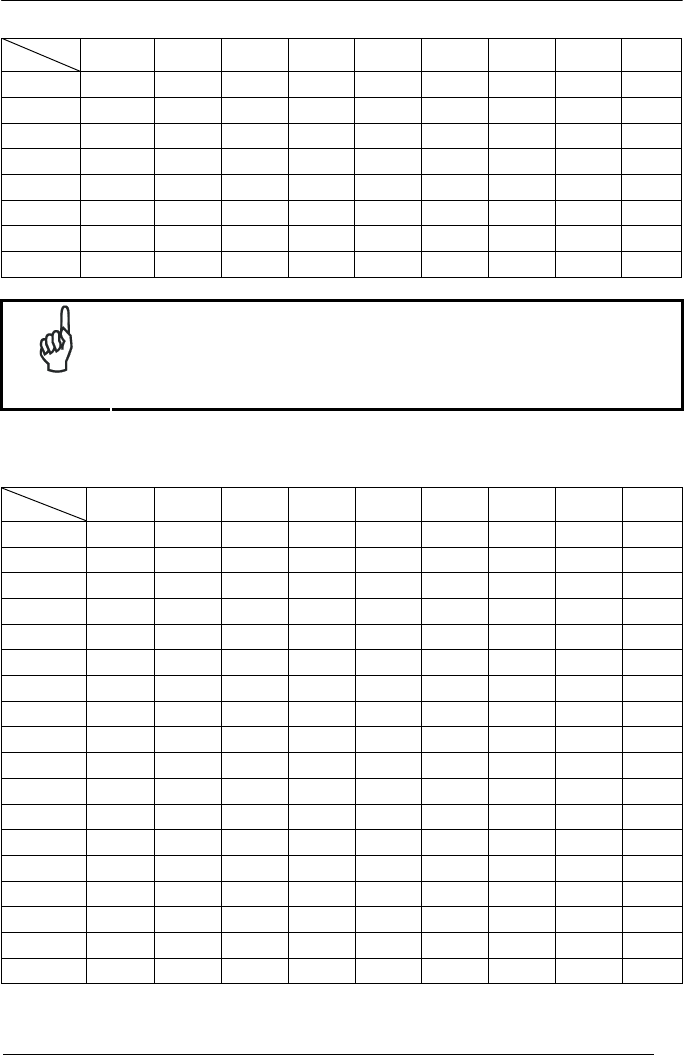
REFERENCES
151
ITA USA FR BE DE UK ES SW JP
w 01D 01D 01A 01A 01D 01D 01D 01D 01D
x 022 022 022 022 022 022 022 022 022
y 035 035 035 035 01A 035 035 035 035
z 01A 01A 01D 01D 035 01A 01A 01A 01A
{ - 054 S 025
A 046
A 052 054 S 052
A 03D
A 05B
S
| 00E S 05D
S 036
A 016
A 04C 061 S 016 A 061 A 06A
S
} - 05B S 055
A 045
A 054 05B S 05D
A 045
A 05D
S
~ - 00E S 01E
A 04A
A 04E 05D S - 05B A 055
S
NOTE
To use upper case letters, it is necessary to read one of the
SHIFT commands from step 2 before the value corresponding to
the lower case letters.
The following key values are common to all the keyboard nationalities.
ITA USA FR BE DE UK ES SW JP
ENTER 05A 05A 05A 05A 05A 05A 05A 05A 05A
TAB 00D 00D 00D 00D 00D 00D 00D 00D 00D
F1 005 005 005 005 005 005 005 005 005
F2 006 006 006 006 006 006 006 006 006
F3 004 004 004 004 004 004 004 004 004
F4 00C 00C 00C 00C 00C 00C 00C 00C 00C
F5 003 003 003 003 003 003 003 003 003
F6 00B 00B 00B 00B 00B 00B 00B 00B 00B
F7 083 083 083 083 083 083 083 083 083
F8 00A 00A 00A 00A 00A 00A 00A 00A 00A
F9 001 001 001 001 001 001 001 001 001
F10 009 009 009 009 009 009 009 009 009
F11 078 078 078 078 078 078 078 078 078
F12 007 007 007 007 007 007 007 007 007
Home 26C 26C 26C 26C 26C 26C 26C 26C 26C
End 269 269 269 269 269 269 269 269 269
PG UP 27D 27D 27D 27D 27D 27D 27D 27D 27D
PG down 27A 27A 27A 27A 27A 27A 27A 27A 27A
CHA
R
KEYB
KE
Y
KEYB
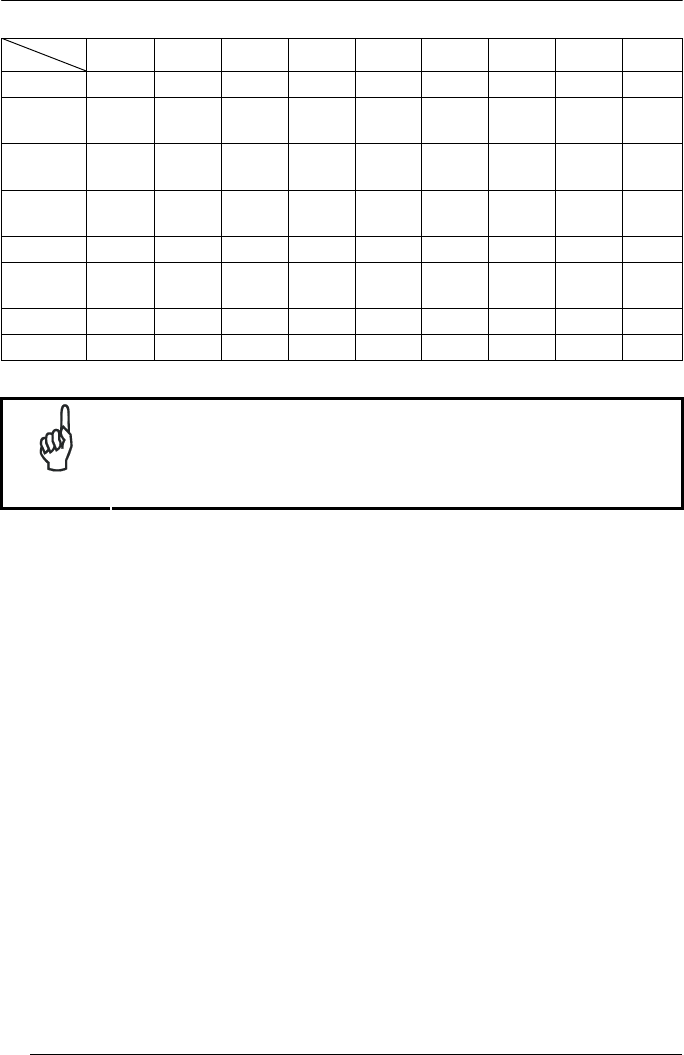
POWERSCAN® D8330/M8300
152
ITA USA FR BE DE UK ES SW JP
Up arrow 275 275 275 275 275 275 275 275 275
Down
arrow 272 272 272 272 272 272 272 272 272
Left
arrow 26B 26B 26B 26B 26B 26B 26B 26B 26B
Right
arrow 274 274 274 274 274 274 274 274 274
Esc 076 076 076 076 076 076 076 076 076
Ctrl
right 214 214 214 214 214 214 214 214 214
€ 02E A 02E
A 024
A 024
A 024
A 025
A 02E
A 02E
A -
SPACE 029 029 029 029 029 029
NOTE
If Caps Lock Auto-Recognition is disabled, it is necessary to verify
that the keyboard caps lock status matches the reader one.
EXAMPLES
- Defining Special Key Sequences -
1. the following example allows defining Special Key 1 as SHIFT + F5:
enter configuration define Special Key 1 SHIFT
Read Ì$+;Î
+ ÌFQ9C2>Î + Ì12Î +
codes from Appendix C corresponding
to the character value for F5 exit & save configuration
+ 003 + Ì$-?Î
CHA
R
KEYB

REFERENCES
153
2. the following example allows defining Special Key 2 as CTRL + S (upper case):
enter configuration define Special Key 2 CTRL + SHIFT
Read Ì$+;Î
+ ÌFQ9D2BÎ + Ì34Î +
codes from Appendix C corresponding to
the character value for s (lower case) exit & save configuration
+ 01B + Ì$-?Î
3. the following example allows defining Special Key 3 as Alt + F6:
enter configuration define Special Key 3 ALT
Read Ì$+;Î
+ ÌFQ9E2FÎ + Ì45Î +
codes from Appendix C corresponding
to the character value for F6 exit & save configuration
+ 00B + Ì$-?Î
4. the following example allows defining Special Key 4 as Alt + Shift + F1:
enter configuration define Special Key 4 ALT + SHIFT
Read Ì$+;Î
+ ÌFQ9F2JÎ + Ì56Î +
codes from Appendix C corresponding
to the character value for F1 exit & save configuration
+ 005 + Ì$-?Î
- Integrating Special Keys in Headers/Terminators -
1. the following example allows setting Special Key 1 (defined in example 1 above)
as terminator:
enter configuration one character terminator special key 1 exit & save configuration
Read Ì$+;Î
+ ÌEA111Î
+Ì9CÄÎ
+Ì$-?Î

POWERSCAN® D8330/M8300
154
2. the following example allows setting Special Key 2 (defined in example 2 above)
as header:
enter configuration one character header special key 2 exit & save configuration
Read Ì$+;Î
+ ÌEA01.Î
+Ì9DÆÎ
+Ì$-?Î
3. the following example allows setting Special Key 3 (defined in example 3 above)
as header:
enter configuration one character header special key 3 exit & save configuration
Read Ì$+;Î
+ ÌEA01.Î
+Ì9EÈÎ
+Ì$-?Î
4. the following example allows setting Special Key 4 (defined in example 4 above)
and ENTER character as terminators:
enter configuration two character terminator special key 4
ASCII characters
corresponding to the
HEX value for character
ENTER
Read Ì$+;Î
+ ÌEA125Î
+Ì9FÊÎ
+83 +
exit & save configuration
+ Ì$-?Î
5.4.3 Address Stamping
It is possible to include the reader address in the message sent to the host. The
Reader Address Stamping and the Cradle Address Stamping parameters consist of a
4-digit number in the range 0000 to 1999.
For message output format, refer to chapter 6.
5.4.4 Address Delimiter
The Address Delimiter allows a character to be included to separate the reader
Address stamping field from the next field in the message. Any character can be
included in the hexadecimal range from 00 to FE.
For message output format, refer to chapter 6.

REFERENCES
155
5.4.5 Time Stamping Format
The Time Stamping parameter sets the format for hour and date information. It consists
of 1 or 2 groups of numbers, each one made up of 6 decimal digits.
For example, setting the Hour/Minutes/Seconds/Month/Day/Year format, the
information 17:03:16 on June 12, 2002 will be formatted as 170316061202.
5.4.6 Time Stamping Delimiter
The Time Stamping Delimiter allows a character to be included to separate the Time
Stamping field from the next field in the message. Any character can be included in
the hexadecimal range from 00 to FE.
5.5 POWER SAVE
5.5.1 Sleep State
When using interfaces other than USB, this mode allows the μP in the reader to enter
a “Sleep” state for minimum power consumption. For D-series readers, this command
is only valid when hardware trigger type is selected.
Before entering Sleep mode, the following are verified:
• no commands coming from Host
• no data being transmitted to Host
• Enter Sleep Timeout ended (see par. 5.5.2)
To exit Sleep mode press the trigger.
For M8300 series readers, sleep state is entered immediately after reading a code
and is not configurable. To exit Sleep mode press the trigger.
When using the USB interface, this mode allows the device to manage Selective
Suspend conditions generated by the Host Operating System in which optimizing low
power consumption (ex. Windows Stand-by). It is possible to exit the Suspend mode
either from the Host (ex. moving the mouse during Stand-by) or through the barcode
reader. The latter, called Remote Wakeup, makes the device wake up the Host
restoring the communication. Remote Wakeup is possible by pressing the trigger.

POWERSCAN® D8330/M8300
156
5.5.2 Enter Sleep Timeout
For readers that have the Sleep state enabled, this timeout determines when the
reader will enter this state.
5.6 READING PARAMETERS
5.6.1 Trigger Signal
This mode determines how the reading phase is controlled when the hardware
trigger operating mode is selected:
• trigger active level: the reader goes ON when the trigger is pressed and goes
OFF when it is released
• trigger active pulse: the reader goes ON at the first trigger press and goes OFF
only at a second press
5.6.2 Trigger Click
When enabled, it activates a "click" sound upon each trigger pressure.
5.6.3 Trigger-Off Timeout
When this timeout is selected, the reader turns OFF automatically after the desired
period of time.
5.6.4 Reads per Cycle
In general, a reading cycle corresponds to the ON + OFF times of a device.
The resulting effects of this parameter on code reading depend on other related
configuration conditions. Here are the definitions of ON and OFF times.
• For readers using the software trigger parameter (FLASH MODE), a reading
cycle corresponds to the flash on + flash off times. Code reading takes place
during the flash on time.
• For readers using the hardware trigger parameter, a reading cycle corresponds
to a trigger press (ON) + one of the following OFF events:
trigger release (for trigger active level)
a second trigger press (for trigger active pulse)
trigger-off timeout (see par. 5.6.3).
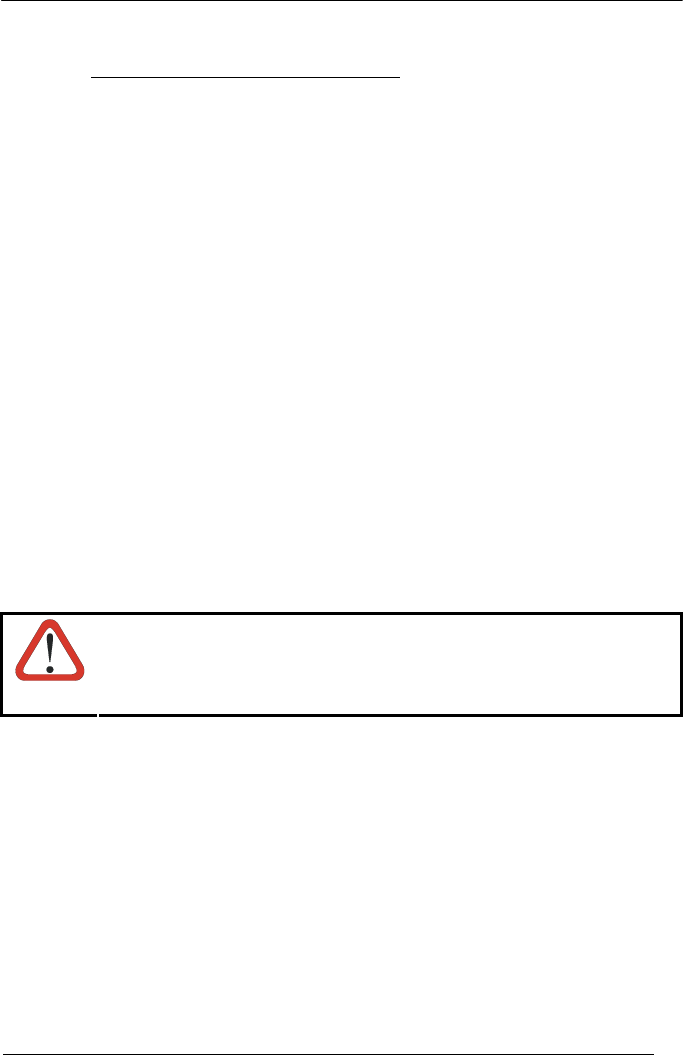
REFERENCES
157
When one read per cycle is selected, the device decodes only one code during the
ON period and immediately turns the reader OFF. It is only possible to read another
code when the next ON time occurs.
In multiple reads per cycle, the ON period is extended so that the device can
continue decoding codes until an OFF event occurs. For software trigger mode, the
flash on period is immediately reset after each read and therefore extended. If
another code is decoded before the reset flash on period expires, it is again reset
and the effect is that the device remains ON, decoding codes until the flash on or
timeout period expires.
The Safety Time parameter should be used in this case to avoid unwanted multiple
reading of the same code, see par. 5.6.5.
5.6.5 Safety Time
Safety time prevents the device from immediately decoding the same code more
than once. Same code consecutive reading can be disabled requiring the reader to
be removed from the code (no decoding) for at least 400 ms, or a timeout can be set
up to 9.9 seconds before the decoder will accept the same code. Reading is
immediate if the code changes.
The safety time parameter is not applicable when reading stacked codes or when
setting one read per cycle in hardware trigger operating mode, since these settings
require voluntary action by the user.
5.7 DECODING PARAMETERS
CAUTION
These parameters are intended to enhance the decoding capability
of the reader for particular applications. Used incorrectly, they can
degrade the reading performance or increase the possibility of a
decoding error.
5.7.1 Ink-Spread
The ink-spread parameter allows the decoding of codes, which are not perfectly
printed because the page texture tends to absorb the ink.
5.7.2 Overflow Control
The overflow control parameter can be disabled when decoding codes printed on
small surfaces, which do not allow the use of an overflow space.
This command does not affect code families 2/5, Code 128 and Code 93.

POWERSCAN® D8330/M8300
158
5.7.3 Interdigit Control
The interdigit control parameter verifies the interdigit spacing for code families
Code 39 and Codabar.
5.8 ADVANCED FORMATTING
5.8.1 Match Conditions
Selecting an Advanced Formatting and specifying a Match restriction (Code Type,
Code Length, Predefined Characters) the code will be transmitted according to the
order of the defined formats.
For example, defining 2 formats where:
• Format 1: Match Code type = Code128
• Format 2: Match Code length = 15 and Match with Predefined Characters
“DATA”
a Code128 “DATA:12345ABCDE” with code length 15 will be formatted following the
Format 1.
To send the same code with the Format 2 it is necessary to invert the format order as
follows:
• Format 1: Match Code length = 15 and Match with Predefined Characters
“DATA”
• Format 2: Match Code type = Code128
5.9 RADIO PARAMETERS (M8300 SERIES ONLY)
5.9.1 Radio Protocol Timeout
This parameter sets the valid time to wait before transmission between the M8300
series reader and BC-80X0 cradle is considered failed.
This parameter should be set taking into consideration the radio traffic (number of
readers in the same area).
If the RS-232 interface is used with ACK/NACK enabled, this parameter should be at
least equal to the RX Timeout parameter for low traffic environments. It should be
increased if there are many readers in the same area.
It can be set between 2 and 19 seconds.

REFERENCES
159
5.9.2 Radio RX Timeout
When the scanner is used in a standalone layout (point-to-point or with multiple
readers) it can be configured to receive “asynchronous” messages from the host at
any time.
There are two modes which can enable the scanner to receive messages from the
host:
1) Enable “2 way” Communication Protocol – After the transmission of each
barcode, the scanner waits for an acknowledgement from the host1. A
message can be sent by the host accompanying this acknowledgement, or
in place of it, to display something on the screen or execute a command
(such as sound a beep sequence, turn an LED on or off, etc.). If no
acknowledgement or message is received from the host within a
programmable timeout duration, the radio will be switched off and an “error
transmission” beep will be sounded.
2) Independent of the Selected Protocol – The scanner can be configured to
keep the radio receiver “awake” for a defined period of time following each
transmission. Any message coming from the host1 before expiration of the
timeout is accepted. The parameter “Radio RX Timeout” is used for
specifying how long the scanner have to wait for a message after receiving
each code transmission.
In this mode, the radio can also be “awakened” by pressing the trigger.
The scanner can receive a message only if it is linked to the Base (i.e. the
scanner has been joined to the Base and has had at last one “valid”
transmission after the last power-on). Setting the “Radio RX timeout” value
to “00” specifies that the radio never goes into sleep mode (always awake
Æ the scanner can receive a message at any time). Choosing this setting
will, of course, consume battery life more quickly.
1See Section 6.1 for Host to Scanner message formatting.
5.9.3 Power-Off Timeout
If this command is enabled, after the desired timeout in hours, the PowerScan®
batteries are disconnected and all power consumption ceases. To restore power,
press the trigger once. The reader will now be ready to read codes.
Power-off does not affect configuration parameters.
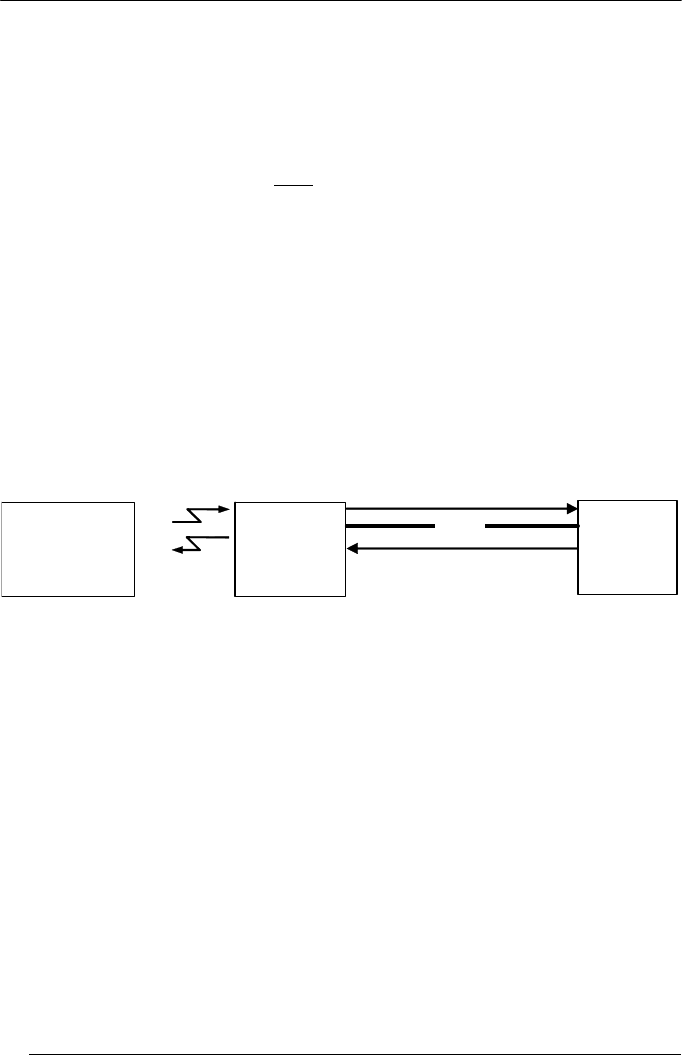
POWERSCAN® D8330/M8300
160
5.9.4 Transmission Mode
This parameter determines whether the reader receives responses or messages from
the Host or not. In One-Way tx mode, neither Host nor cradle responds to the reader.
In Two-Way tx mode, the reader must receive a response from either the cradle or
the Host.
The cradle responds (empty message) to the reader, only after good transmission to
the Host, for the following conditions: ACK/NACK enabled, see par. 5.1.2; WEDGE or
PEN interface. For these conditions, it is suggested to prolong the Radio Protocol
Timeout, see par. 5.9.1.
Enabling Two-Way tx mode temporarily disables FIFO buffering see par. 5.1.3.
With ACK/NACK disabled, the Host responds to the reader (through the cradle) with
an answer message (message to reader display or command to reader), see par. 6.1
and the following figure.
BC-80X0 Host
data
cable
PowerScan®
M8300
data
Transmission Mode = Two-Ways
Host answer message Host answer
message
5.9.5 Beeper Control for Radio Response
For M8300 series readers, the data entry good read tone normally results in two
beeps; the first indicates that the reader has decoded the code; the second indicates
whether BC-80X0 has received the data.
This can be changed according to the following selections:
♦ Normal: both good decode and good receptions are signaled (two beeps).
♦ Only Good Decode: only the first beep indicating a good read is signaled.
♦ Only Good Reception: only the second beep indicating a good reception is
signaled.
♦ Off: Neither good read nor good reception beeps are signaled.
For all configurations, any transmission errors will always be signaled.

REFERENCES
161
5.9.6 Single Store
When single store mode is enabled, if the PowerScan® M8300 fails to transmit a
code to the cradle, it enters a special operating mode that prevents the user from
reading barcodes. When such operating mode is entered, the trigger no longer
enables barcode reading but is used to retry transmission itself for the number of
attempts selected in configuration. Once the transmission is successful the reader
returns to the standard mode. If transmission is not successful after the number of
configured attempts, the code is discarded.
Single store may be useful if you often read codes at the limit of the coverage area
and there is a chance that code transmission can fail. In such case single store
allows you to move to a more favorable position or location (i.e. closer to the cradle)
and retry transmission without the necessity of re-reading the code since it is already
stored in the reader.
Conversely, if single store is disabled, and the user wants to retry transmission, the
code must be read again, and therefore the attempt must be made from basically the
same location. If the user gives up, he does not know if the transaction was
successful. (Actually the transmission could have been successful but the cradle may
have been unable to acknowledge the message). There are applications in which
there is no risk of transmission failure. In such cases it may be better to disable
single store so that the user perceives a more consistent behavior of the trigger in
that it always corresponds to code reading.
5.9.7 Batch Mode
This Operating Mode allows storing read codes in the internal reader RAM memory.
The stored codes are transmitted to the base station at a later time according to the
type of batch mode selected.
Batch mode can be enabled either manually (normal batch mode) or automatically.
Normal batch mode temporarily suspends radio communication between reader and
base station allowing codes to be stored in the reader on a FIFO basis. This can be
useful for example, if codes must be read from a location where there is no radio
network. Upon returning to the system working area, this mode requires reading the
Start Normal Batch Transmission barcode to successively transmit the list of
stored codes to the base station. The FIFO management assures that the first code
read will be the first code to be transmitted to the base station.
The Delete Batch Data barcode allows canceling all barcode data stored in the
reader.
Automatic batch mode allows codes to be stored in the reader on a FIFO basis
whenever the reader is out of radio range. In this case radio communication is not
suspended and transmission is attempted after each code read. If transmission

POWERSCAN® D8330/M8300
162
cannot be successfully completed, then the code is added to the list. When the
reader returns in range, transmission of the codes to the base station resumes
automatically, according to the selected communication protocol, upon simply
pressing and releasing the trigger or by successfully reading a new code.
Each code is listed on the reader display together with its identifying position number
and its total number of characters. The three keys under the display have the
following function in batch mode:
Key Function
▲ (left) Key Scroll up in list
ENTER (center) Key Delete highlighted code
▼ (right) Key Scroll down in list
In batch mode, the selected Transmission Mode determines the behavior of the
reader at the time the list of codes is transmitted. If One-way mode is enabled, the
codes are transmitted one after the other without interruption. In Two-way mode,
after transmitting each code, the reader waits for the Host answer message to be
shown on the display. Therefore, in Two-way transmission mode and normal batch
mode, the Start Normal Batch Transmission barcode must be read after each code
to continue, whereas with automatic batch mode just pull and release the trigger after
each code.
The code, which has a transmission pending, is shown on the display in reverse
video indicating that it cannot be deleted.
5.9.8 Find Me (PowerScan® M8300 only)
If enabled, after a timeout of a few minutes in which PowerScan® M8300 is not used,
it enters stand-by mode and its green LED starts blinking in order to signal its
location.
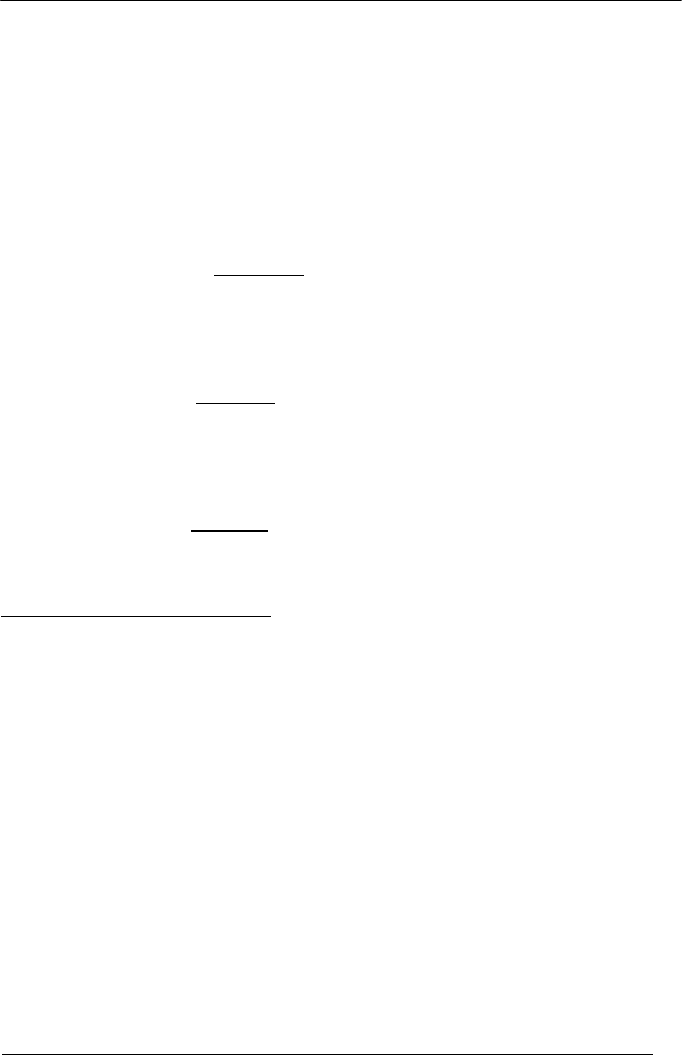
REFERENCES
163
5.10 DISPLAY PARAMETERS (SOME M8300 MODELS ONLY)
5.10.1 Display Mode
The user can control the reader display behavior according to the following
selections:
Normal mode: When a barcode is read with the reader:
• The code is sent to the Host.
• The reader display is not cleared. Therefore if any previous data was displayed
on the reader screen it remains.
• There is no Local Echo to the reader display.
Clear Display After Decode mode: When a barcode is read with the reader:
• The code is sent to the Host.
• The reader display is cleared. Therefore if any previous data was displayed on
the reader screen it is cancelled and the screen remains blank.
• There is no Local Echo of the code to the reader display.
Local Echo mode: When a barcode is read with the reader:
• The code is sent to the Host.
• The reader display is cleared.
• The code is also sent to the reader display (Local Echo).
• The cursor is positioned after the last printed character on the reader display.
Host messages sent to the reader are always written to the reader display.
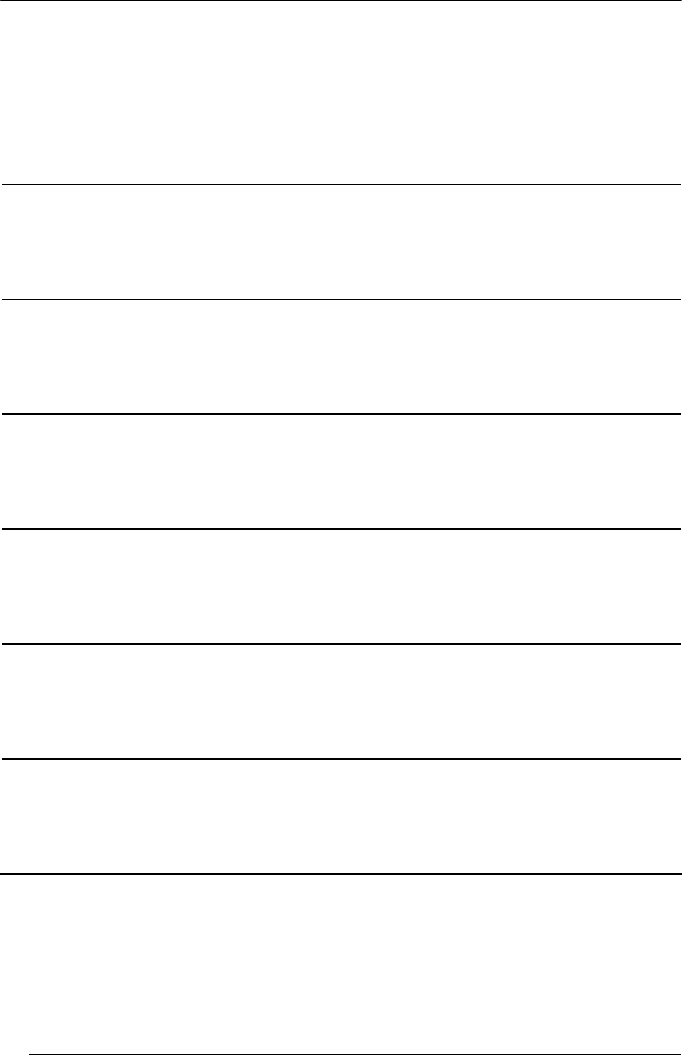
POWERSCAN® D8330/M8300
164
5.11 CONFIGURATION EDITING COMMANDS
The following commands carry out their specific function and then exit the
configuration environment.
Command Description
Ì$+$*oÎ
Restore PowerScan® reader default
configuration (see the relative Quick Reference
Guide for default settings)
Ì$+$!KÎ
Transmit the PowerScan® D8330 or
PowerScan® M8300 software release
Ì$+$&_Î
Transmit PowerScan® reader configuration in
ASCII format.
This command is not effective with Pen
emulation interface.
Ì$+RX0$-qÎ
Restore BC-80X0 default configuration (see the
relative Quick Reference Guide for default
settings)
Ì$+RX1$-vÎ
Transmit the BC-80X0 Software release.
Ì$+RX2$-{Î
Transmit BC-80X0 configuration in ASCII format.
This command is not effective with Pen
emulation interface.

REFERENCES
165
5.12 CUSTOM DEFAULT CONFIGURATION
Read the following code to set the reader user-defined configuration as custom
default configuration:
Save User-defined Configuration as Custom Default
Ì$+$0ÂÎ
Read the following code whenever you need to restore the custom default
configuration:
Restore Custom Default Configuration
Ì$+$1$Î
5.13 CODE TYPE RECOGNITION
This procedure allows the reader to enter a particular state during which it reads and
transmits to the Host information about the family type of codes unknown to the user
(with the exception of MSI, Code 49 and Code 16k code types). It is also possible to
read and transmit configuration strings without interpreting them.
All codes are read ignoring the check digit.
Follow the given procedure:
c Read the following code to enter the code type recognition mode:
code type recognition
Ì#+CODEÂÎ
d Read existing codes whose family type you need to check.
e Read the following code to return to the reader's normal functioning:
exit code type recognition mode
Ì$-?Î

POWERSCAN® D8330/M8300
166
5.14 CONFIGURATION COPYING COMMANDS
5.14.1 Copy PowerScan™ D8330 Series
Procedure:
c Connect the master (correctly configured reader) and the slave (reader to be
configured) together through two RS-232 serial interface cables and external
power supply. Accessory cables and power supply are available from your
Datalogic distributor to provide this connection.
RS-232 Cables: CAB471 & CAB472
Power Supply: PG5
d Using the slave reader, read the Restore Default barcode and then the RS-232
interface barcode from chapter 4 of this manual or from the Quick Reference
Guide.
e With the master reader, read the Configuration Copy barcode below.
Copy Configuration
Ì$+ZZ0$-*Î
The configuration will be copied from the master to the slave reader. The slave
reader signals the end of the procedure with a series of beeps.
Note: The master reader can be configured for any interface.

REFERENCES
167
5.14.2 Copy PowerScan™ M8300 Series
Procedure:
c Using the slave reader and its BC-80X0 cradle, follow the initialization
procedure in chapter 4 of this manual or from the Quick Reference Guide.
d With the master PowerScan™ M8300 (correctly configured reader), read the
Copy Configuration barcode below. Then place it onto an BC-80X0 cradle within
10 seconds. The reader will beep indicating the configuration has been copied.
The configuration will be simultaneously sent over the RS-232 interface of the
BC-80X0. If this causes undesired effects disconnect the RS-232 cable
between the PC and BC-80X0 during this process.
Copy Configuration
Ì$+ZZ0$-*Î
e With the slave PowerScan™ M8300, read the Get Configuration barcode below.
Then place it onto the same BC-80X0 cradle used in the step above. The slave
reader's address will not be changed.
Get Configuration
Ì$+ZZ2$-4Î
The configuration will be copied from the master to the slave PowerScan™ M8300.
The slave PowerScan™ M8300 signals the end of the procedure with a series of
beeps. It is now ready to be used with its own BC-80X0 cradle.
f Repeat the procedure above to configure other slave readers. The
BC-80X0 can continue to configure slave readers until it receives another
command or data.

POWERSCAN® D8330/M8300
168
5.14.3 Copy BC-80X0
Procedure:
c Using the slave reader and its BC-80X0 cradle, read the Restore Default
barcode, set the radio address, and then read the RS-232 interface barcode
from chapter 4 of this manual or from the Quick Reference Guide.
d Connect the master BC-80X0 and the slave BC-80X0 (cradle to be configured)
together through two RS-232 serial interface cables and external power supply.
Accessory cables and power supply are available from your Datalogic
distributor to provide this connection.
RS-232 Cables: CAB471 & CAB472
Power Supply: PG12
e Read the Configuration Copy barcode below with a reader. Then place it onto
the master BC-80X0 cradle.
Copy Configuration
Ì$+ZZ3$-9Î
The configuration will be copied from the master BC-80X0 to the slave
BC-80X0. The reader signals the end of the procedure with a series of beeps.
f Repeat the procedure above to configure other slave cradles.
Note: The master BC-80X0 can be configured for any interface.
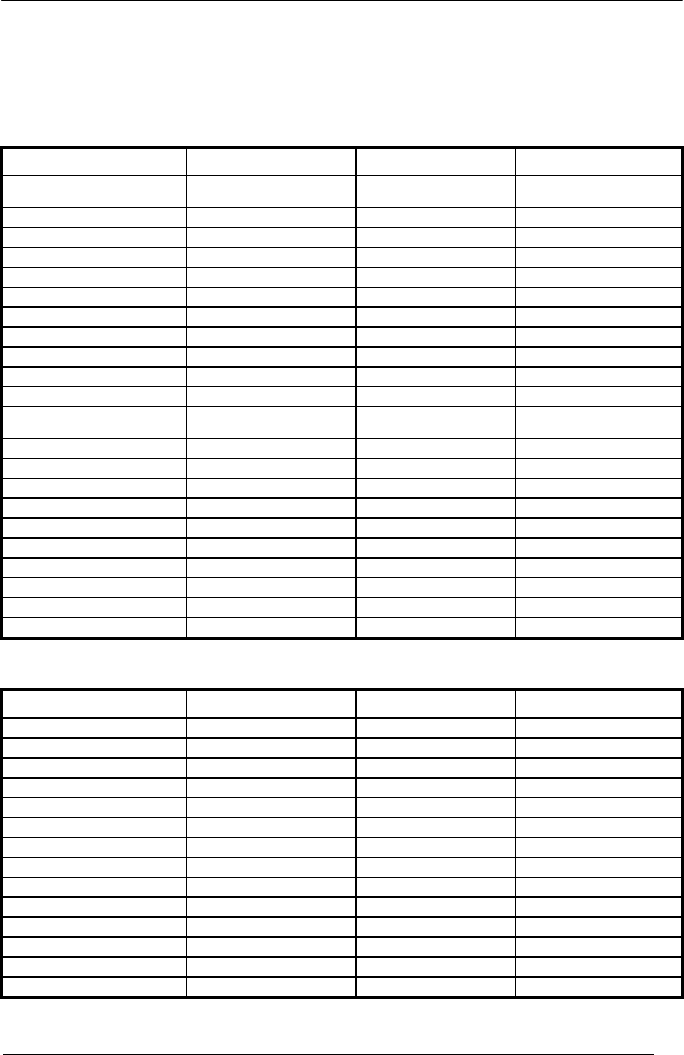
REFERENCES
169
5.15 DEFAULT PARAMETERS FOR POS TERMINALS
The default values of the RS-232 and Data Format parameters for POS terminals are
listed in the following table:
NIXDORF Mode A FUJITSU ICL Mode
RS-232 Group
Baud Rate 9600 9600 9600
Parity Odd None Even
Data Bits 8 8 8
Stop Bits 1 1 1
Handshaking Hardware (RTS/CTS) None RTS always ON
ACK/NACK Protocol Disabled Disabled Disabled
FIFO Disabled Enabled Enabled
Inter-Character Delay Disabled Disabled Disabled
RX Timeout 9.9 sec 2 sec 9.9 sec
Serial Trigger Lock Disabled Disabled Disabled
Data Format Group
Code Identifier Custom Custom Custom
Header No Header No Header No Header
Terminator CR CR CR
Field Adjustment Disabled Disabled Disabled
Code Length TX Not Transmitted Not Transmitted Not Transmitted
Character Replacement Disabled Disabled Disabled
Address Stamping Disabled Disabled Disabled
Address Delimiter Disabled Disabled Disabled
Time Stamping Disabled Disabled Disabled
Time Delimiter Disabled Disabled Disabled
The table below lists all the Code Identifiers available for the POS terminals:
CODE NIXDORF Mode A FUJITSU ICL Mode
UPC-A A0 A A
UPC-E C0 E E
EAN-8 B FF FF
EAN-13 A F F
Code 39 M None C [code length]
Codabar N None N [code length]
Code 128 K None L [code length]
Interleaved 2 of 5 I None I [code length]
Code 93 L None None
Industrial 2 of 5 H None H [code length]
UCC/EAN 128 P None L [code length]
MSI O None None
GS1 DATABAR™ E None None
Other None None None
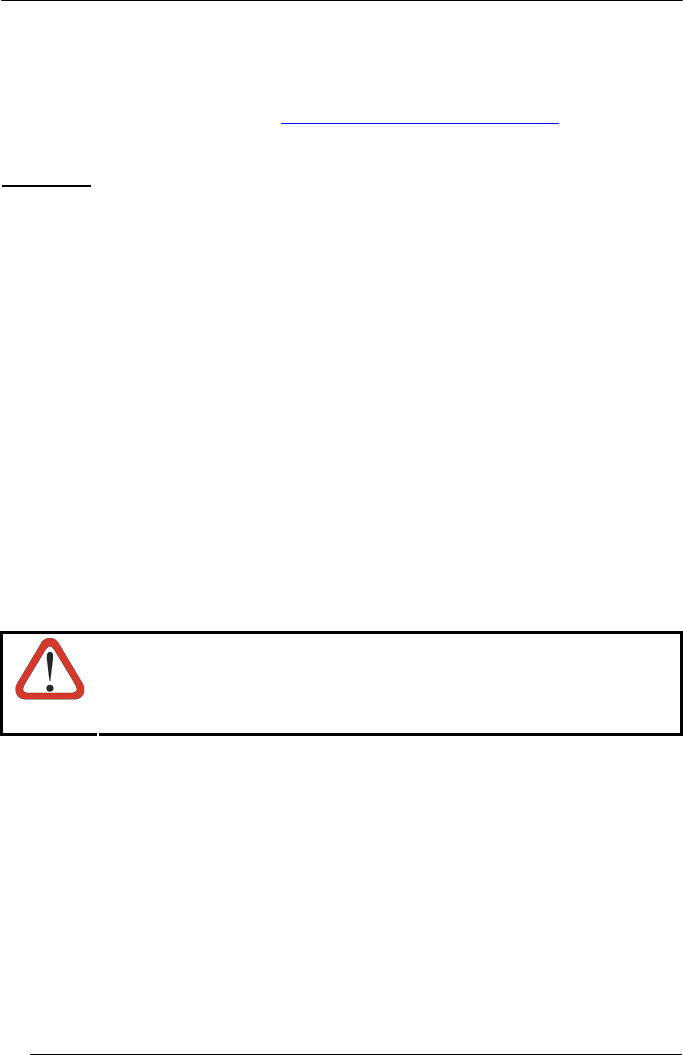
POWERSCAN® D8330/M8300
170
5.16 FIRMWARE UPGRADE
Device firmware upgrades can be performed using the Downloader utility tool
(downloadable from the web site: http://www.scanning.datalogic.com) from your PC
through the USB communication.
Procedure:
c Launch the Downloader tool on your PC.
d Connect the device to the PC via USB interface.
e Read the code given below and position the reader onto the cradle:
prepare device for firmware upgrade
Ì$+RN2$-SÎ
OR
Press the cradle button if present (to only update the cradle).
The device will automatically be reset.
f Proceed with the firmware upgrade (see the Downloader utility help on-line for
details).
CAUTION
Do not interrupt firmware upgrade downloading for any reason.
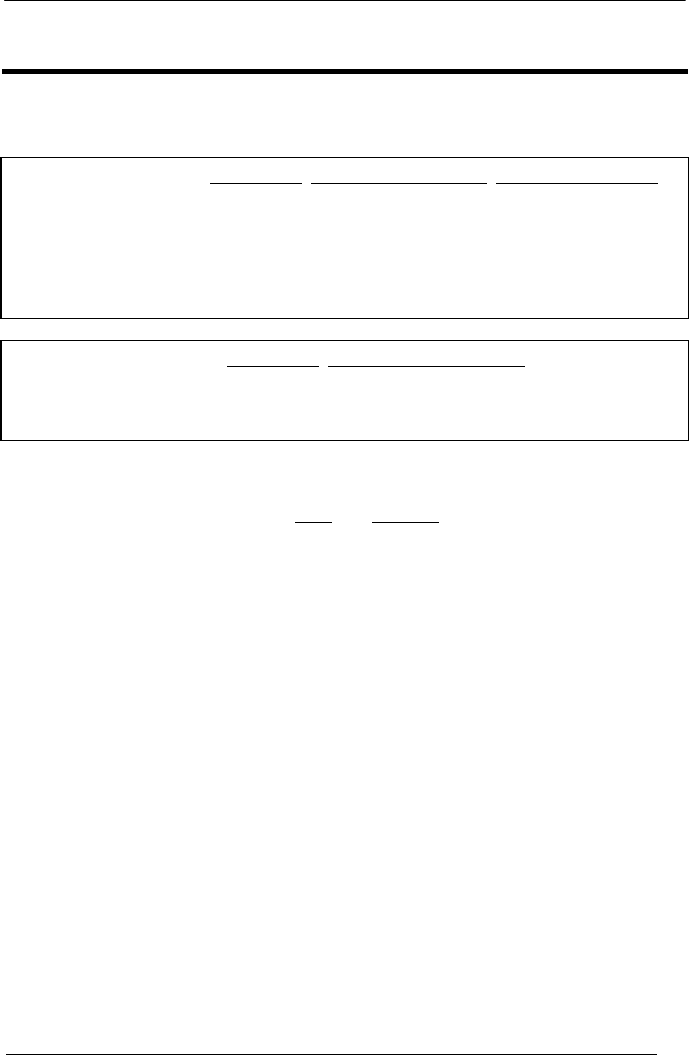
MESSAGE FORMATTING
171
6 MESSAGE FORMATTING
The system always provides scanner to host data communication using the following
message formatting:
Output Message from PowerScan® D8330 or PowerScan® M8300 Stand-alone
Towards Host
[Header] [Scanner_Addr] [Scanner_Addr_delimiter] ] [Cradle_Addr] [Cradle_Addr_delimiter]
[Time stamp] [Ts_delimiter] [Code ID] [Code Length] CODE [Terminator]
[Items in square brackets are optional.]
Output Message from PowerScan® M8300 STAR-System™ Towards Host
[Time stamp] [Ts_delimiter] [Header] [Code ID] [Code Length] CODE [Terminator]
[Items in square brackets are optional.]
For PowerScan® M8300 models with display, if the RS-232 interface is selected for
communication between the Host and the BC-80X0 cradle, then the following
additional communications between Host and Scanner can occur:
• The Host can send messages to any scanner associated with that cradle to
control the Scanner’s display, LEDs and beeper.
• The Scanner can send up to 3 user-defined characters to the Host using the 3
command keys on the Scanner.
These communications and their relative message formatting are detailed in the
following paragraphs.
6.1 MESSAGES FROM HOST TO READER
The general format to enable the Scanner for a 2 way communication is:
[Scanner_Addr] [Scanner_Addr_delimiter] MESSAGE [CR]
NOTE:
• If you have enabled the Scanner Address Stamping or the Scanner Address
Delimiter, you must specify them in every message.

POWERSCAN® D8330/M8300
172
The general format for other asynchronous messages is:
[Scanner_Addr] [Scanner_Addr_delimiter] [DC2] MESSAGE [CR]
where DC2 is ASCII 0x12 (^R) character.
• If you have not enabled the Scanner Address Stamping or the Scanner Address
Delimiter, you must not specify them. In this case all messages will be implicitly
addressed to the 'binded' Scanner of the cradle directly connected to the serial
line.
• The Scanner can only receive messages if two-way mode is enabled. (See par.
5.9.4, “Transmission Mode”, command is on page 159).
• Messages cannot start with '$+' because they would be interpreted as a
configuration command.
• You can send a message to the Scanner only while it is on. This happens when
it has sent a message to the host and the radio timeout has not yet expired. (See
par. 5.9.1, "Radio Protocol Timeout"; command is on page 130).
• If you want to control the Scanner's beeper from the host, you will also probably
want to disable the good transmission beep that is emitted when the code is
received from the cradle. (See command on page 86).
The message field can store plain text and escape sequences.
• Escape sequences are interpreted as commands.
• Plain text is directly printed on the display. If writing beyond the end of line, the
display does not wrap automatically. Extra characters are ignored. Control
characters are not interpreted (i.e. LF, FF, etc.).
6.1.1 Cursor Control
ESC [
n
A Up
n
rows, no scroll
ESC [
n
B Down
n
rows, no scroll
ESC [
n
C Right
n
columns
ESC [
n
D Left
n
columns
ESC [ G CR
ESC [
r
;
c
H Move to row
r
, column
c
(ESC[1;1H is the upper left character position of the display)
ESC D Down 1 row, with scroll
ESC E CR and cursor down 1 row with scroll
ESC M Up 1 row and scroll
NOTES:
• Since CR is used as the message terminator, you must use ESC [ G or ESC E to
print a CR.

MESSAGE FORMATTING
173
• The cursor row position is not affected by the currently selected font. The
display always has 4 rows, so when writing with the large font, actually two rows
are written to: the current one and the one below it. You will need two ESC E
commands to step from one row to the next when using the large font.
• The cursor column position is affected by the currently selected font. Therefore,
column 6 is 36 pixels from the left border only if you last selected the 6x8 font;
otherwise it could be 48 or 72 pixels from the left border.
6.1.2 Font Selection
ESC [ 0 m Normal mode
ESC [ 7 m Reverse mode
ESC # 4 Large font: subsequent characters are written on the current row and
the row below it using the 12x16 font which allows for two rows of
eight characters on the display.
ESC # 5 Normal font: subsequent characters are written using the 6x8 font,
which allows for four rows of sixteen characters on the display.
ESC # 7 Medium font: subsequent characters are written using the 8x8 font,
which allows for four rows of twelve characters on the display.
6.1.3 Clearing Display
ESC [ 0 K From cursor position to end of line inclusive
ESC [ 1 K From beginning of line to cursor position (not inclusive)
ESC [ 2 K Entire line
ESC [ 0 J From cursor position to end of display inclusive
ESC [ 1 J From beginning of display to cursor position (not inclusive)
ESC [ 2 J Entire display; moves cursor to upper left corner on display
6.1.4 LED and Beeper Control
ESC [ 0 q Emit short High tone + short delay
ESC [ 1 q Emit short Low tone + short delay
ESC [ 2 q Emit long Low tone + short delay
ESC [ 3 q Emit good read tone
ESC [ 4 q Emit bad tx tone
ESC [ 5 q Wait 100 ms
ESC [ 6 q Turn on the green LED
ESC [ 7 q Turn off the green LED
ESC [ 8 q Turn on the red LED
ESC [ 9 q Turn off the red LED

POWERSCAN® D8330/M8300
174
The LED control escape sequences are intended to activate the LEDs for short
periods of time and can be used in combination with the Beeper. The LED and
Beeper will be controlled by the system after the entire command sequence is
interpreted.
Example:
ESC [ 6 q ESC [ 3 q ESC [ 7 q Turns on the green LED, emits a good read tone, and
turns off the green LED.
ESC [ 6 q ESC [ 5 q ESC [ 7 q Turns on the green LED for 100 ms and then turns off
the green LED.
6.1.5 Setting RTC
ESC [ 0 p
d d m m y y
Set date to day, month, year
ESC [ 1 p
h h m m
Set time to hours, minutes; seconds are
automatically set to 00.
6.2 MESSAGES FROM SCANNER COMMAND KEYS
The PowerScan® M8300 series scanners with display have 3 command keys that can
each be associated with a character to send to the host.
By pressing the keys on the scanner, the associated character with its relative
message formatting is sent to the Host. For example, keys can be used to select
items from a menu sent to the scanner display by the application program.
The general format is:
[Header] [Scanner_Addr] [Scanner_Addr_delimiter] ] [Cradle_Addr] [Cradle_Addr_delimiter]
[Time stamp] [Ts_delimiter] [Code ID] [Code Length] KeyID [Terminator]
[Items in square brackets are optional.]
The messages are handled by the system as if they were barcodes, that's why KeyID
can have so many fields appended to it. If in your application there is some chance of
reading a 1-char barcode identical to KeyID, the way you can distinguish between
the two is to enable the Code ID: The KeyID is the only 1-character long EAN 8
code.
Refer to par. 5.3 for a compete description of the optional message fields in square
brackets.
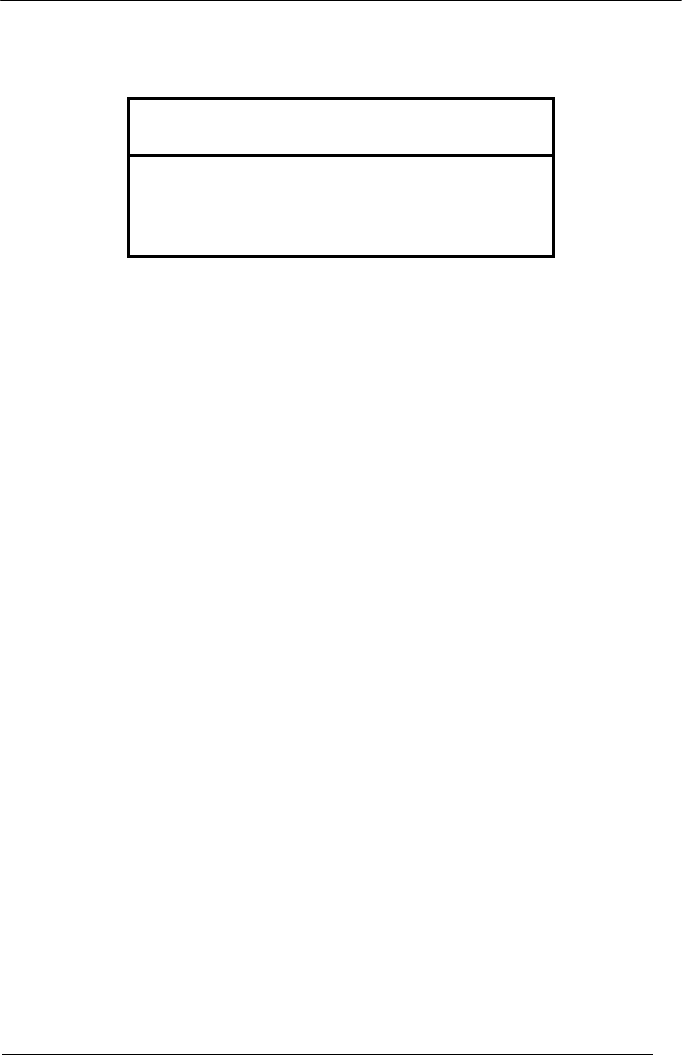
MESSAGE FORMATTING
175
The default characters associated with each key (KeyID) are shown in the following
table:
Default Key Identifiers
Key KeyID
▲ (left) Key '<'
ENTER (center) Key '='
▼ (right) Key '>'
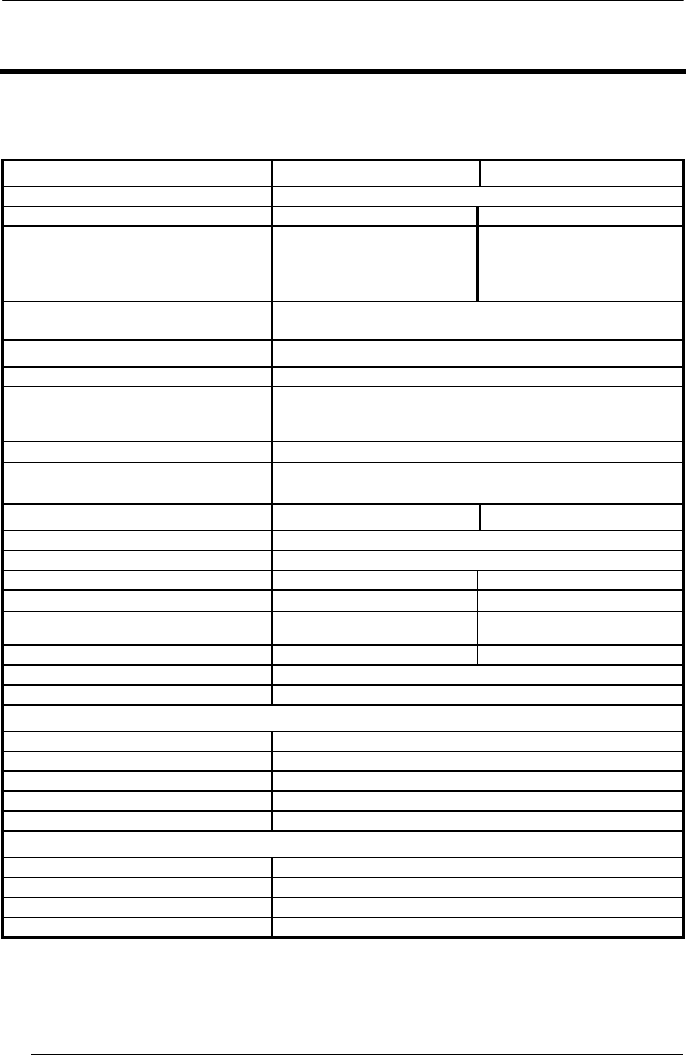
POWERSCAN® D8330/M8300
176
7 TECHNICAL FEATURES
7.1 POWERSCAN® D8330
Electrical Features PowerScan® D8330 PowerScan® D8330 AR
Power Supply 4 to 30 VDC
Max. Consumption
@ 4V
@ 5V
@ 30 V
Sleep Mode
420 mA
310 mA
62 mA
4 mA
500 mA
370 mA
70 mA
4 mA
Reading Indicators Good Read LED (green)
Good Read Spot (green), Beeper
Host Interfaces
RS-232 300 to 38400 baud
WEDGE
IBM AT or PS/2, XT, PC Notebook, IBM SURE1, IBM 3153, 31xx, 32xx,
34xx, 37xx terminals, Wyse terminals, Digital VT terminals, Apple ADB
Bus supported
PEN Emulation Selectable minimum pulse from 200 μS to 1.2 mS
USB USB-KBD, USB-KBD-ALT-MODE, USB-KBD APPLE, USB-COM, USB-
IBM-Table Top, USB-IBM-Hand Held
Laser Features D8330 D8330 AR
Light Source VLD between 630~680 nm
Scan Rate 35 ± 5 scans/sec
Power (max) in mW 0.9 mW 1.3 mW
Scan Angle 42° 13.5° ± 0.7
PCS minimum
(Datalogic Test Chart) 15% 25%
Maximum Resolution 0.076 mm (3 mils) 0.19 mm (7.5 mils)
Reading Field Width see reading diagrams (par. 7.6)
Laser Safety Class Class 2 EN 60825-1/CDRH
Environmental Features
Working Temperature -30° to +50 °C / -22° to +122 °F
Storage Temperature -30° to +70 °C / -22° to +158 °F
Humidity 90% non condensing
Drop resistance (on concrete) IEC 68-2-32 Test ED 2 m
Protection class IP65
Mechanical Features
Weight (without cable) about 295 g (10.4 oz)
Dimensions 205 x 114 x 69 mm (8.07 x 4.49 x 2.72 in)
Cable length 2 m (6 ft 6 in)
Material Polycarbonate molded with rubber
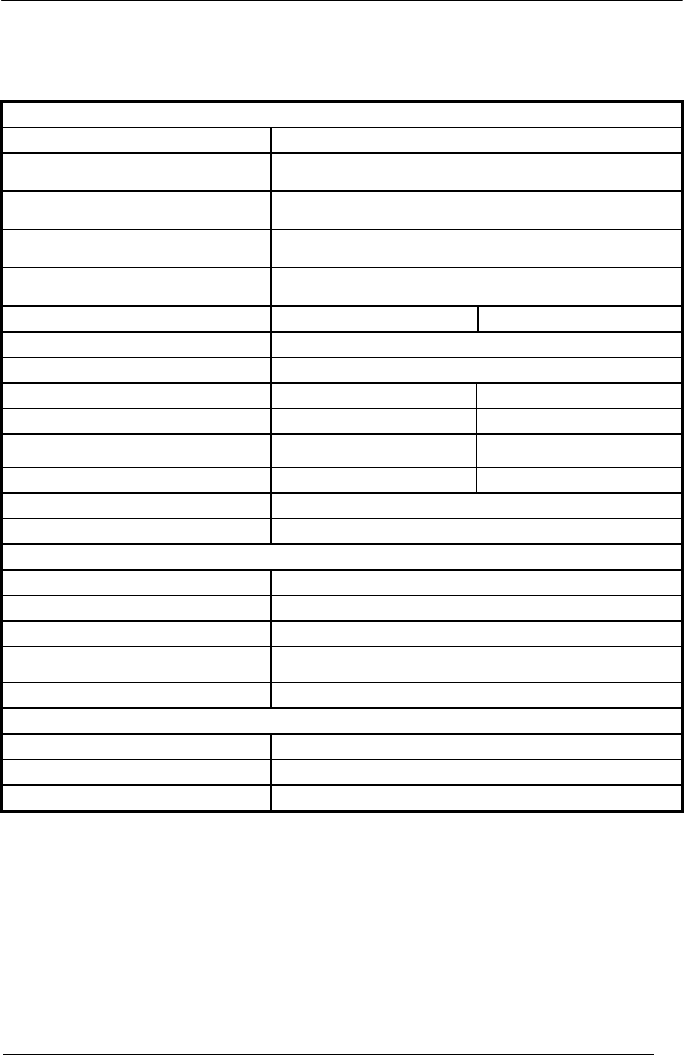
TECHNICAL FEATURES
177
7.2 POWERSCAN® M8300
Electrical and General Features
Battery Type 2150 Li-Ion battery pack
Recharge Time max. 4 hours with external power supply
max 10 hours with Host power
Operating autonomy
(continuous reading) 60,000 reads (typical)
Display
(Only available with some models)
LCD 4 lines x 16 chars
Programmable font and backlight
Indicators Good Read LED (green)
Good Read Spot (green), Beeper
Laser Features M8300 M8300 AR
Light Source VLD between 630~680 nm
Scan Rate 35 ± 5 scans/sec
Power (max) in mW 0.9 mW 1.3 mW
Scan Angle 42° 13.5° ± 0.7
PCS minimum
(Datalogic Test Chart) 15% 25%
Maximum Resolution 0.076 mm (3 mils) 0.19 mm (7.5 mils)
Reading Field Width see reading diagrams (par. 7.6)
Laser Safety Class CLASS 2 EN 60825-1 / CDRH
Environmental Features
Working Temperature -20° to +50 °C / -4° to +122 °F
Storage Temperature -20° to +70 °C / -4° to +158 °F
Humidity 90% non condensing
Drop resistance (on concrete)
IEC 68-2-32 Test ED 2 m
Protection Class IP65 (IP64 for models with display)
Mechanical Features
Weight (with batteries) about 400 g (14.10 oz)
Dimensions 212 x 109 x 71 mm (8.34 x 4.49 x 2.79 in)
Material Polycarbonate molded with rubber
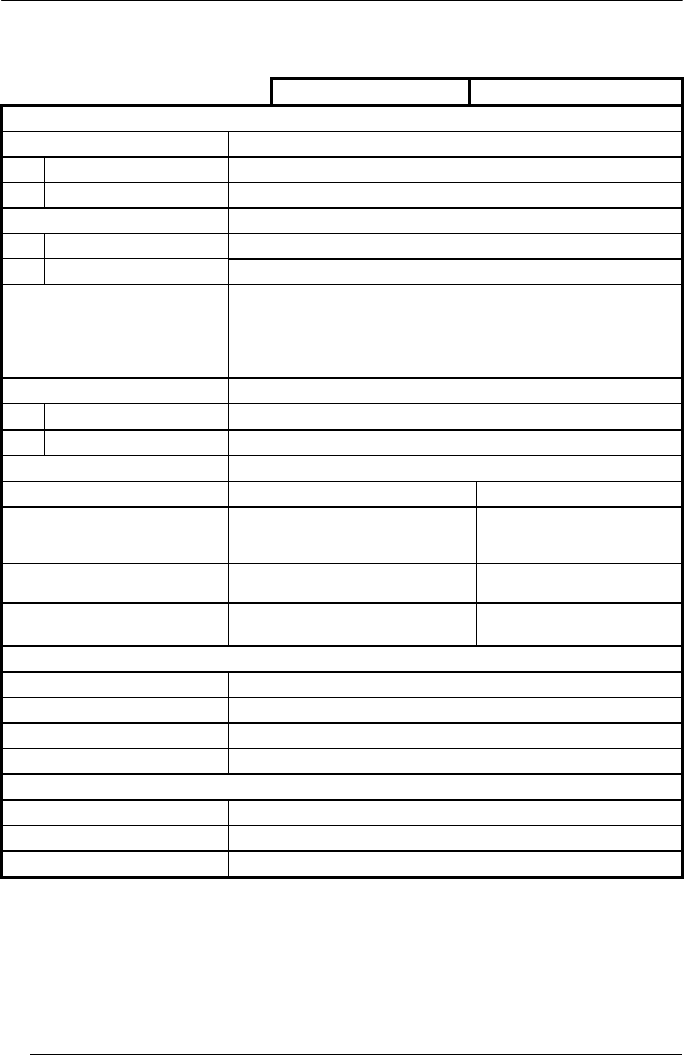
POWERSCAN® D8330/M8300
178
7.3 BC-80X0 / C-8000
BC-80X0 C-8000
Electrical and General Features
Supply Voltage
External Power 10 to 30 VDC
Host Power 5 VDC ±10%
Power Consumption
External Power max. 10 W (charging)*
Host Power max. 500 mA (charging)
Indicators Ext. Power /Data yellow LED
Host Power/Data yellow LED
Reader batt. state green/red LED
Aux. batt. state green/red LED (BC-8000/C-8000 only)
beeper
Recharge Time
External Power max. 4 hours with 2150 mAh Li-Ion battery
Host Power max. 10 hours with 2150 mAh Li-Ion battery
Host Interfaces
RS-232 300 to 38400 baud 9600 baud
WEDGE
IBM AT or PS/2, XT, PC Notebook, IBM
SURE1, IBM 3153, 31xx, 32xx, 34xx, 37xx
terminals, Wyse terminals, Digital VT
terminals, Apple ADB Bus supported
Not supported
PEN Emulation Selectable minimum pulse from
200 μS to 1.2 mS Not supported
USB
USB-KBD, USB-KBD-ALT-MODE, USB-
KBD APPLE, USB-COM, USB-IBM-Table
Top, USB-IBM-Hand Held USB-COM
Environmental Features
Working Temperature -20° to +50 °C / -4° to +122 °F**
Storage Temperature -20° to +70 C / -4° to +158° F
Humidity 90% non condensing
Protection IP40
Mechanical Features
Weight without cable about 380 g / 13.4 oz
Dimensions (without antenna) 204 x 108 x 95 mm / 9.44 x 4.25 x 3.74 in
Material ABS
* Having a switching regulator inside, the BC-80X0 and C-8000 draw the same power,
regardless of the supply voltage. i.e. as the input voltage increases the current drawn
decreases.
** Batteries must be charged at a temperature ranging from 0° to +40 °C / +32° to +104 °F.
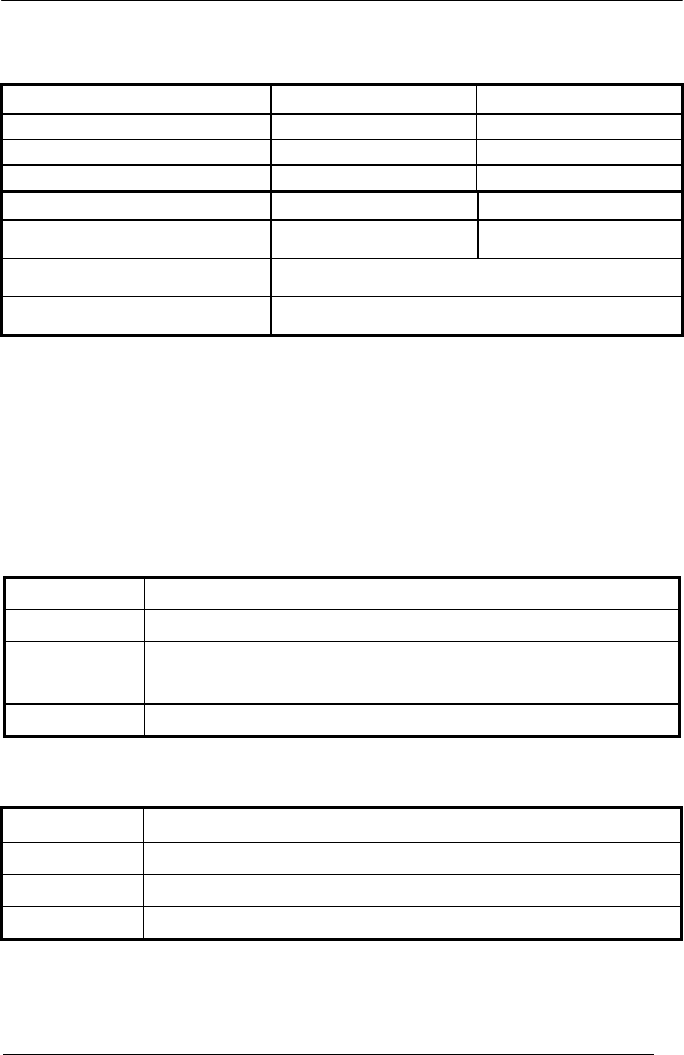
TECHNICAL FEATURES
179
7.4 SYSTEM AND RADIO FEATURES
Radio Features European Models USA Models
Radio Frequency 433.92 MHz 910 MHz
Bit Rate 19200 36800
Range (in open air) 50 m 30 m
System Configurations BC-8000 model only STARGATE™
Maximum number of devices per
base station 32 255
Maximum number of devices in the
same reading area 2000
Maximum number of base stations
in network 16 (including cradle Master)
7.5 STATUS INDICATORS
The scanner has two indicator LEDs and a Beeper. The BC-8000 and C-8000
cradles have four LED indicators (three for BC-8010 model) and a Beeper. They
signal several operating conditions, which are described in the tables below.
H = high tone L = low tone
POWERSCAN® D8330/M8300 READER START-UP
Beeper¹ Meaning
L L L L Parameters loaded correctly
H H H H
long tones
Parameter loading error, reading or writing error in the non volatile
memory
H L H L Hardware error in EEPROM
POWERSCAN® D8330/M8300 READER CONFIGURATION
Beeper¹ Meaning
H H H H Correct entry or exit from Configuration mode
L Good read of a command
L L L Command read error
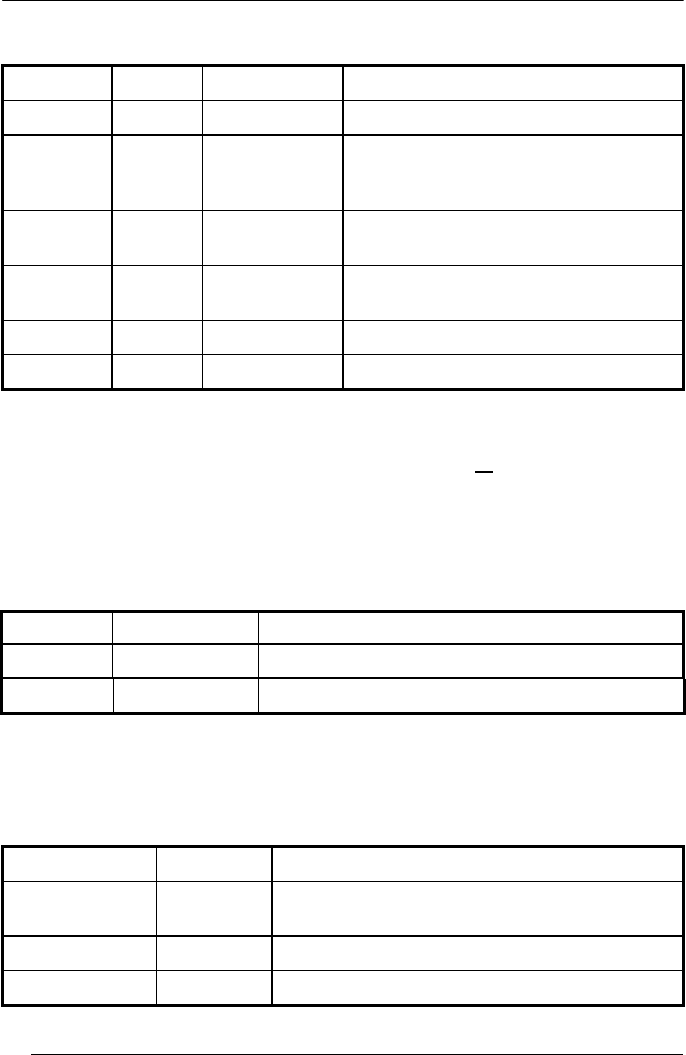
POWERSCAN® D8330/M8300
180
POWERSCAN® D8330/M8300 READER DATA ENTRY
Beeper¹ LED Good Read Spot Meaning
one beep² ON ON Correct read of a code in normal mode
H L long TX buffer full (when FIFO is enabled) or
TX error between PowerScan® M8300
and BC-8000
H long ON ON Successful advanced format
concatenation
H H H Timeout expired – operation not
completed
H H long Error in advanced data formatting
OFF OFF Ready to read a code
¹ Only the Beeper Intensity command can modify these signals.
² The data entry good read tone is user-configurable with all the Beeper commands
in the Reading Parameters section.
For M-series readers, normally this results in two beeps; the first indicates that the
reader has decoded the code, the second indicates whether BC-80X0 has received
the data. See also par. 5.9.5.
POWERSCAN® M8300 POWER
Beeper LED Meaning
10 short H 10 short blinks Low Battery
H M L Power off
H = high tone
M = medium tone
L = low tone
POWERSCAN® M8300 BIND, JOIN, COPY COMMANDS
Beeper¹ LED Meaning
Blinking Command accepted; reader ready to be inserted
into the cradle
L Success
H L long tones Failure
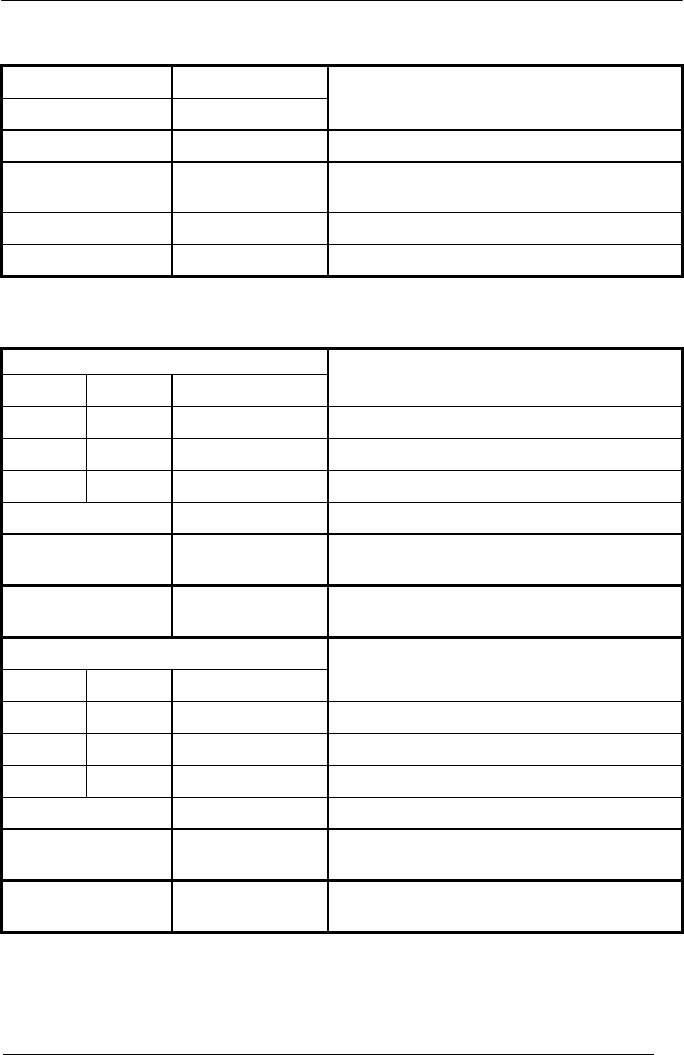
TECHNICAL FEATURES
181
BC-80X0/C-8000 POWER/COMMUNICATION
Aux LED Host LED
Yellow Yellow
Meaning
OFF OFF Device off
ON Power applied through an external power
supply
ON Power applied through the Host
Flashing Flashing Transmission over the Host port
BC-80X0/C-8000 CHARGE STATUS
Reader LED
Red Green Beeper Meaning
OFF OFF No reader battery inserted
ON Reader battery in charge
ON single beep Reader battery completely charged
Flashing orange Reader battery fault
Alternating red/green repetitive beep Charging out of temperature range, over-
current or over-voltage conditions
Alternating red/green
every 30 seconds
beep every 30
seconds
Reader not correctly inserted onto cradle, no
charging takes place
Spare LED (not for BC-8010)
Red Green Beeper
Meaning
OFF OFF No Spare battery inserted in the SBS-3000 slot
ON Spare battery in charge
ON Spare battery completely charged
Flashing orange Spare battery fault
Alternating red/green repetitive beep Charging out of temperature range, over-
current or over-voltage conditions
Alternating red/green
every 30 seconds
beep every 30
seconds
Spare battery not correctly inserted into SBS-
3000, no charging takes place
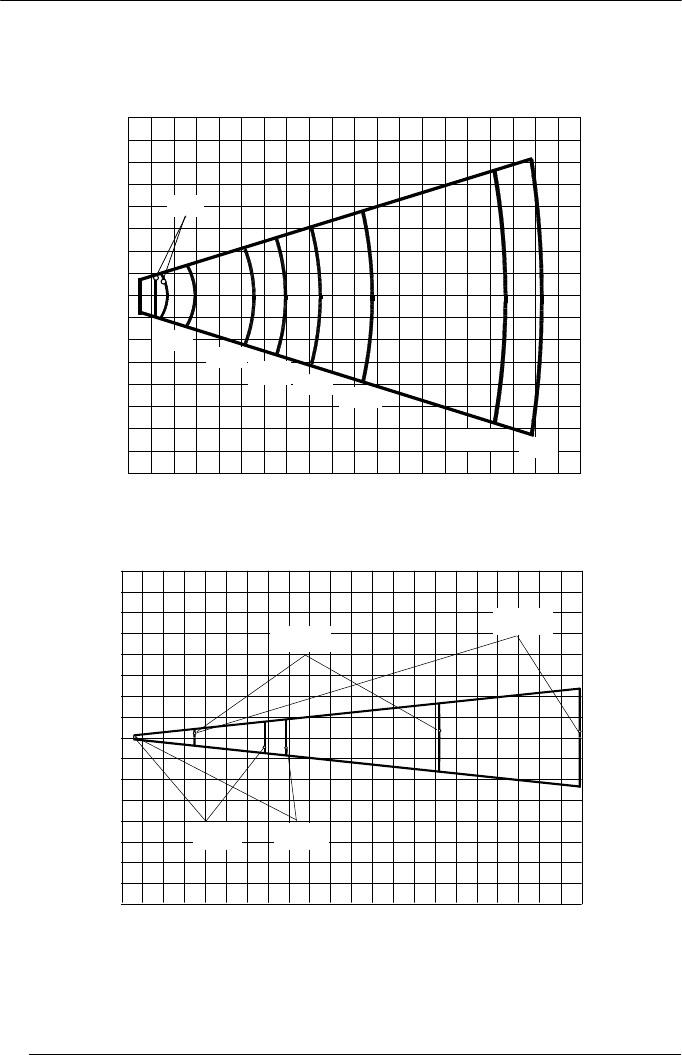
POWERSCAN® D8330/M8300
182
7.6 READING DIAGRAMS
POWERSCAN® D8330/M8300
12 24 36 48 60 96
36
24
12
0
12
24
36
cm
72 84 108 cm
0.19 mm
(
7.5 mils
) 0.25 mm
(
10 mils
)0.33 mm
(
13 mils
)
0.50 mm
(
20 mils
)
1.00 mm
(
40 mils
)1.38 mm
(
55 mils
)
0.13 mm
(
5 mils
)
0.38 mm
(
15 mils
)
POWERSCAN® D8330/M8300 AR models
100 200 300 400 500 800
100
600 700
1.00 mm
(
40 mils
)
1.38 mm
(
55 mils
)
1.75 mm *
(
70 mils
)
0
200
300
100
200
300
cm
1000 cm
900
2.50 mm *
(
100 mils
)
*on reflective labels.
NOTE: Typical performance at 20ºC / 68ºF on high quality barcodes
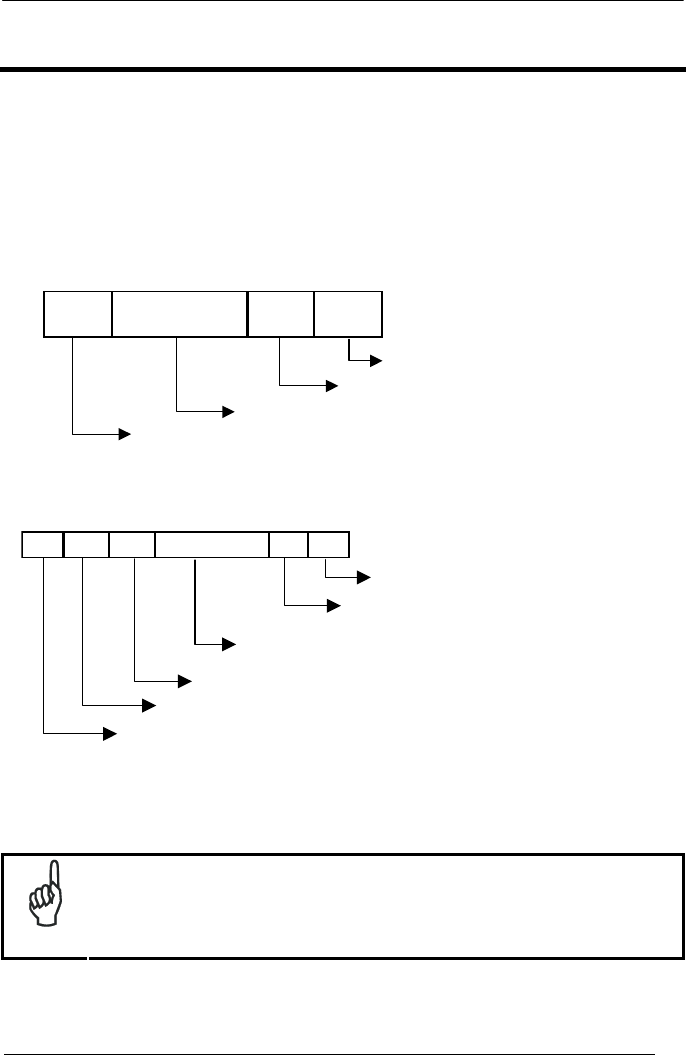
HOST CONFIGURATION STRINGS
183
A HOST CONFIGURATION STRINGS
In this section we provide a description of how to modify the device configuration
using serial strings sent from the Host.
This method requires the RS-232 interface.
The device configuration can be changed by receiving commands from the Host
through the serial interface. When this method is used, the programming sequence
format is the following:
Command
Character sequence in following tables
CR$-$+
Carriage return character (0D Hex.)
Enter configuration environment
Exit and Save configuration
Example:
Beeper tone 1
Beeper low intensity
BG1 $- CR
Carriage return character (0D Hex.)
Exit and save new configuration
AC410132BH0
Matrix 2/5 3 bars: no check digit,
variable length code from 1 to 32 characters
$+
Enter configuration environment
Multiple command programming sequence:
Each configuration parameter setting removes the condition previously active for that
parameter.
NOTE
The device buffer can contain about 400 characters. If your
programming string goes over this value, you must split it into separate
groups and send each group after a delay of at least 3 seconds to give
the reader time to empty the buffer and interpret the commands.
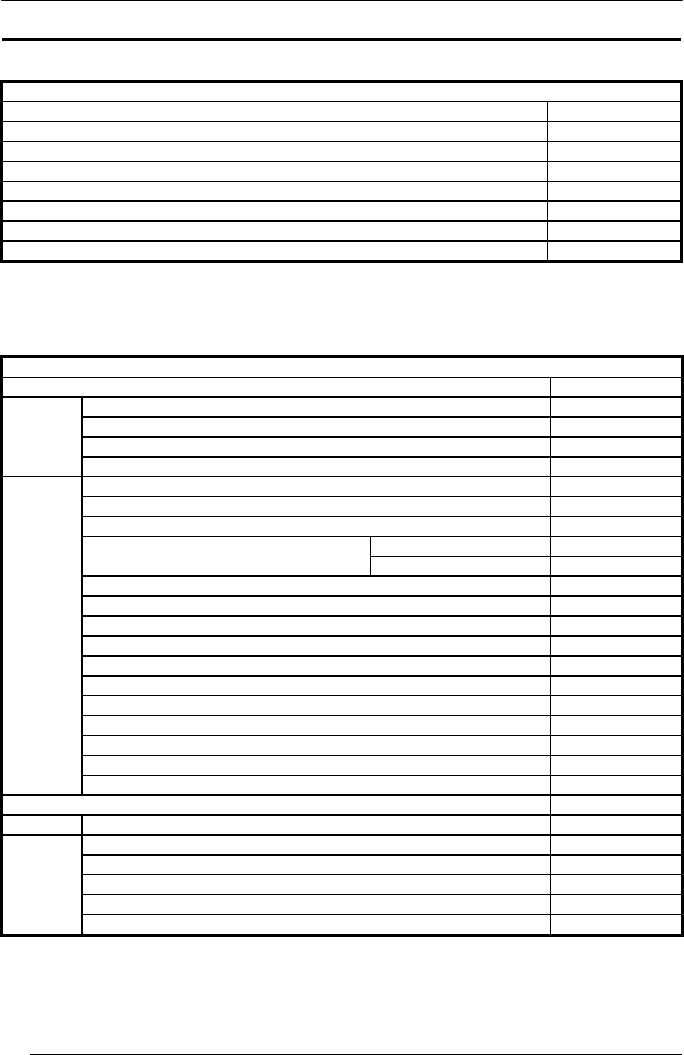
POWERSCAN® D8330/M8300
184
SERIAL CONFIGURATION STRINGS
SPECIAL CONFIGURATION COMMANDS
DESCRIPTION STRING
Enter Configuration $+
Exit and Save Configuration $-
Restore Default $+$*
Transmit Software Release (not for PEN emulation) $+$!
Transmit Device Configuration in ASCII (not for PEN emulation) $+$&
Set Custom Default $+$0
Restore Custom Default $+$1
These commands do not require $-.
INTERFACE SELECTION
DESCRIPTION STRING
RS-232 Standard CP0
ICL Mode CM0
Fujitsu CM1
Nixdorf Mode A CM2EC0
WEDGE for IBM AT CP500
for IBM Terminals: 31xx, 32xx, 34xx, 37xx; make-break keyboard CP501
for IBM Terminals: 31xx, 32xx, 34xx, 37xx; make-only keyboard CP502
typewriter FK0
Keyboard Type for IBM Terminals 31xx,
32xx, 34xx, 37xx advanced FK1
for IBM XT CP503
for IBM Terminal 3153 CP504
for IBM PC Notebook CP505
for IBM SURE1 CP506
for IBM AT - ALT mode CP507
for IBM PC Notebook - ALT mode CP508
for Wyse Terminal - ANSI Keyboard CP509
for Wyse Terminal - PC Keyboard CP510
for Wyse Terminal - ASCII Keyboard CP511
for Wyse Terminal - VT220 style Keyboard CP514
for Digital Terminals VT2xx/3xx/4xx CP512
PEN EMULATION CP6
USB USB-KBD UA03
USB-KBD-ALT-MODE UA04
USB-KBD-APPLE UA05
USB-COM UA02
USB-IBM-Table Top UA00
USB-IBM-Hand Held UA01
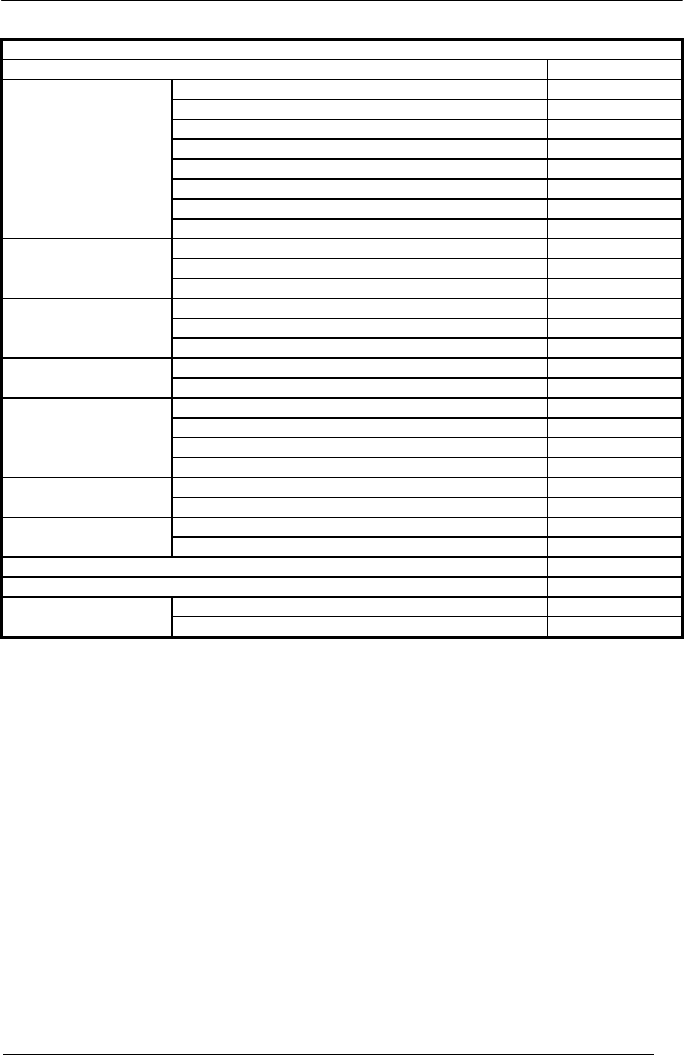
HOST CONFIGURATION STRINGS
185
RS-232
DESCRIPTION STRING
Baud Rate 300 CD1
600 CD2
1200 CD3
2400 CD4
4800 CD5
9600 CD6
19200 CD7
38400 CD8
Parity none CC0
even CC1
odd CC2
Data Bits 7 CA0
8 CA1
9 CA2
Stop Bits 1 CB0
2 CB1
Handshaking disable CE0
RTS/CTS CE1
XON/XOFF CE2
RTS always On CE3
ACK/NACK Protocol disable ER0
enable ER1
FIFO disable EC0
enable EC1
Inter-character Delay (ms) CK00 - CK99
RX Timeout (100 ms) CL00 - CL99
disable CR0 Serial Trigger Lock
enable and select characters CR1
ab
a
= Hex values representing an ASCII character from 00 to FE enabling the device trigger.
b
= HEX values representing an ASCII character from 00 to FE inhibiting the device trigger.
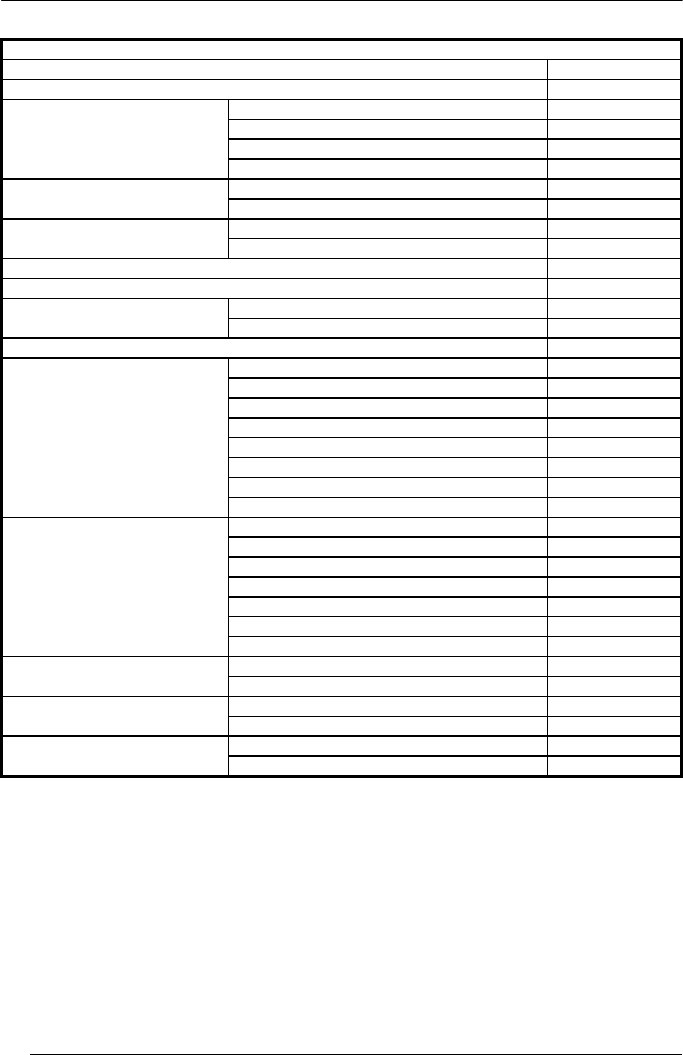
POWERSCAN® D8330/M8300
186
USB
DESCRIPTION STRING
USB-COM
Handshaking disable CE0
RTS/CTS CE1
XON/XOFF CE2
RTS always ON CE3
ACK/NACK Protocol disable ER0
enable ER1
FIFO disable EC0
enable EC1
Inter-character Delay (ms) CK00 - CK99
RX Timeout (100 ms) CL00 - CL99
Serial Trigger Lock disable CR0
enable CR1
ab
USB-KBD
Keyboard Nationality Belgian FJ7
(not for USB-KBD-ALT-MODE) English (UK) FJ4
French FJ2
German FJ3
Italian FJ1
Spanish FJ6
Swedish FJ5
USA FJ0
Keyboard Nationality Japanese FJ8
(IBM AT compatible only) Russian (Latin) FJ9
Russian (Cyrillic) FJA
Hungarian FJB
Slovenian, Croatian, Serbian (Latin) FJC
Romanian FJD
Czech Republic FJE
FIFO disable EC0
enable EC1
Delays Inter-Character (ms) CK00 - CK99
Inter-Code (s) FG00 - FG99
USB Keyboard Speed normal UT10
fast UT01
a
= Hex values representing an ASCII character from 00 to FE enabling the device trigger.
b
= HEX values representing an ASCII character from 00 to FE inhibiting the device trigger.
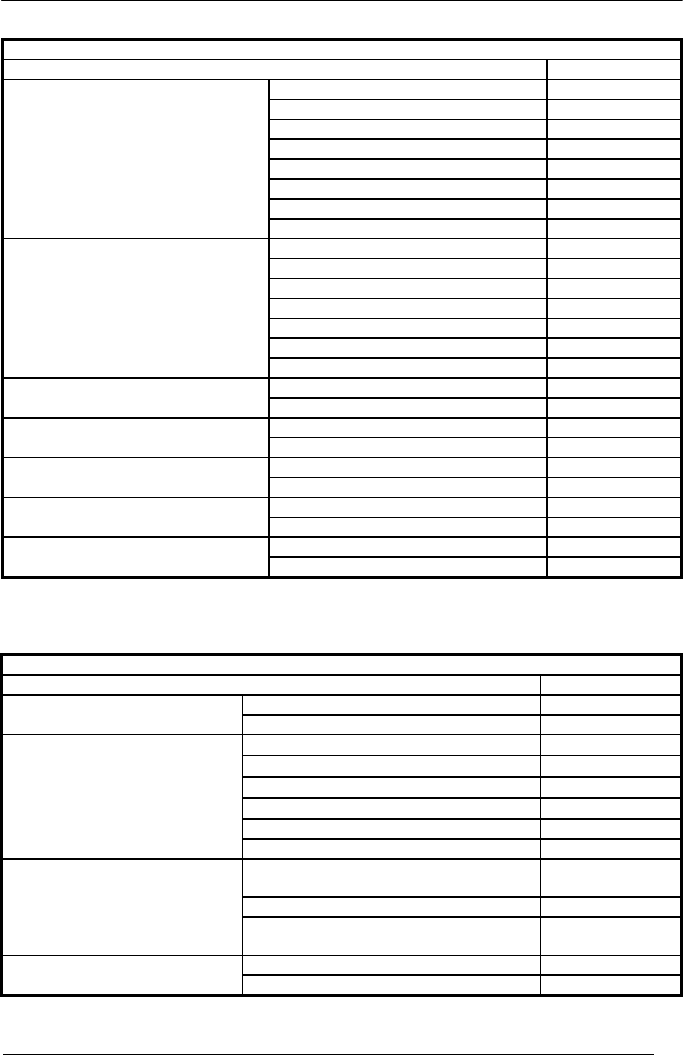
HOST CONFIGURATION STRINGS
187
WEDGE
DESCRIPTION STRING
Keyboard Nationality Belgian FJ7
English (UK) FJ4
French FJ2
German FJ3
Italian FJ1
Spanish FJ6
Swedish FJ5
USA FJ0
Keyboard Nationality Japanese FJ8
(IBM AT compatible only) Russian (Latin) FJ9
Russian (Cyrillic) FJA
Hungarian FJB
Slovenian, Croatian, Serbian (Latin) FJC
Romanian FJD
Czech Republic FJE
Caps Lock caps Lock ON FE1
caps Lock OFF FE0
Caps Lock Auto-Recognition disable FP0
(IBM AT compatible only) enable FP1
Num Lock toggle num lock FL1
num lock unchanged FL0
Inter-Character (ms) CK00 - CK99 Delays
Inter-Code (s) FG00 - FG99
Control Character Emulation Ctrl + Shift + Key FO0
Ctrl + Key FO1
PEN
DESCRIPTION STRING
Operating Mode interpret (does not require $+ or $-) $]
transparent (does not require $+ or $-) $[
Minimum Output Pulse 200μs DG0
400μs DG1
600μs DG2
800μs DG3
1 ms DG4
1.2 ms DG5
Conversion to Code 39 and
Code 128
disable conversion to Code 39
(D series only)
DA0
enable conversion to Code 39 DA1
enable conversion to Code 128
(M series only)
DA2
Output Level normal DD0
inverted DD1
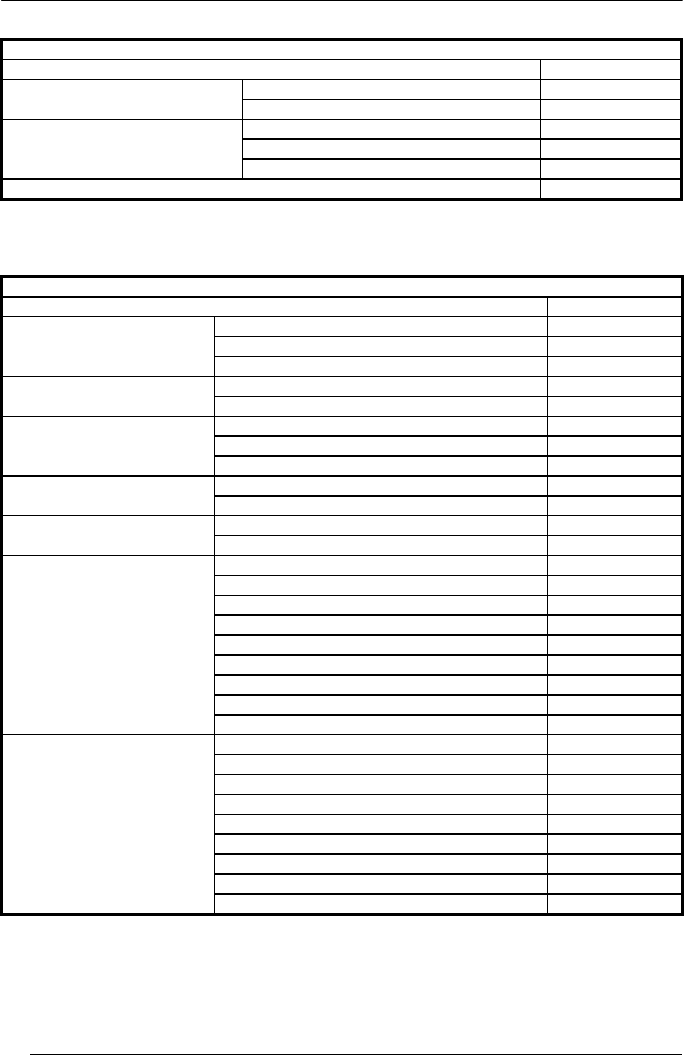
POWERSCAN® D8330/M8300
188
PEN (continued)
DESCRIPTION STRING
Idle Level normal DE0
inverted DE1
Overflow narrow overflow DH0
medium overflow DH1
wide overflow DH2
Inter-block Delay (100 ms) CK00-CK99
NETWORK
DESCRIPTION STRING
RS-485 Network Disable Network RZ0
Enable RS-485 Slave RZ1
Enable RS-485 Master RZ2
Slave Address Range Minimum Address JB0000-1999
Maximum Address JC0000-1999
Network Baud Rate 9600 JE0
19200 JE1
38400 JE2
Network Warning Message not transmitted JG0
transmitted JG1
Transmission Warning not transmitted JH0
Message transmitted JH1
Master Header no header JA00
one character JA01
x
two characters JA02
xx
three characters JA03
xxx
four characters JA04
xxxx
five characters JA05
xxxxx
six characters JA06
xxxxxx
seven characters JA07
xxxxxxx
eight characters JA08
xxxxxxxx
Master Terminator no terminator JA10
one character JA11
x
two characters JA12
xx
three characters JA13
xxx
four characters JA14
xxxx
Five characters JA15
xxxxx
six characters JA16
xxxxxx
seven characters JA17
xxxxxxx
eight characters JA18
xxxxxxxx
x
= Hex value from 00 to FE representing an ASCII character
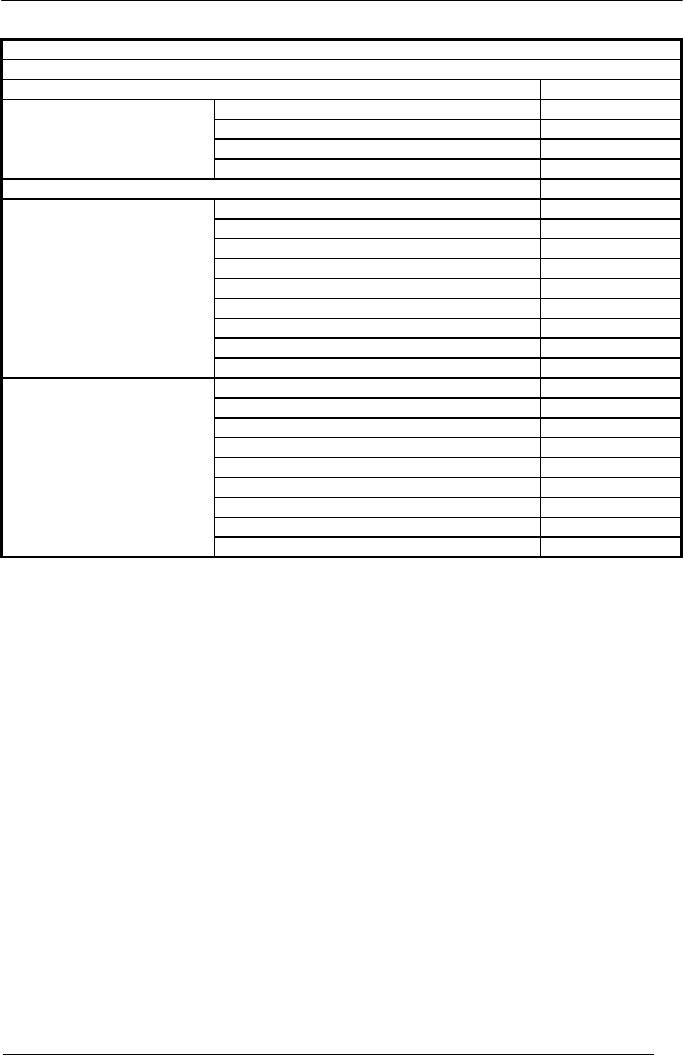
HOST CONFIGURATION STRINGS
189
DATA FORMAT
NOT FOR PEN EMULATION INTERFACES
DESCRIPTION STRING
Code Identifier disable EB0
Datalogic standard EB1
AIM standard EB2
custom EB3
Custom Code Identifier EH
abc
Headers no header EA00
one character EA01
x
two characters EA02
xx
three characters EA03
xxx
four characters EA04
xxxx
five characters EA05
xxxxx
six characters EA06
xxxxxx
seven characters EA07
xxxxxxx
eight characters EA08
xxxxxxxx
Terminators no terminator EA10
one character EA11
x
two characters EA12
xx
three characters EA13
xxx
four characters EA14
xxxx
five characters EA15
xxxxx
six characters EA16
xxxxxx
seven characters EA17
xxxxxxx
eight characters EA18
xxxxxxxx
a
= ASCII character.
b
,
c
,
x
= HEX values representing an ASCII character.
a
= ASCII character of the DATALOGIC STANDARD Code Identifier from the table on page 70.
b
= Hex value of the first Custom Code Identifier character from 00 to FD;
FF = disable Code Identifier
c
= Hex value of the second Custom Code Identifier character from 00 to FD;
FF = disable second character of Custom Code Identifier
x
= Hex value from 00 to FE
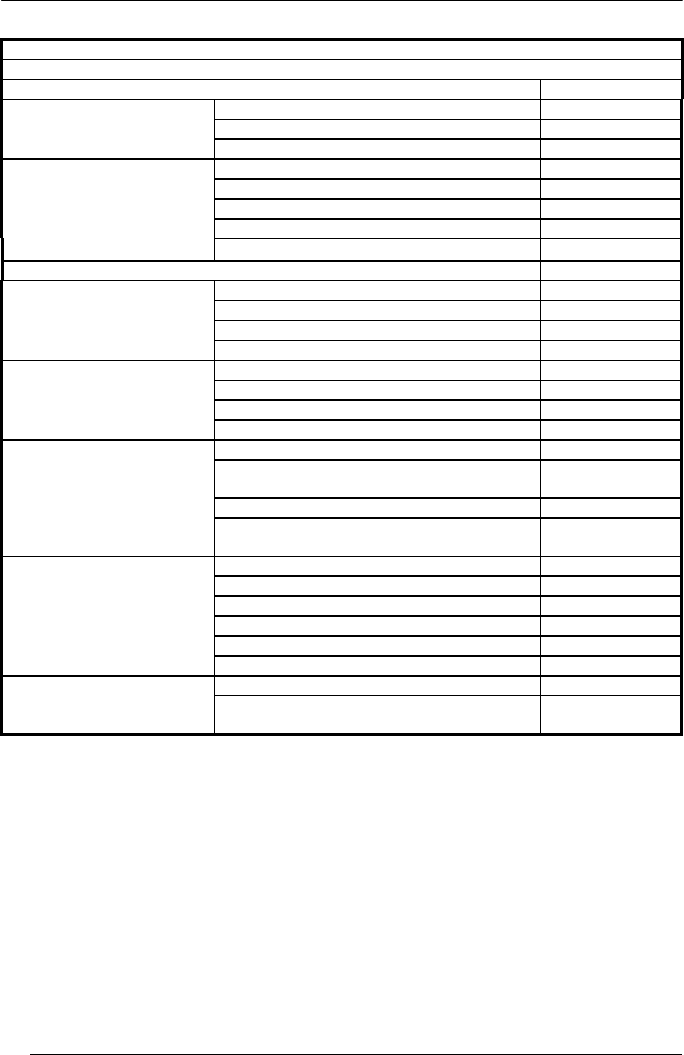
POWERSCAN® D8330/M8300
190
DATA FORMAT (continued)
NOT FOR PEN EMULATION INTERFACES
DESCRIPTION STRING
Code Length Tx not transmitted EE0
transmitted in variable-digit format EE1
transmitted in fixed 4-digit format EE2
Field Adjustment disable EF0
right addition EF
a
0
d
left addition EF
a
1
d
right deletion EF
a
2
d
left deletion EF
a
3
d
Field Adjustment Character EG
e
Character Replacement disable character replacement EO0
first character replacement EO1
afg
second character replacement EO2
afg
third character replacement EO3
afg
Address Stamping disable reader address stamping RU0
enable reader address stamping RU1
disable cradle address stamping RW0
enable cradle address stamping RW1
disable reader address delimiter RV0 Address Delimiter
enable reader address delimiter and select
character
RV1
h
disable cradle address delimiter RY0
enable cradle address delimiter and select
character
RY1
h
Time Stamping disable IL0
hour/minutes/seconds/month/day/year IL1
hour/minutes/seconds/day/month/year IL2
hour/minutes/seconds IL3
month/day/year IL4
day/month/year IL5
Time Stamping Delimiter disable time stamping delimiter IM0
enable time stamping delimiter and select
character
IM1
h
a
= ASCII character.
d
= a number from the Hex/Numeric Table
e, f, g, h
= HEX values representing an ASCII character
a
= ASCII character of the DATALOGIC STANDARD Code Identifier from the table on page 70.
d
= a number in the range 01-32 from the Hex/Numeric Table
e
= Hex value from 00 to FE
f
= Hex value of the character to be replaced from 00 to FE
g
= Hex value of the new character to insert from 00 to FE
FF = replace with no new character (remove character)
h
= a HEX value in the range from 00 - FE representing the ASCII character.
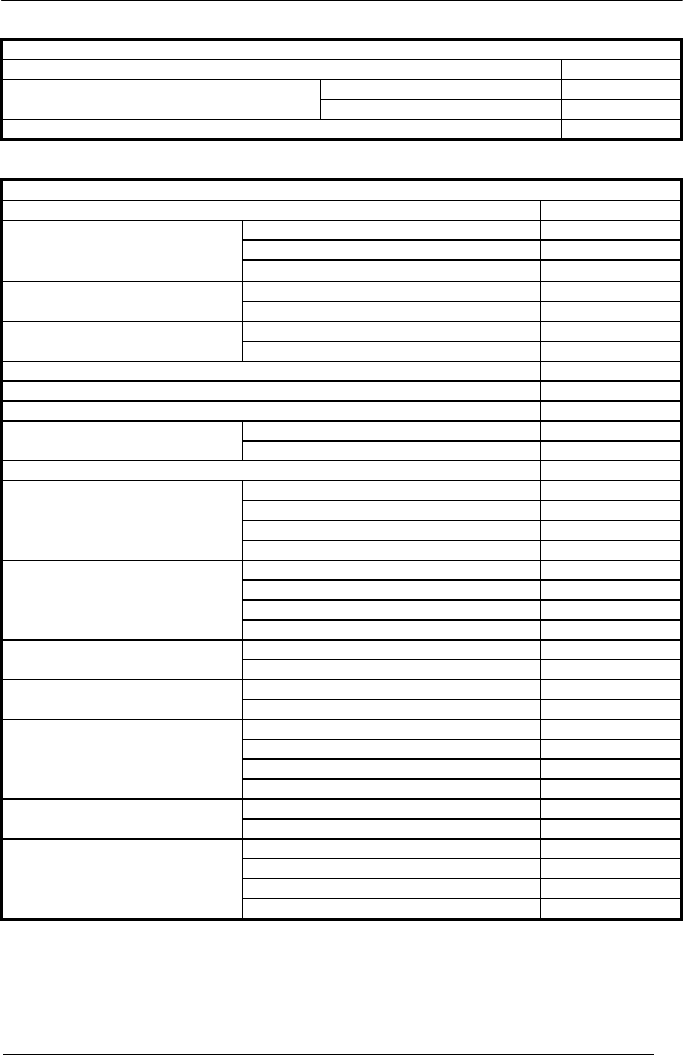
HOST CONFIGURATION STRINGS
191
POWER SAVE
DESCRIPTION STRING
Sleep State disable BQ0
(only for D8330 series) enable BQ1
Enter Sleep Timeout (100 ms) BR00-BR99
READING PARAMETERS
DESCRIPTION STRING
Trigger Type software trigger BK0
hardware trigger BK1
always on BK3
Trigger Signal trigger active level BA0
trigger active pulse BA1
Trigger Click disable Bc0
enable Bc1
Trigger-off Timeout (s) BD00 - BD99
FLASH ON (100 ms) BB001 - BB099
FLASH OFF (100 ms) BB101 - BB199
Reads per Cycle one read BC0
multiple reads BC1
Safety Time (100 ms) BE00 - BE99
Beeper Intensity very low intensity BG0
low intensity BG1
medium intensity BG2
high intensity BG3
Beeper Tone tone 1 BH0
tone 2 BH1
tone 3 BH2
tone 4 BH3
Beeper Type monotone BJ0
bitonal BJ1
Beeper Length long BI0
short BI1
Good Read Spot Duration disable BV0
short BV1
medium BV2
long BV3
Aiming System disabled Bj0
enabled Bj1
Cradle Beeper Intensity disable JI0
low intensity JI1
medium intensity JI2
high intensity JI3
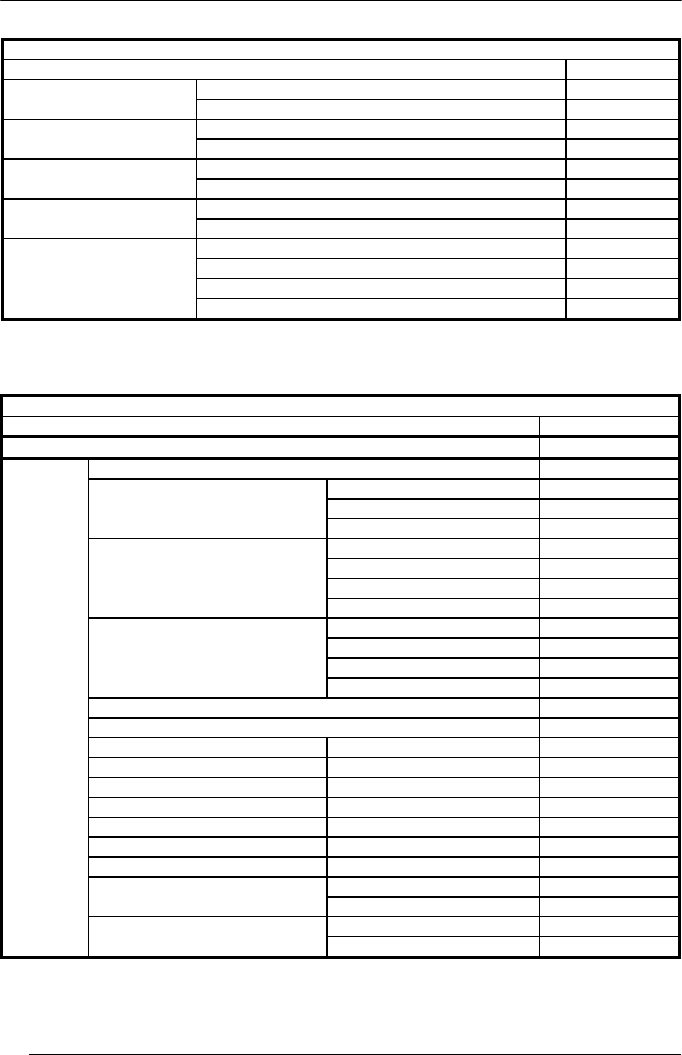
POWERSCAN® D8330/M8300
192
DECODING PARAMETERS
DESCRIPTION STRING
Ink-spread disable AX0
enable AX1
Overflow Control disable AW1
enable AW0
Interdigit Control disable AV0
enable AV1
Puzzle SolverTM disable AU0
enable AU1
Decoding Safety one read ED0
two reads ED1
three reads ED2
four reads ED3
CODE SELECTION
DESCRIPTION STRING
DISABLE ALL FAMILY CODES AZ0
EAN/UPC disable EAN/UPC family AA0
EAN 8/EAN 13/UPC A/UPC E without ADD ON AA1
with ADD ON AA5
with and without ADD ON AA8
EAN 8/EAN 13 without ADD ON AA3
with ADD ON 2 ONLY AAK
with ADD ON 5 ONLY AAL
with ADD ON 2 AND 5 AA6
UPC A/UPC E without ADD ON AA4
with ADD ON 2 ONLY AAM
with ADD ON 5 ONLY AAN
with ADD ON 2 AND 5 AA7
EAN/UPC with and without Add On no Autodiscrimination AA8Ad0
EAN/UPC Autodiscrimination Add On by Prefix AA8Ad1
Select Prefixes cancel all selections ET0
378/379 ET1378ET2379
434/439 ET3434ET4439
414/419 ET5414ET6419
977 ET7977
978 ET8978
979 ET9979
EAN 8 check digit transmission disable AAG0
enable AAG1
EAN 13 check digit transmission disable AAH0
enable AAH1
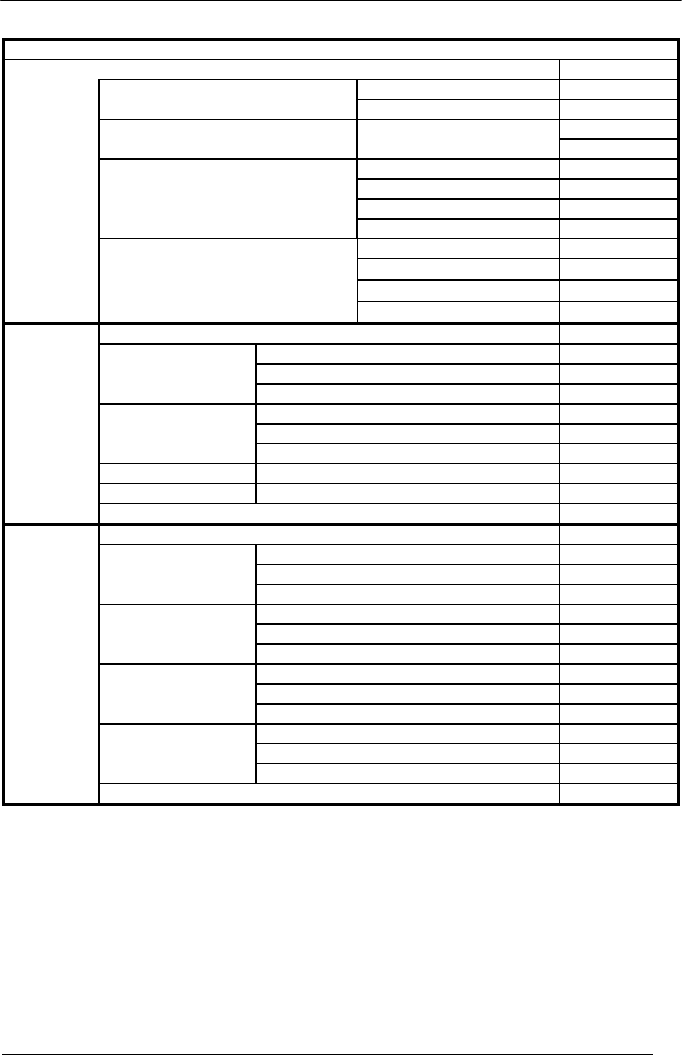
HOST CONFIGURATION STRINGS
193
CODE SELECTION (continued)
DESCRIPTION STRING
UPC A check digit transmission disable AAI0
enable AAI1
UPC E check digit transmission disable AAJ0
enable AAJ1
conversions UPC E to UPC A AAA
UPC E to EAN 13 AAB
UPC A to EAN 13 AAC
EAN 8 to EAN 13 AAD
enable ISBN AP1
enable ISSN AP2
enable ISBN and ISSN AP3
ISBN Conversion codes
disable ISBN and ISSN AP0
Code 39 disable Code 39 family AB0
Standard no check digit control AB11
check digit control and transmission AB12
check digit control without transmission AB13
Full ASCII no check digit control AB21
check digit control and transmission AB22
check digit control without transmission AB23
CIP 39 AB3
Code 32 AB4
code length AB*
xxxx
2/5 disable Code 2/5 family AC0
Interleaved 2/5 no check digit control AC11
xxxx
check digit control and transmission AC12
xxxx
check digit control without transmission AC13
xxxx
Normal 2/5 5 bars no check digit control AC21
xxxx
check digit control and transmission AC22
xxxx
check digit control without transmission AC23
xxxx
Industrial 2/5 (IATA) no check digit control AC31
xxxx
check digit control and transmission AC32
xxxx
check digit control without transmission AC33
xxxx
Matrix 2/5 3 bars no check digit control AC41
xxxx
check digit control and transmission AC42
xxxx
check digit control without transmission AC43
xxxx
CIP/HR AC5
xxxx
= ASCII numbers that define the code length where:
• First 2 digits = minimum acceptable code length.
• Second 2 digits = maximum acceptable code length.
The minimum code length must always be less than or equal to the maximum.
The maximum code length for all codes is 99 characters:
Examples:
0132 = variable length from 1 to 32 digits in the code.
1010 = 10 digit code length only.
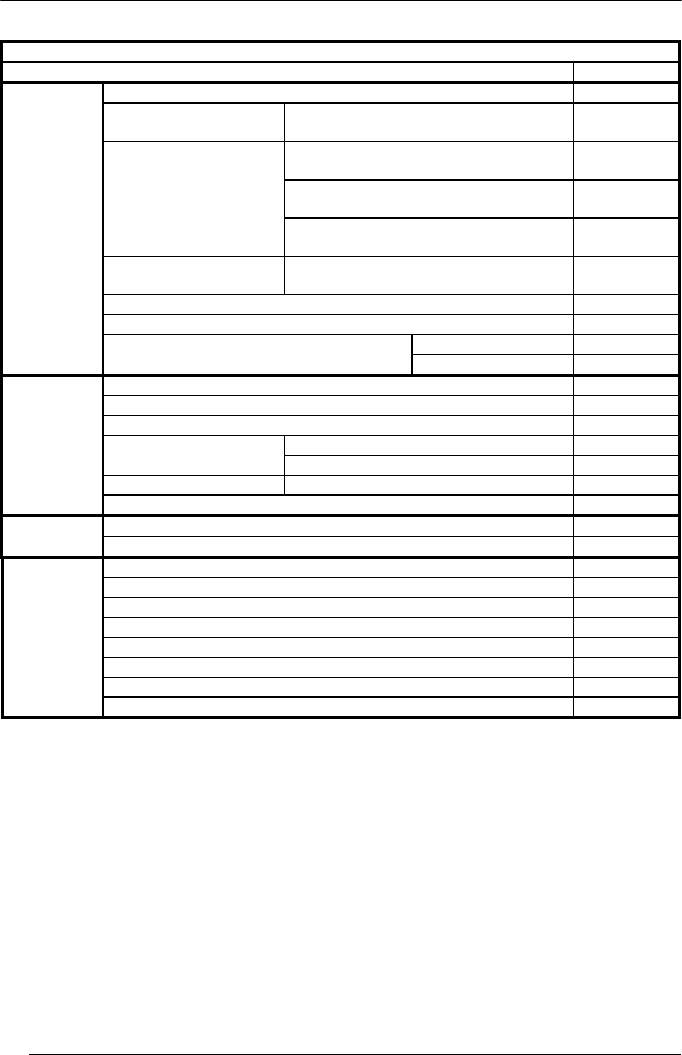
POWERSCAN® D8330/M8300
194
CODE SELECTION (continued)
DESCRIPTION STRING
Codabar disable Codabar family AD0
Standard no start/stop character equality control
nor transmission
AD111
no start/stop character equality control
but transmission
AD112
start/stop character equality control
but no transmission
AD121
start/stop character equality control
and transmission
AD122
ABC Codabar no start/stop character equality control
but transmission
AD212
Codabar ABC forced concatenation AD232
code length AD*
xxxx
start/stop character case in transmission lower case ADA0
upper case ADA1
Code 128 disable Code 128 family AI0
enable Code 128 - control without transmission of check digit AI11
enable EAN 128 - control without transmission of check digit AI21
disable EQ0
Transmit GS before
Code enable EQ1
ISBT 128 enable ISBT 128 AI31
code length AIL
xxxx
Code 93 disable Code 93 family AK0
enable Code 93 - control without transmission of check digit AK1
MSI disable the family AE0
no check AE1
MOD10 no tx AE2
MOD10 with tx AE3
MOD11-MOD10 no tx AE4
MOD11-MOD10 with tx AE5
MOD10-MOD10 no tx AE6
MOD10-MOD10 with tx AE7
xxxx
= ASCII numbers that define the code length where:
• First 2 digits = minimum acceptable code length.
• Second 2 digits = maximum acceptable code length.
The minimum code length must always be less than or equal to the maximum.
The maximum code length for all codes is 99 characters:
EXAMPLES:
0132 = variable length from 1 to 32 digits in the code.
1010 = 10 digit code length only.
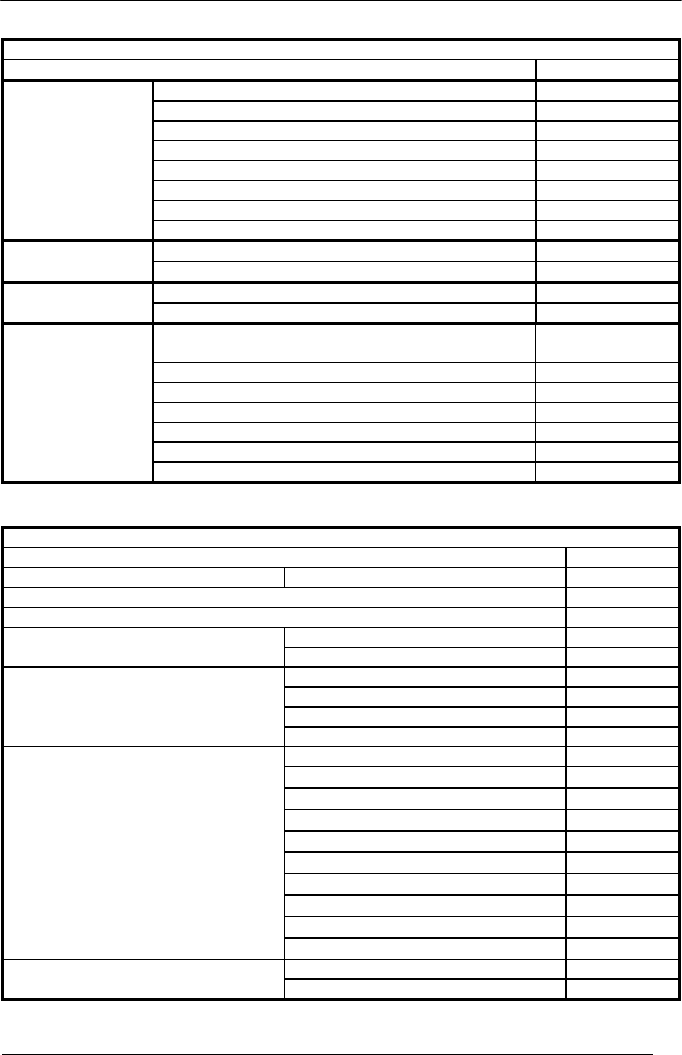
HOST CONFIGURATION STRINGS
195
CODE SELECTION (continued)
DESCRIPTION STRING
Code 11 disable the family AG0
no check AG1
Type C with tx AG21
Type C no tx AG22
Type K with tx AG31
Type K no tx AG32
Type C and K with tx AG41
Type C and K no tx AG42
Code 16K disable AJ0
enable AJ1
Code 49 disable AM0
enable AM1
GS1 DataBar™
Codes
disable the family AQ0
disable GS1 DataBar Expanded Linear and Stacked AQ10
enable GS1 DataBar Expanded Linear and Stacked AQ11
disable GS1 DataBar Limited AQ20
enable GS1 DataBar Limited AQ21
disable GS1 DataBar Linear and Stacked AQ30
enable GS1 DataBar Linear and Stacked AQ31
RADIO PARAMETERS
DESCRIPTION STRING
Radio Protocol Timeout enable (seconds) RH02-RH19
Radio RX Timeout RR00-RR99
Power-Off Timeout RP00-RP99
one-way RI0 Transmission Mode
two-way RI1
normal BF0
only good decode BF1
only good reception BF2
Beeper Control For Radio Response
off BF3
disable RO0
one attempt RO1
two attempts RO2
three attempts RO3
four attempts RO4
five attempts RO5
six attempts RO6
seven attempts RO7
eight attempts RO8
Single Store
nine attempts RO9
disable Bk0 Find Me
enable Bk1
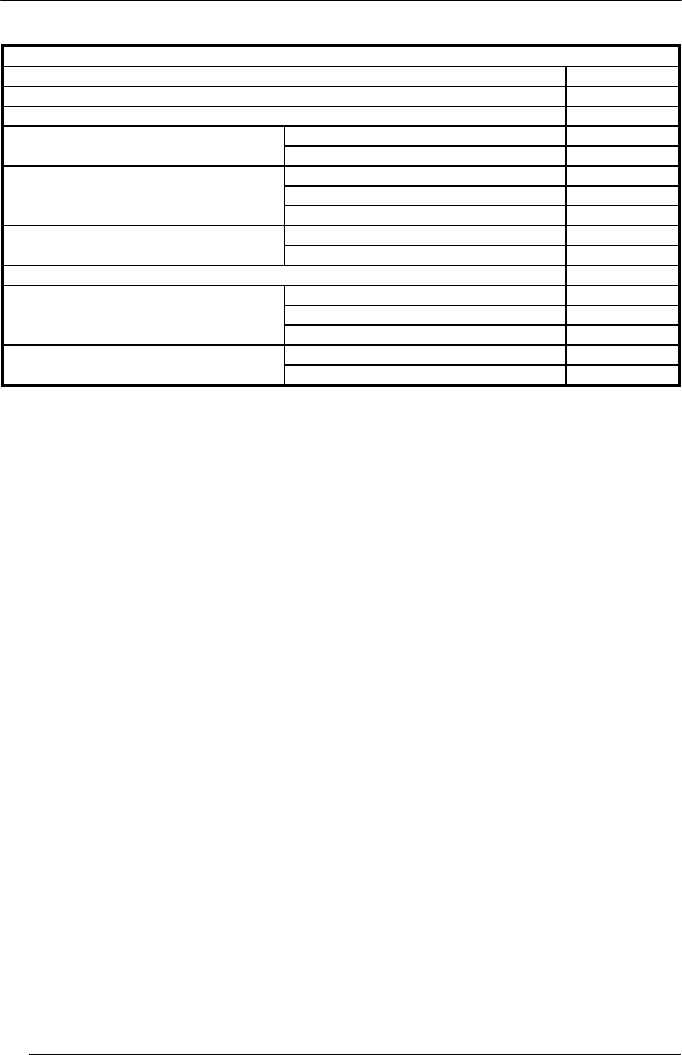
POWERSCAN® D8330/M8300
196
DISPLAY PARAMETERS
DESCRIPTION STRING
Date IA
ddmmyy
Time IB
hhmm
lighter IC0 Contrast
darker IC1
small ID0
medium ID1
Font Size
large ID2
off IE0 Backlight
on IE1
Display-Off Timeout IF
a
normal IG0
local echo IG1
Display Mode
clear display after decode IG2
disabled keys IK0 Keypad
enable and select KeyID characters IK1
bbb
ddmmyy
= numbers from the Hex/Numeric Table representing day, month, year
hhmm
= numbers from the Hex/Numeric Table representing hour, minutes
a
= a number from the Hex/Numeric Table
b
= HEX values representing an ASCII character
a
= a number in the range 00-99 (sec.) from the Hex/Numeric Table
00 = Timeout disabled (always on).
b
= 3 Hex values from 00 to FE representing the left, center and right keys.
FF = KeyID disabled.
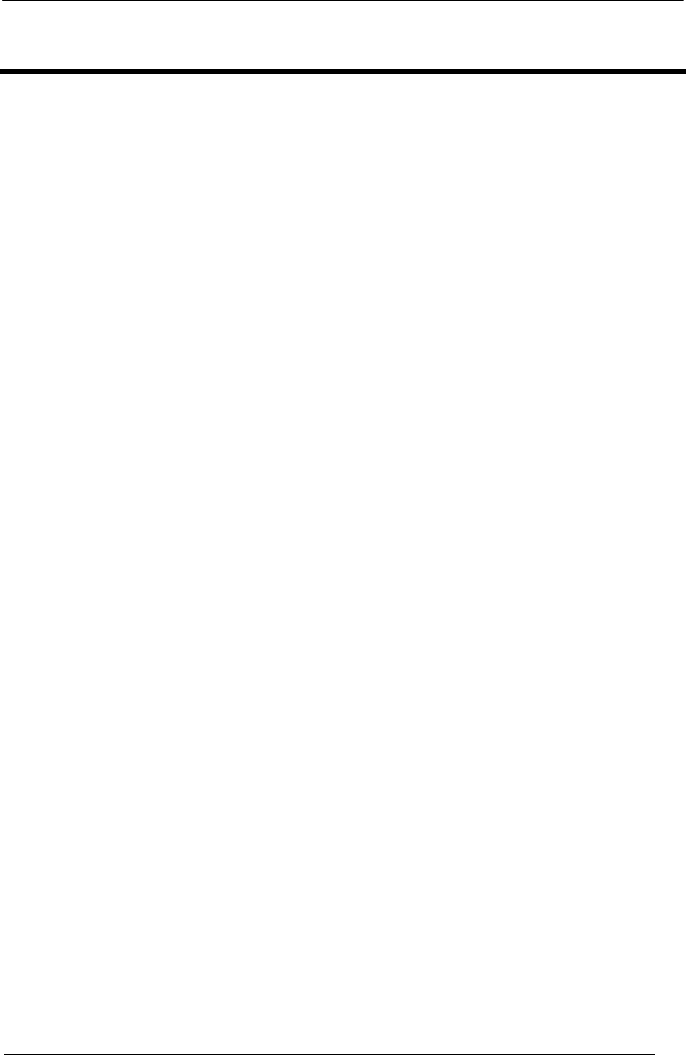
CODE IDENTIFIER TABLE
197
B CODE IDENTIFIER TABLE
2/5 Interleaved
ÌNOÎ
2/5 Industrial
2/5 normal 5 bars
ÌPQÎ
ÌOPÎ
2/5 matrix 3 bars
EAN 8
ÌQRÎ
ÌABÎ
EAN 13
UPC A
ÌBCÎ
ÌCDÎ
UPC E
EAN 8 with 2 ADD ON
ÌDEÎ
ÌJKÎ
EAN 8 with 5 ADD ON
EAN 13 with 2 ADD ON
ÌKLÎ
ÌLMÎ
EAN 13 with 5 ADD ON
UPC A with 2 ADD ON
ÌMNÎ
ÌFGÎ

POWERSCAN® D8330/M8300
198
UPC A with 5 ADD ON
ÌGHÎ
UPC E with 2 ADD ON
UPC E with 5 ADD ON
ÌHIÎ
ÌIJÎ
Code 39
Code 39 Full ASCII
ÌVWÎ
ÌWXÎ
CODABAR
ABC CODABAR
ÌRSÎ
ÌSTÎ
Code 128
EAN 128
ÌTUÎ
ÌklÎ
Code 93
CIP/39
ÌUVÎ
ÌYZÎ
CIP/HR
Code 32
ÌefÎ
ÌXYÎ
ISBT 128
ÌfgÎ

CODE IDENTIFIER TABLE
199
MSI
ÌZ[Î Code 16K
Code 11
ÌpqÎ
ÌbcÎ
Code 49
GS1 DATABAR Expanded Linear and
Stacked
ÌqrÎ
ÌtuÎ
GS1 DATABAR Limited
GS1 DATABAR 14 Linear and Stacked
ÌvwÎ
ÌuvÎ
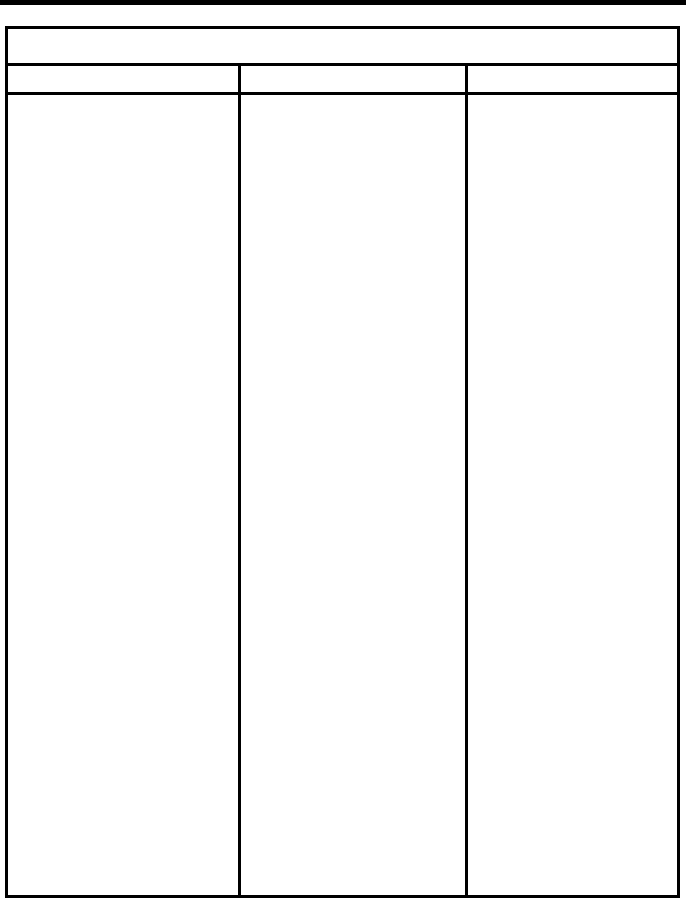
C HEX AND NUMERIC TABLE
CHARACTER TO HEX CONVERSION TABLE
char hex char hex char hex
NUL 00 * 2A U 55
SOH 01 + 2B V 56
STX 02 , 2C W 57
ETX 03 - 2D X 58
EOT 04 . 2E Y 59
ENQ 05 / 2F Z 5A
ACK 06 0 30 [ 5B
BEL 07 1 31 \ 5C
BS 08 2 32 ] 5D
HT 09 3 33 ^ 5E
LF 0A 4 34 _ 5F
VT 0B 5 35 ` 60
FF 0C 6 36 a 61
CR 0D 7 37 b 62
SO 0E 8 38 c 63
SI 0F 9 39 d 64
DLE 10 : 3A e 65
DC1 11 ; 3B f 66
DC2 12 < 3C g 67
DC3 13 = 3D h 68
DC4 14 > 3E i 69
NAK 15 ? 3F j 6A
SYN 16 @ 40 k 6B
ETB 17 A 41 l 6C
CAN 18 B 42 m 6D
EM 19 C 43 n 6E
SUB 1A D 44 o 6F
ESC 1B E 45 p 70
FS 1C F 46 q 71
GS 1D G 47 r 72
RS 1E H 48 s 73
US 1F I 49 t 74
SPACE 20 J 4A u 75
! 21 K 4B v 76
" 22 L 4C w 77
# 23 M 4D x 78
$ 24 N 4E y 79
% 25 O 4F z 7A
& 26 P 50 { 7B
' 27 Q 51 | 7C
( 28 R 52 } 7D
) 29 S 53 ~ 7E
T 54 DEL 7F
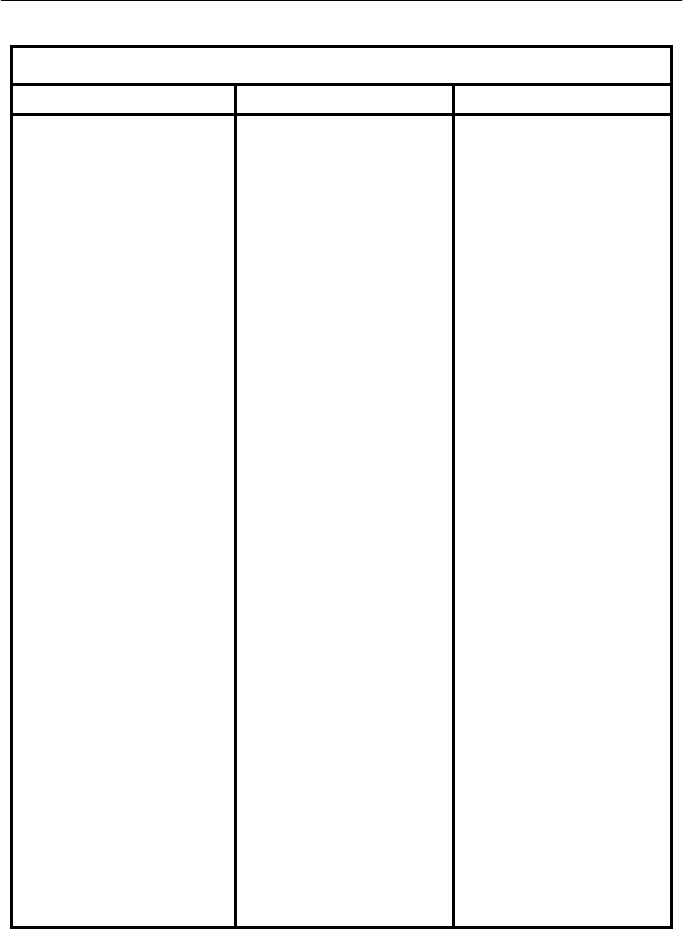
HEX AND NUMERIC TABLE
HEX / NUMERIC TABLE
CHARACTER TO HEX CONVERSION TABLE
char hex char hex char hex
€ 80 ª AA Õ D5
81 « AB Ö D6
‚ 82 ¬ AC × D7
ENTER 83 - AD Ø D8
TAB 84 ® AE Ù D9
F1 85 ¯ AF Ú DA
F2 86 ° B0 Û DB
F3 87 ± B1 Ü DC
F4 88 ² B2 Ý DD
F5 89 ³ B3 Þ DE
F6 8A ´ B4 ß DF
F7 8B µ B5 à E0
F8 8C ¶ B6 á E1
F9 8D · B7 â E2
F10 8E ¸ B8 ã E3
F11 8F ¹ B9 ä E4
F12 90 º BA å E5
HOME 91 » BB æ E6
END 92 ¼ BC ç E7
Pg UP 93 ½ BD è E8
Pg Down 94 ¾ BE é E9
Ç 95 ¿ BF ê EA
È 96 À C0 ë EB
Å 97 Á C1 ì EC
Æ 98 Â C2 í ED
ESC 99 Ã C3 î EE
CTRL(Right) 9A Ä C4 ï EF
€ 9B Å C5 ð F0
œ 9C Æ C6 ñ F1
9D Ç C7 ò F2
ž 9E È C8 ó F3
Ÿ 9F É C9 ô F4
NBSP A0 Ê CA õ F5
¡ A1 Ë CB ö F6
¢ A2 Ì CC ÷ F7
£ A3 Í CD ø F8
¤ A4 Î CE ù F9
¥ A5 Ï CF ú FA
¦ A6 Ð D0 û FB
§ A7 Ñ D1 ü FC
¨ A8 Ò D2 ý FD
© A9 Ó D3 Reserved FE
Ô D4 Reserved FF
Ì01Î
0 Ì12Î
Ì23Î
1
2 Ì34Î
Ì45Î
3
4 Ì56Î
Ì67Î
5
6 Ì78Î
Ì89Î
7
8 Ì9:Î
ÌABÎ
9
A ÌBCÎ
ÌCDÎ
B
C ÌDEÎ
ÌEFÎ
D
E ÌFGÎ
F
Backspace
Ì$%/Î
Cancels an incomplete configuration sequence
HEX AND NUMERIC TABLE
HEX / NUMERIC TABLE
CHARACTER TO HEX CONVERSION TABLE
char hex char hex char hex
€ 80 ª AA Õ D5
81 « AB Ö D6
‚ 82 ¬ AC × D7
ENTER 83 - AD Ø D8
TAB 84 ® AE Ù D9
F1 85 ¯ AF Ú DA
F2 86 ° B0 Û DB
F3 87 ± B1 Ü DC
F4 88 ² B2 Ý DD
F5 89 ³ B3 Þ DE
F6 8A ´ B4 ß DF
F7 8B µ B5 à E0
F8 8C ¶ B6 á E1
F9 8D · B7 â E2
F10 8E ¸ B8 ã E3
F11 8F ¹ B9 ä E4
F12 90 º BA å E5
HOME 91 » BB æ E6
END 92 ¼ BC ç E7
Pg UP 93 ½ BD è E8
Pg Down 94 ¾ BE é E9
Ç 95 ¿ BF ê EA
È 96 À C0 ë EB
Å 97 Á C1 ì EC
Æ 98 Â C2 í ED
ESC 99 Ã C3 î EE
CTRL(Right) 9A Ä C4 ï EF
€ 9B Å C5 ð F0
œ 9C Æ C6 ñ F1
9D Ç C7 ò F2
ž 9E È C8 ó F3
Ÿ 9F É C9 ô F4
NBSP A0 Ê CA õ F5
¡ A1 Ë CB ö F6
¢ A2 Ì CC ÷ F7
£ A3 Í CD ø F8
¤ A4 Î CE ù F9
¥ A5 Ï CF ú FA
¦ A6 Ð D0 û FB
§ A7 Ñ D1 ü FC
¨ A8 Ò D2 ý FD
© A9 Ó D3 Reserved FE
Ô D4 Reserved FF
Ì01Î
0 Ì12Î
Ì23Î
1
2 Ì34Î
Ì45Î
3
4 Ì56Î
Ì67Î
5
6 Ì78Î
Ì89Î
7
8 Ì9:Î
ÌABÎ
9
A ÌBCÎ
ÌCDÎ
B
C ÌDEÎ
ÌEFÎ
D
E ÌFGÎ
F
Backspace
Ì$%/Î
Cancels an incomplete configuration sequence

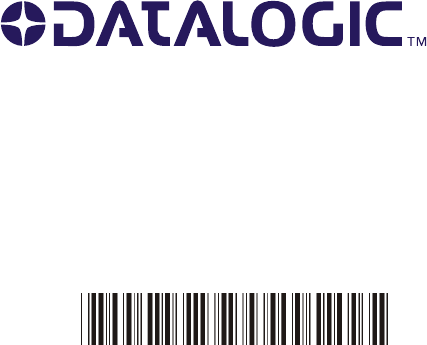
®
PowerScan D8330/M8300
Reference Manual
Australia
Datalogic Scanning Pty Ltd
North Ryde, Australia
Telephone: [61] (2) 9870 3200
Fax: [61] (2) 9878 8688
France and Benelux
Datalogic Scanning Sarl
LES ULIS Cedex, France
Telephone: [33].01.64.86.71.00
Fax: [33].01.64 46.72.44
Germany
Datalogic Scanning GmbH
Darmstadt, Germany
Telephone: 49 (0) 61 51/93 58-0
Fax: 49 (0) 61 51/93 58 58
Italy
Datalogic Scanning SpA
Vimercate (MI), Italy
Telephone: [39] (0) 39/62903.1
Fax: [39] (0) 39/6859496
Japan
Datalogic Scanning KK
Shinagawa, Tokyo, Japan
Telephone: 81 (0)3 3491 6761
Fax: 81 (0)3 3491 6656
Latin America
Datalogic Scanning, Inc
Miami, Florida, USA
Telephone: (305) 591-3222
Fax: (305) 591-3007
Spain and Portugal
Datalogic Scanning Sarl
Sucursal en España
Madrid, Spain
Telephone: 34 91 746 28 60
Fax: 34 91 742 35 33
United Kingdom
Datalogic Scanning LTD
Watford, England
Telephone: 44 (0) 1923 809500
Fax: 44 (0) 1923 809 505
www.scanning.datalogic.com
Datalogic Scanning, Inc.
959 Terry Street
Eugene, OR 97402
USA
Telephone: (541) 683-5700
Fax: (541) 345-7140
©2008 Datalogic Scanning, Inc. 90ACC1949 Rev. B 2/08
